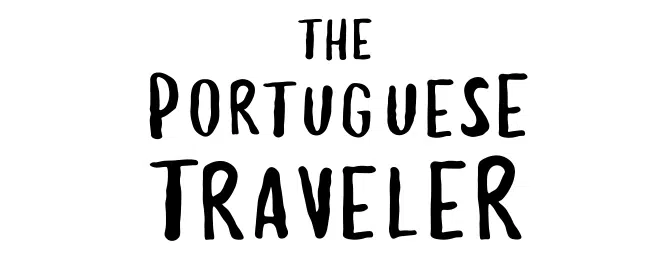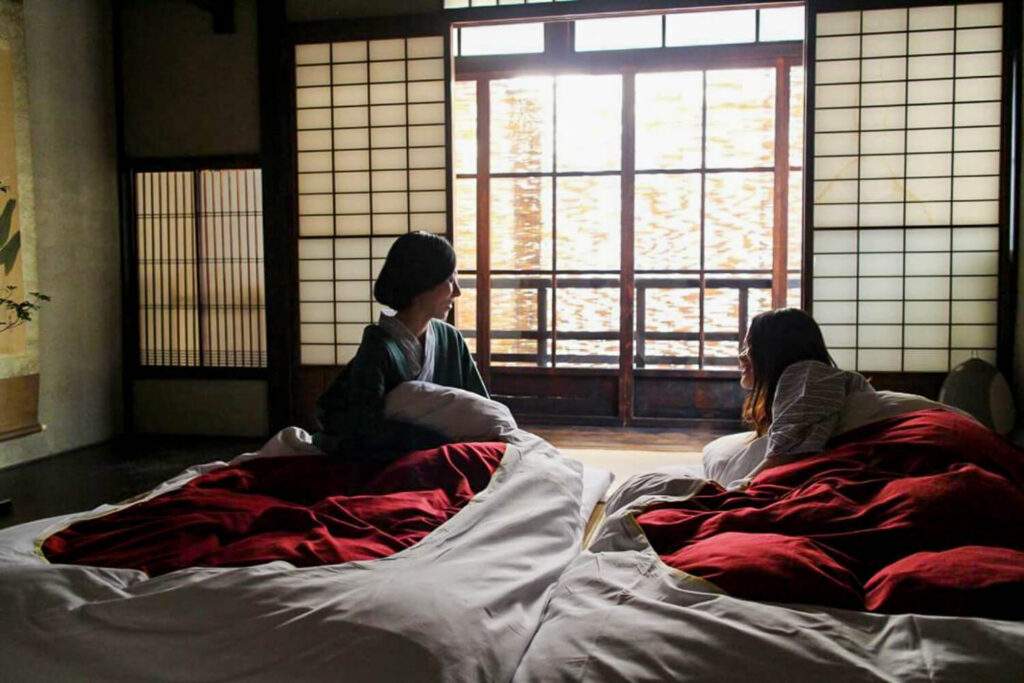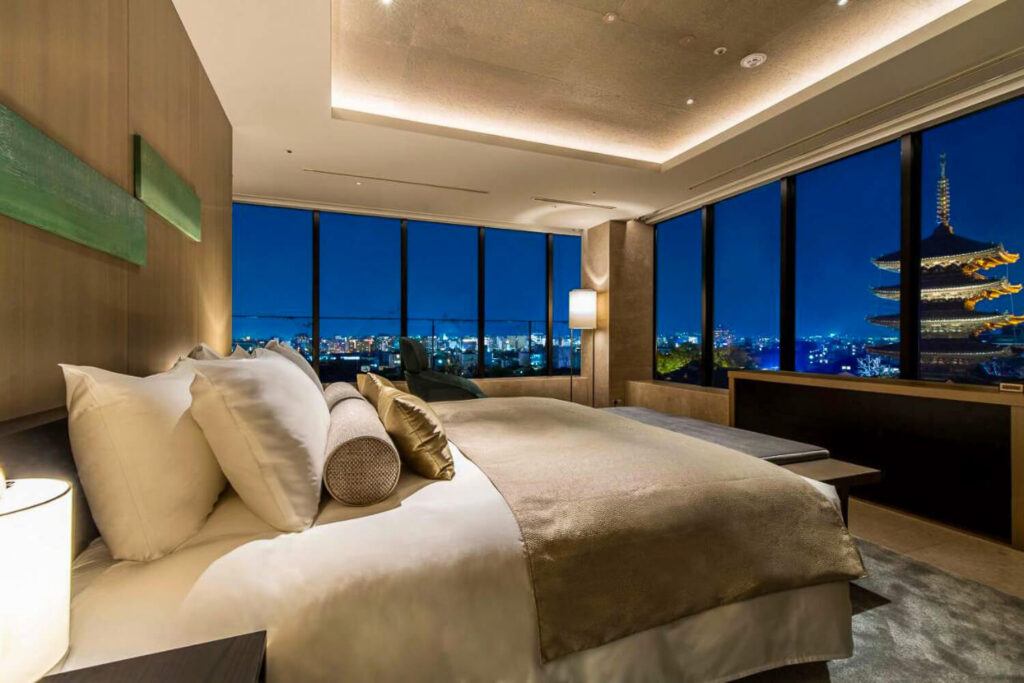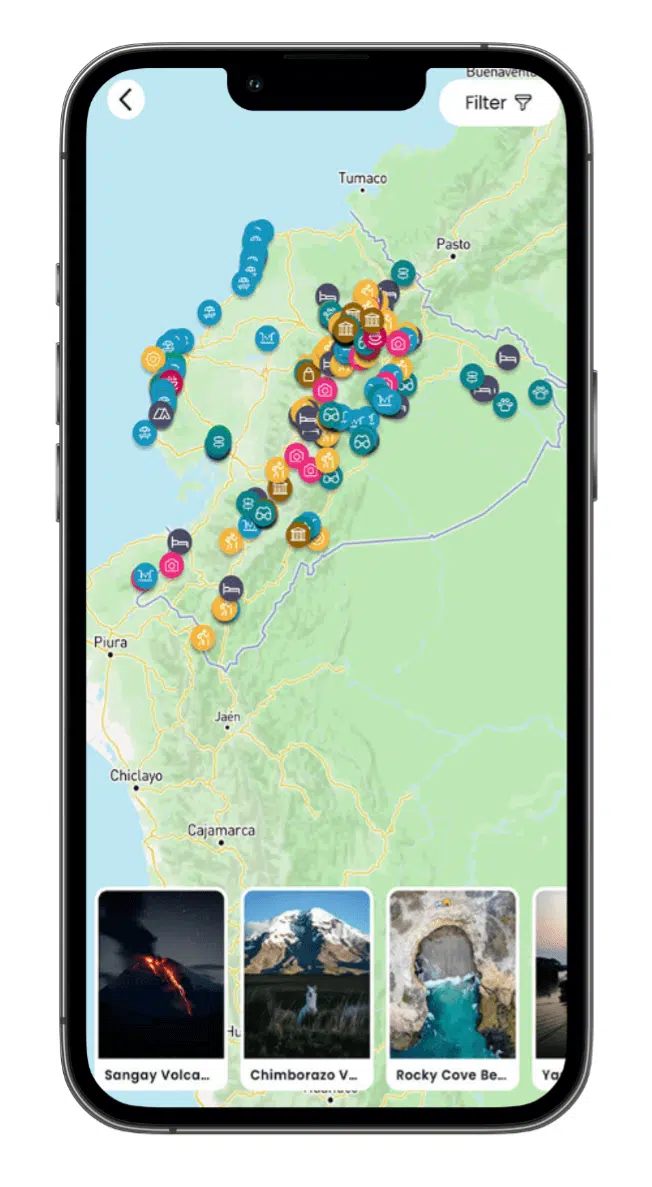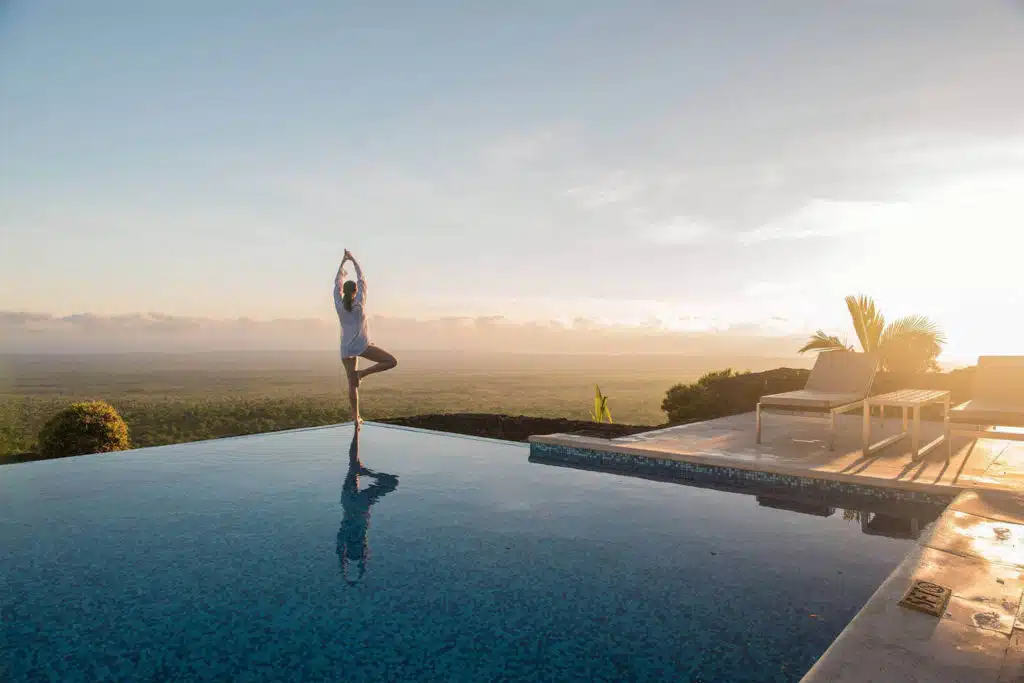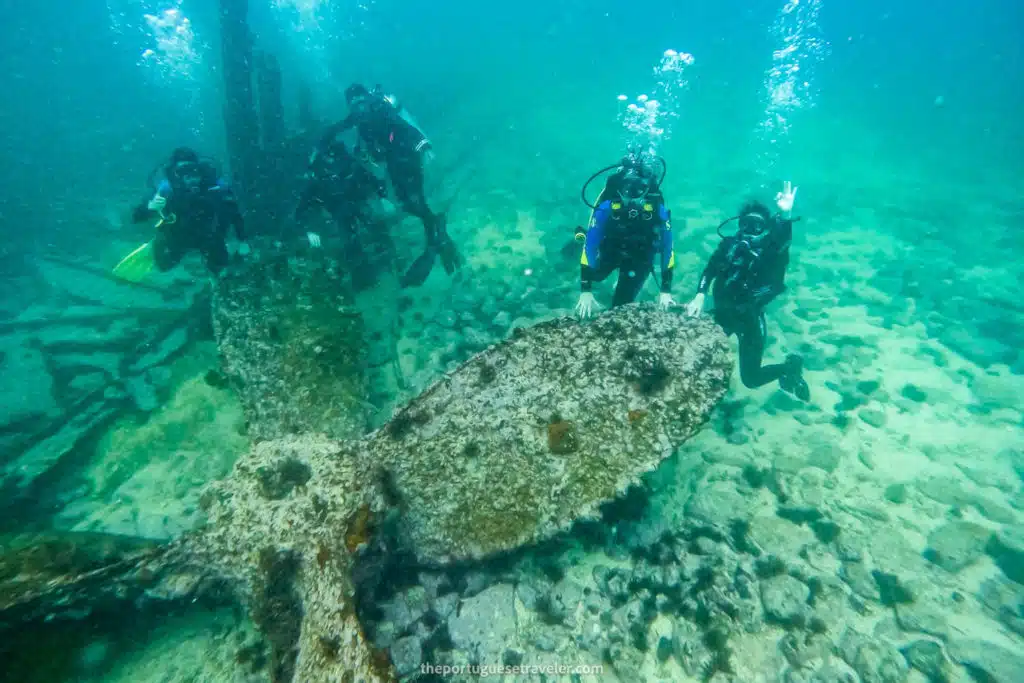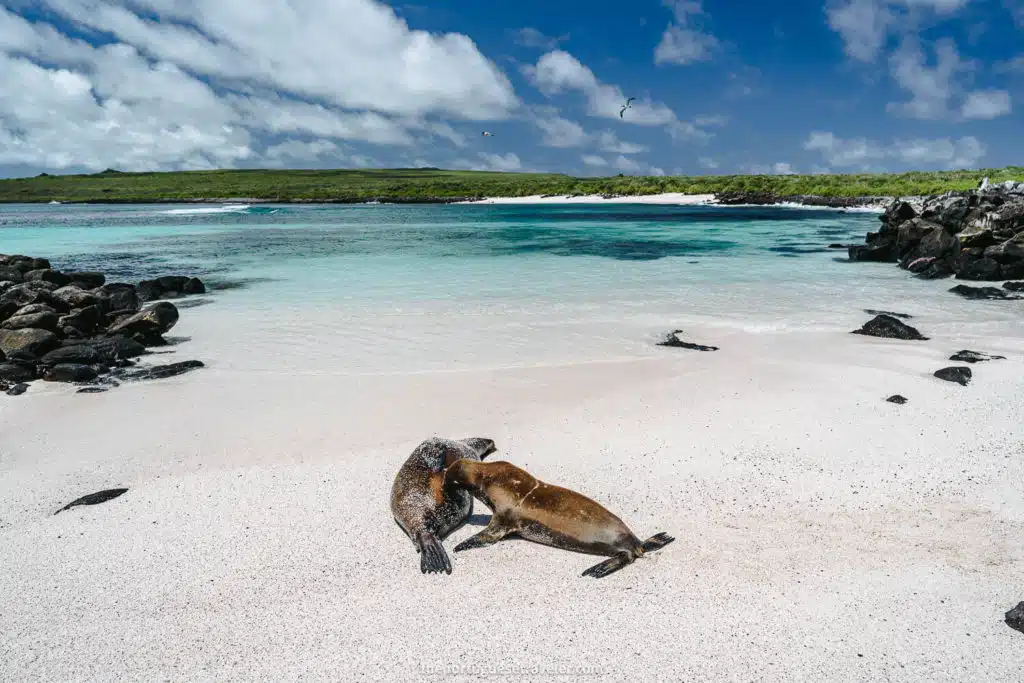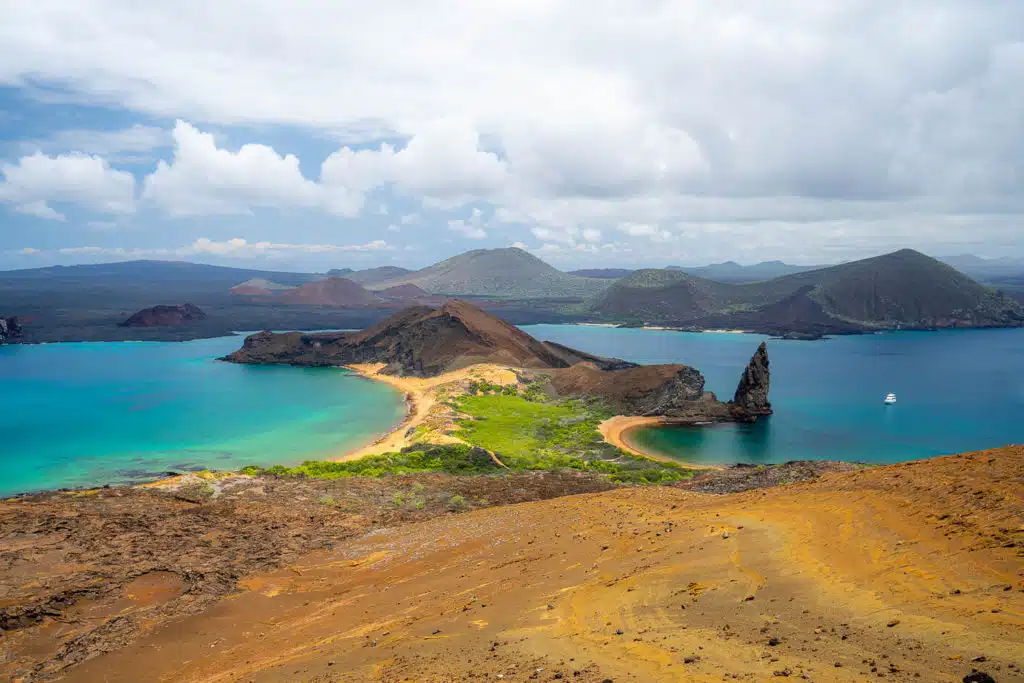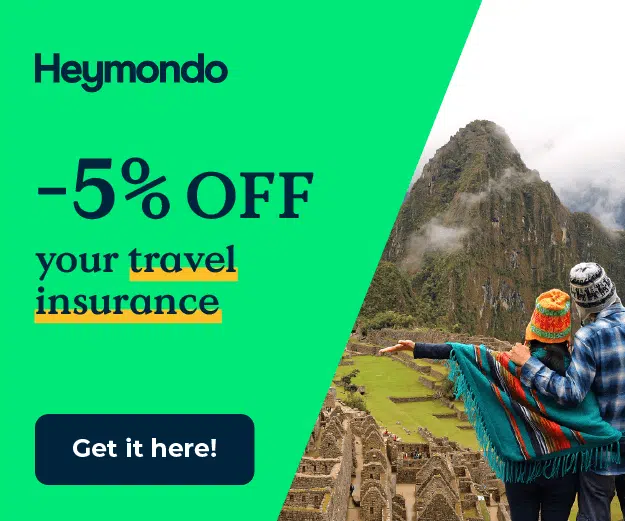80 Best Things To Do in The Galapagos Islands
The Ultimate Guide (2025)
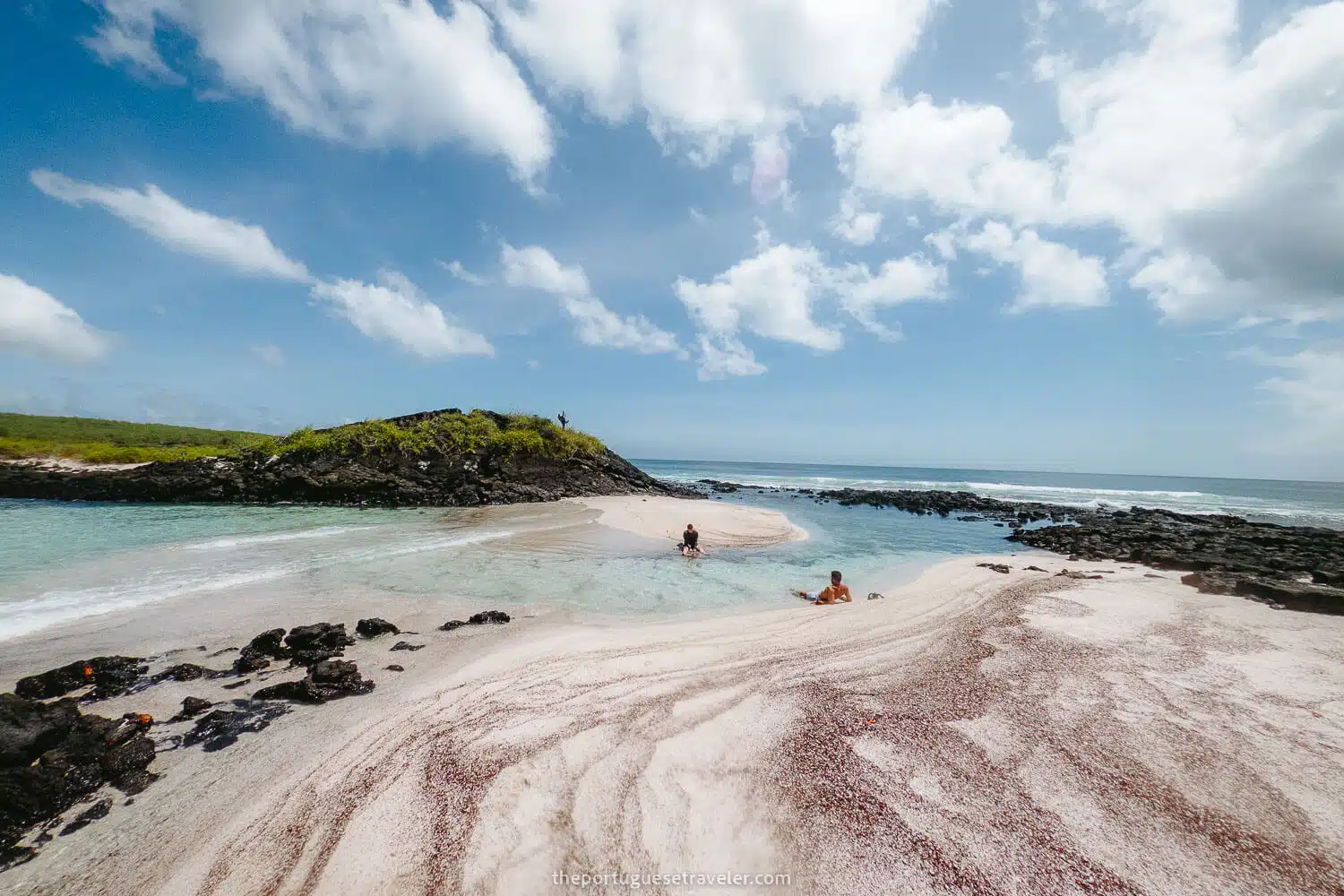
This is a compilation of the more in-detail guides I did in the Galapagos Islands. Here you will find literally everything you can do in the Galapagos.
Here I’ll list the 80 best things to do in the Galapagos Islands. Most of the adventures I’ve done them myself and I’ve written detailed articles about them, which I will link together. There are 24 things to do in San Cristobal Island, 35 in Santa Cruz, and 19 in Isabela. The 2 first two things are water-based cruises you can do if you decide to come in a more luxurious way.
If you’re still planning your Galapagos trip, you might find my Best Galapagos Itinerary (from 4 to 10 days) article useful.
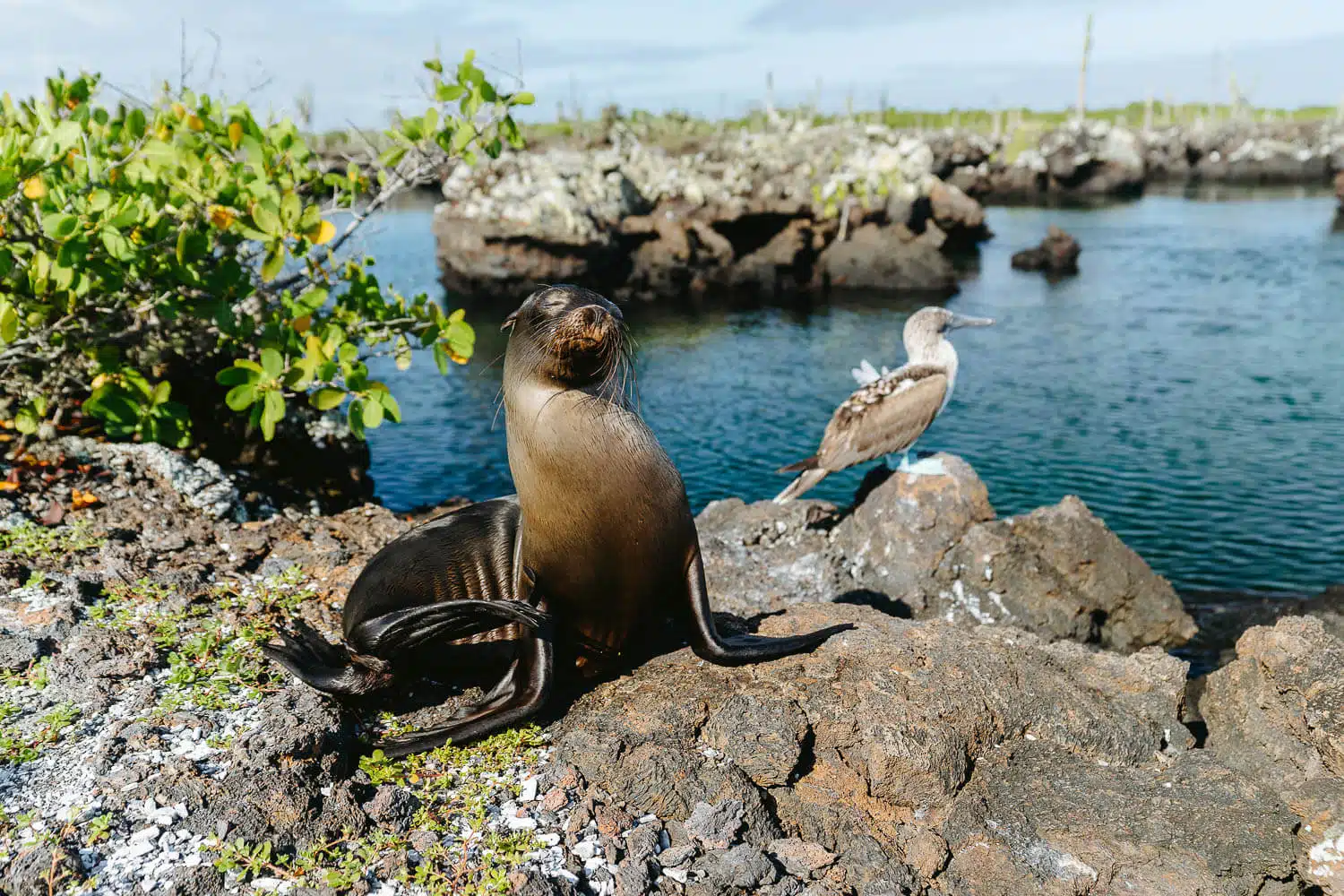
Table of Contents
Travel Guide, Itineraries, Map, Local Tips
Get access to my curated list of all the best viewpoints, hiking trails, secret waterfalls, diving spots, wildlife tours, accommodations, and more, that will make your trip to Ecuador and The Galapagos unforgettable.
All of this, in an interactive guide featuring a mobile-friendly map, pre-designed itineraries, all my favourite photos, and helpful travel tips to guide your journey in this amazing unexplored country.
If you want personalized advice write me in-app and we can plan it together.

Things To Do in The Galapagos
General Info
All the Galapagos islands are part of the Galapagos National Park, and therefore there are a number of things you should know:
- Most of the activities have to be done on a tour with a Naturalist guide.
- All the agencies have the same prices (although you can barter if you book more than one tour).
- Most beaches have opening and closing times (turtle nesting reasons).
- You should book your tour at least one day in advance (or you might risk not having a place on the best ones).
- Bring Seasickness Medication for the tours on the water.
- Always use strong sunscreen (Sun in the Equator line burns more).
- Have mosquito repellant with you, especially at sunset. There are horseflies in the Galapagos.
- You can’t fly a drone here unless you have a special permit from the National Park.
- You can’t rent a motorcycle or a car, everything has to be done by taxi, bus, boat, bicycle, or on foot.
- You can’t and shouldn’t touch the animals on the island.
If you want more information please check the Galapagos Conservancy’s website.
Things To Do in The Galapagos
Cruise-Based Experiences
1. Cruises in The Galapagos
This is one of the options you have to explore the Galapagos. I’m adding it as a thing to do as all the other 78 activities are land-based and therefore this is by itself an experience.
You have multiple companies that offer you water-based excursions, they vary in itinerary, comfort, and duration. In order to visit some of the islands you need without a doubt to go on a cruise, and these islands are Santiago, Fernandina, Rábida, and Genovesa.
The cruises offer you different itineraries depending on which islands you want to visit. Most of them start in Santa Cruz island and they can also visit: San Cristóbal, Isabela, Española, Floreana, North Seymour, South Plaza, and Santa Fé islands.
Underneath I listed the best cruise experiences you can get on Viator.
If you want to do a cruise in the Galapagos check out my guide: BEST GALAPAGOS CRUISE – A GUIDE FOR ALL THE BUDGETS
2. Liveaboard to Darwin and Wolf Islands
This is the most incredible and most famous cruise you can do as a scuba diver. It will take you all the way to the most remote islands of the archipelago, the Darwin and Wolf Islands.
There be prepared to see thousands of hammerhead sharks, manta rays, sea lions, Galapagos sharks, tiger sharks, dolphins, and, with luck and in the right season, the incredible whale sharks.
If you’re searching for a cheaper way to do the Liveaboard in Darwin and Wolf I found this company “My Galapagos Tour” in Santa Cruz that offered last minute-tickets there. The price was 2600$ USD for 8 days and 7 nights (diving tour) and 1600$ USD (non-diving tour).
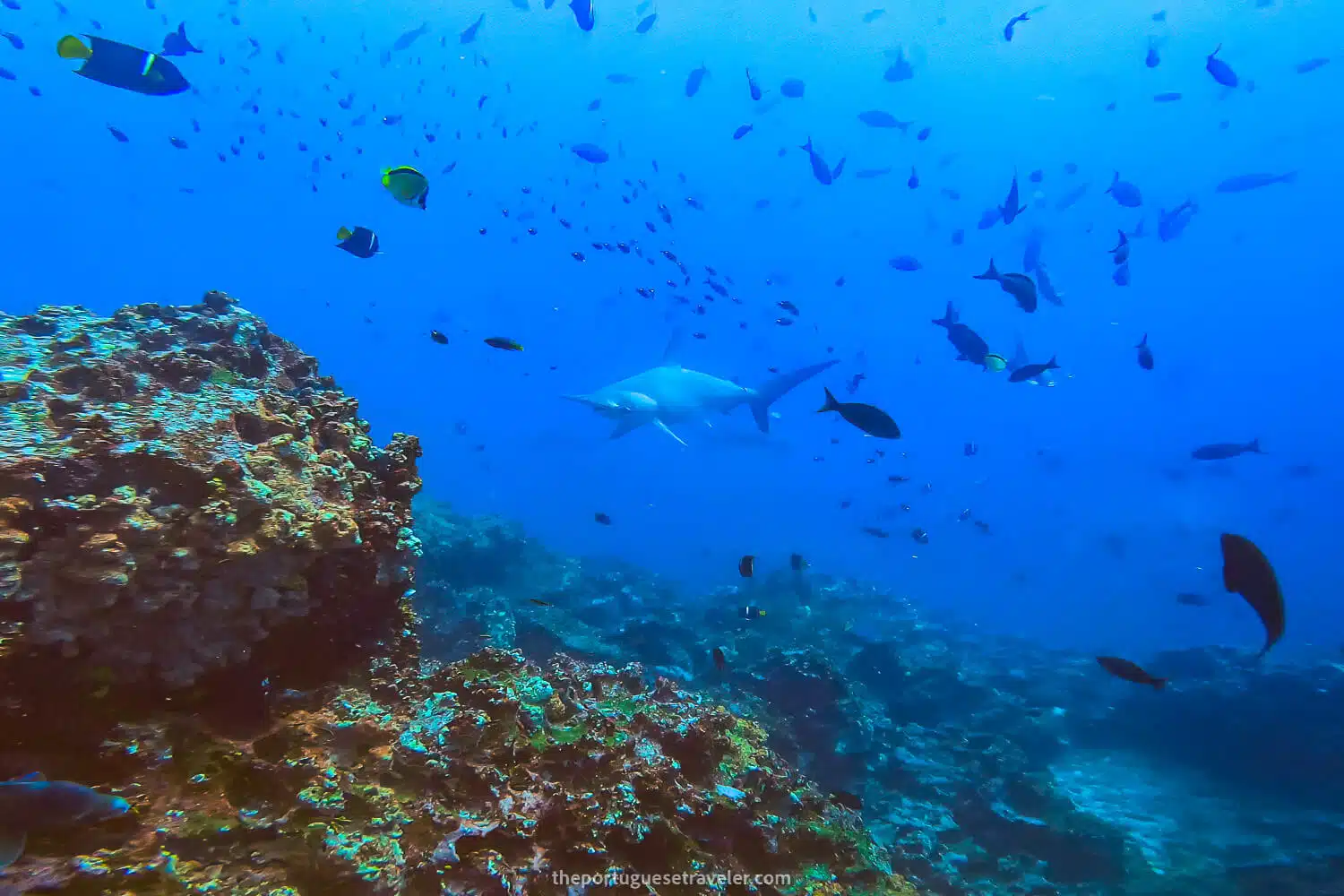
Things To Do in The Galapagos
San Cristobal Island
3. "El Junco" Crater Lake
The El Junco crater lake is the largest natural freshwater reserve in the entire Galapagos Archipelago.
It is located in the crater of an extinct volcano and its name comes from the “junco” plant, very common around the area.
The lake’s diameter is 270 m. and its maximum depth is 6 m, comprising a total of 360.000 m3 of water.
In order to visit it you must hire a taxi, for that reason, it’s usually included in a tour where the taxi takes you to multiple destinations.
This tour is called “The Highlands Tour” or “Tour Parte Alta” and takes you to El Junco Crater Lake, The Giant Tortoise Reserve “La Galapaguera” and Puerto Chino beach.
View the full blog post here: HIGHLANDS TOUR IN SAN CRISTOBAL
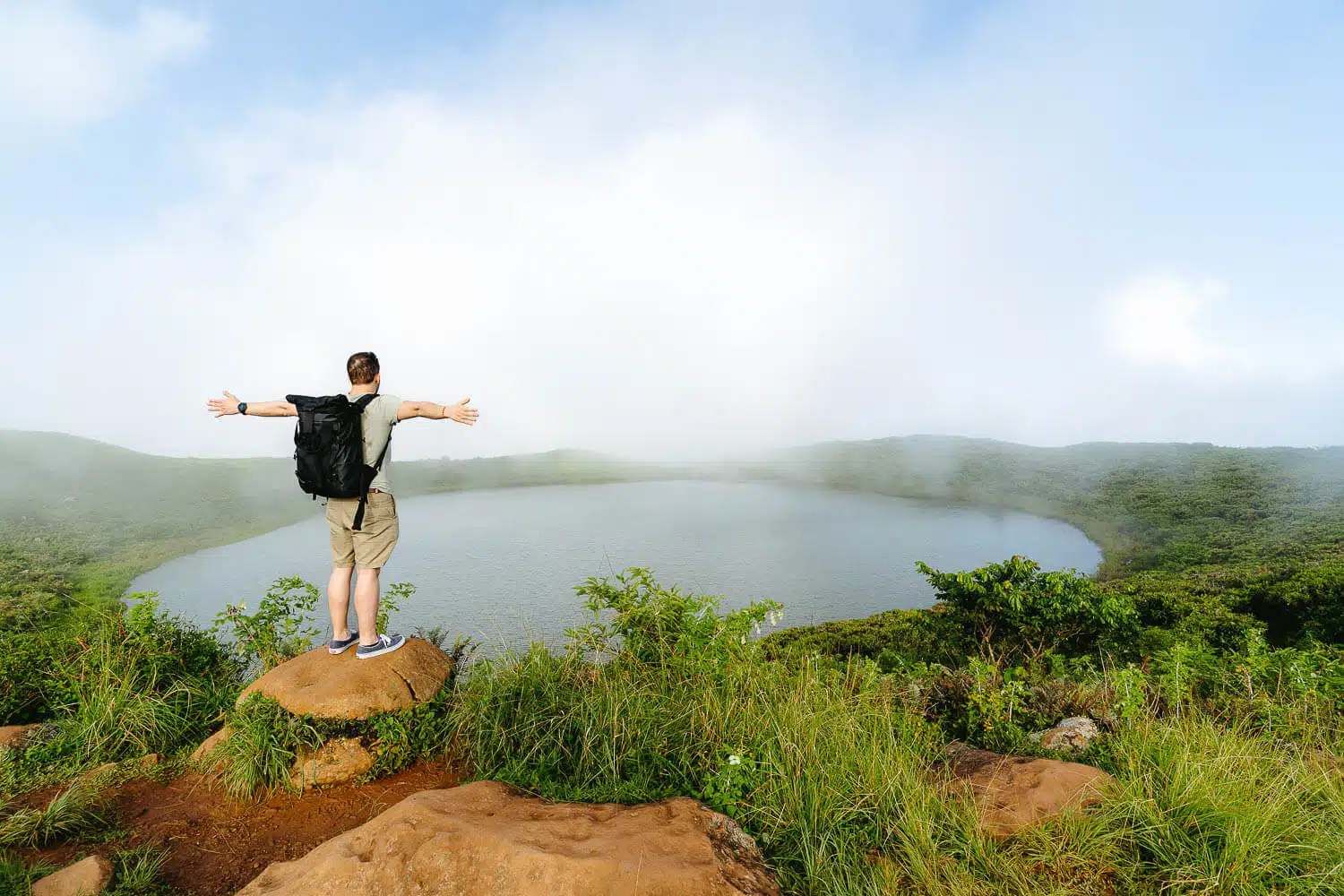
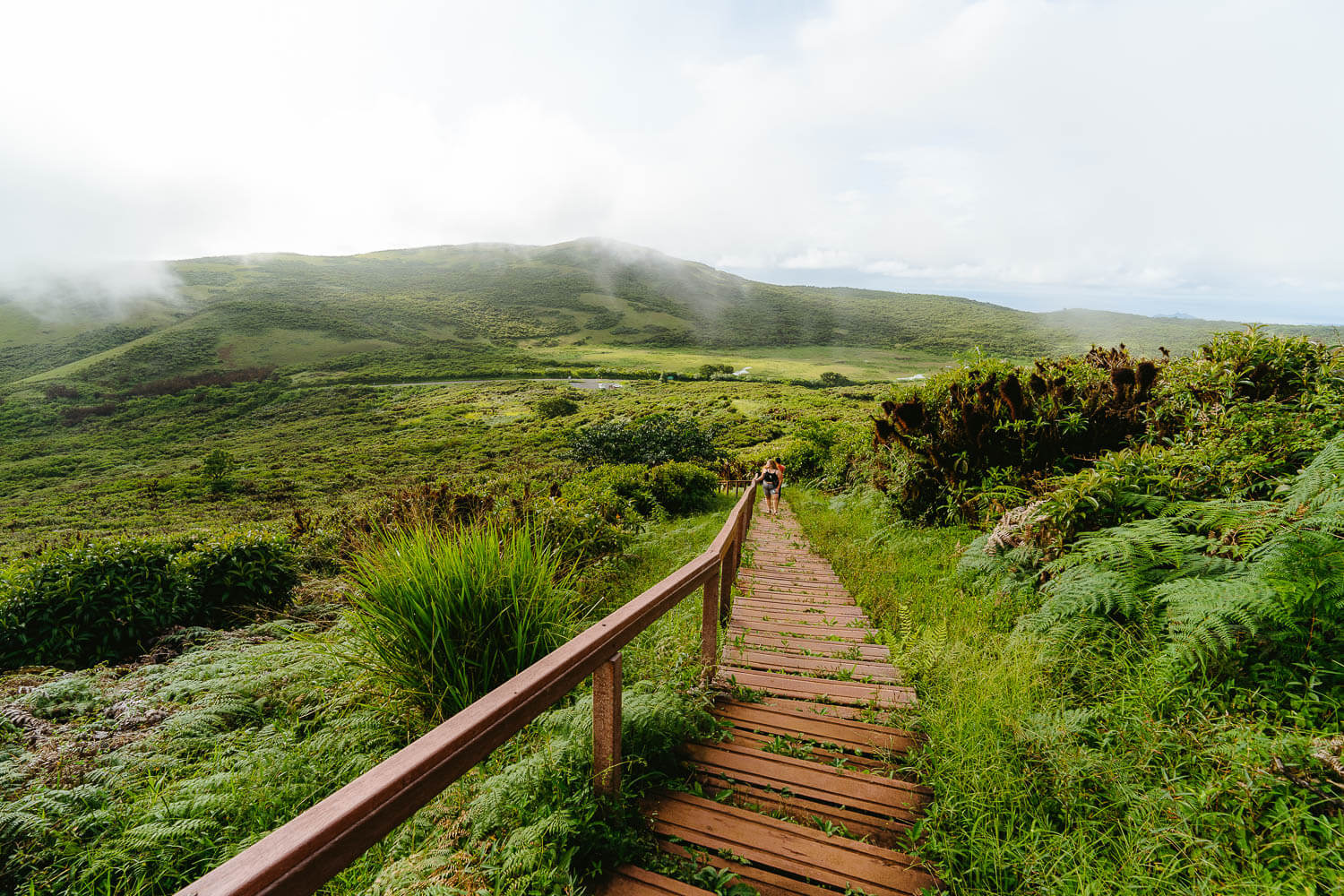
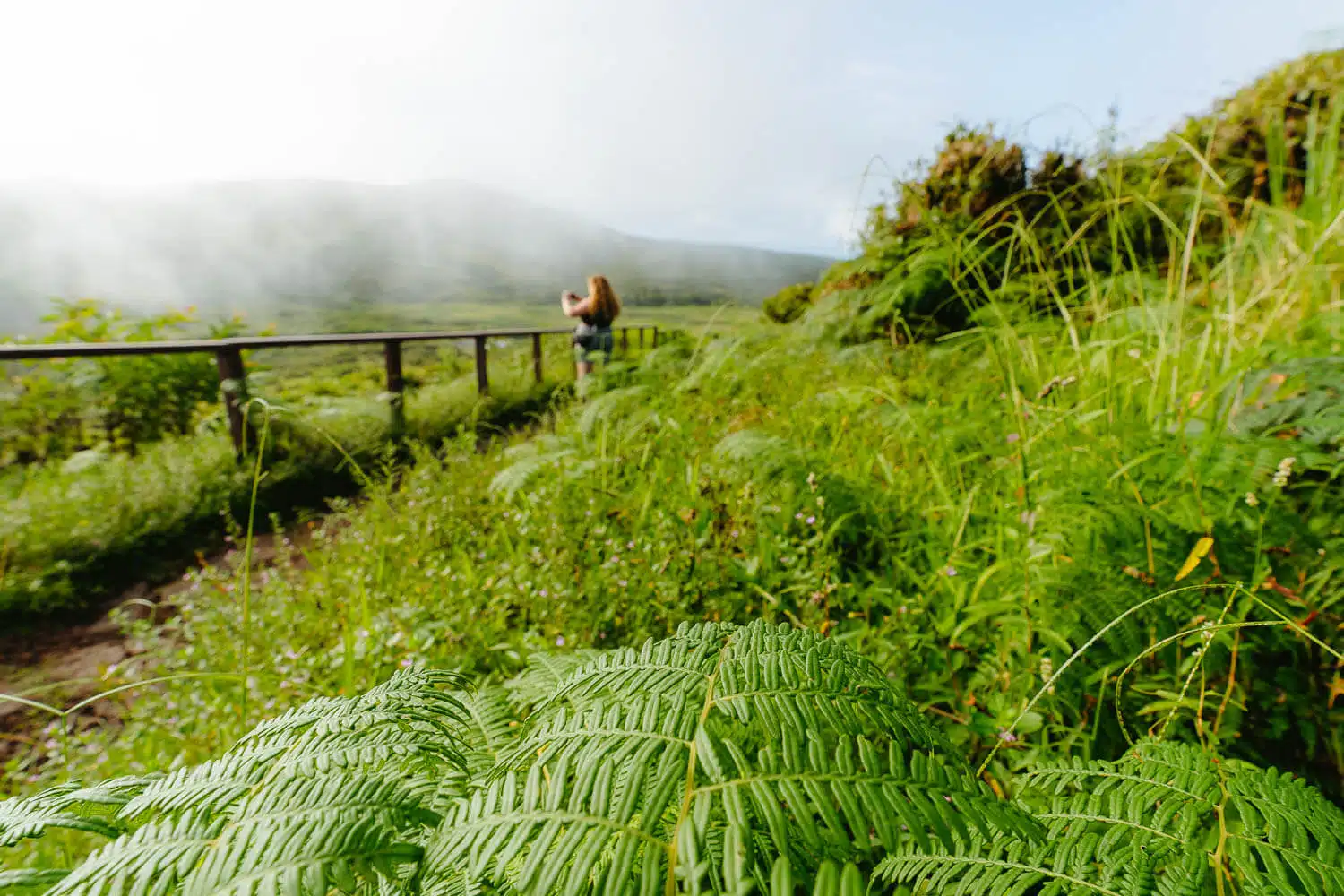
4. Giant Tortoise Reserve
"La Galapaguera de Cerro Colorado"
The “Galapaguera de Cerro Colorado” or “Centro de Crianza de Tortugas Terrestres David Rodriguez” is San Cristobal’s giant tortoise reserve, every main island has its own and this is the one you can visit on this island.
On its compounds, you can find tortoises of different ages and sizes, from baby to adult ones.
This is a breeding center and what they do is rescue tortoises’ eggs that were recently laid and take them here thus significantly increasing their chance of survival.
In order to visit it you must hire a taxi, for that reason, it’s usually included in a tour where the taxi takes you to multiple destinations.
This tour is called “The Highlands Tour” or “Tour Parte Alta” and takes you to El Junco Crater Lake, The Giant Tortoise Reserve “La Galapaguera” and Puerto Chino beach.
View the full blog post here: HIGHLANDS TOUR IN SAN CRISTOBAL
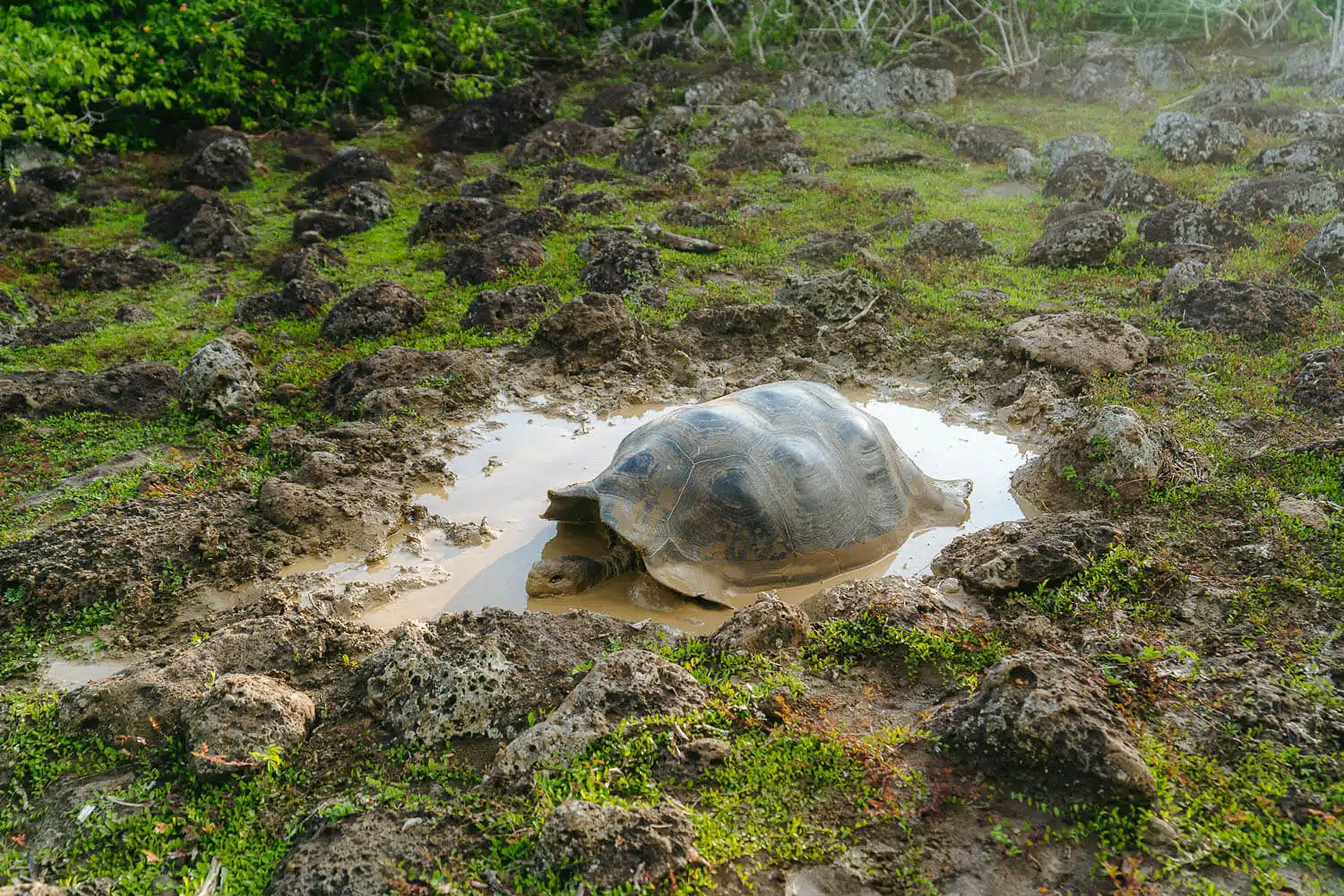
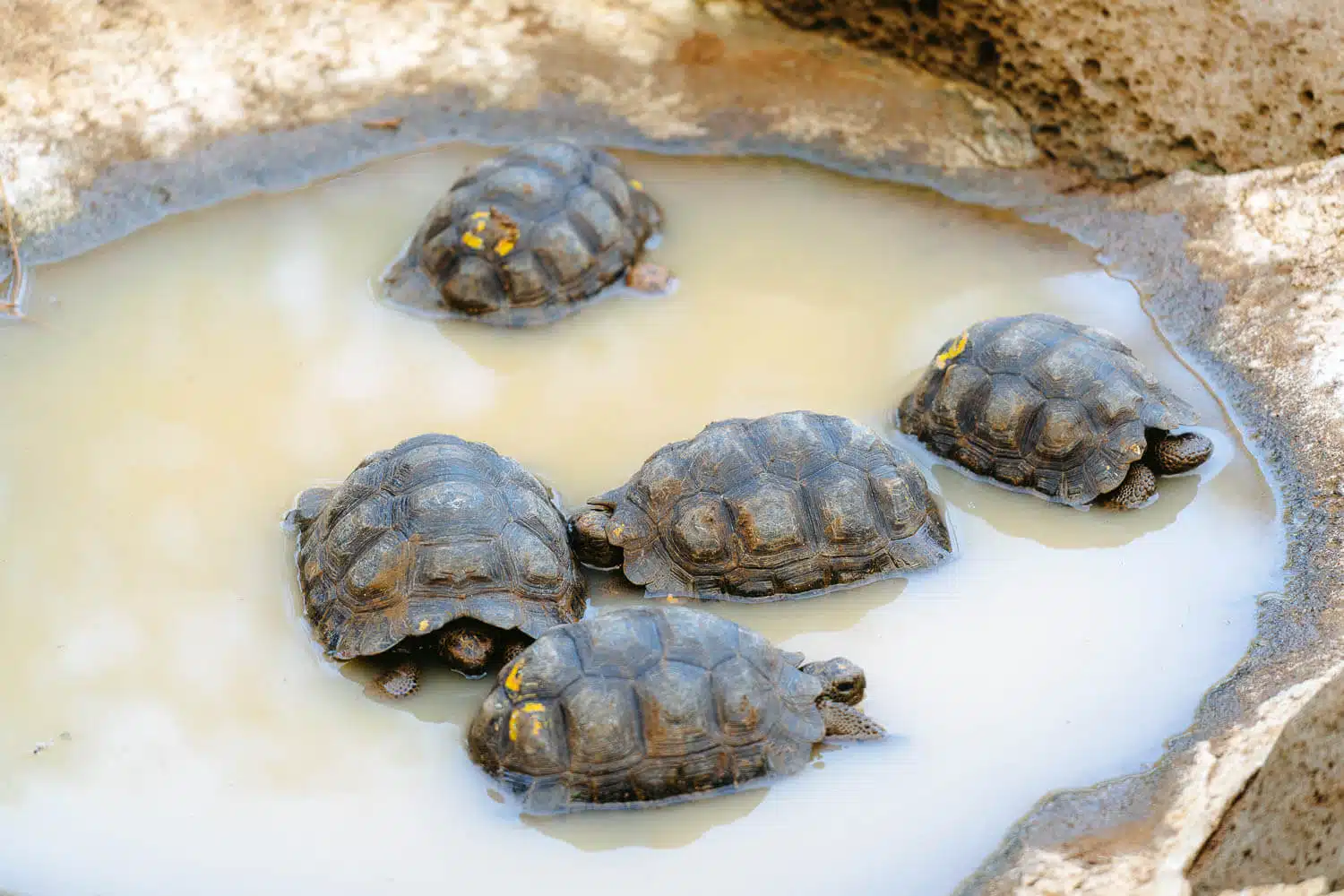
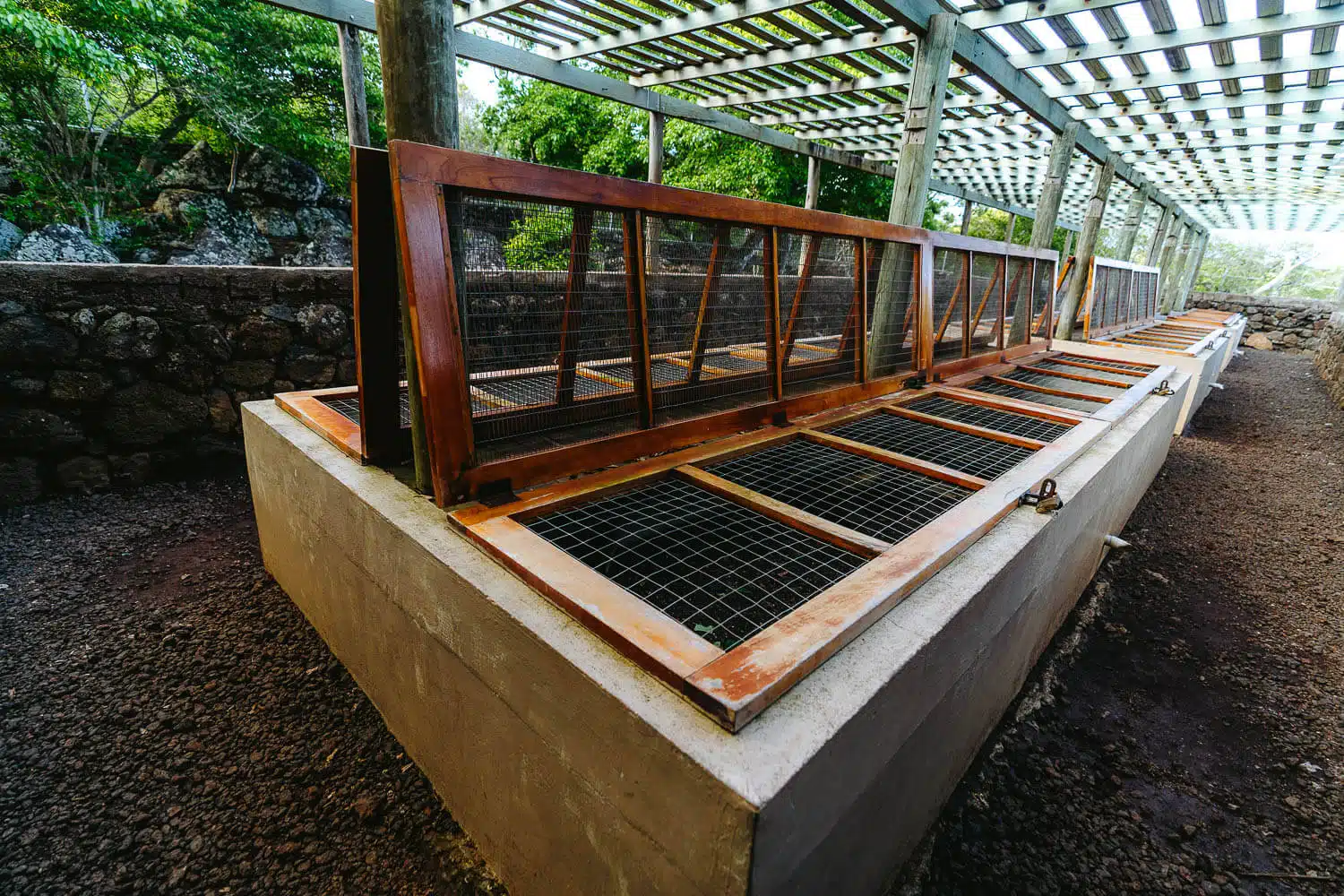
5. Puerto Chino Beach
Puerto Chino beach is one of the most beautiful and secluded beaches on San Cristobal island.
There are almost no tourists here, you can snorkel, sunbathe, and even surf. If you’re lucky you might even find sea lions.
In order to visit it you must hire a taxi, for that reason, it’s usually included in a tour where the taxi takes you to multiple destinations.
This tour is called “The Highlands Tour” or “Tour Parte Alta” and takes you to El Junco Crater Lake, The Giant Tortoise Reserve “La Galapaguera” and Puerto Chino beach.
View the full blog post here: HIGHLANDS TOUR IN SAN CRISTOBAL
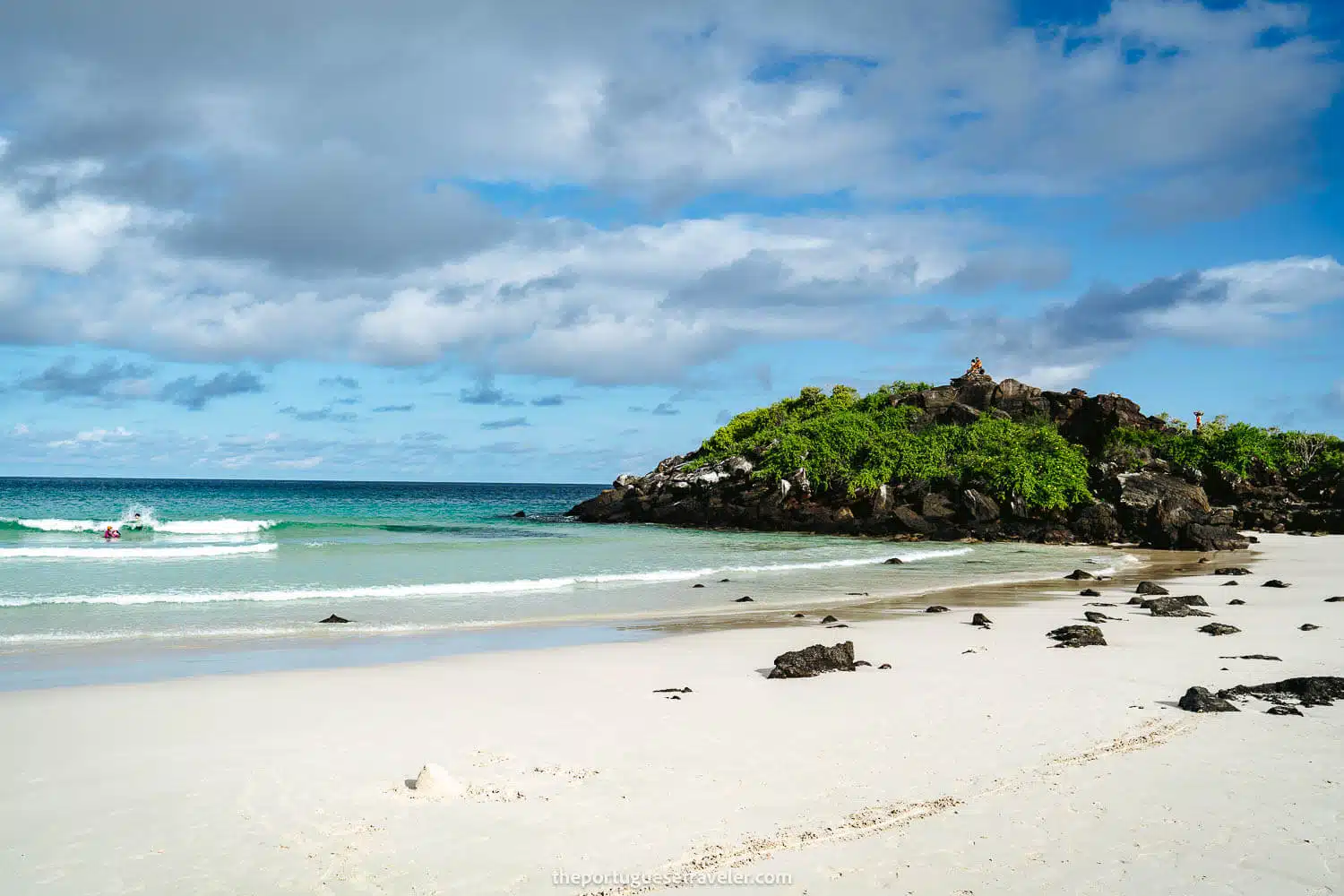
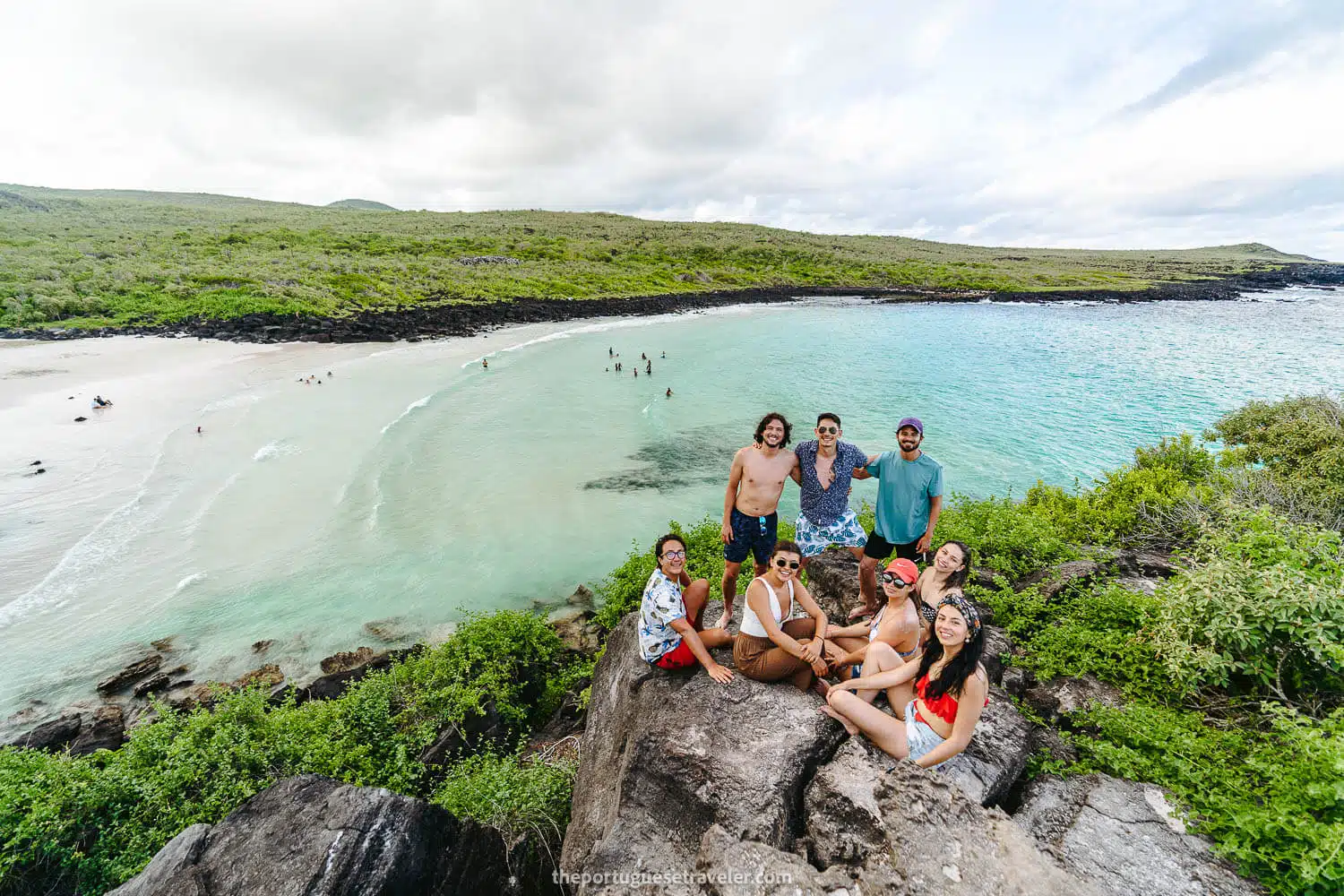
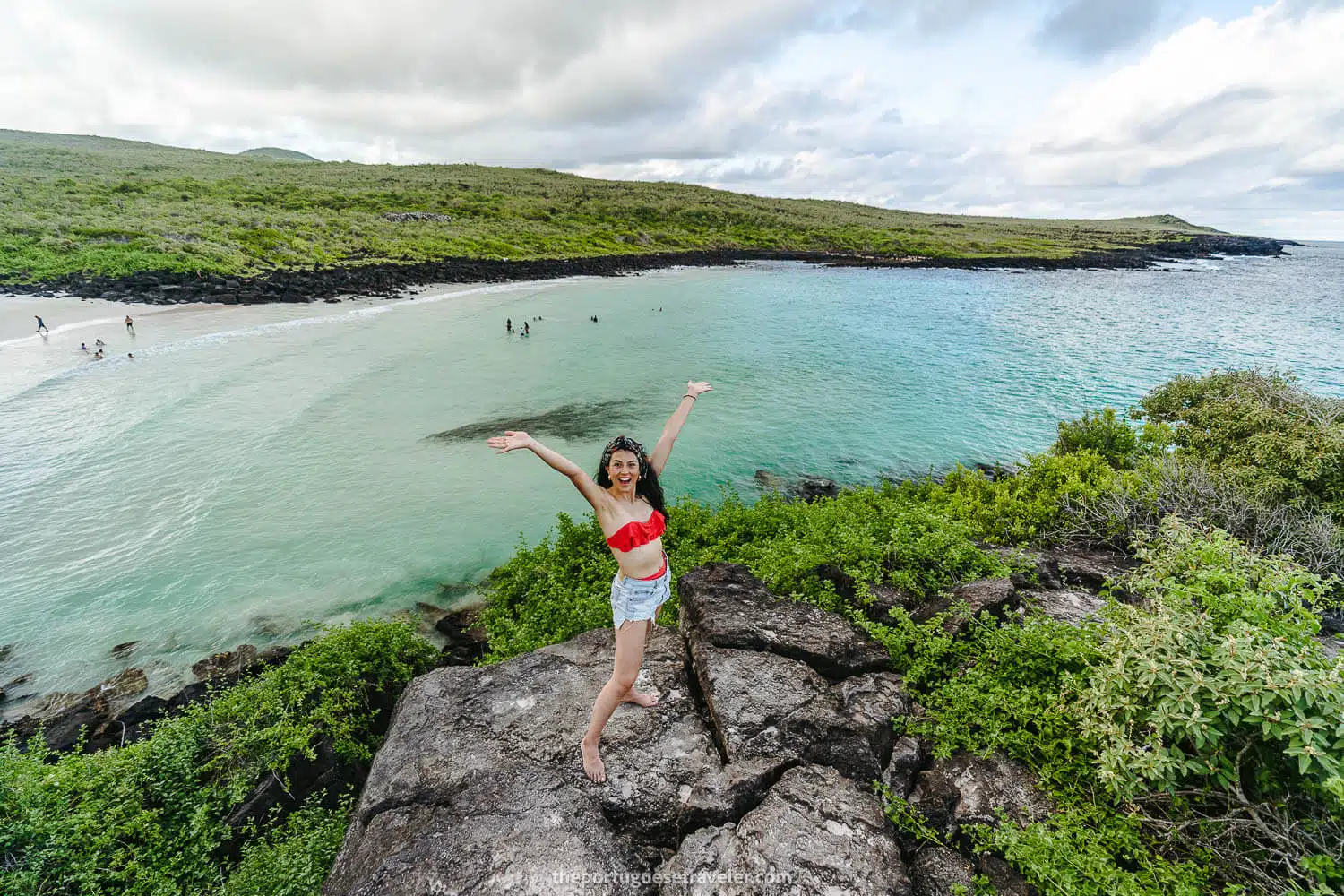
6. San Cristobal's Interpretation Center
The Interpretation Center or “Centro de Interpretación Ambiental Gianni Arismendy” is the island’s Natural and History Museum and the best introduction you can have to the Galapagos Islands.
Here you can find information about the history of San Cristobal, and the entire archipelago, from its discovery to its colonization.
Scientific information about its geological formation, and its endemic species.
An entire area dedicated to the preservation and conservation of the Galapagos. and finally a section about the local people that fought all their lives for the protection of this paradise.
I went here while hiking my way to Playa Baquerizo beach and also wrote an article about it.
View the full blog post here: CERRO TIJERETAS AND PLAYA BAQUERIZO HIKE
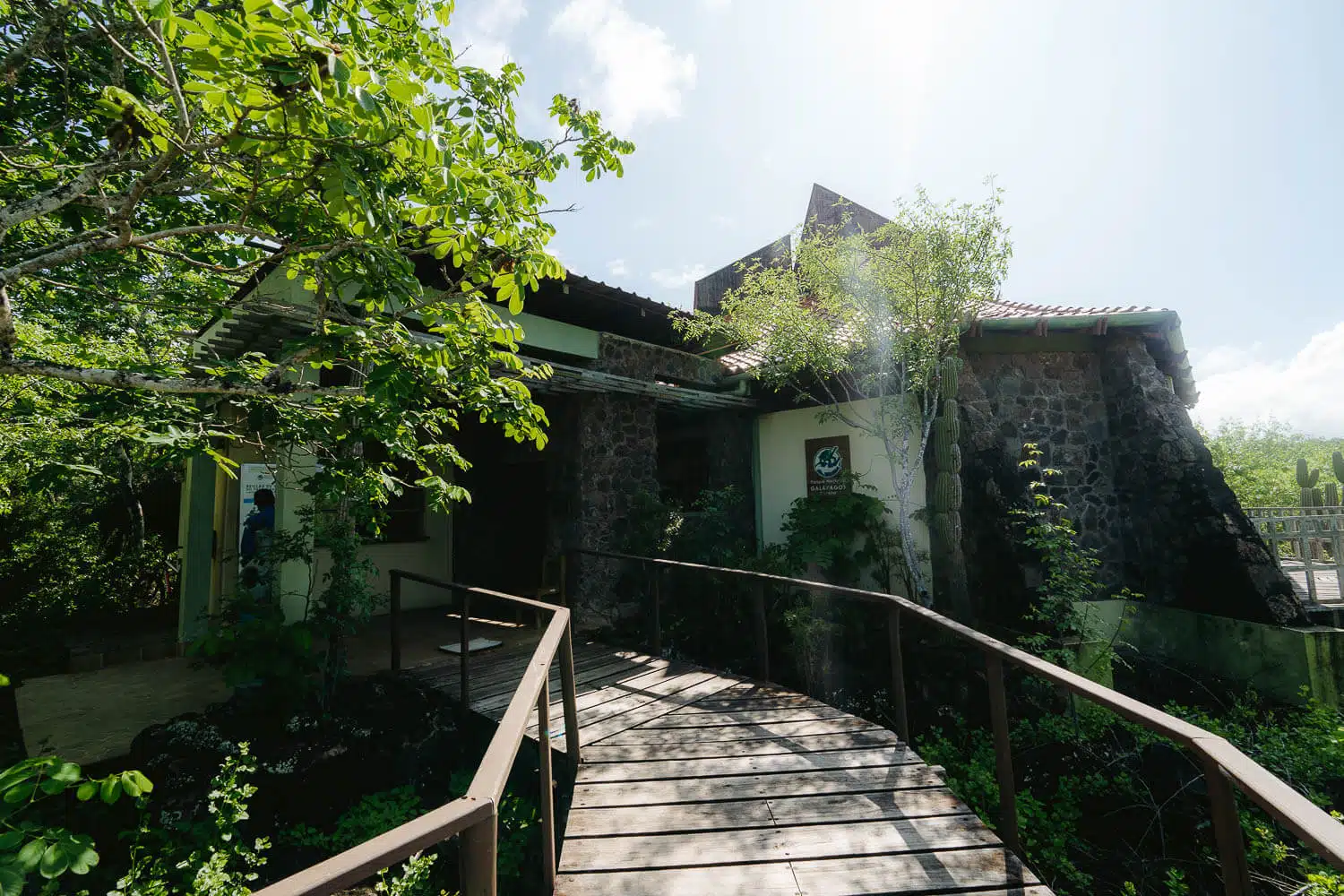
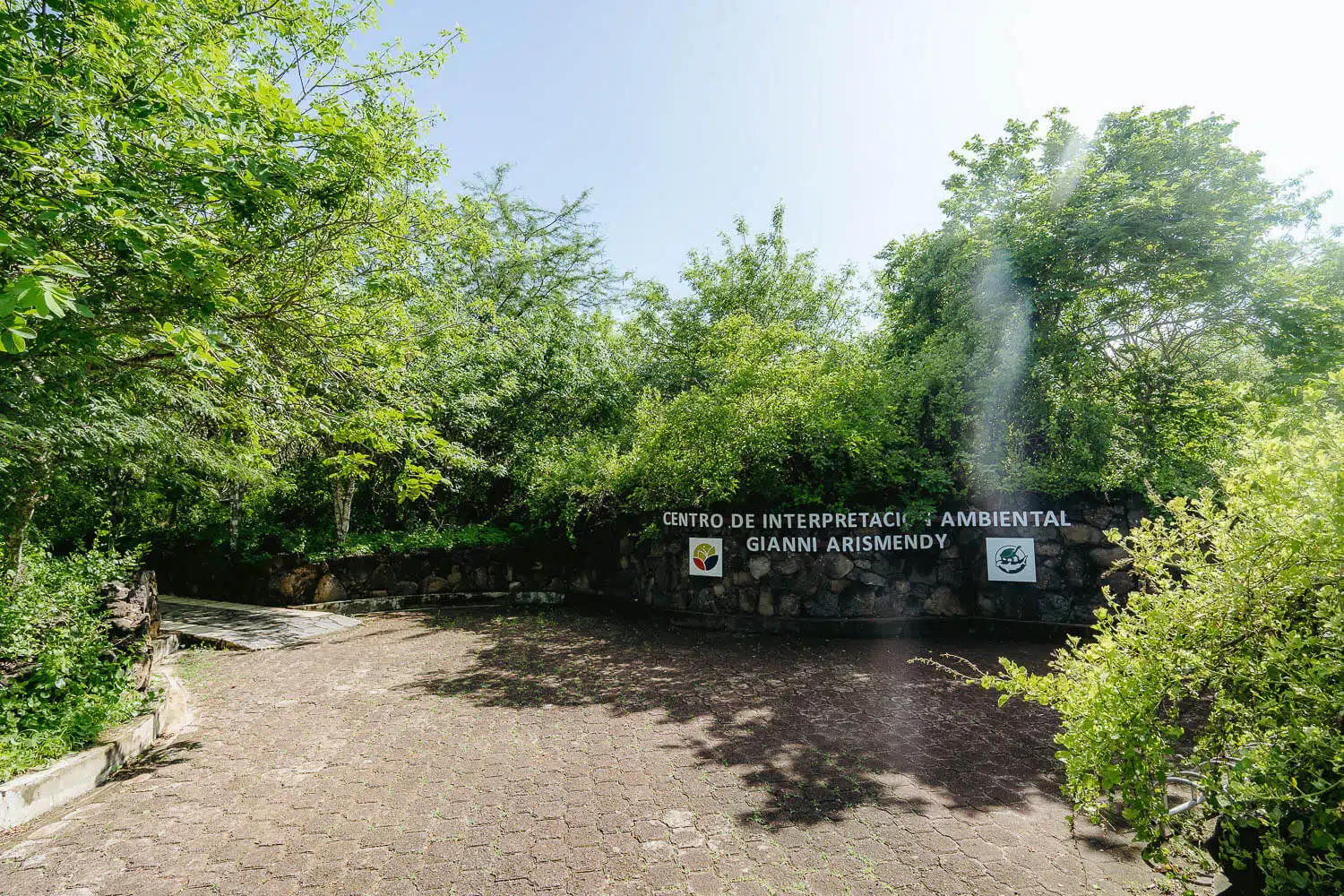
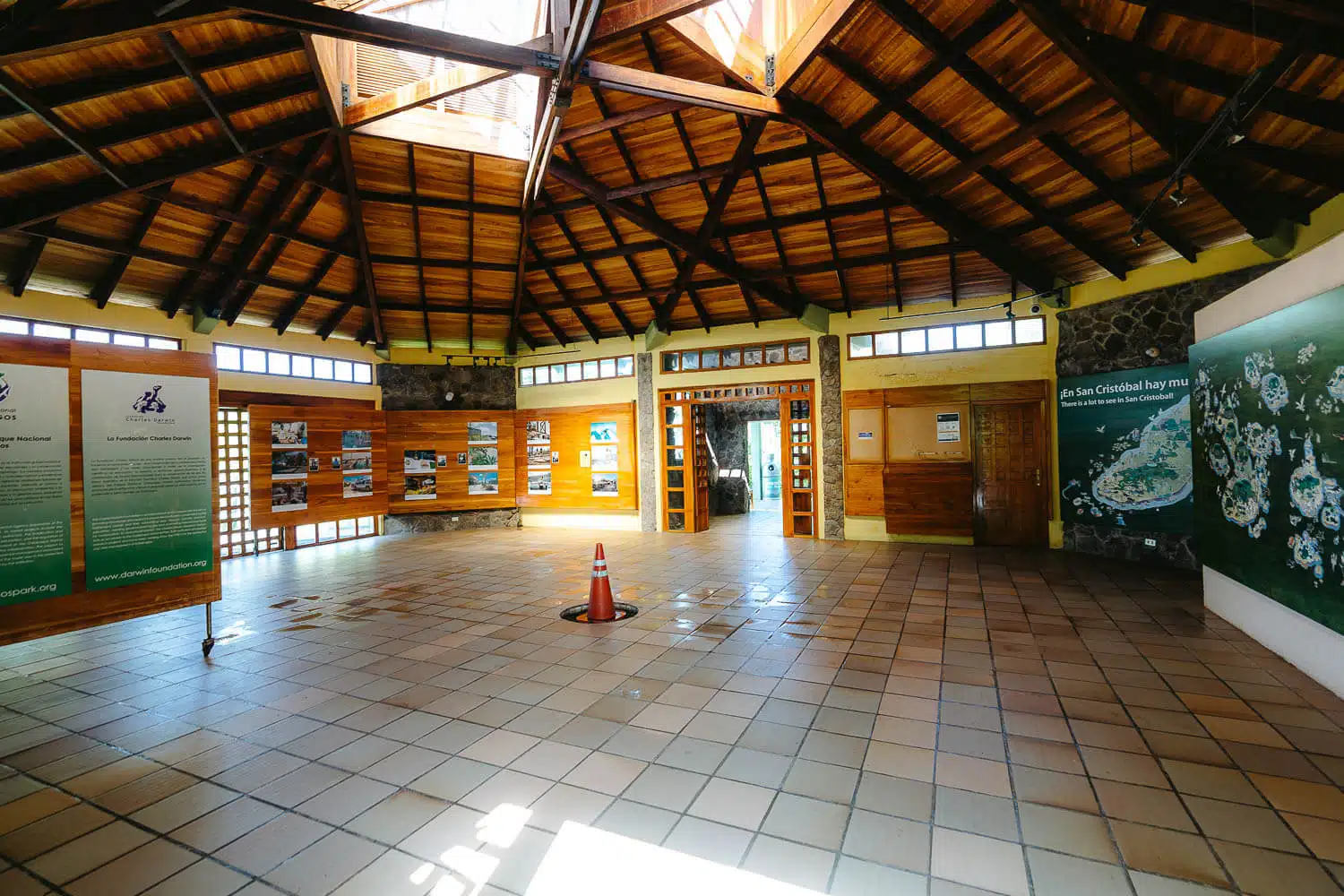
7. Hike to Cerro Tijeretas (Tijeretas Hill)
This is San Cristobal’s best viewpoint. If you’re on the island you can’t miss your chance to come here.
It’s not far away from the city center, and it’s right after San Cristobal’s Interpretation Center.
From here you have a beautiful view over the turquoise waters of Muelle Tijeretas Dock and you can even see in the distance, the most famous rock on the island, the Kicker Rock.
I went here while hiking my way to Playa Baquerizo beach and also wrote an article about it.
View the full blog post here: CERRO TIJERETAS AND PLAYA BAQUERIZO HIKE
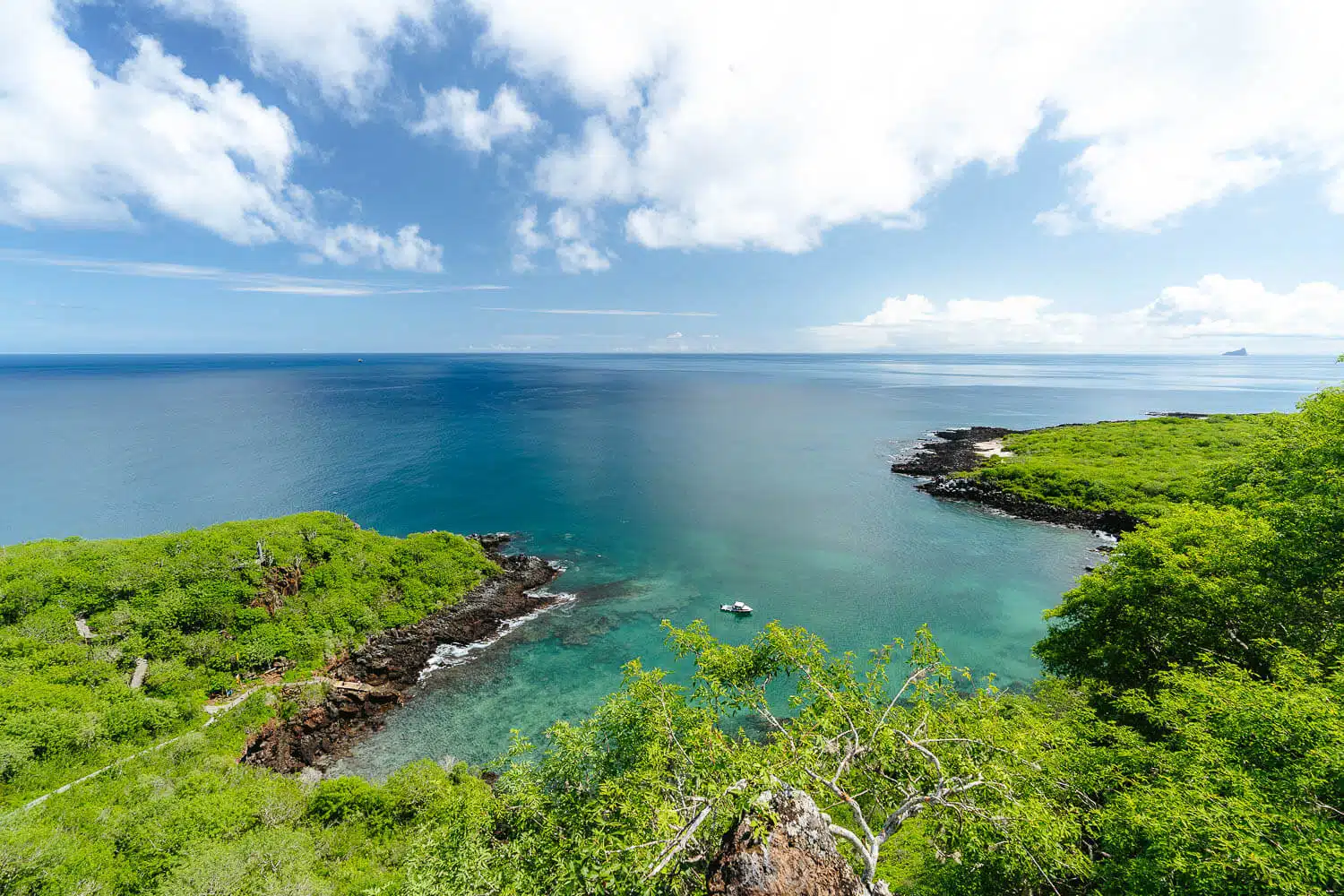
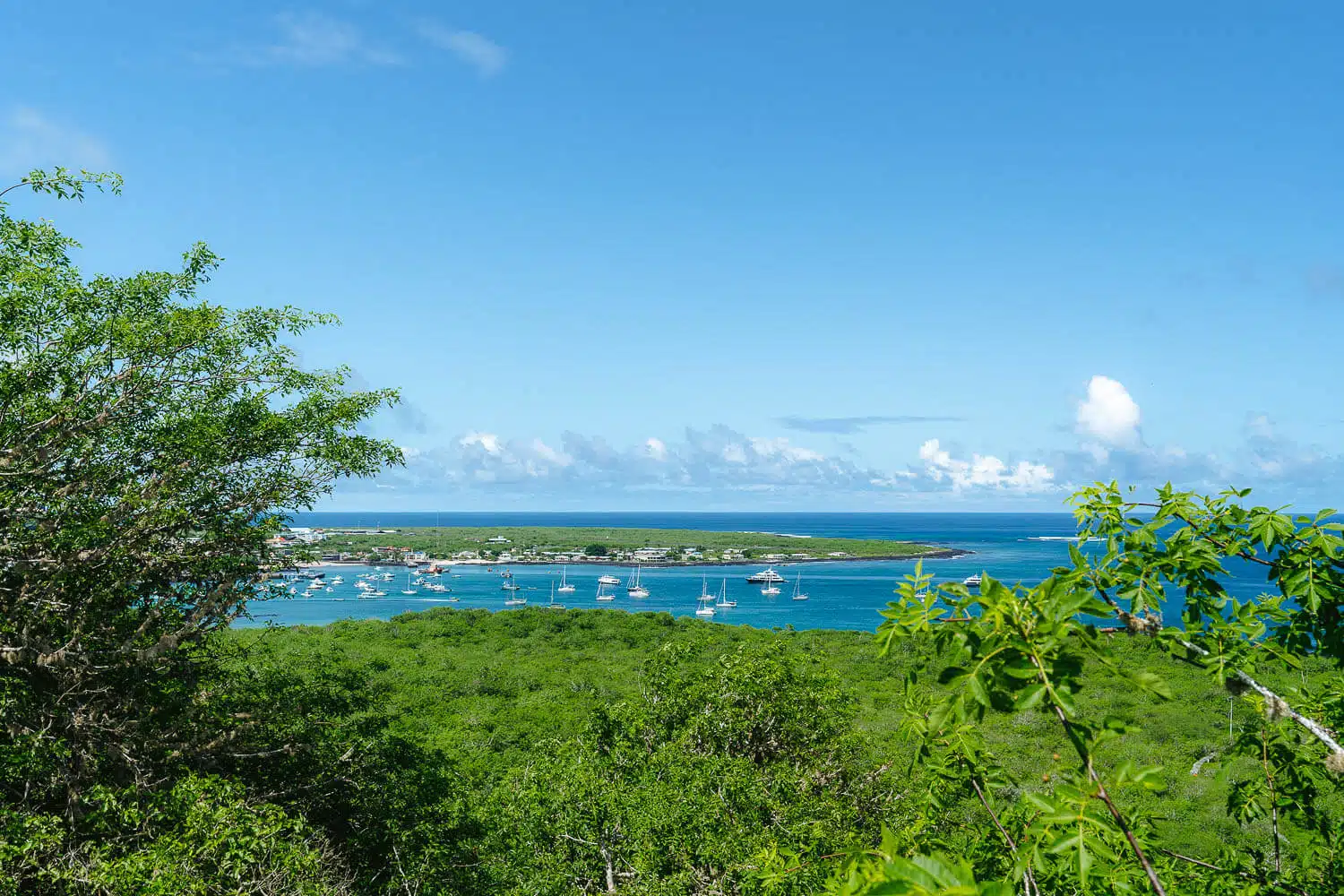
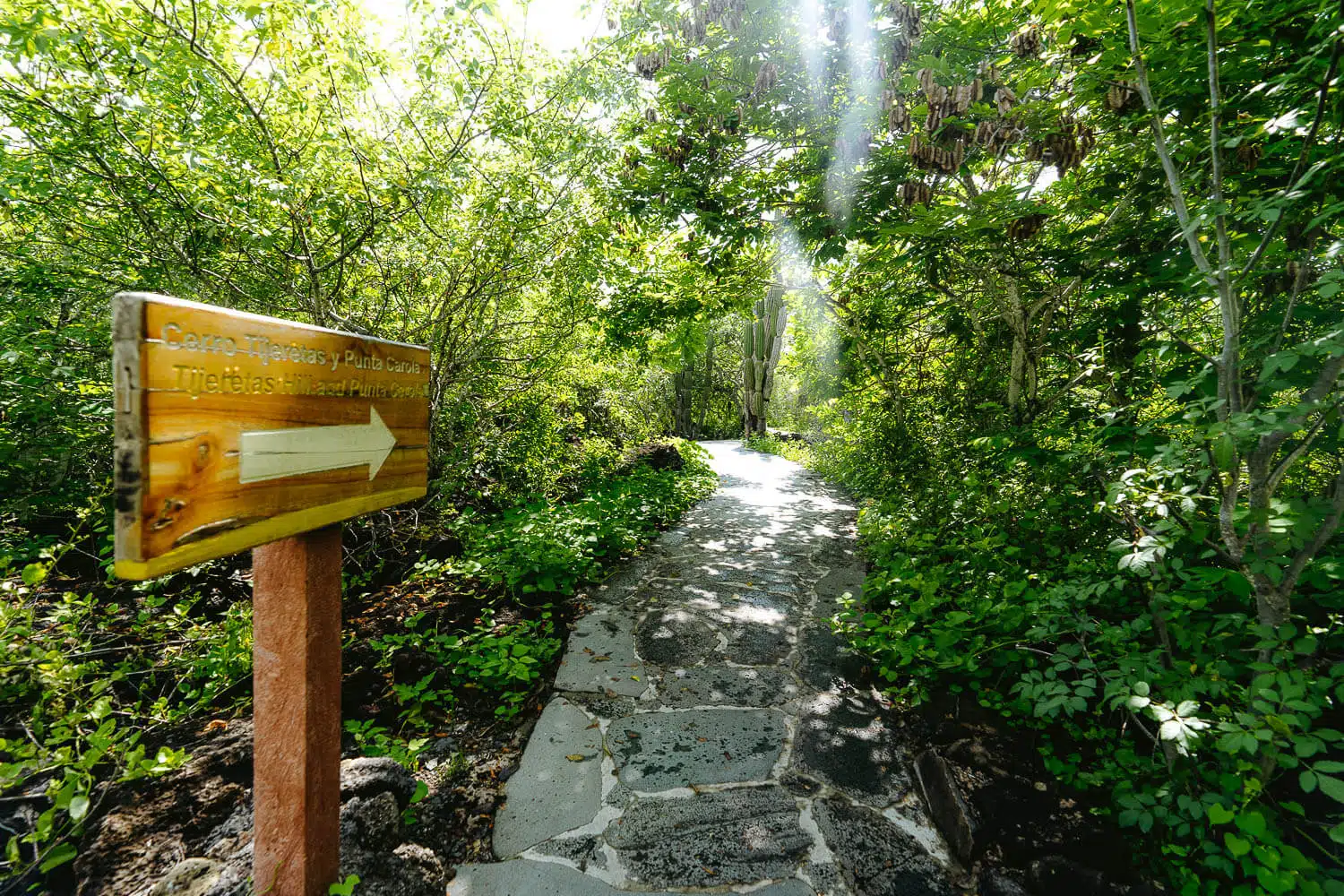
8. Muelle Tijeretas Dock
It is a very nice alternative place to swim and snorkel. There is a cave full of sea lions right on the right of the dock and you will probably find them also in the water or at the dock with you (as you can see in the photo).
If you’re in the Interpretation Center, you either go right to the Cerro Tijeretas Hill or go left to Muelle Tijeretas Dock.
It’s free and it’s the perfect refreshment stop on your way to Cerro Tijeretas or Playa Baquerizo beach.
I went here on my way back from Playa Baquerizo beach and also wrote an article about it.
View the full blog post here: CERRO TIJERETAS AND PLAYA BAQUERIZO HIKE
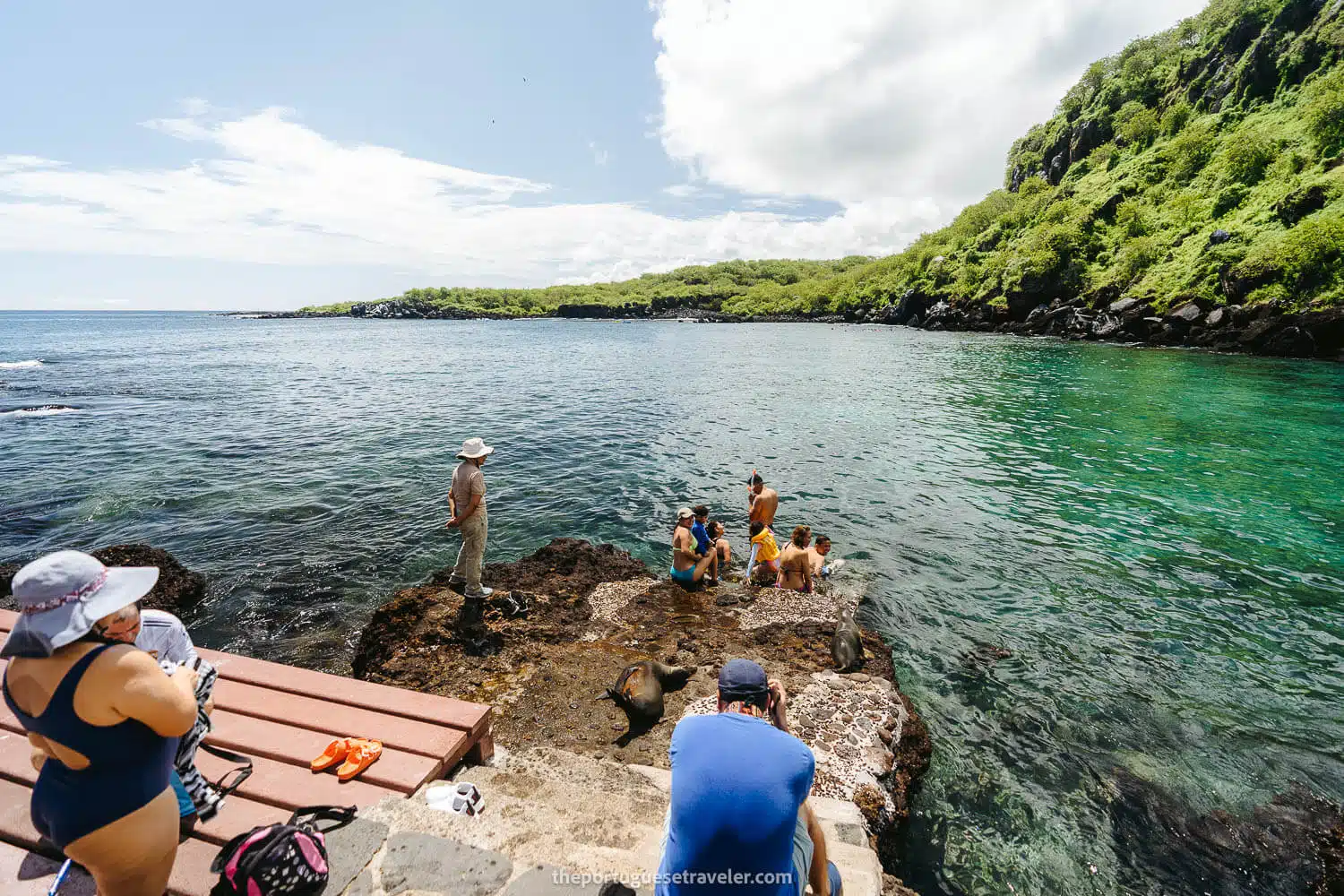
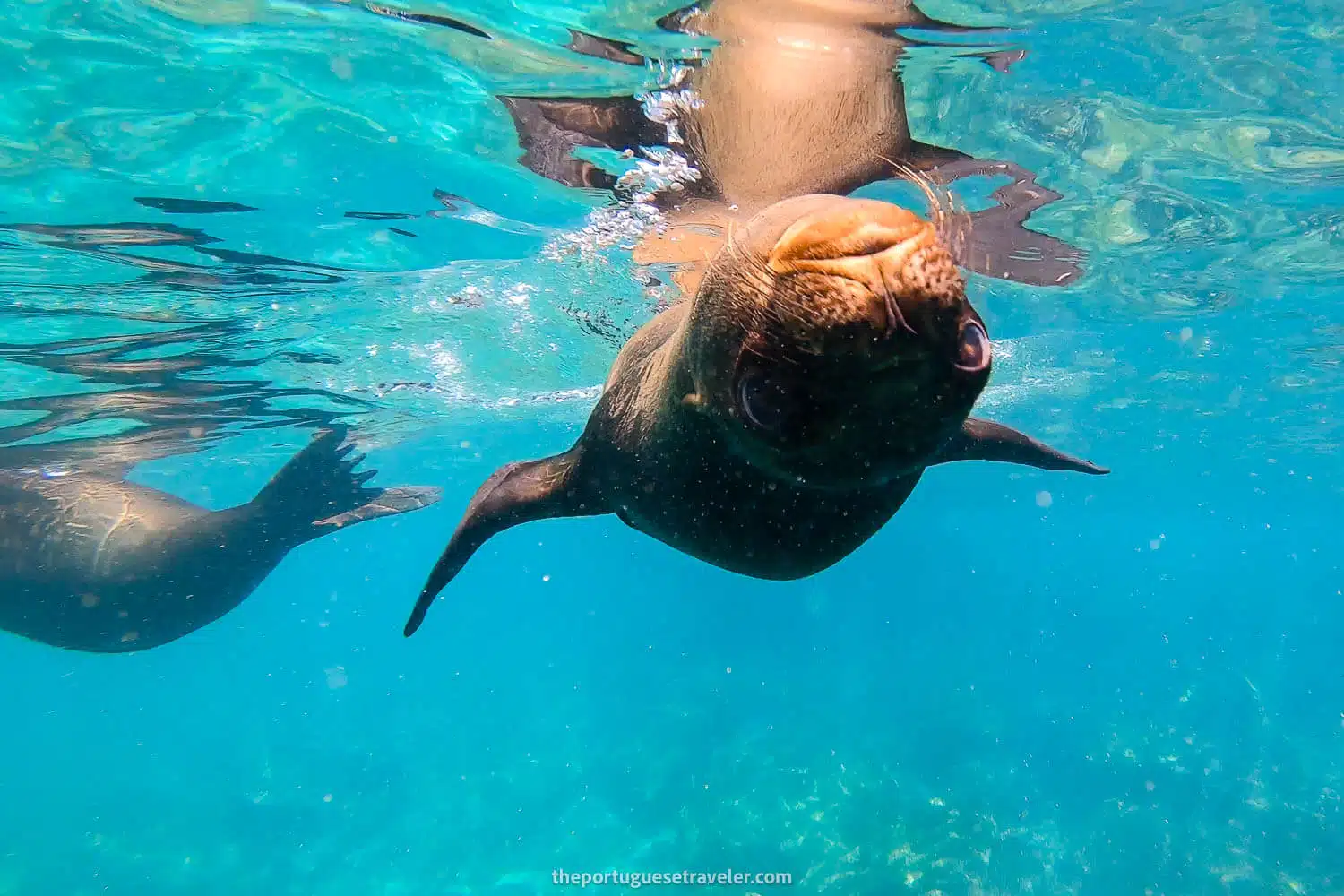
9. Hike Your Way to Playa Baquerizo Beach
The Playa Baquerizo beach hike is the only hike you can do on the island that is free and not part of a tour.
You can actually continue further to another beach but I would say for a normal hiker this is enough, especially on a hot sunny day.
It’s a nice long white sandy beach with almost nobody since it’s a bit hard to reach it, and you can snorkel in the water. I saw turtles many fish and a white-tip reef shark.
On the sand and in the water marine iguanas can also be found here.
View the full blog post here: CERRO TIJERETAS AND PLAYA BAQUERIZO HIKE
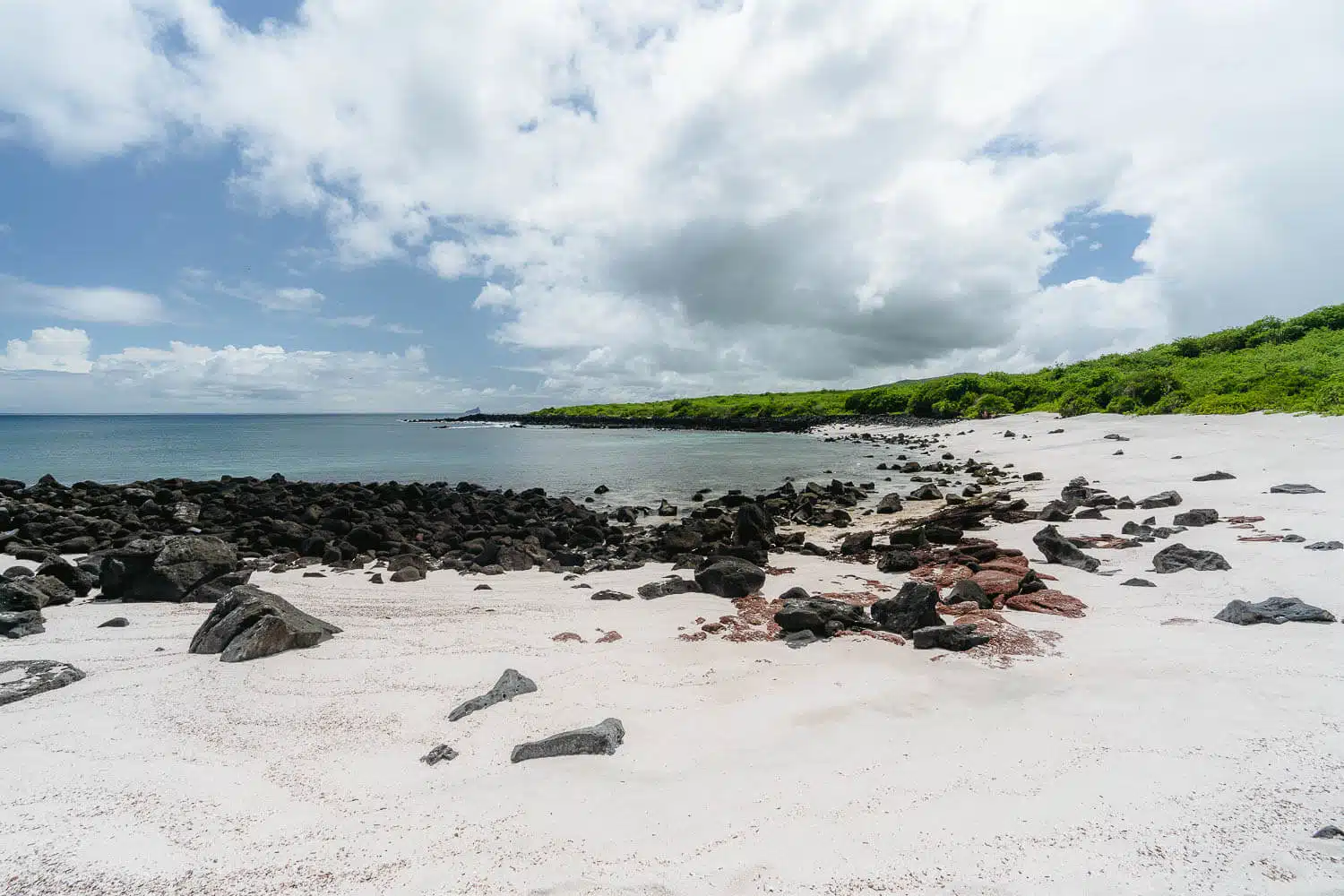
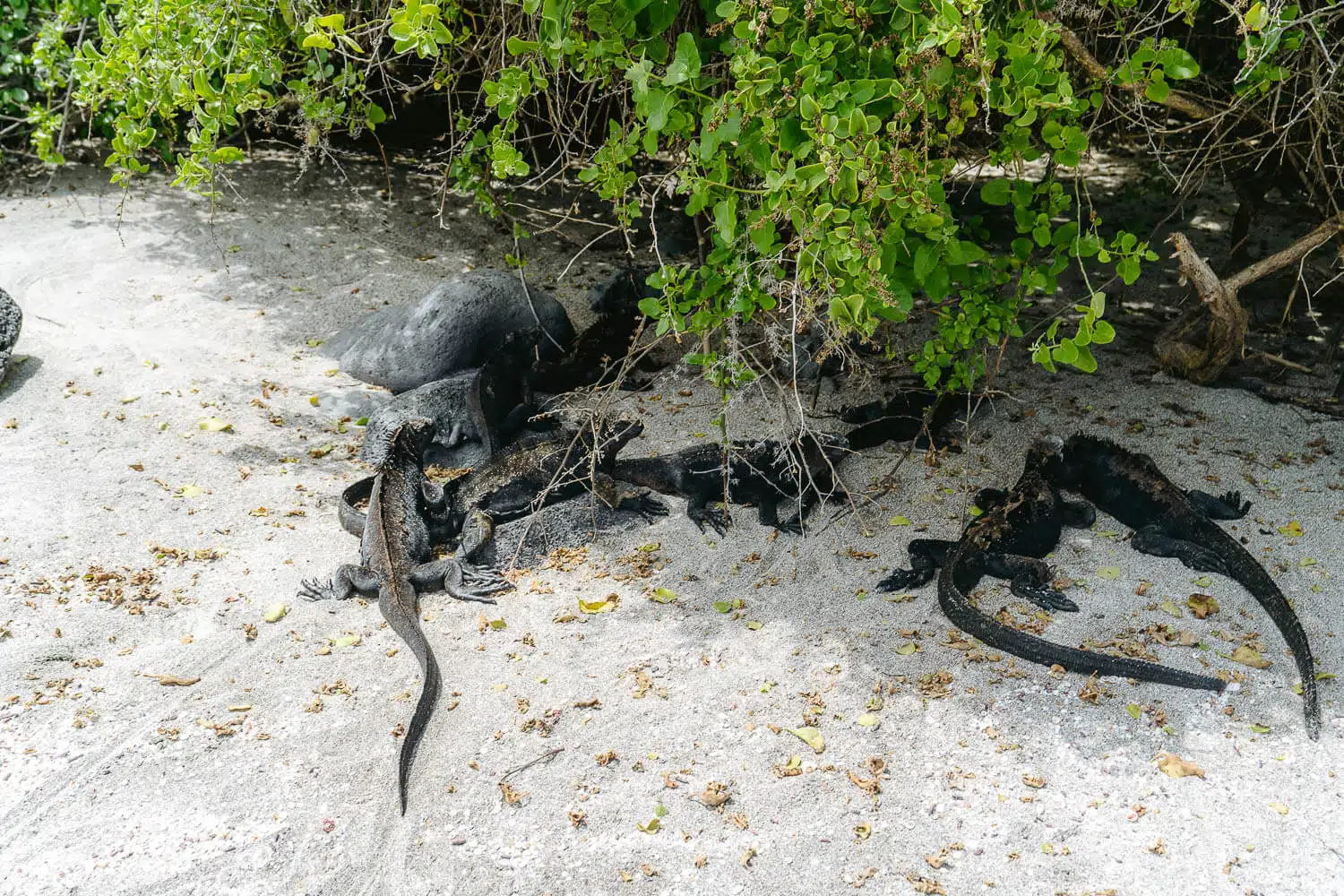
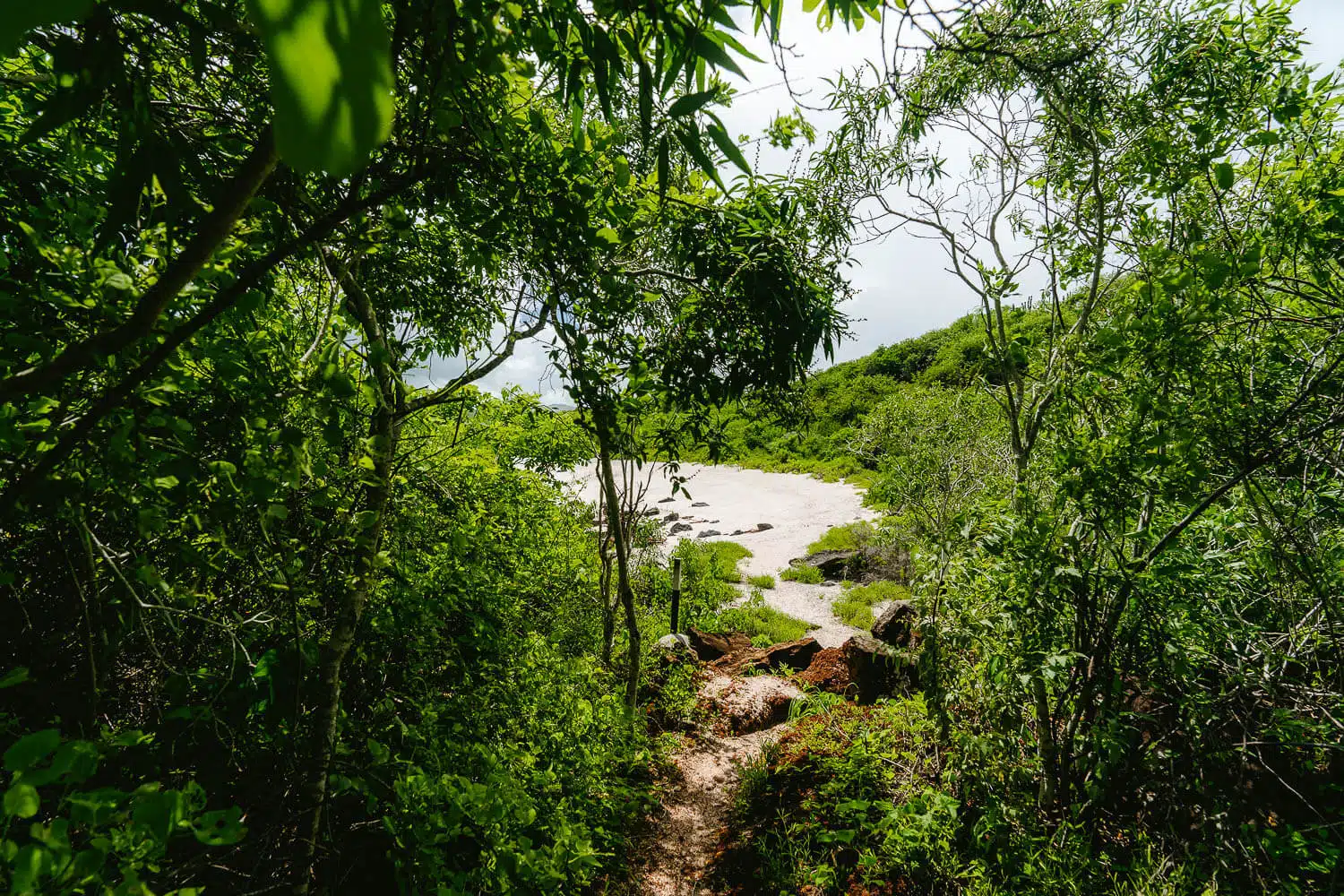
10. Discover The Island on a 360º Tour
This is without a doubt the most famous tour on the island.
If you are an adventurous soul and you like the water this is the tour for you. Here you will literally go on a boat ride around the entire island.
The highlights are Bahia Rosa Blanca beach (on the photo underneath), a huge and gorgeous white sandy beach with turquoise water, snorkeling in Kicker Rock, birdwatching at Punta Pitt, inland exploration, and many other stops.
It is definitely the most complete tour you can do on San Cristobal Island.
View the full blog post here: 360 TOUR IN SAN CRISTOBAL
Book your tour: San Cristobal Galapagos 360 (great reviews)
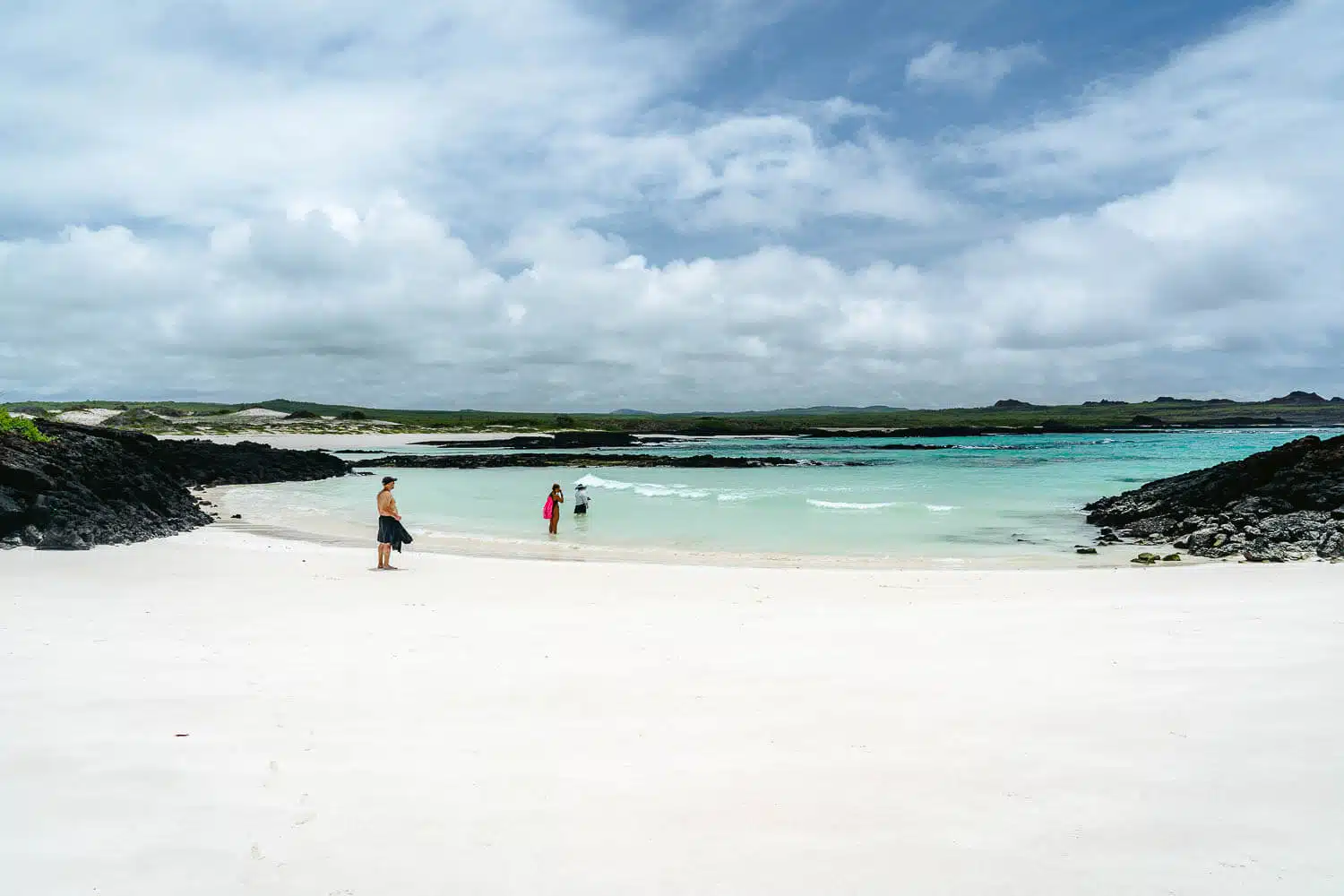
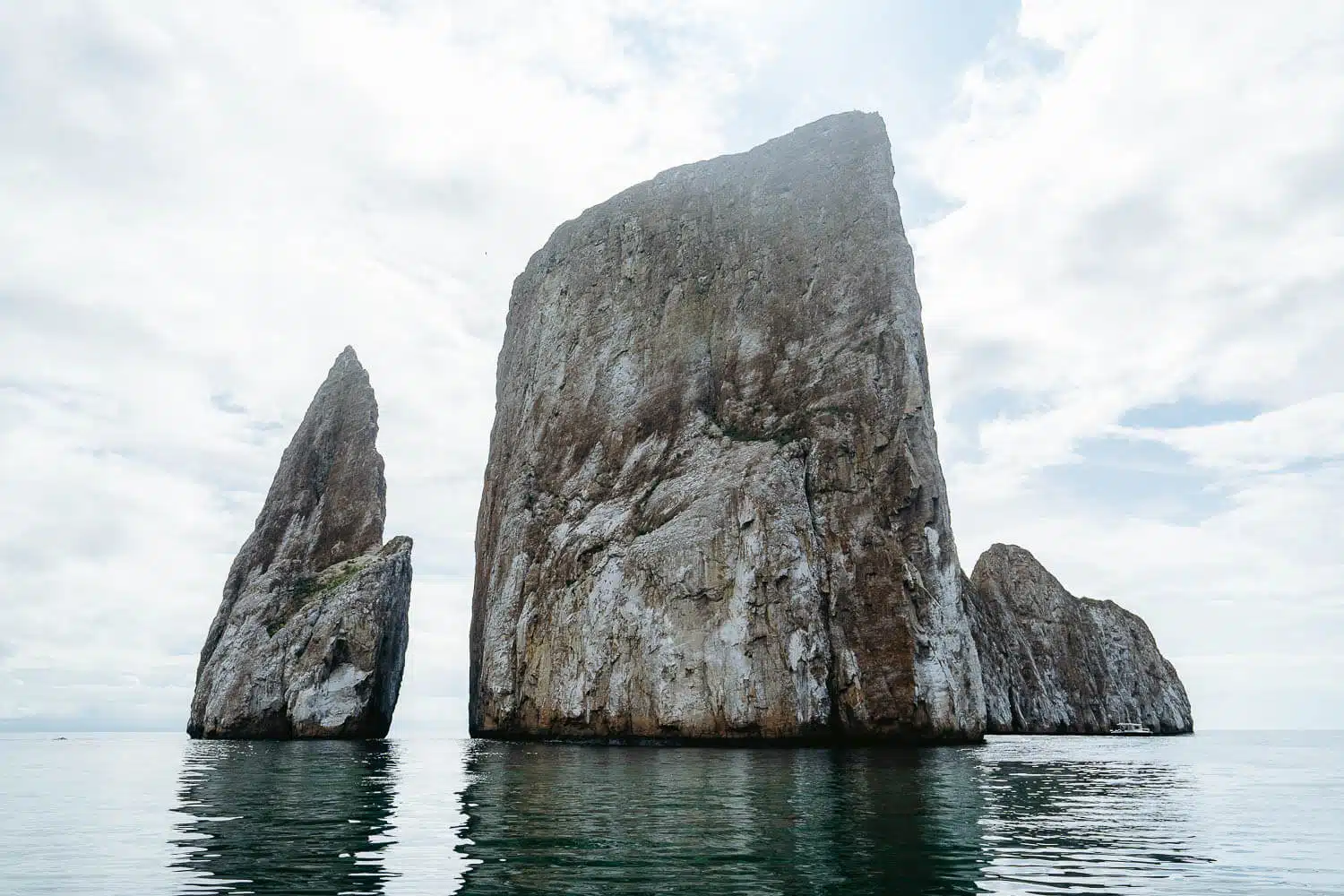
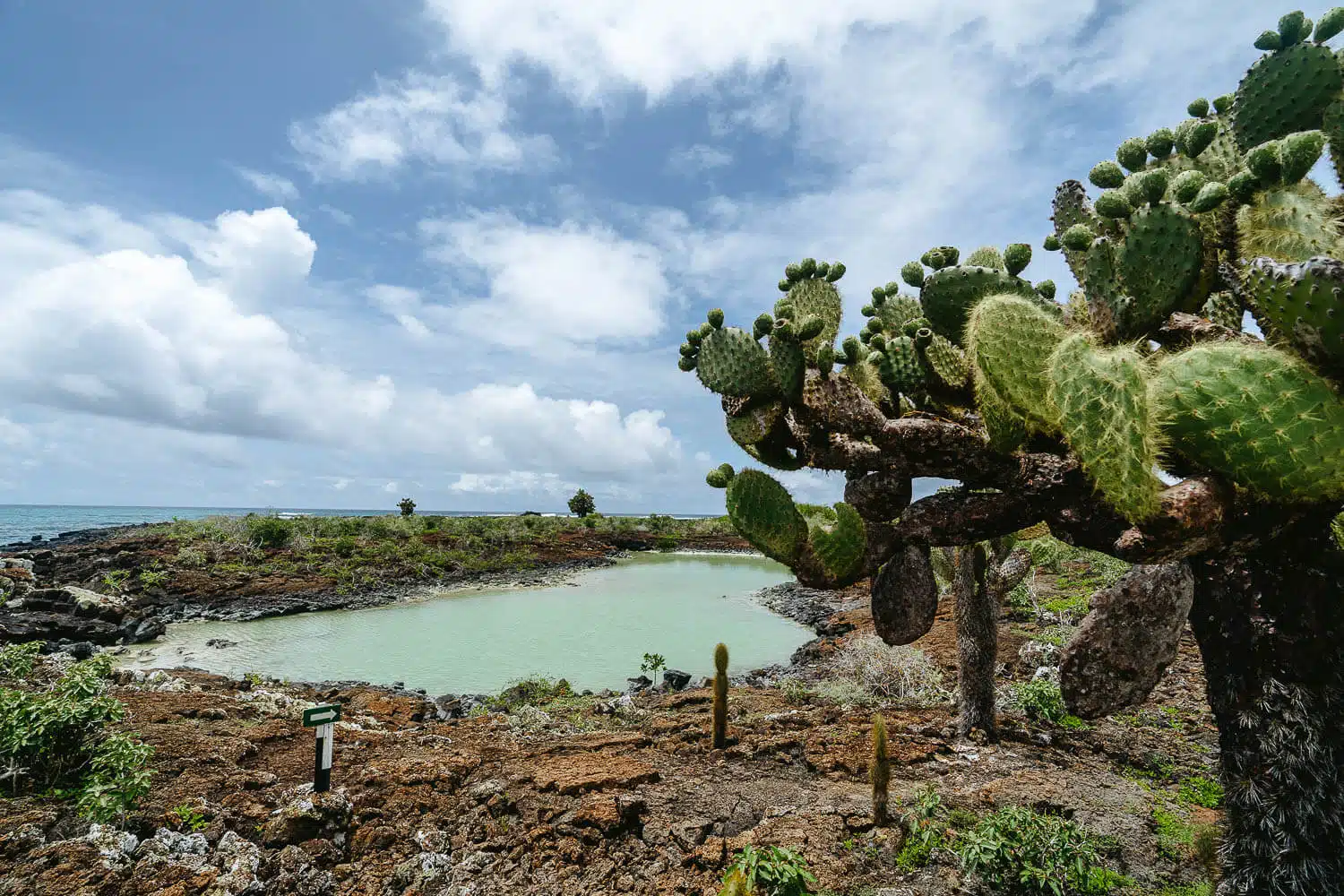
11. Opuntias (Giant Cacti) Garden Tour
This is a garden of giant cacti, deep in the highlands of San Cristobal island. On this tour, you can see many other types of fauna and flora endemic to the Galapagos and on the last stop you end up swimming at the beach.
I found this tour operator “Agencia Turística Huellas de Darwin” that comes here on a mountain bike tour, with a naturalist guide and it even includes a lunch box.
This is one of the few tours I, unfortunately, didn’t have time to do but noted on my map.
If you do the tour with them I’d love to hear some feedback from you down in the comments, thanks!
To book this tour contact them at:
12. San Cristobal's Downtown
It comes without saying that the downtown of Puerto Baquerizo Moreno’s, San Cristobal’s “capital” is an amazing place to walk around and be amazed.
You will find literally, everywhere you go dozens of sea lions chilling in front of you, on benches, on the beach, inside stores, and in the middle of the road. They own the place.
There are also some other special attractions like the Charles Darwin statue with its ship The Beagle, many cafes and restaurants, and a ton of things to do.
All the tours and activities start from here, and you will for sure love it. It’s not a busy touristy town like Puerto Ayora on Santa Cruz island, it’s more unique and special.
For a reason, this island is called by the locals “La Isla Bonita” – “The cute island”. It’s adorable and I sure miss it and can’t wait to go back.
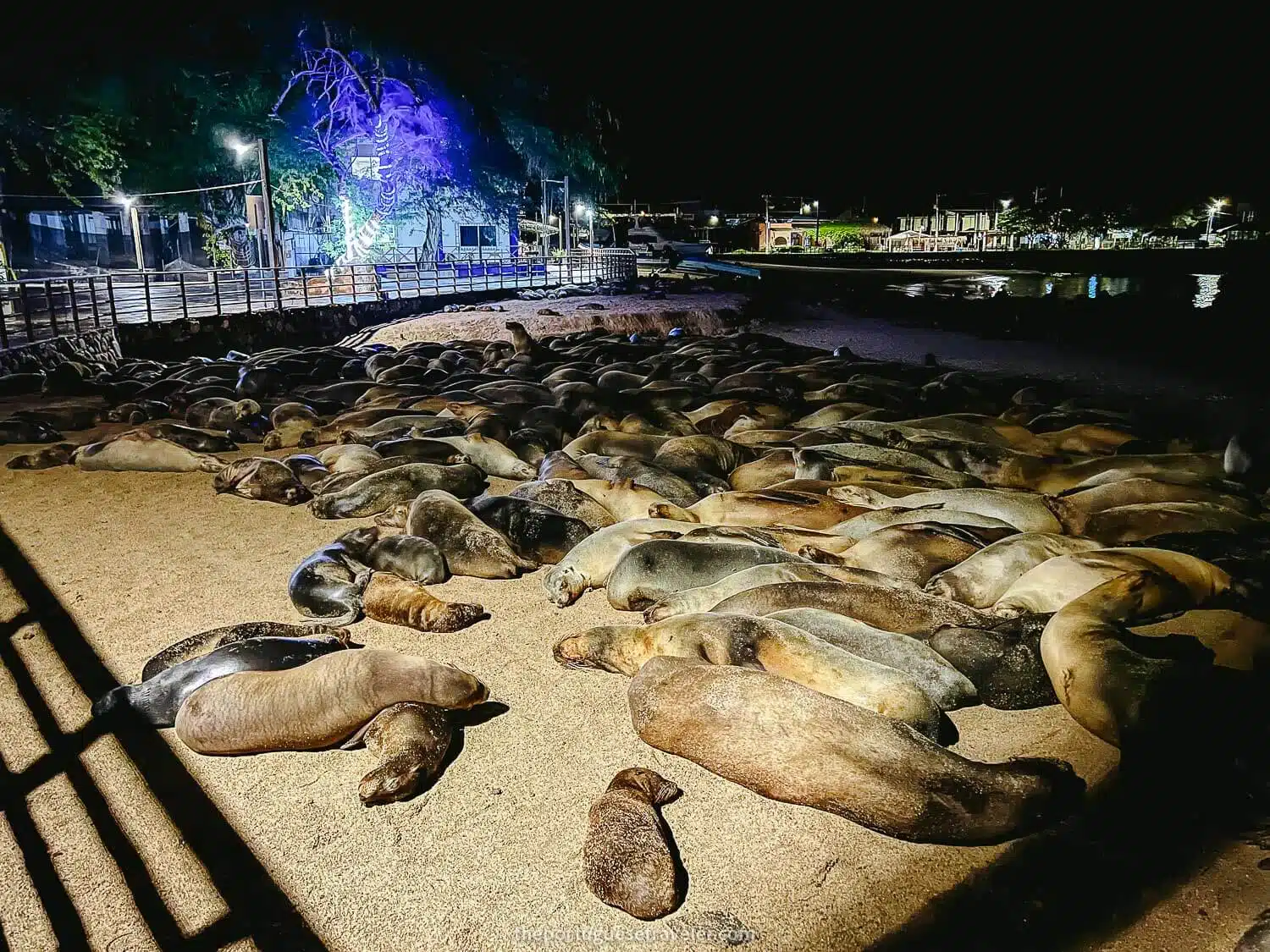
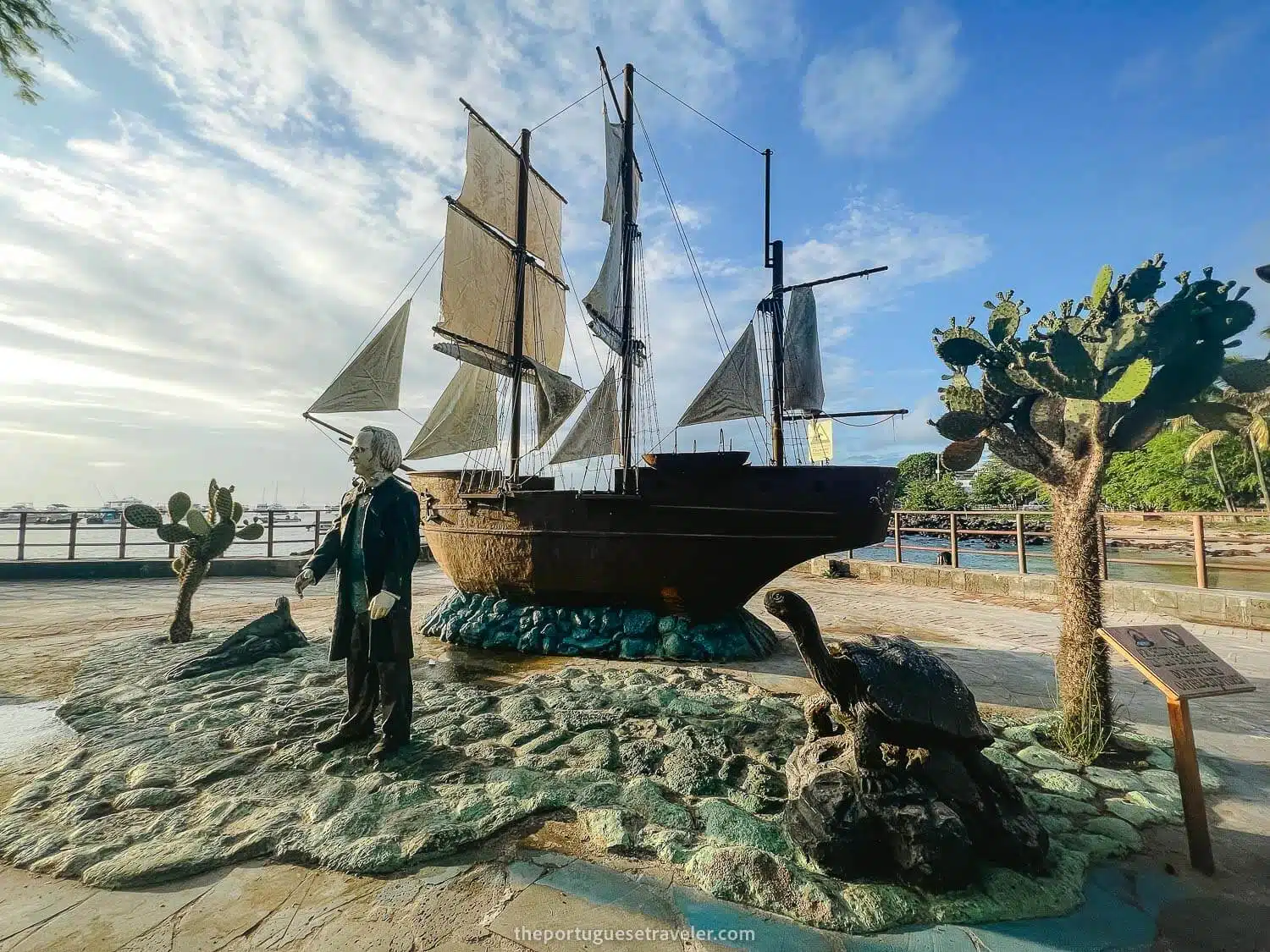
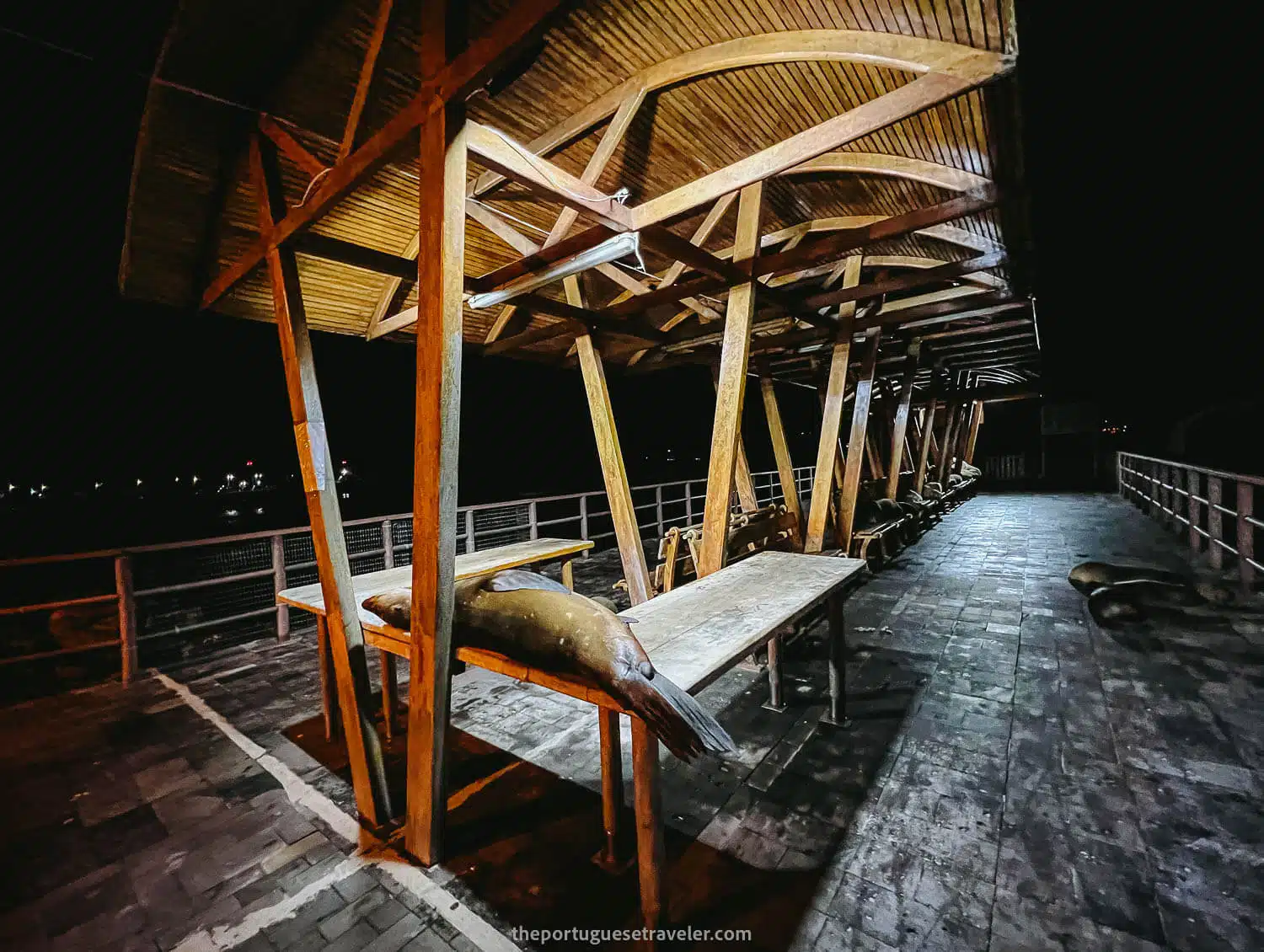
13. La Loberia Beach
This was the first activity I did on the island, it’s a long free beach full of sea lions and marine iguanas.
When I went into the water a baby sea lion started playing with me, we raced together and I saw some beautiful turtles swimming around.
There is a National Park guard taking care of the beach and some minor facilities such as the guard’s tower where you can hide if it starts raining.
You need to take a taxi to reach it or rent a bicycle and cycle your way there. I did a whole post about it and added the numbers of some taxi drivers you can call to take you there.
View the full blog post here: LA LOBERIA BEACH IN SAN CRISTOBAL
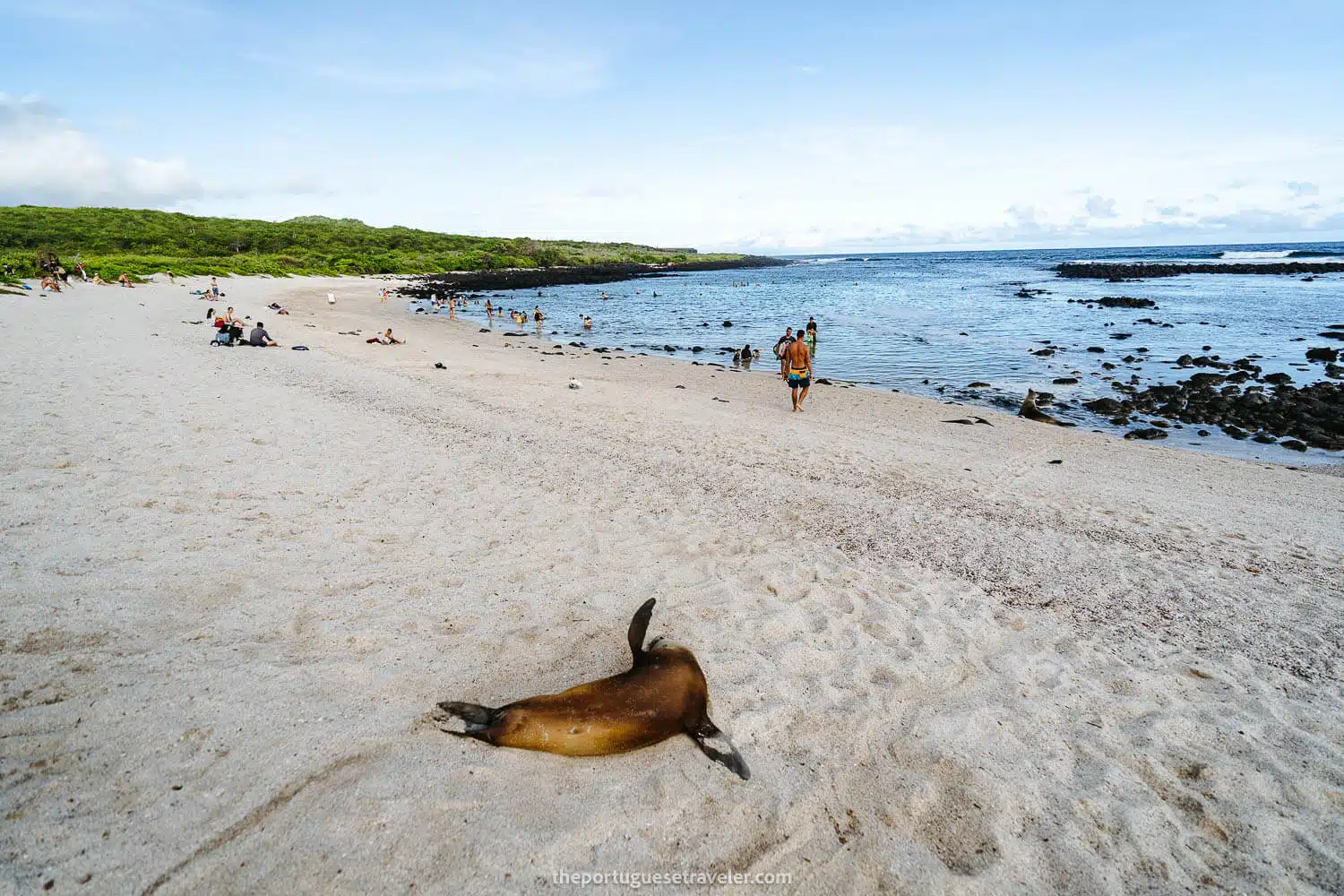
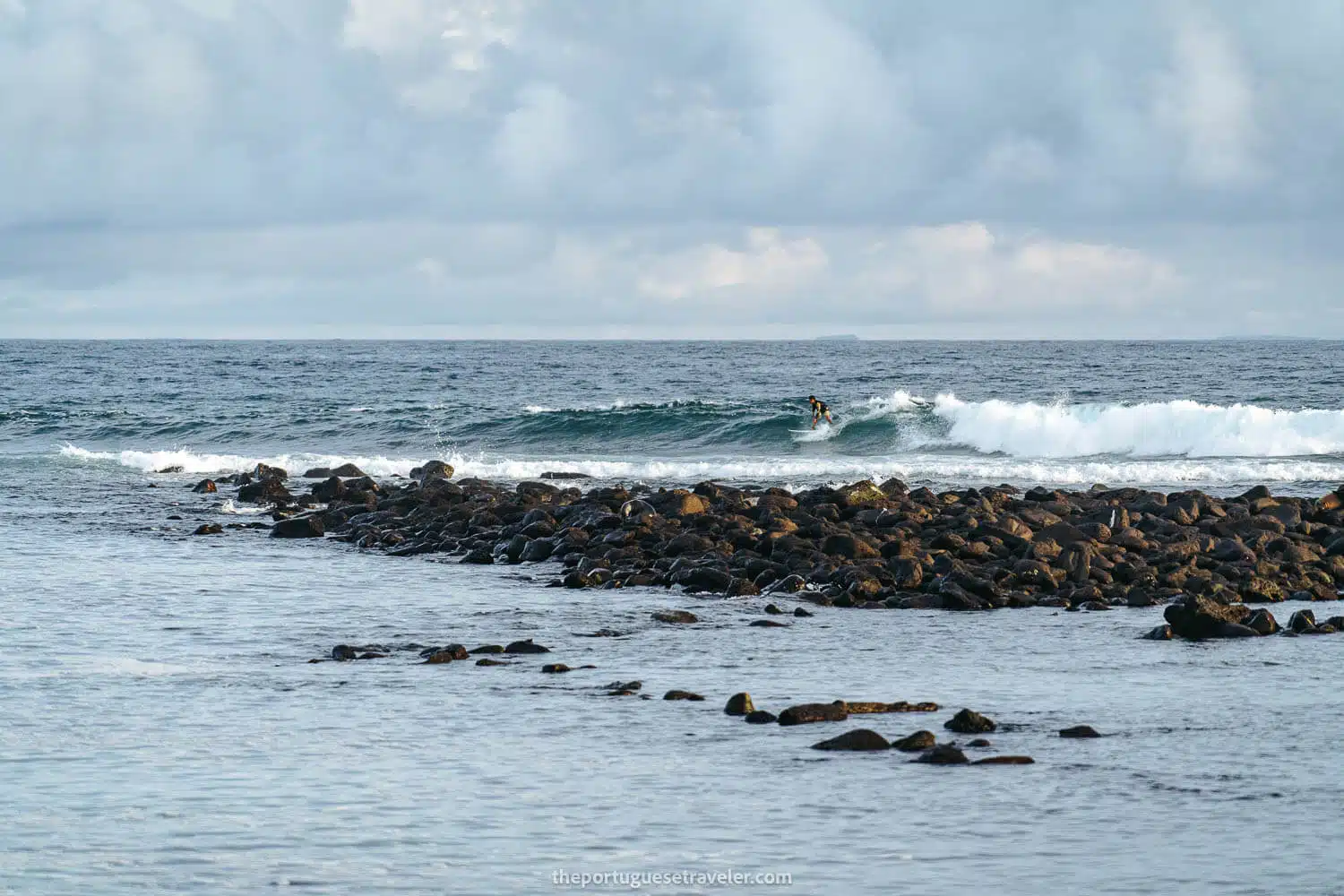
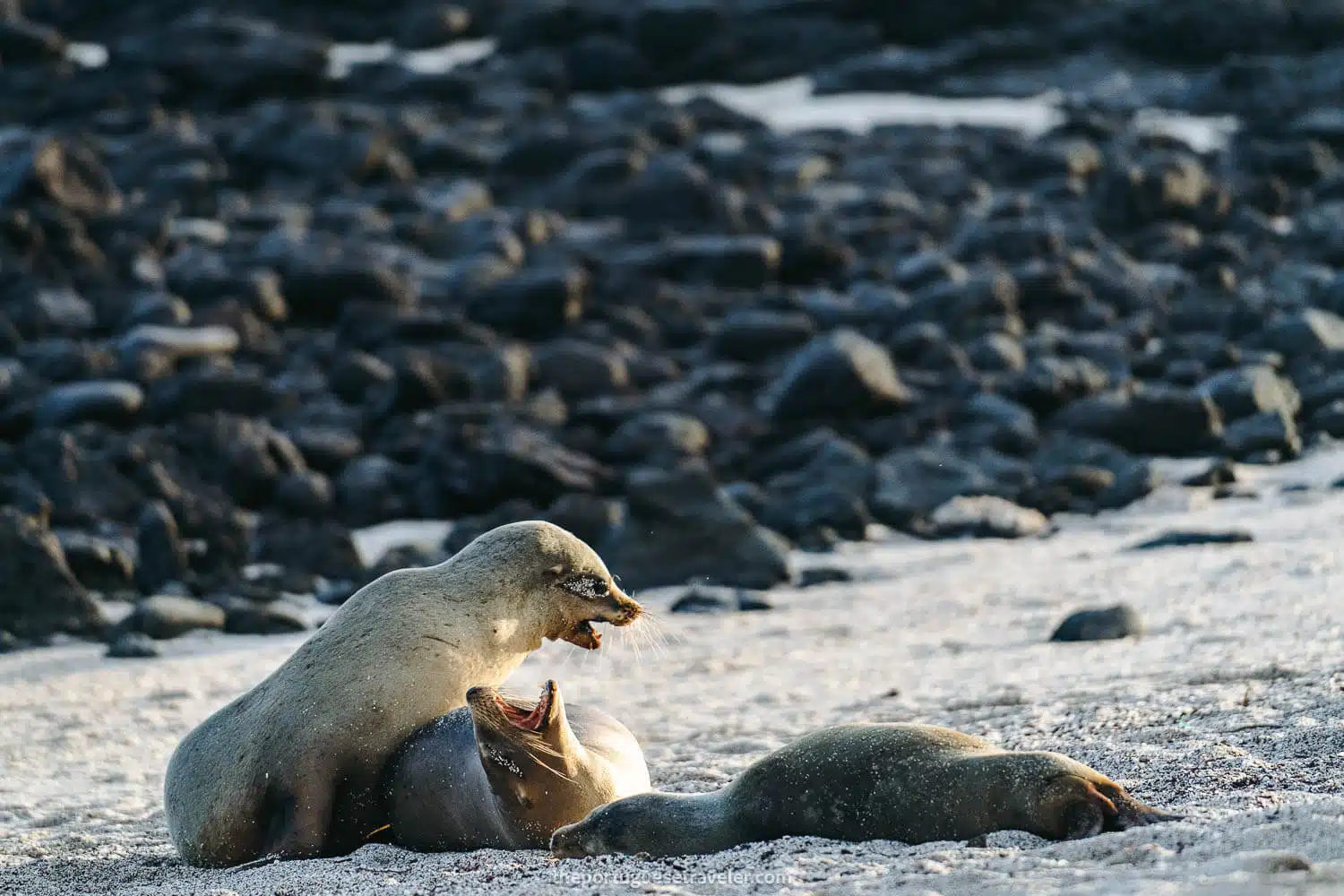
14. Punta Carola Beach
This is for me the best beach in San Cristobal.
It’s free, it’s long and beautiful, you can relax, there are not many people and its perfect location allows you to watch amazing sunsets from there.
To reach it you have to walk perhaps 15 mins from Puerto Baquerizo Moreno’s downtown.
You can surf here, it’s actually one of the best places to do it on the island and you can also swim with sea lions and marine iguanas if you’re lucky.
View the full blog post here: PUNTA CAROLA BEACH IN SAN CRISTOBAL
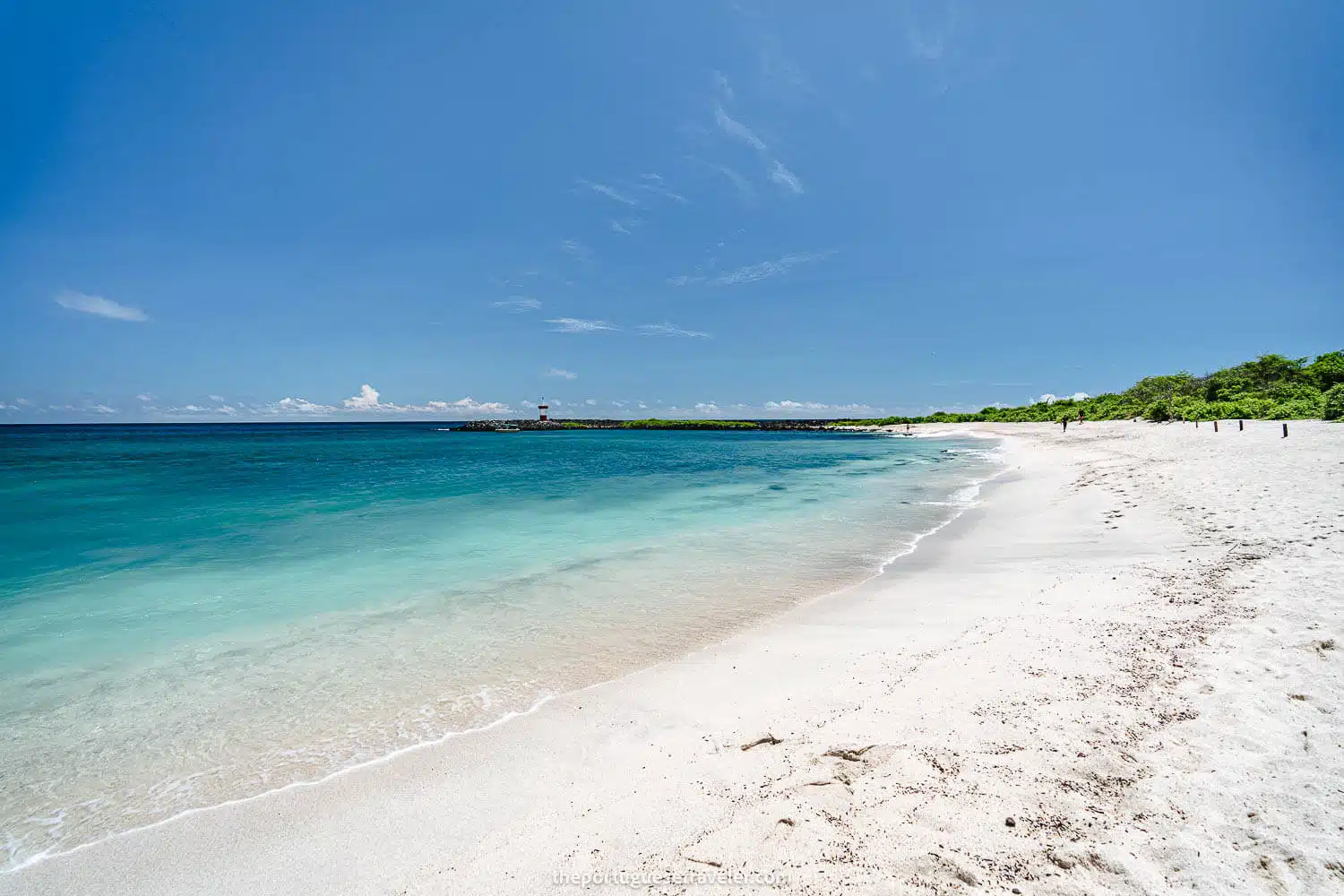
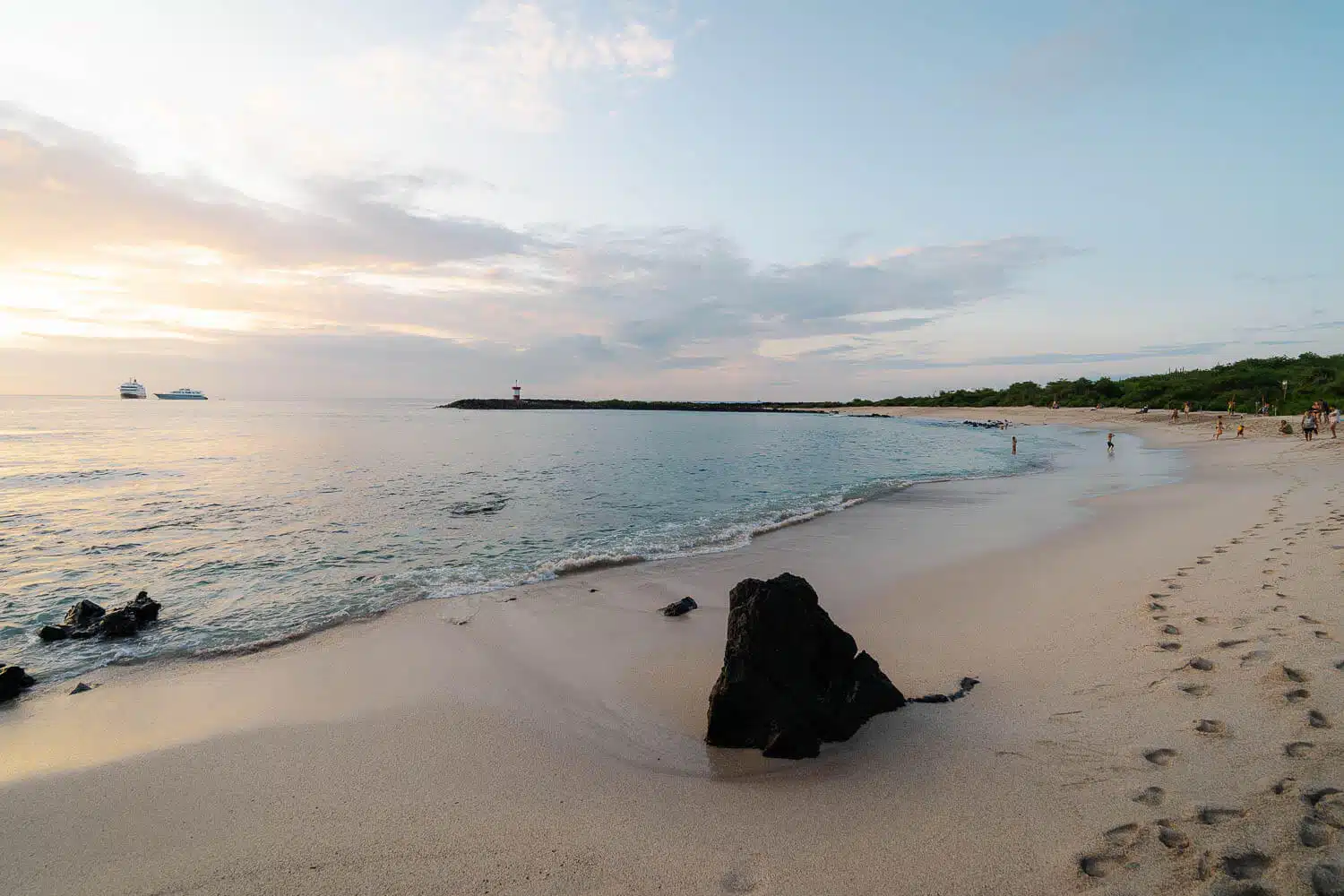
15. Kayak From Playa Mann to Playa Ochoa
If you like water sports and adventure you might like this tour. It’s a 5-6 hours tour on the water.
This tour is provided by the same company that does the Opuntias Garden tour “Agencia Turística Huellas de Darwin”.
If you do the tour with them I’d love to hear some feedback from you down in the comments, thanks!
To book this tour contact them at:
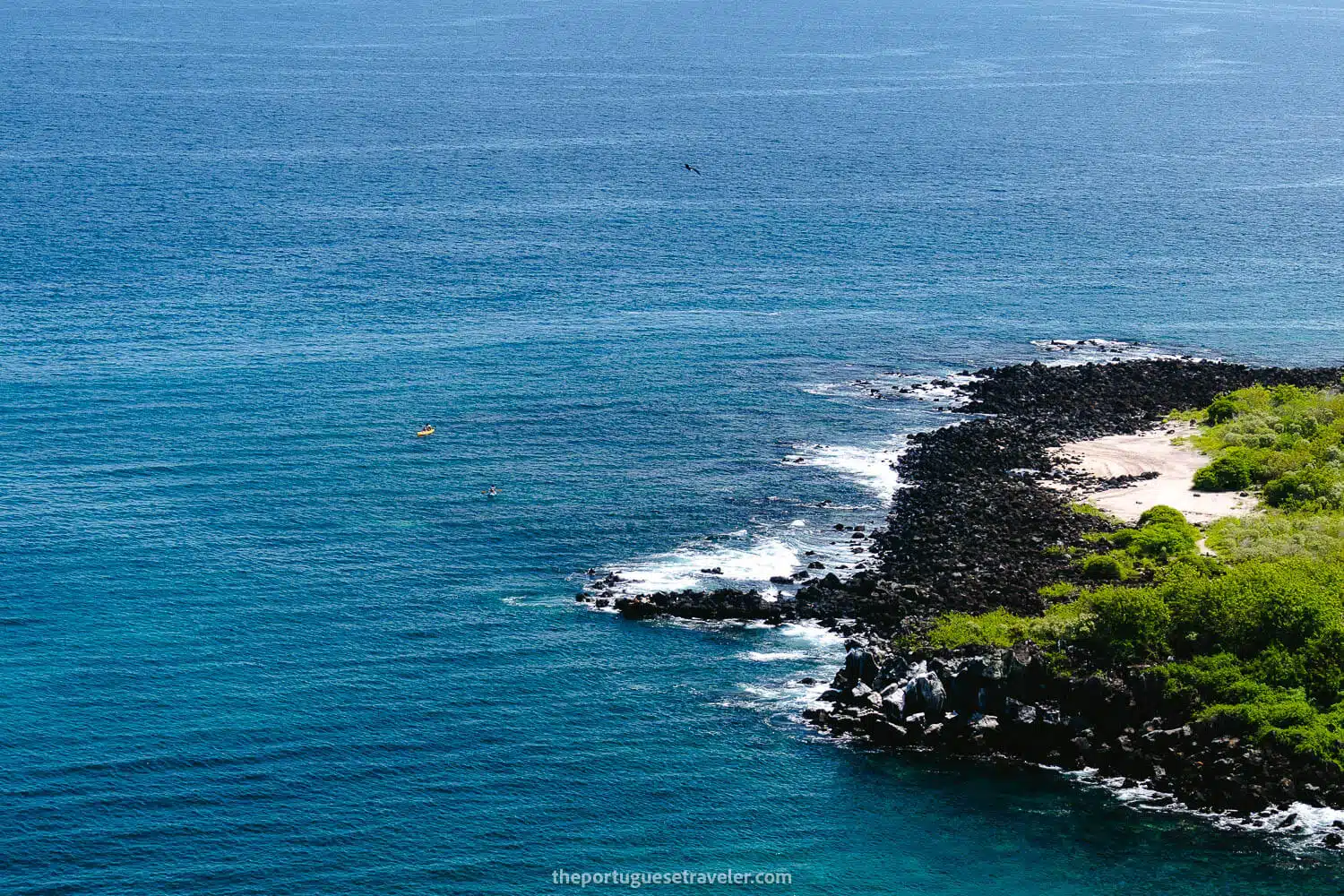
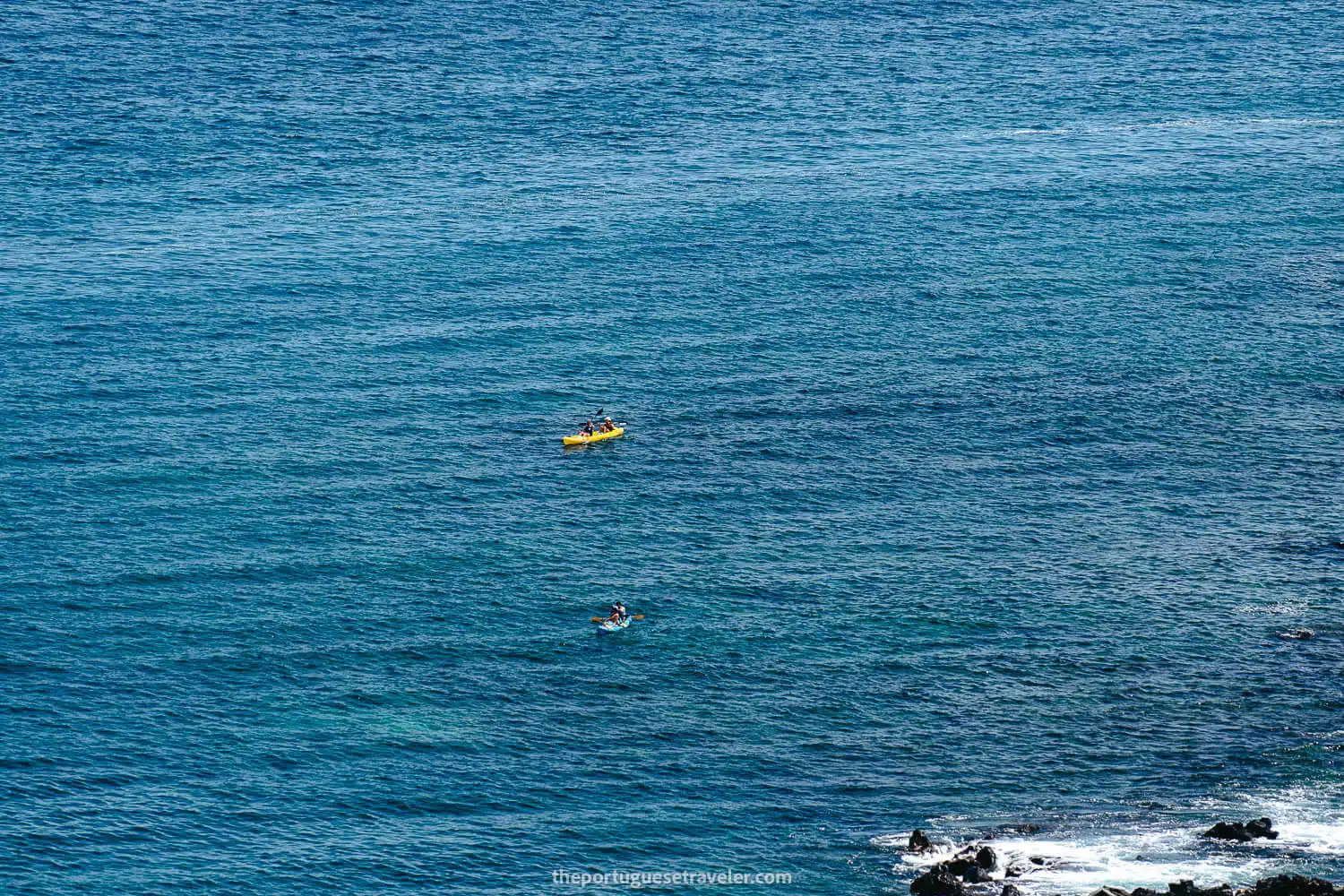
16. Playa Mann Beach
If you have a group of friends or you are with your family and don’t want to be just with nature, this is the place to come.
There are kiosks where you can get some snacks and drinks, you can play music on the beach, watch the sunset and relax next to some sea lions.
This beach is literally 10 minutes away from downtown and it’s also on the way to Punta Carola beach, so if you find it too busy you have a close-by alternative.
View the full blog post here: PLAYA MANN BEACH IN SAN CRISTOBAL
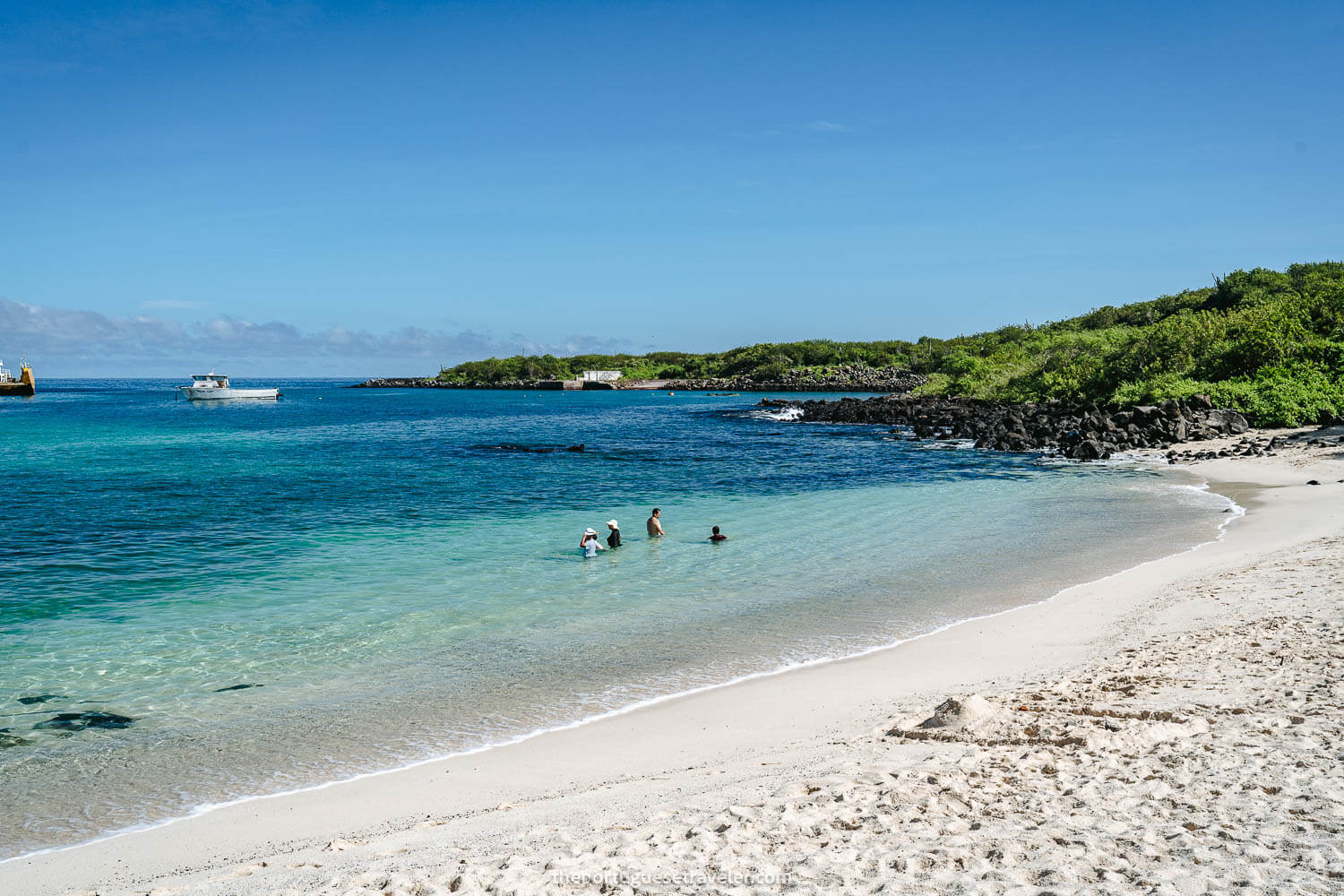
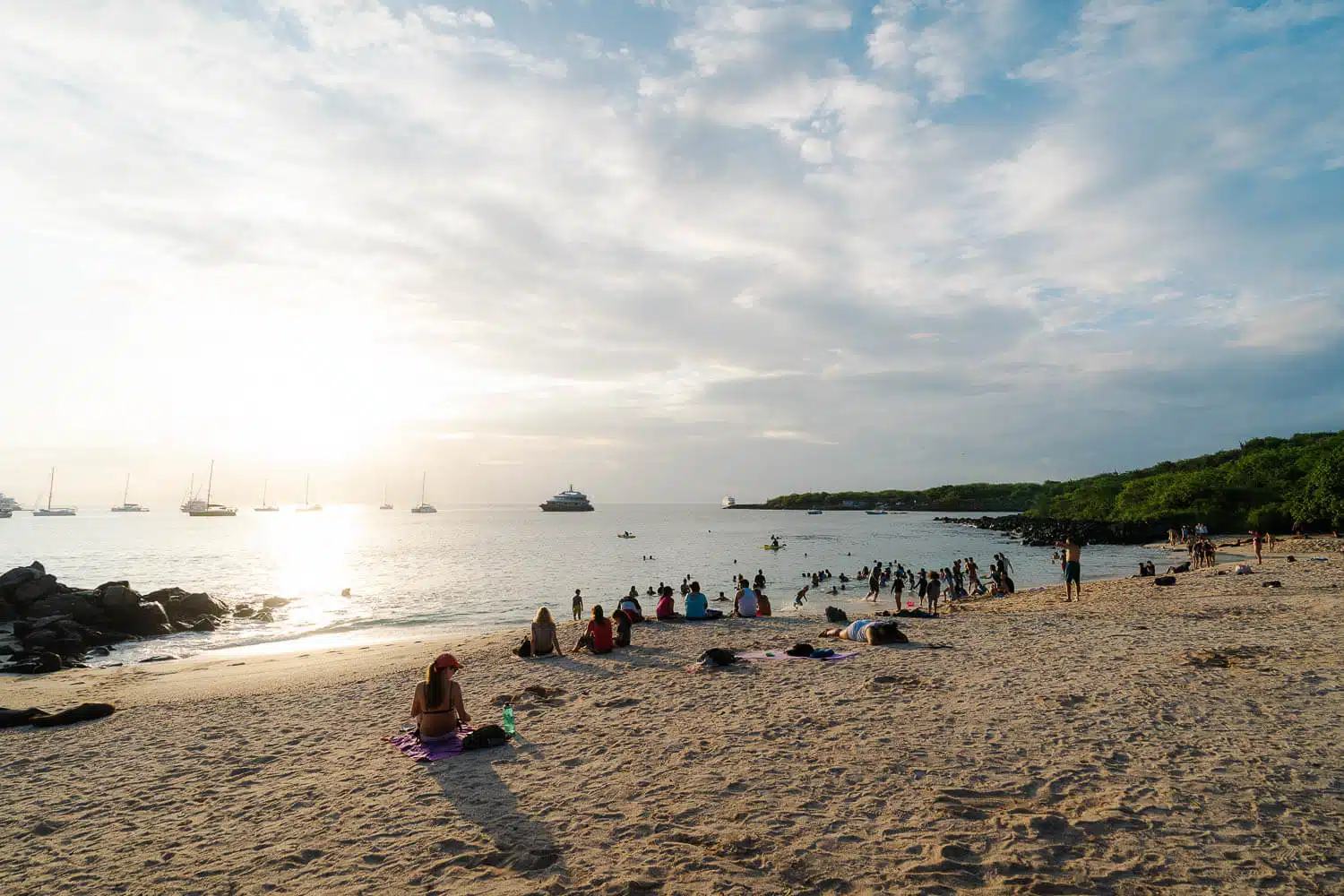
17. Coffee Tour at Cafetal El Trinar
This is probably one of the coolest and tastier activities you can do in San Cristobal.
It’s not advertised anywhere and it’s a big surprise for many people.
Yes, there is coffee produced solely in San Cristobal, and it’s an amazing Arábica coffee.
Once I drank my first coffee on this island, I was mind blown, and I’m a specialty coffee fan.
To book this tour contact them at:
18. Surf in San Cristobal
San Cristobal is the best island in the Galapagos for surfing and it has 8 different spots for you to do it.
I don’t usually surf but I was with a friend that did and I wrote an article where you can see which beaches are best for surfing and for all the other activities.
View the full blog post here: 5 BEST BEACHES IN SAN CRISTOBAL

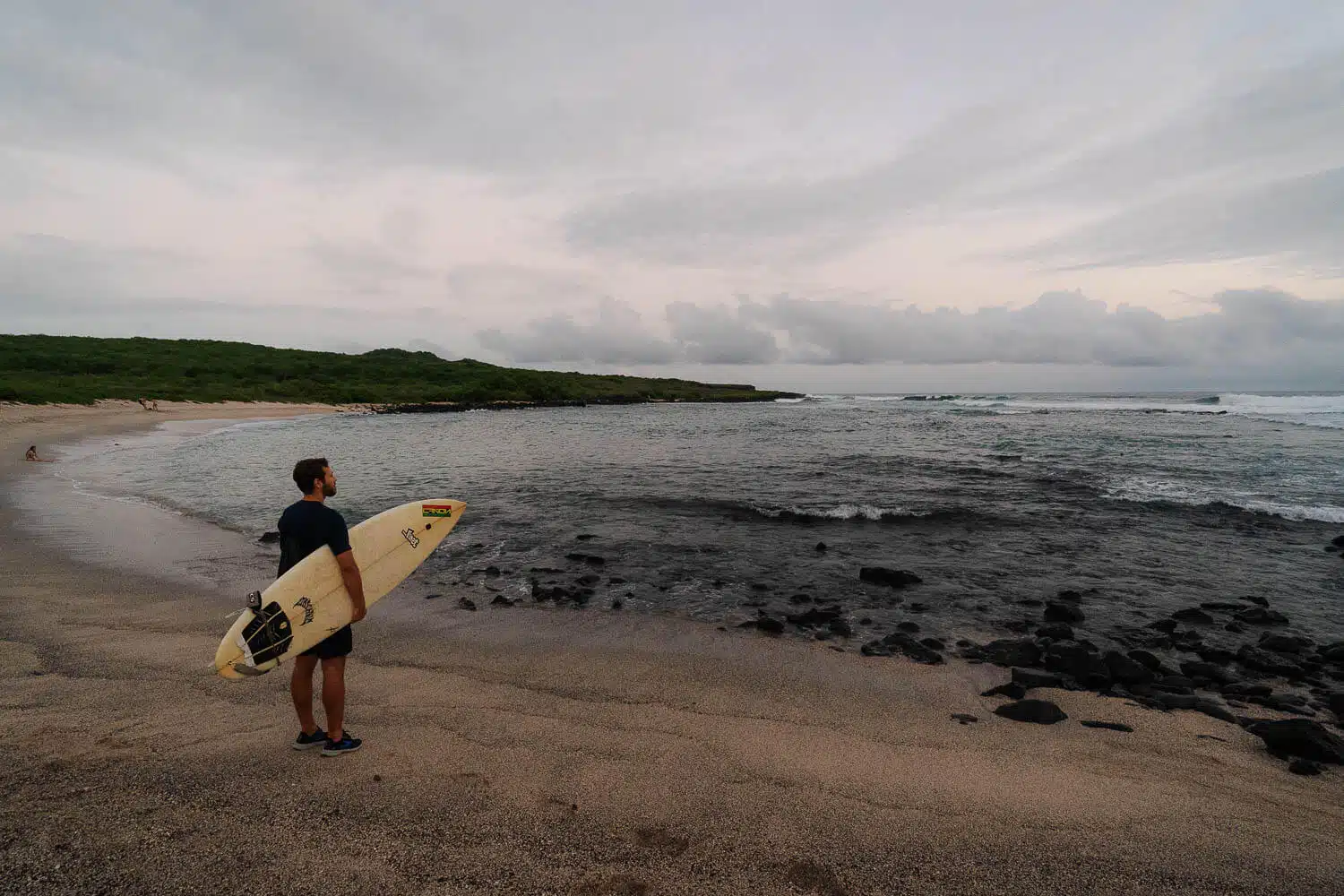
19. Española Island - Day Trip
Española Island is home to many endemic species in the Galapagos. They only exist on this island.
It’s a day tour and it’s the only big island (not counting Santa Cruz island) you can visit on a day trip from San Cristobal.
Here you can find a special marine iguana with green and red coloration, a waved albatross colony (it’s their only breeding site in the world), the Española mockingbird, the Española lava lizard, sea lions, blue-footed boobies, and many other unique species.
There is also a part of the tour where you snorkel or dive in Gardner Islet and find many underwater wonders.
View the full blog post here: ESPAÑOLA ISLAND | FULL DAY TOUR
To book this tour: Check the local company Wreck Bay’s website, or book it online on Viator with any of the tours underneath:
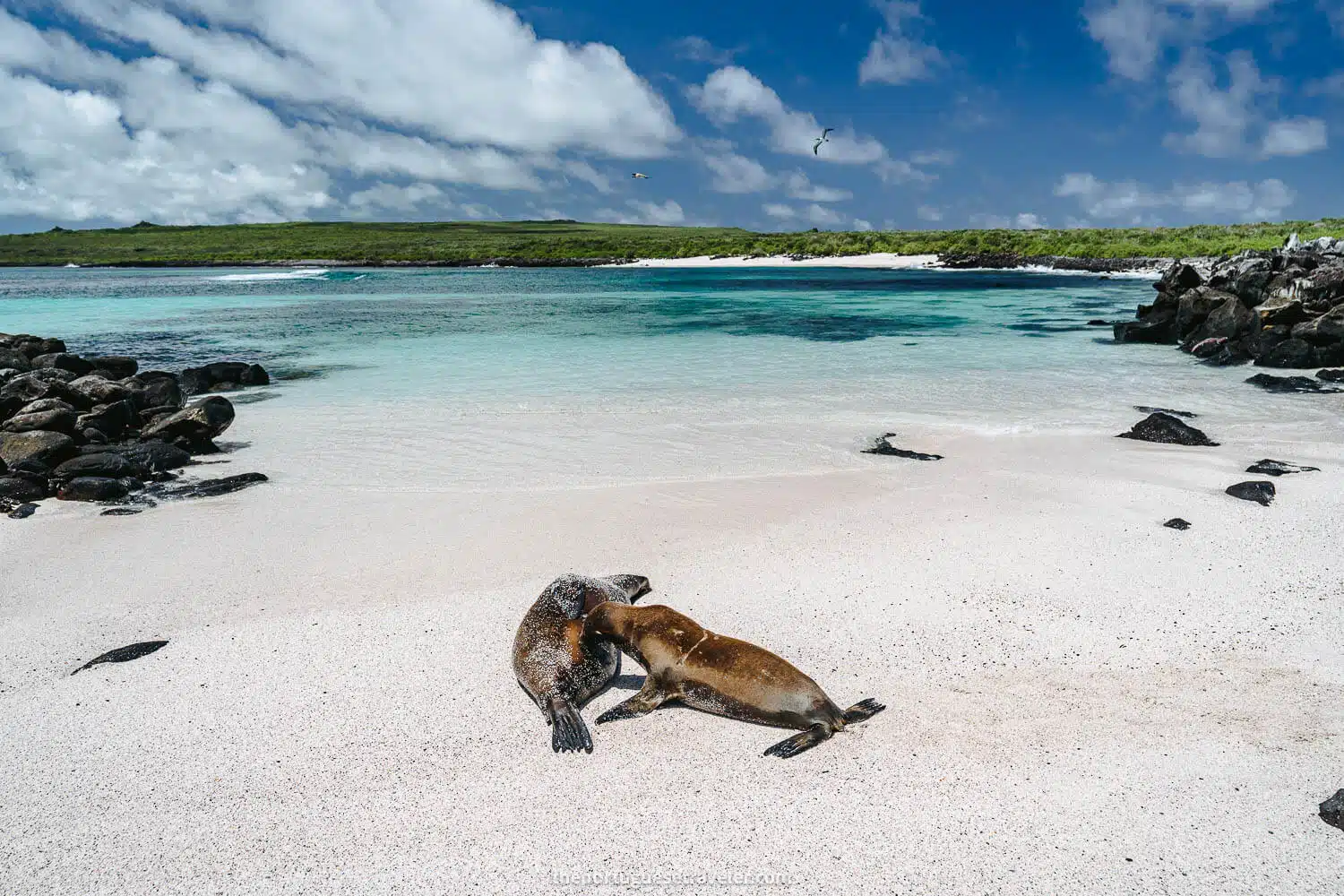
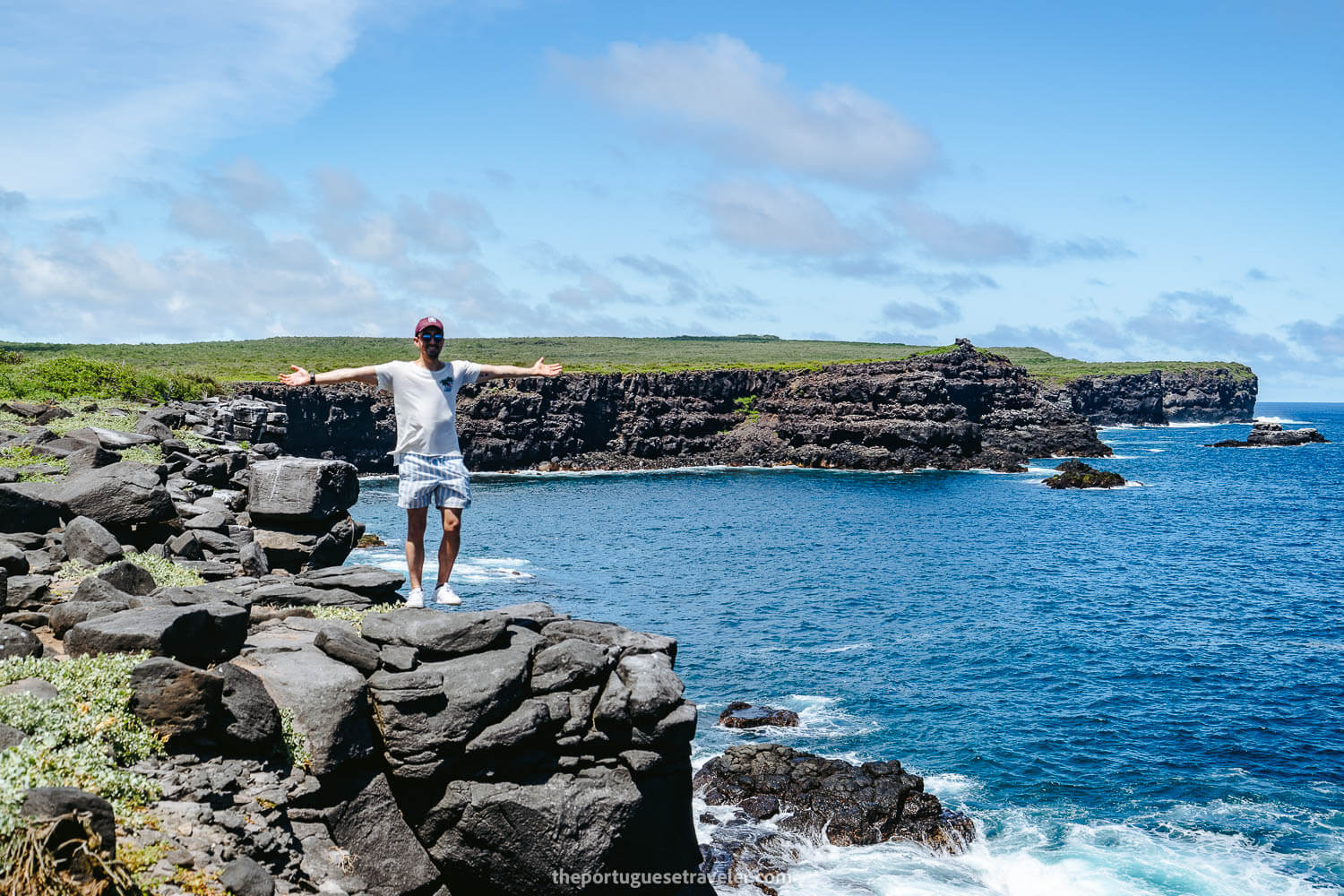
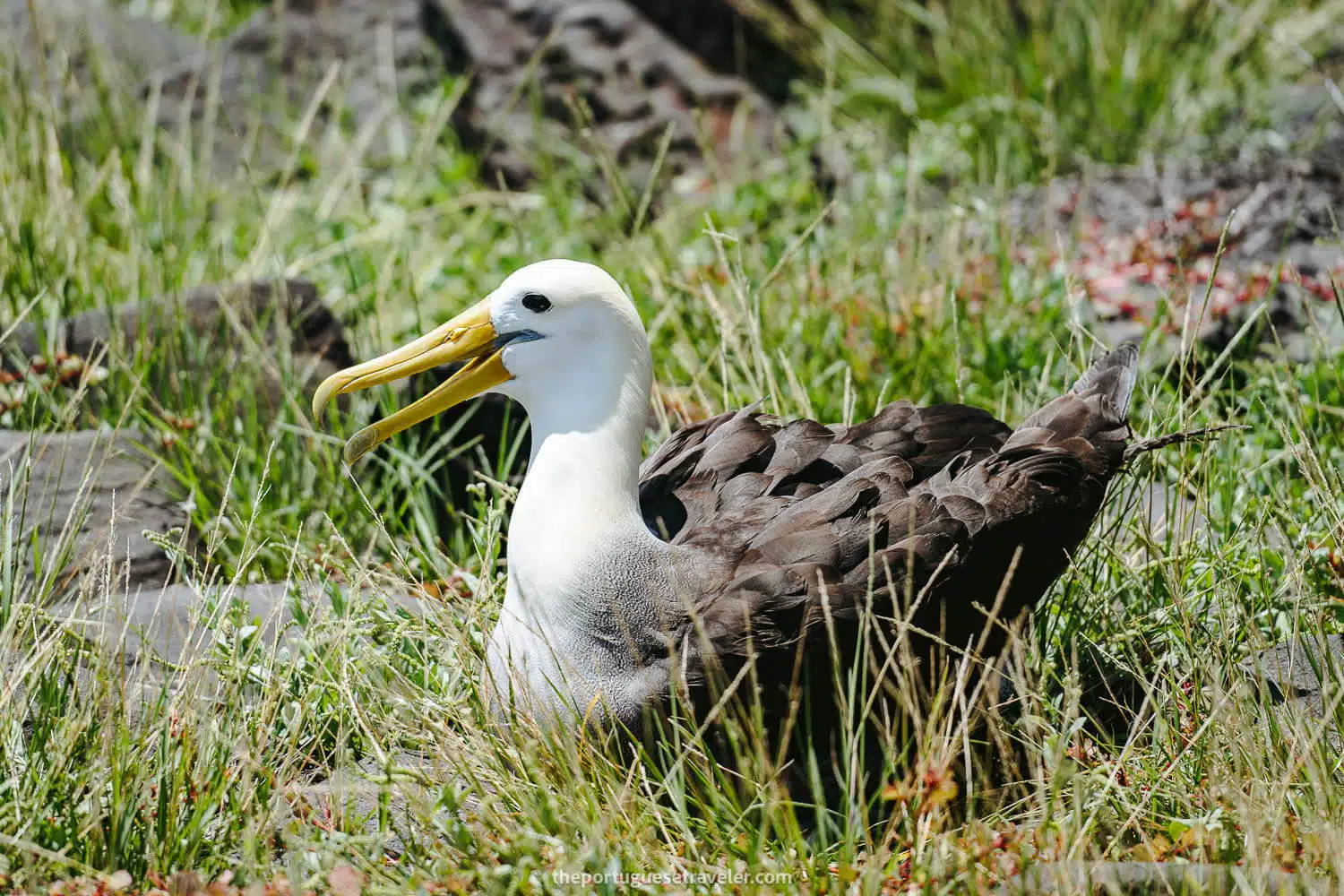
20. Isla Lobos Island - Half Day Trip
Isla Lobos island tour is a mixed tour, both on water and on land.
You have a 1-hour stroll on the island where you can spot sea lions, frigate birds, and blue-footed boobies and also do some snorkeling and find rays and turtles. In the end, you will go to Playa Ochoa for some beach time.
I visited Isla Lobos island on the way to Kicker Rock for my first dive in San Cristóbal. Here is where you do the test dive to check your skills.
To book this tour: Check the local company Planet Ocean Galapagos website, or book it online on Viator here: Tour Lobos Island from San Cristobal
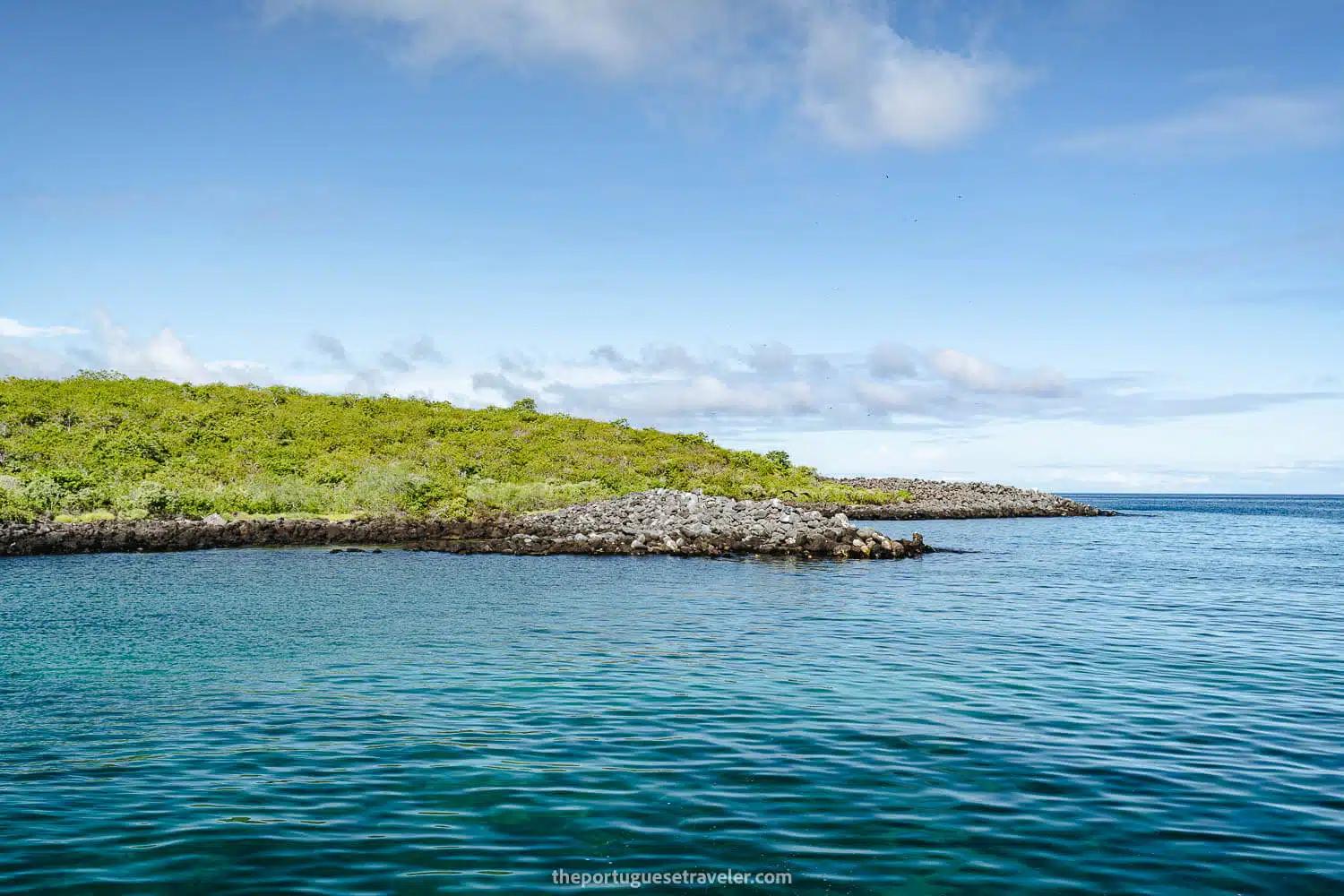
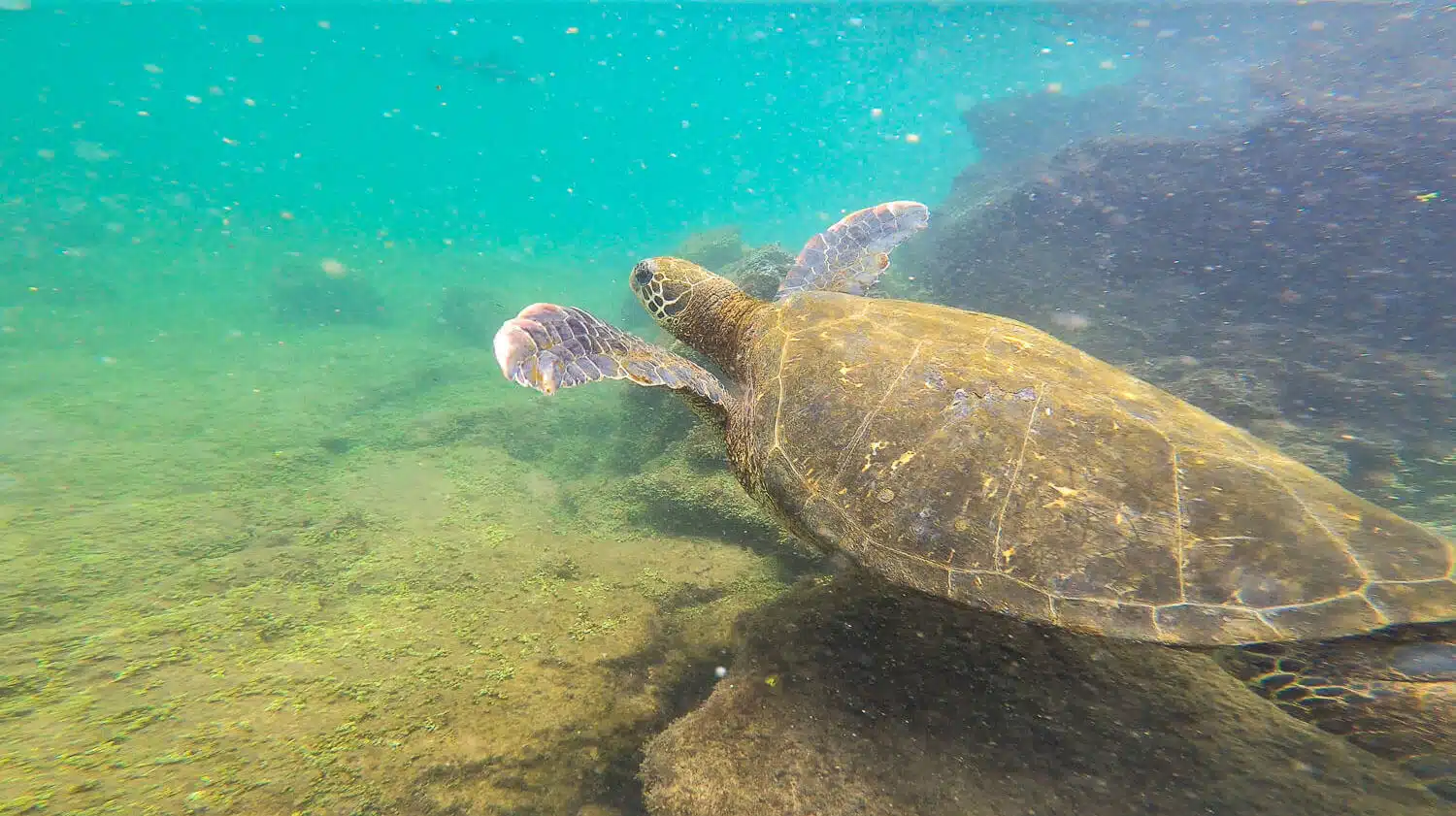
21. Dive/Snorkel in Kicker Rock
Diving in Kicker Rock is the most famous activity in the Galapagos for divers from all around the world.
Here, if you’re lucky and you’ve good visibility you can find dozens of hammerhead sharks, eagle and manta rays, Galapagos sharks, turtles, everything literally.
If you’re not a diver, you can go for a cheaper price on the same boat as your friends and snorkel here.
The snorkeling group on my tour actually saw more things than we did. So it’s a spectacular tour in both ways.
View the full blog post here: DIVING IN KICKER ROCK
Book your tour: San Cristobal Galapagos 360 – Snorkeling Tour (Kicker Rock) – (it’s not the actual Kicker Rock Tour, it’s the 360 Tour, but it stops at Kicker Rock for Snorkeling)
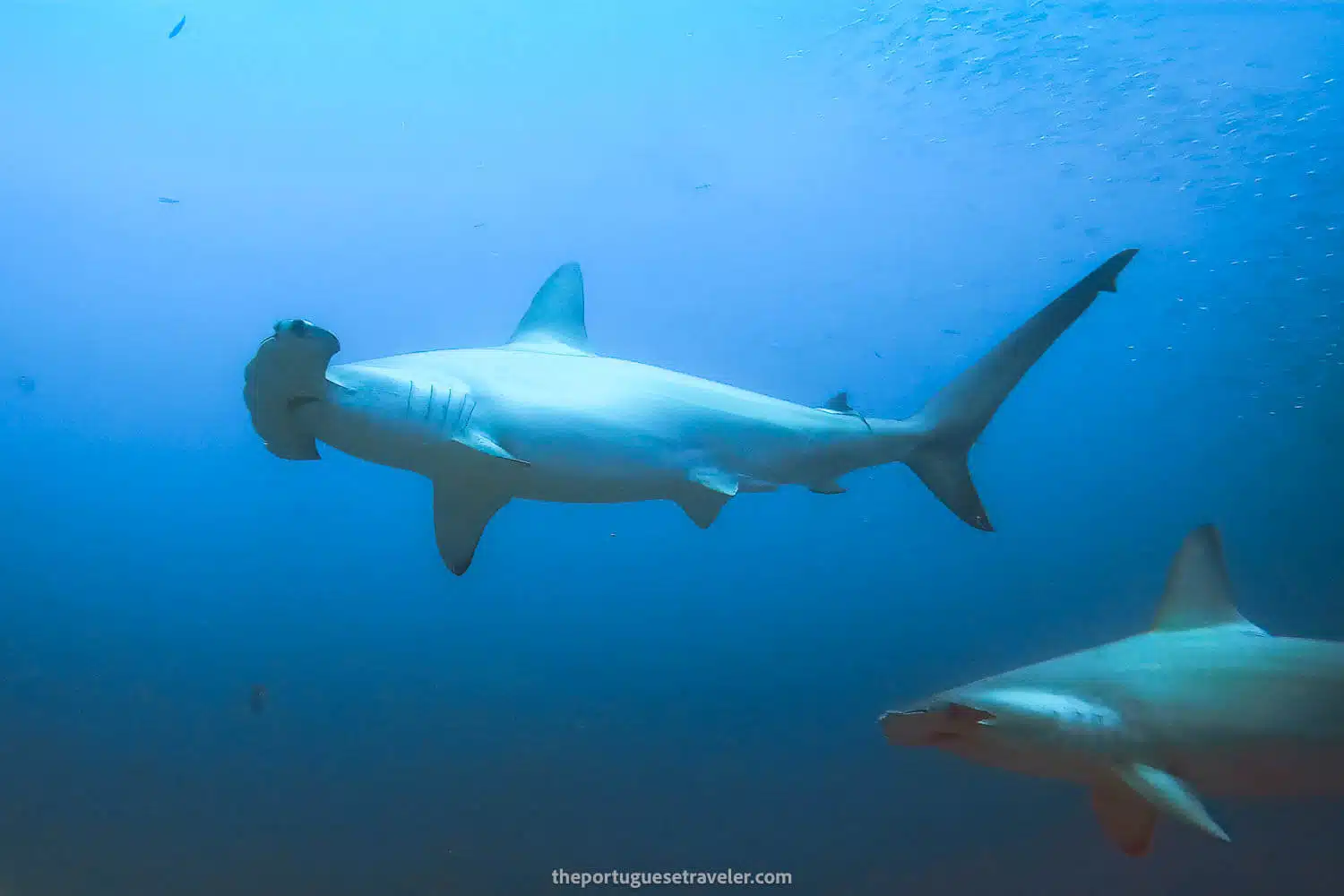
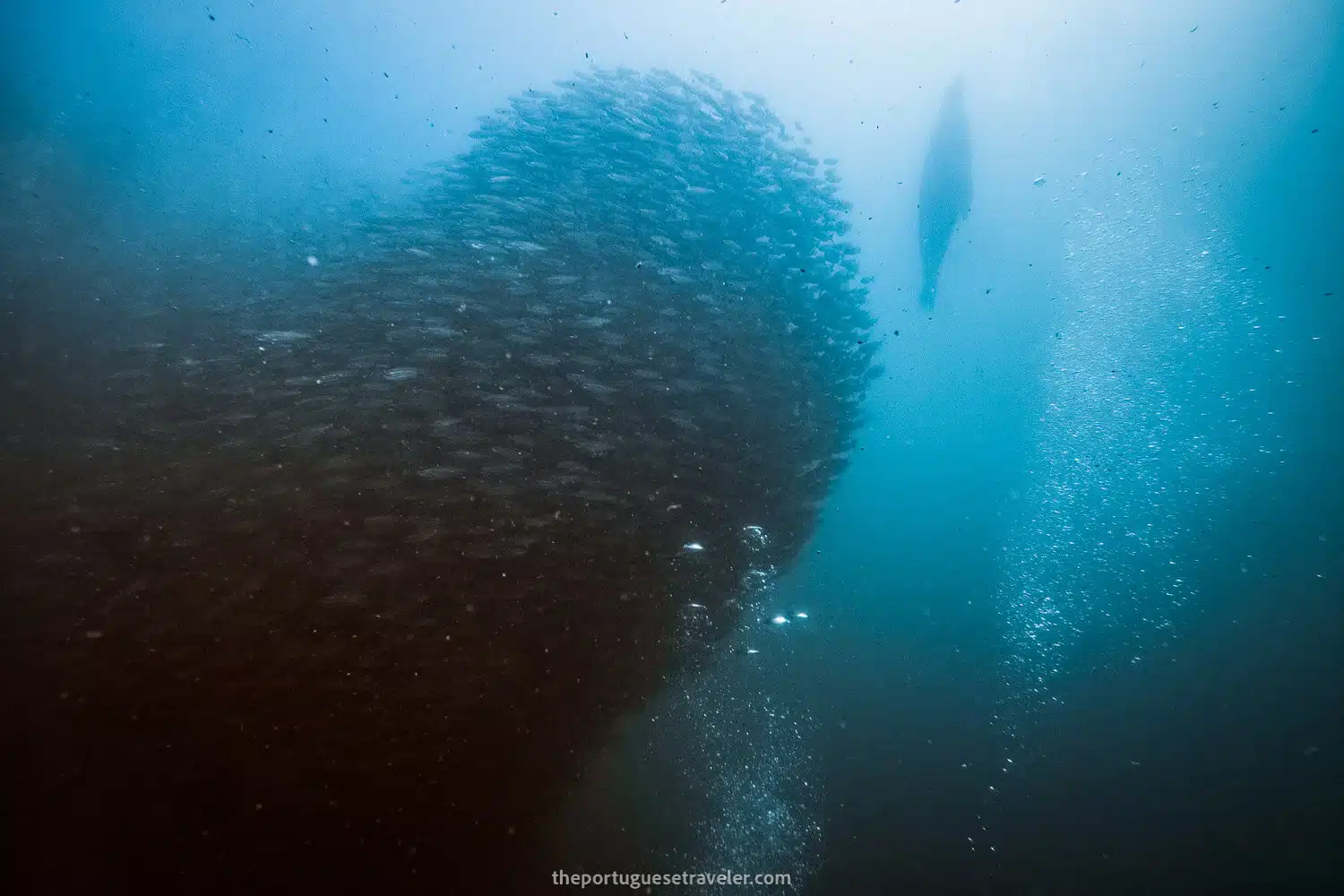
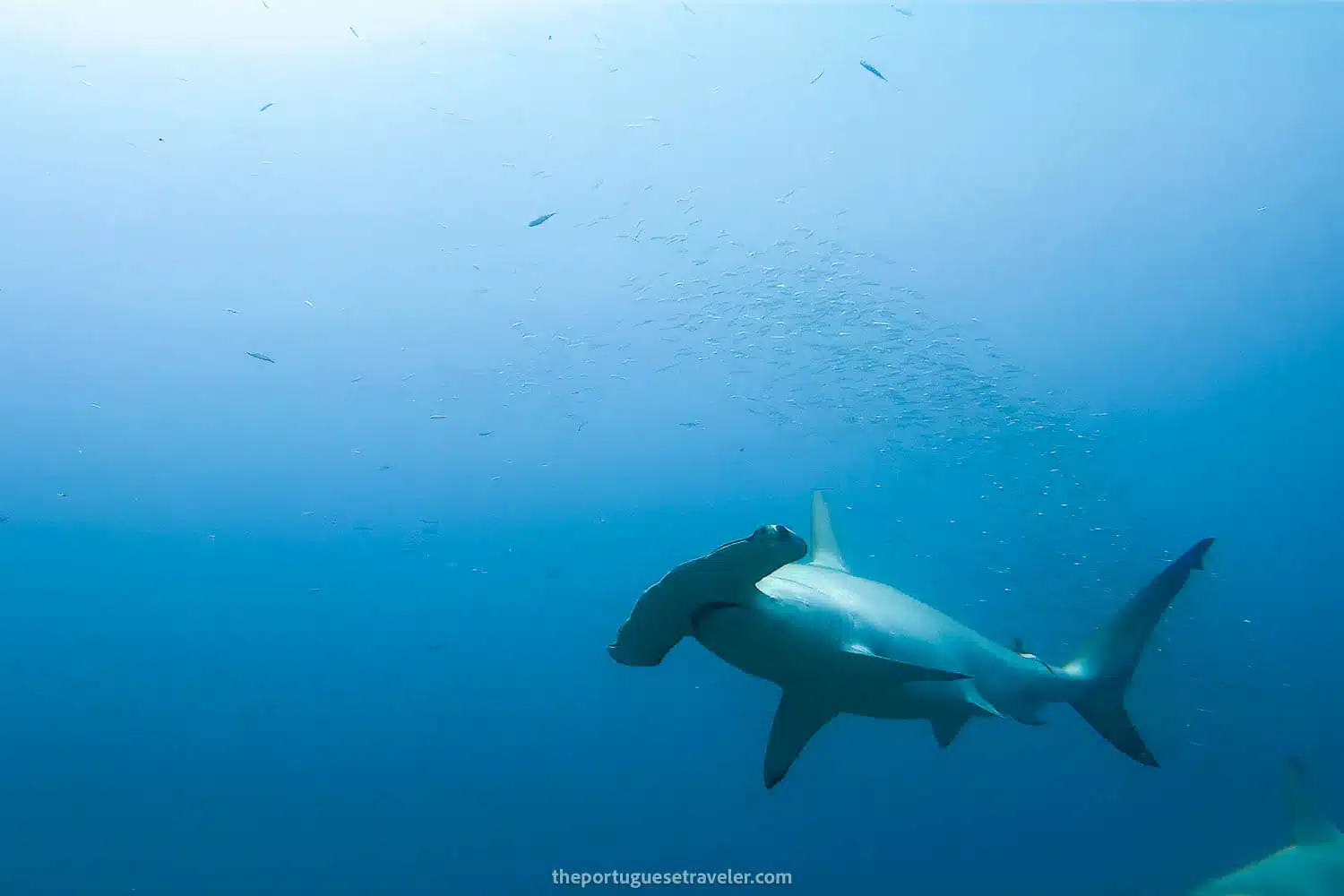
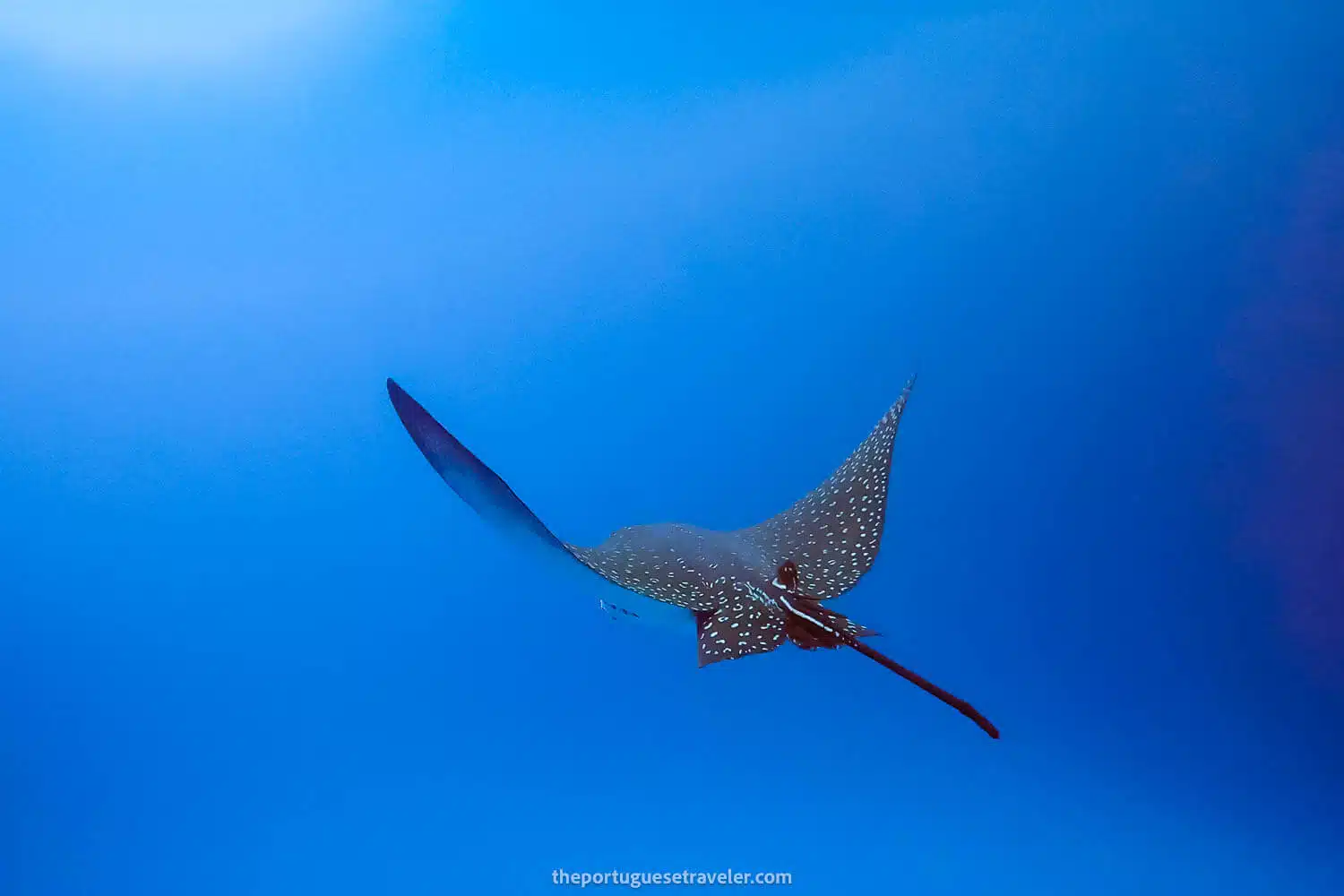
22. Dive in Carawa Shipwreck and Tijeretas Bay
Discover the wonders of Carawa SS Wreck, an Australian transport ship that found its resting place in 1920, stretching approximately 100 meters in length.
Before delving into the intriguing depths of the wreck, divers begin their journey with a check dive at Tijeretas Bay, a natural lagoon boasting crystal-clear waters and inhabited by playful sea lions and graceful green sea turtles.
View the full blog post here: DIVING IN CARAWA WRECK AND TIJERETAS BAY
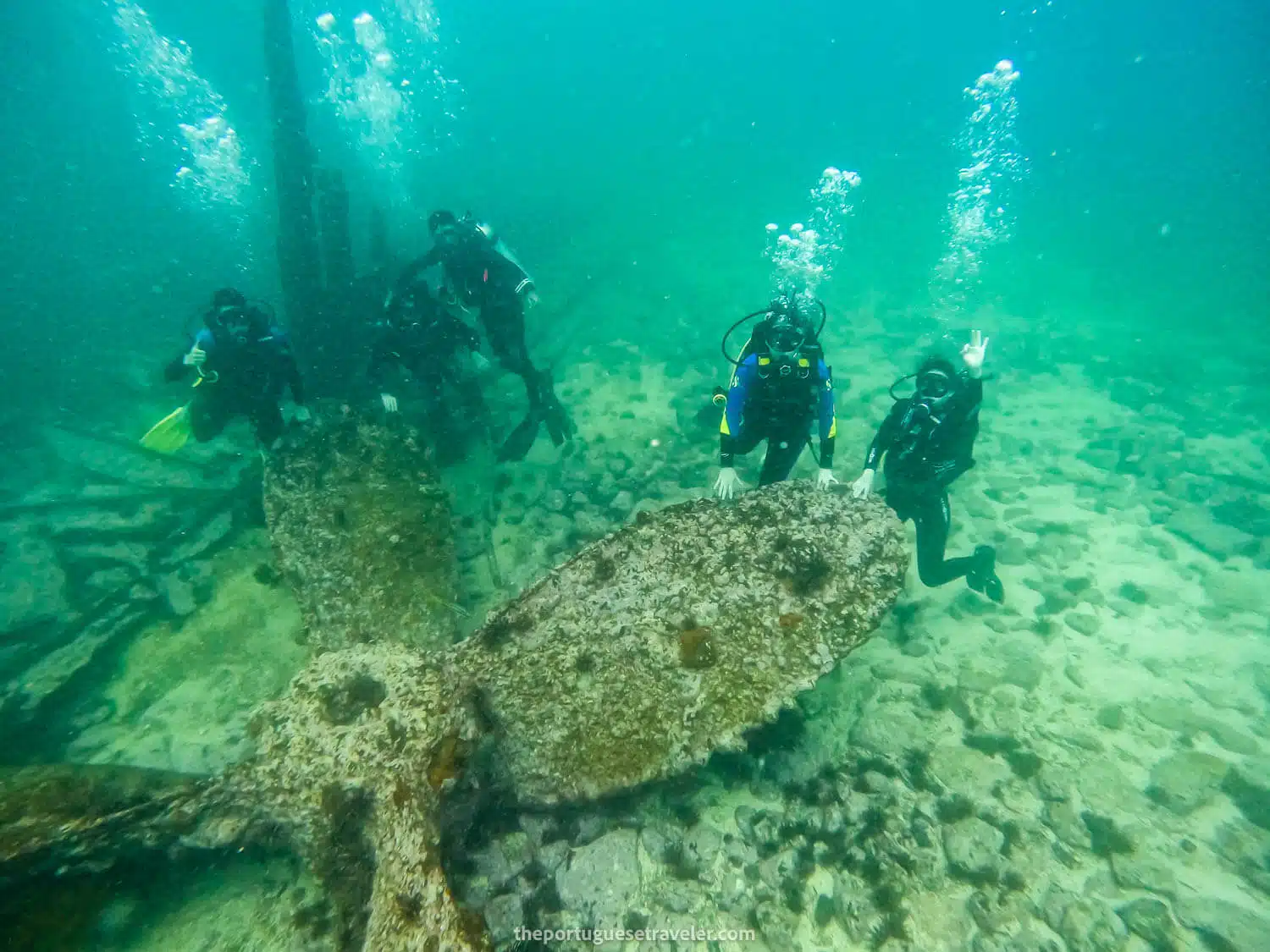
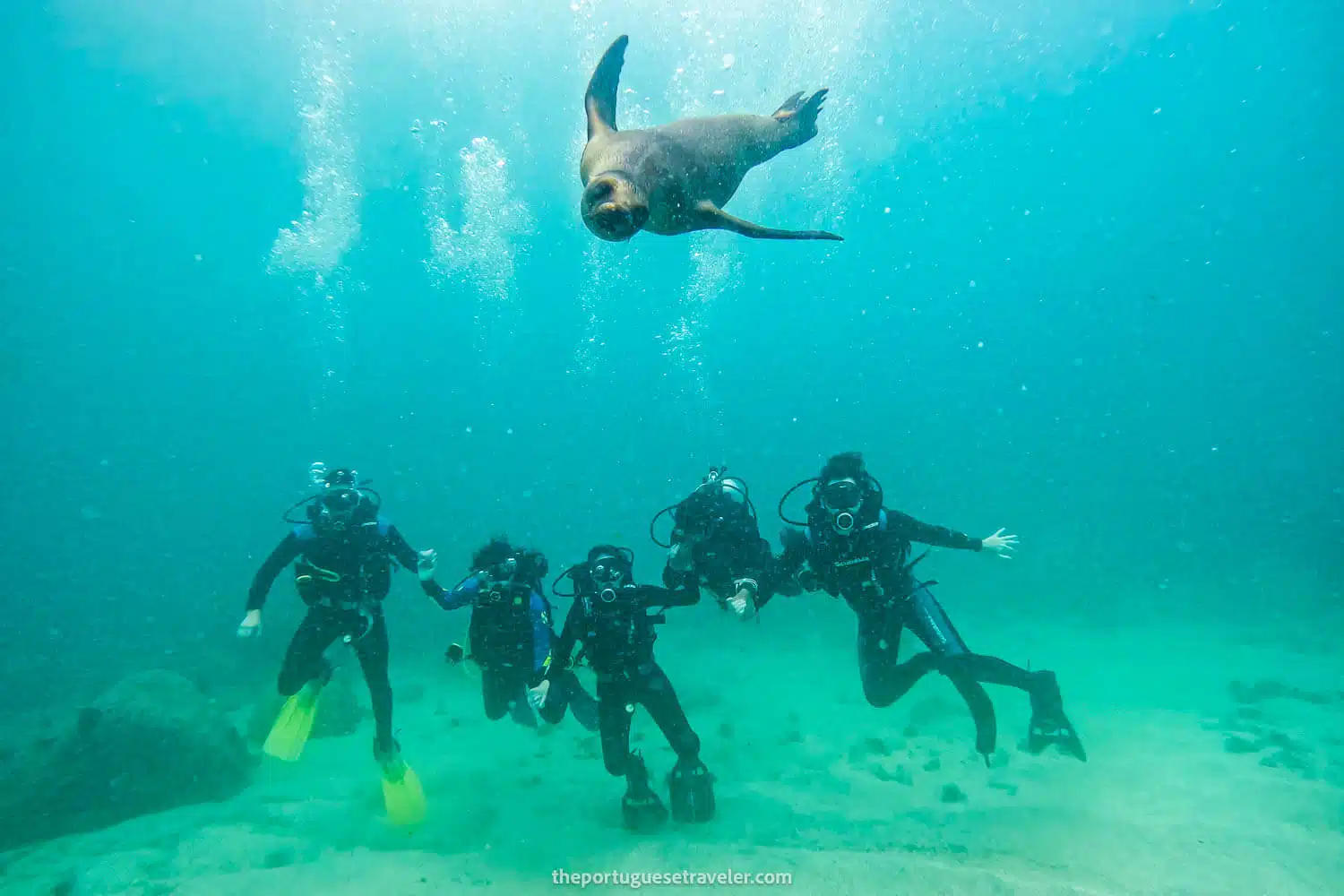
23. Dive in Whale Rock
Another possible diving tour you can do on San Cristobal is to Whale Rock whose name comes from its similarity to a whale coming to the surface.
It’s a little less exciting than Kicker Rock but you can still find pompano fish, jacks, stonefish, sea turtles, anemones, rays, and sometimes sharks.
Check the Whale Rock dives on Planet Ocean Galapagos’s website.
24. Dive/Snorkel in Punta Pitt
If you’ve done the 360 Tour then you probably recognize this place. It’s where you do the birdwatching on that tour.
It is the northeasternmost point of San Cristobal and the turning point from the wild to the calm sea (protected by the island). It is therefore packed with marine life and birds.
On this tour, you have two dives or you can snorkel if you aren’t a certified diver.
In the end, you go to Cerro Pitt hill for some birdwatching and inland exploring or just stay at the beach relaxing.
Check the Punta Pitt dive/snorkel trip on Wreck Bay’s website.
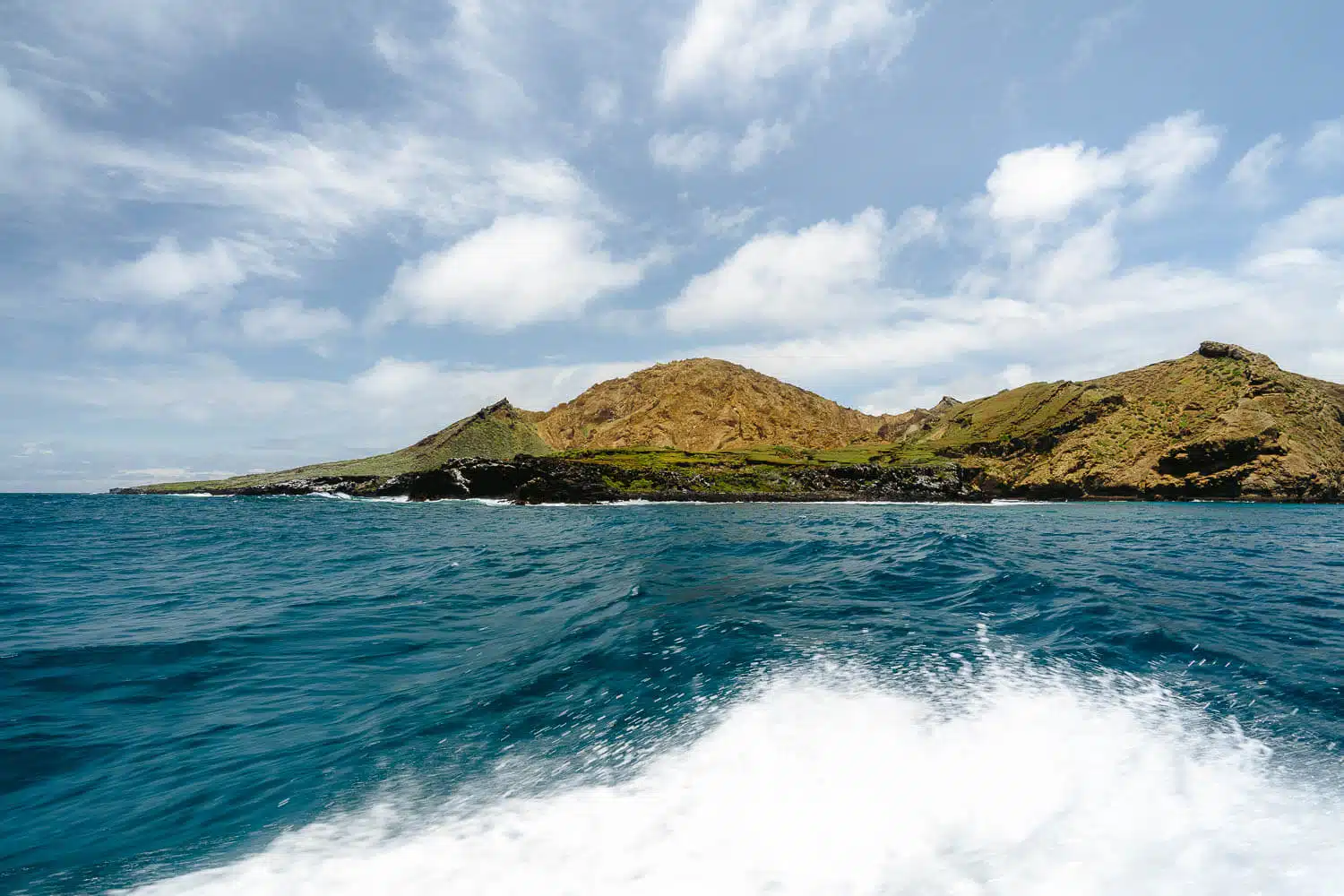
25. Night Dive in San Cristobal
A night dive in the Galapagos. This would also be on my top 3 list of dives to do on the island if I had known before it existed.
Imagine all the life you see during the day in the water here in the Galapagos, multiplied by 100.
During the night the animals are much more active than during the day so you have the most chance of encountering special and rare animals on night dives.
You will also see their true and vibrant colors due to your flashlight.
It’s amazing to dive at night. If you like diving this is definitely a thing you should do in San Cristobal.
Check the Night Dives on Planet Ocean Galapagos website.
26. Cave Dive in Barranco Cave
And to conclude this list a cave diving tour. For all diving aficionados, it’s another type of dive you can do in San Cristóbal.
According to their website, you will see nudibranchs, many different types of fish, sea stars, and lobsters and you will dive from 23 meters to 34 meters deep (specific certification required probably).
In any case, do contact them if you’d like to try it as I think you can do it as a specialty course.
Check the Cave and Wall Barranco dive on Planet Ocean Galapagos website.
Things To Do in The Galapagos
Santa Cruz Island
27. Pit Craters "Los Gemelos"
Here one can see two valley-shaped pits covered with vegetation. These are amazing formations that resulted from the collapse of ancient lava tunnels. When the lava cooled down and contracted it left behind unstable structures that with time collapsed and let the vegetation take over.
In order to visit it you must hire a taxi, for that reason, it’s usually included in a tour where the taxi takes you to multiple destinations. This tour is called “The Highlands Tour” or “Tour Parte Alta” and takes you to the Pit Craters “Los Gemelos”, the Lava Tunnels, and to the Giant Tortoise Reserve “El Chato” or “Las Primícias”.
View the full blog post here: HIGHLANDS TOUR IN SANTA CRUZ
To book this tour: Check the local company Galapagos Dreams’s website, or book it online on Viator here: The Giant Tortoise Experience | Lava Tubes + Los Gemelos
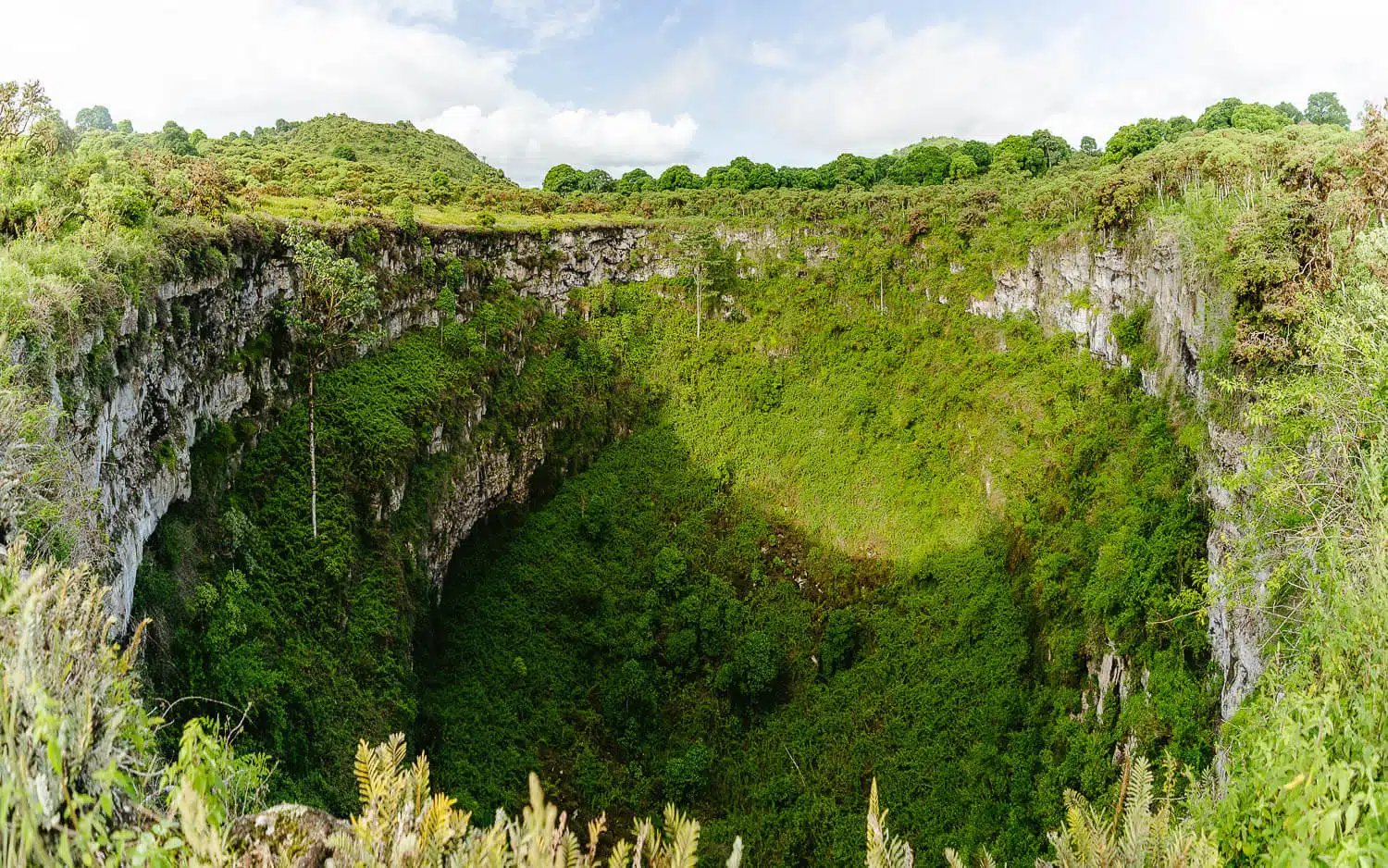
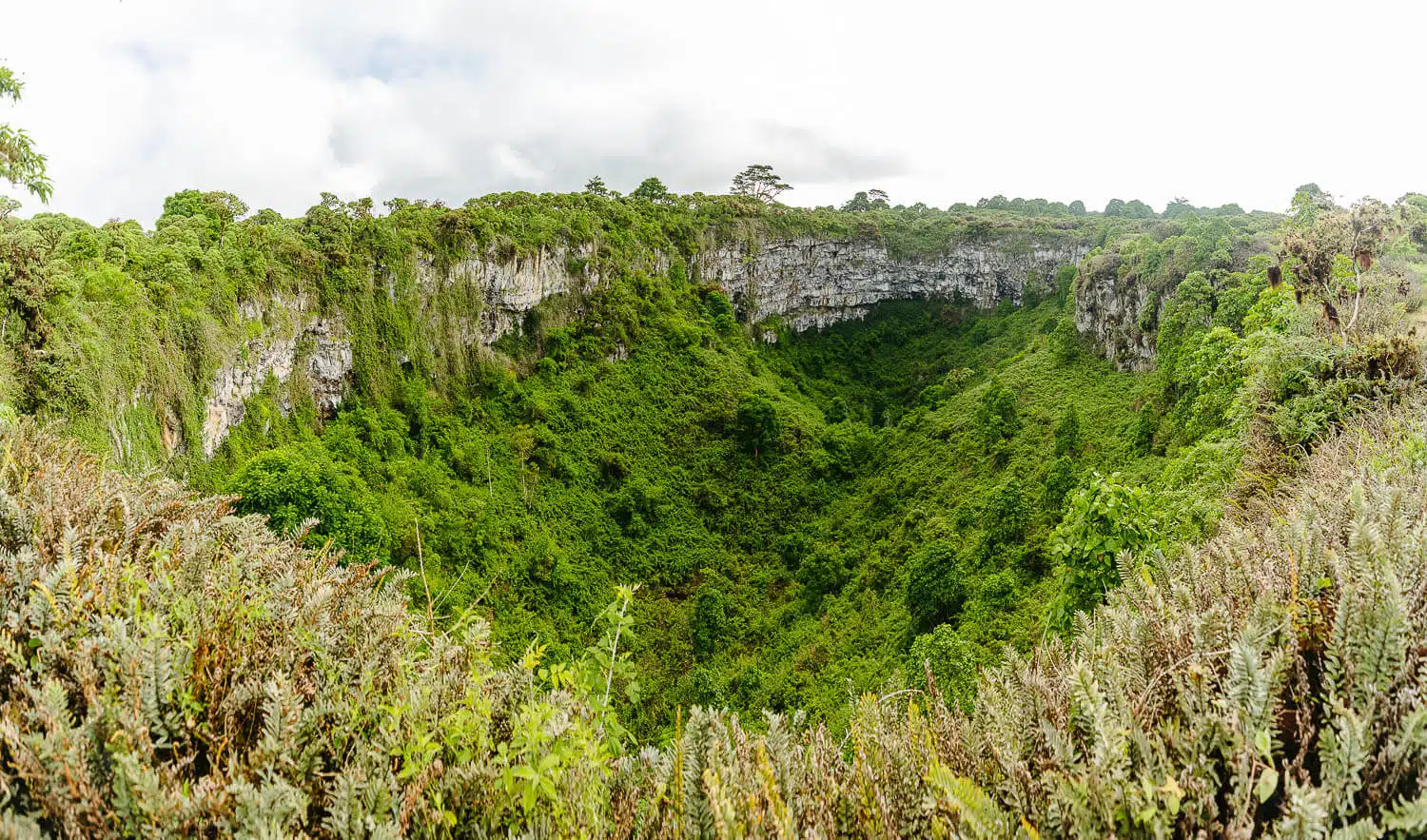
28. Lava Tunnels
In this place, you can really understand how the island was formed and see a multitude of landscapes. Identical to the pit craters, these tunnels were also formed after the lava flowing from the volcano cooled down. The part of this lava that got in contact with the oxygen, created a solid outer shell. That outer shell is the structure that today you get the chance to walk inside.
In order to visit it you must hire a taxi, therefore, it’s usually included in a tour where the taxi takes you to multiple destinations. This tour is called “The Highlands Tour” or “Tour Parte Alta” and takes you to the Pit Craters “Los Gemelos”, the Lava Tunnels, and to the Giant Tortoise Reserve “El Chato” or “Las Primícias”.
View the full blog post here: HIGHLANDS TOUR IN SANTA CRUZ
To book this tour: Check the local company Galapagos Dreams’s website, or book it online on Viator here: The Giant Tortoise Experience | Lava Tubes + Los Gemelos
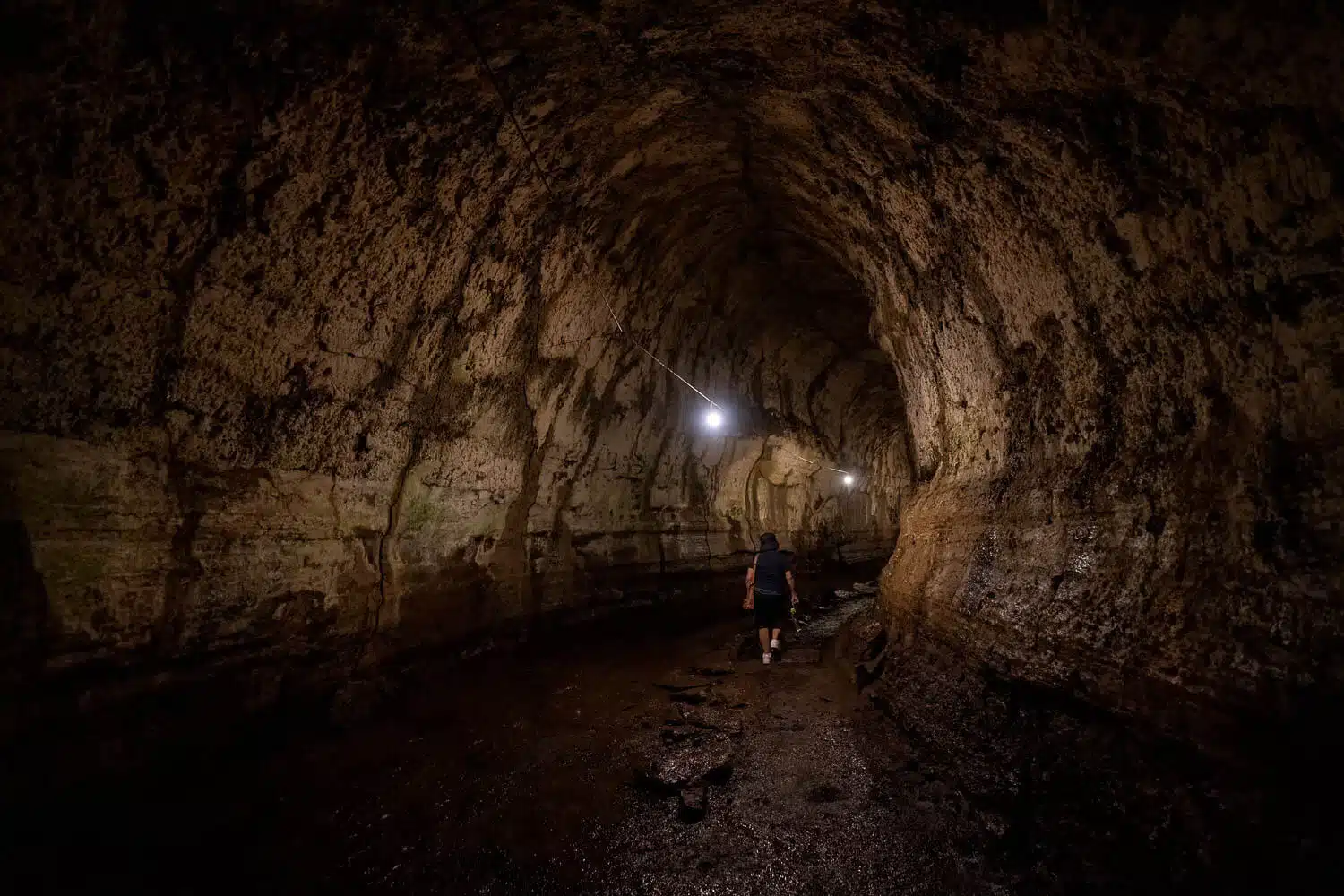
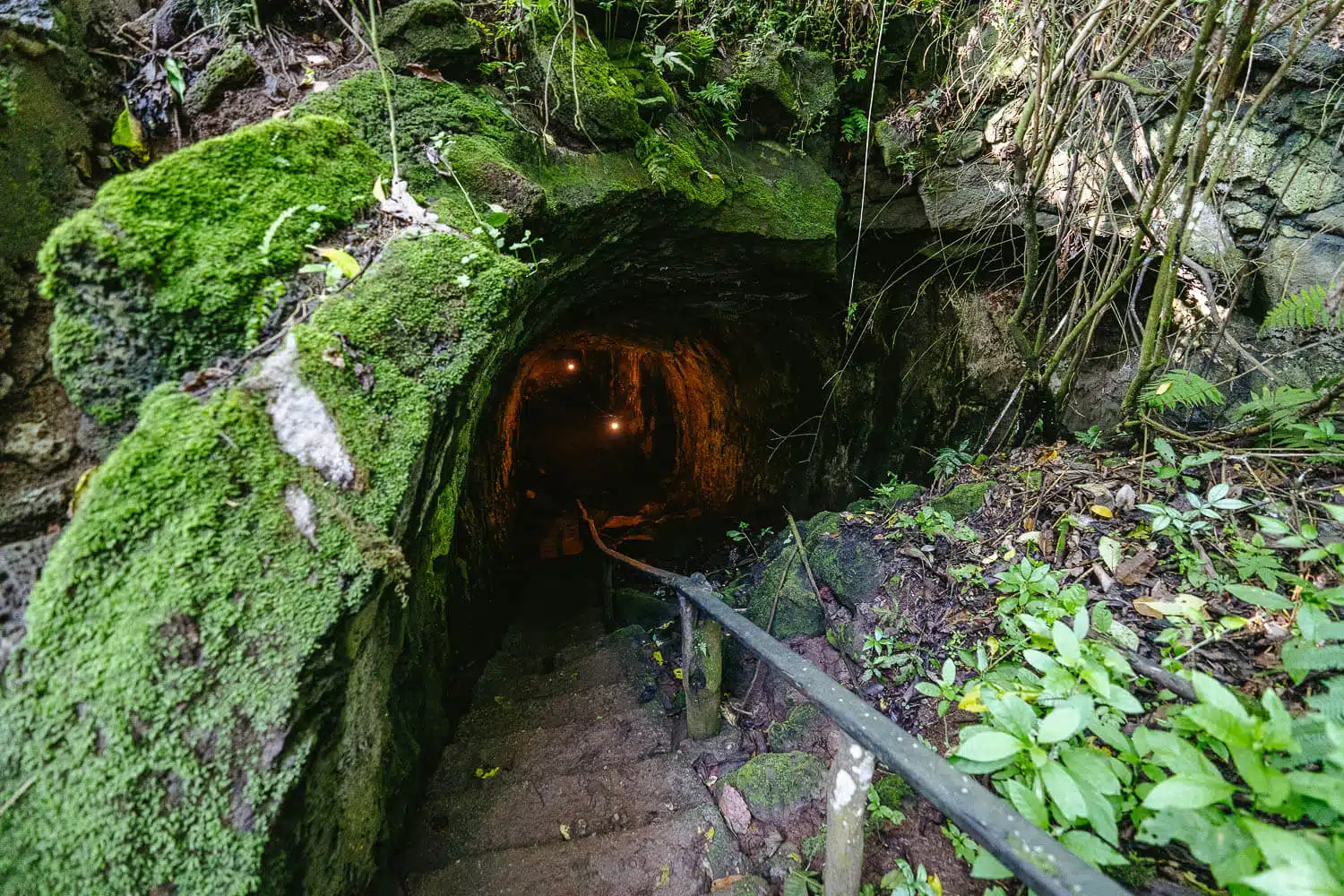
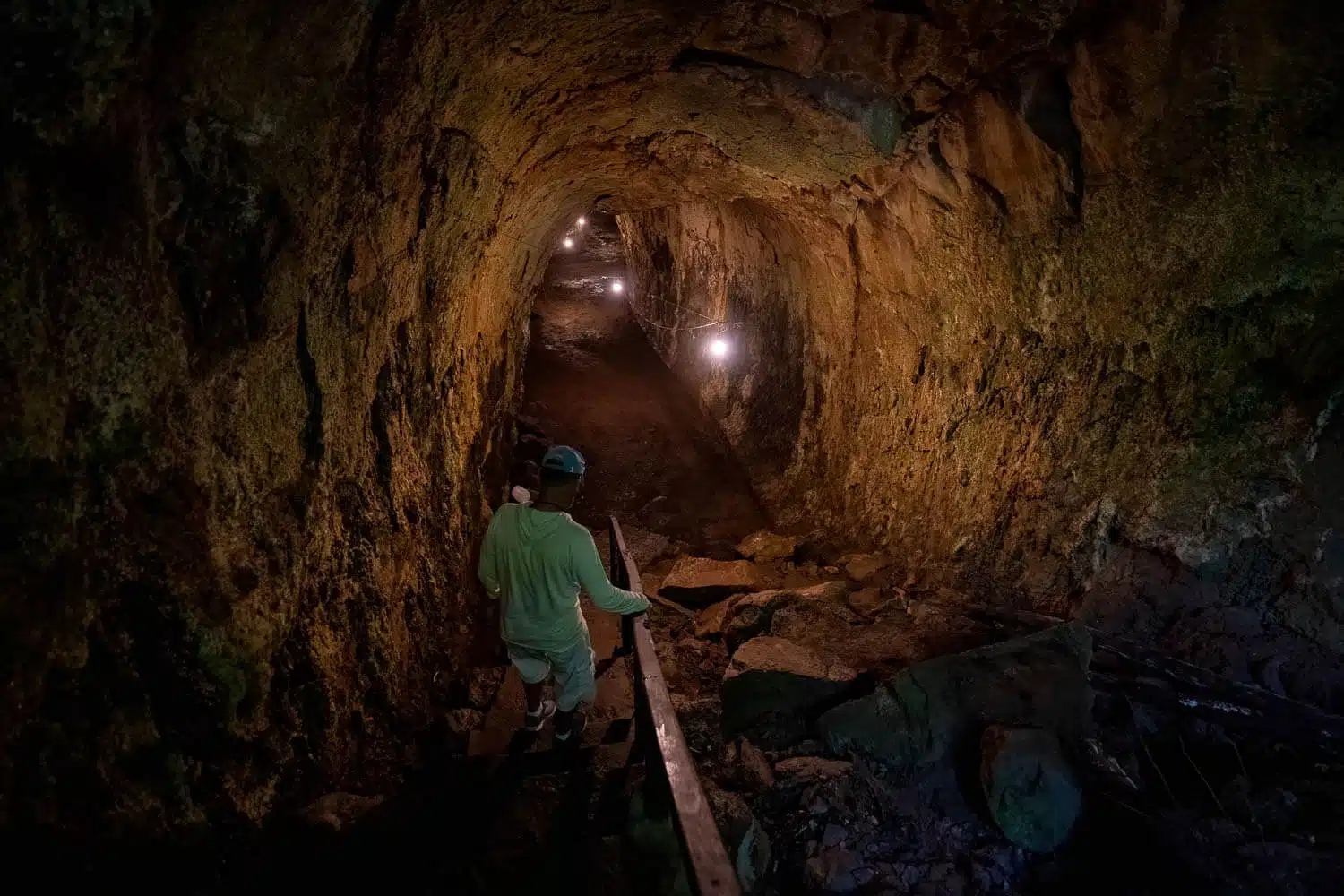
29. Giant Tortoise Reserves of "El Chato" or "Las Primícias"
This is a very famous tourist attraction for local families and therefore it’s usually a bit full. It isn’t a breeding center like in Charles Darwin Foundation that I will talk about afterward, this is a private ranch, where the lava tunnels are also located and they have giant tortoises walking around freely.
As for facilities, there is a restaurant, a gift shop, and a small museum with ancient giant shells for you to see. On the right side of the museum, there is also a tourist attraction where you can go inside a shell, pretending you’re a tortoise, with the letters “I <3 Las Primícias” behind you, and take a photo.
In order to visit it you must hire a taxi, therefore, it’s usually included in a tour where the taxi takes you to multiple destinations. This tour is called “The Highlands Tour” or “Tour Parte Alta” and takes you to the Pit Craters “Los Gemelos”, the Lava Tunnels, and to the Giant Tortoise Reserve “El Chato” or “Las Primícias”.
View the full blog post here: HIGHLANDS TOUR IN SANTA CRUZ
To book this tour: Check the local company Galapagos Dreams’s website, or book it online on Viator here: The Giant Tortoise Experience | Lava Tubes + Los Gemelos
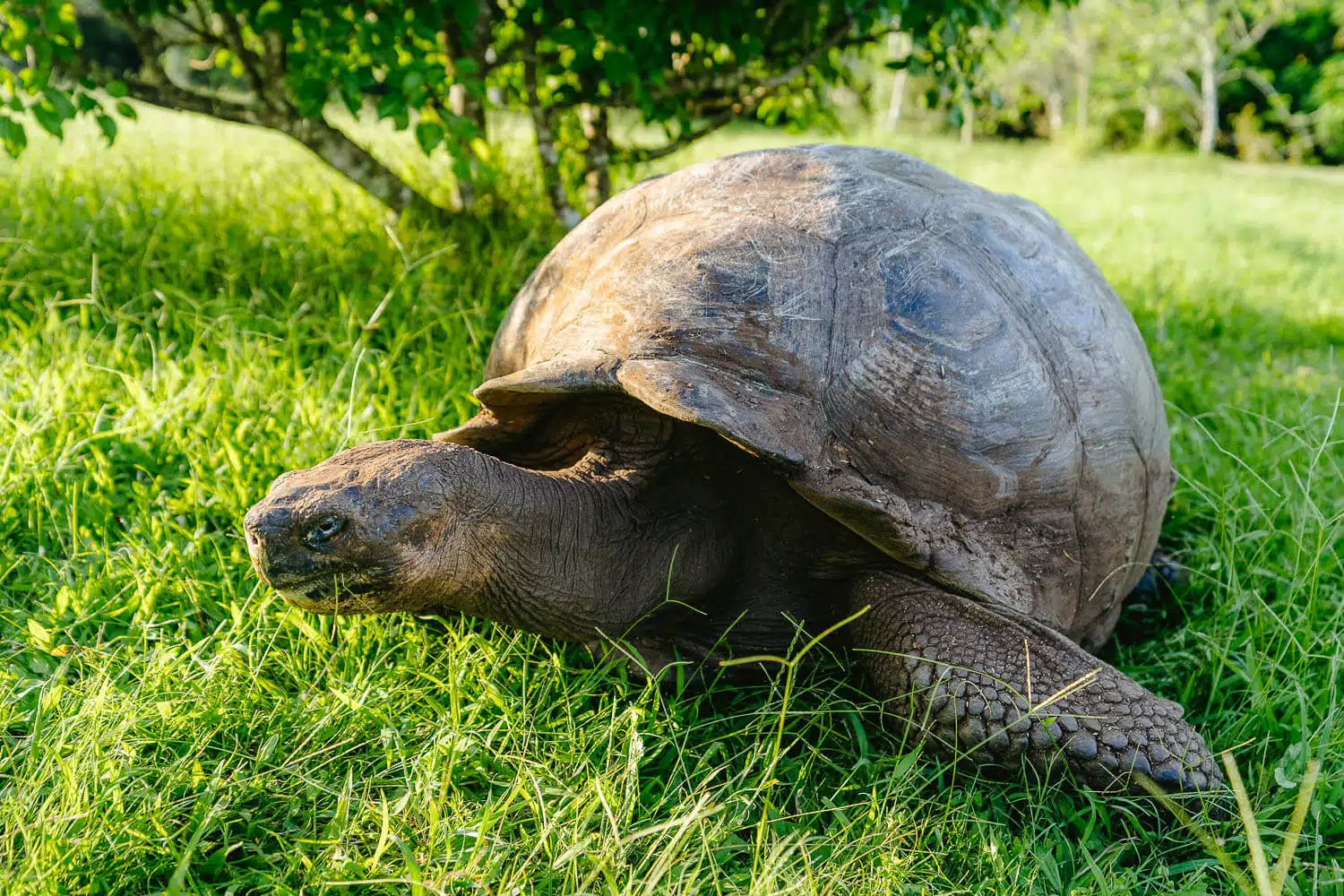
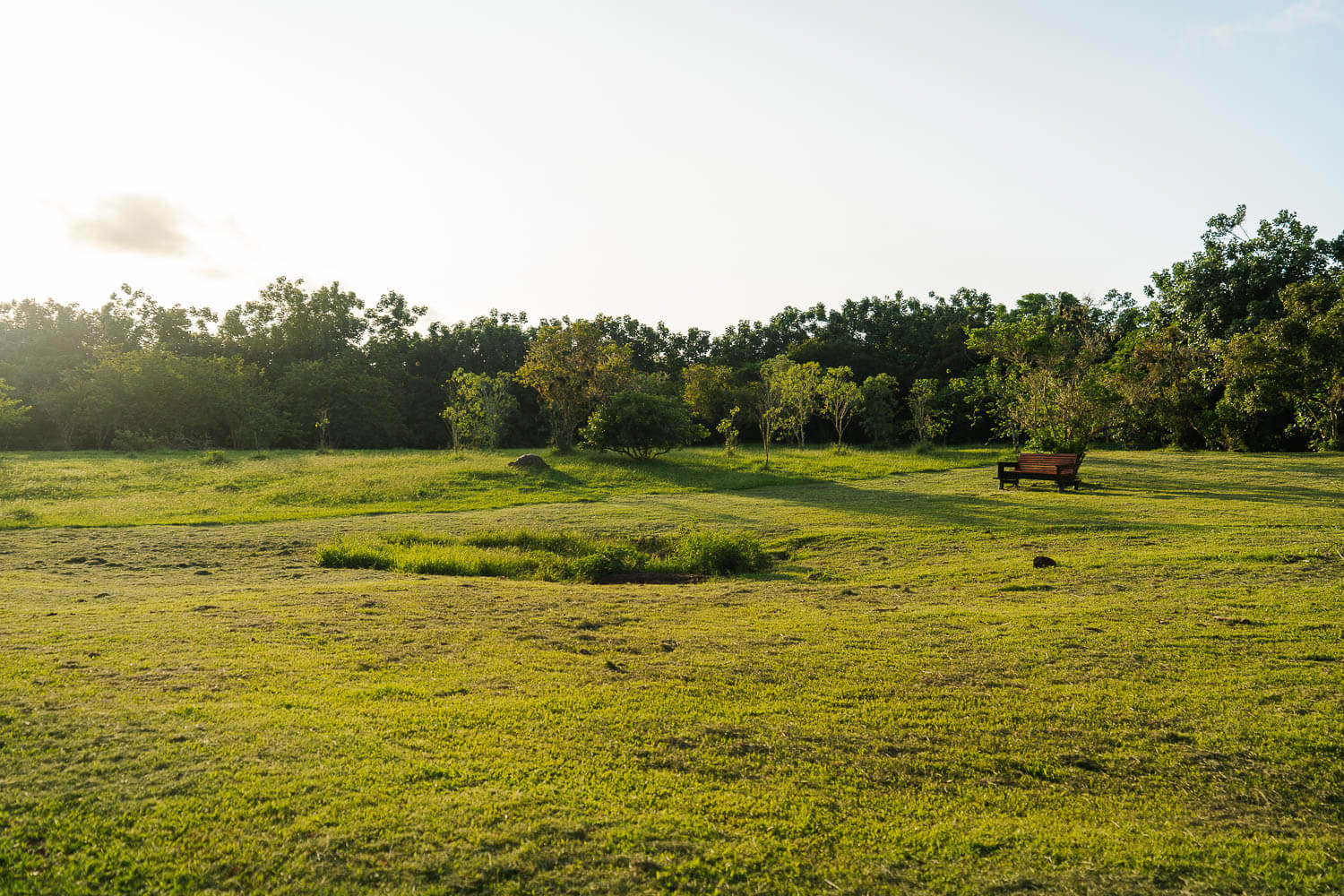
30. Charles Darwin Research Station
The Charles Darwin Research Station on Santa Cruz island is where all the science and main environmental projects on the Galapagos archipelago come from. Here they study and develop techniques that help protect the unique species of these islands. If you are a scientist, a student, or interested in the protection of this paradise you can volunteer here and help with a plethora of research tasks.
In the Research Station, you will also find a giant tortoise breeding center and you will have the chance to see embalmed Lonesome George, he was the oldest specimen of his giant tortoise kind and unfortunately died in 2012. You can see many different types of Galapagos endemic flora and some information about Charles Darwin, additionally, there is also a cafeteria, bathrooms, and a public library.
View the full blog post here: CHARLES DARWIN RESEARCH STATION
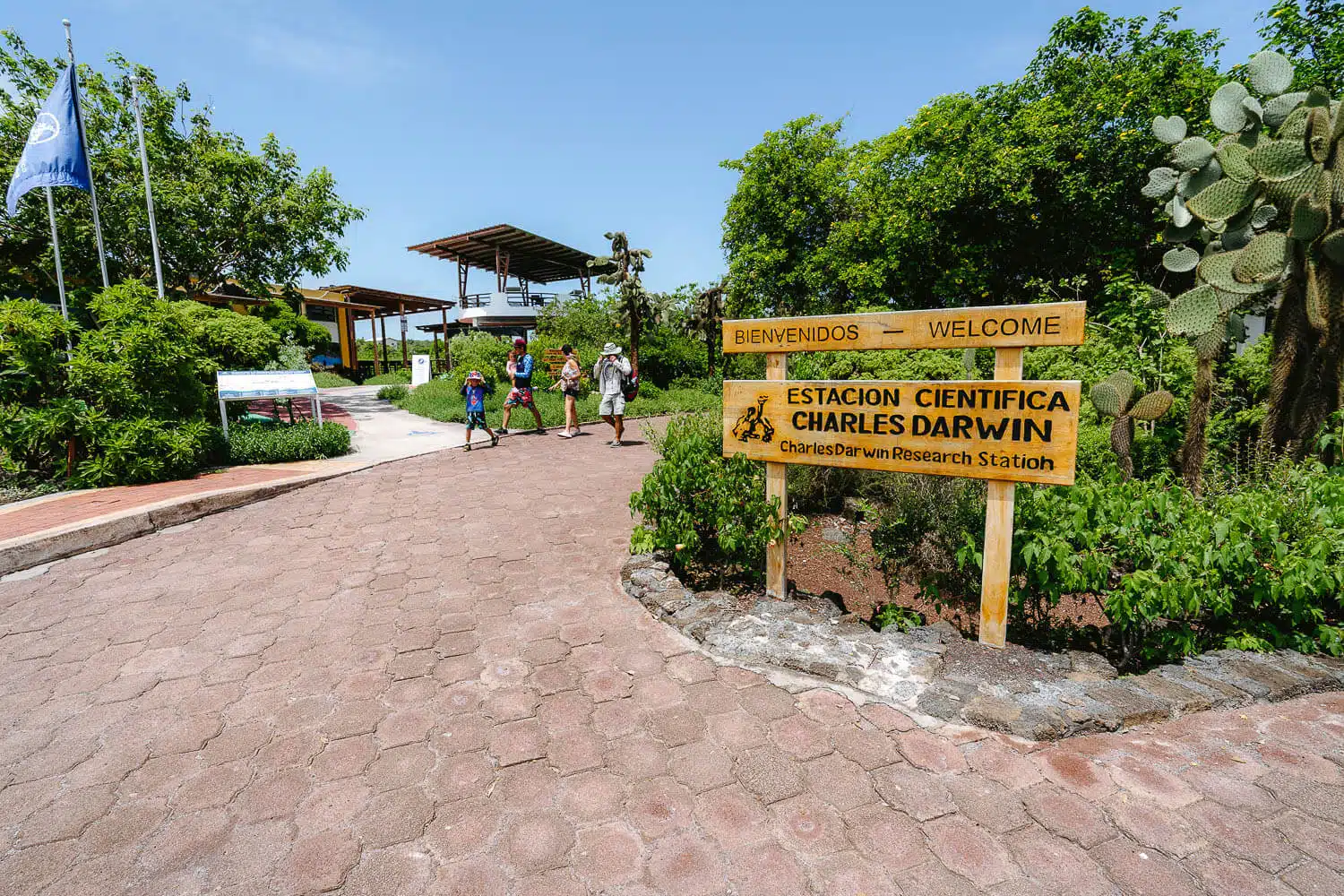
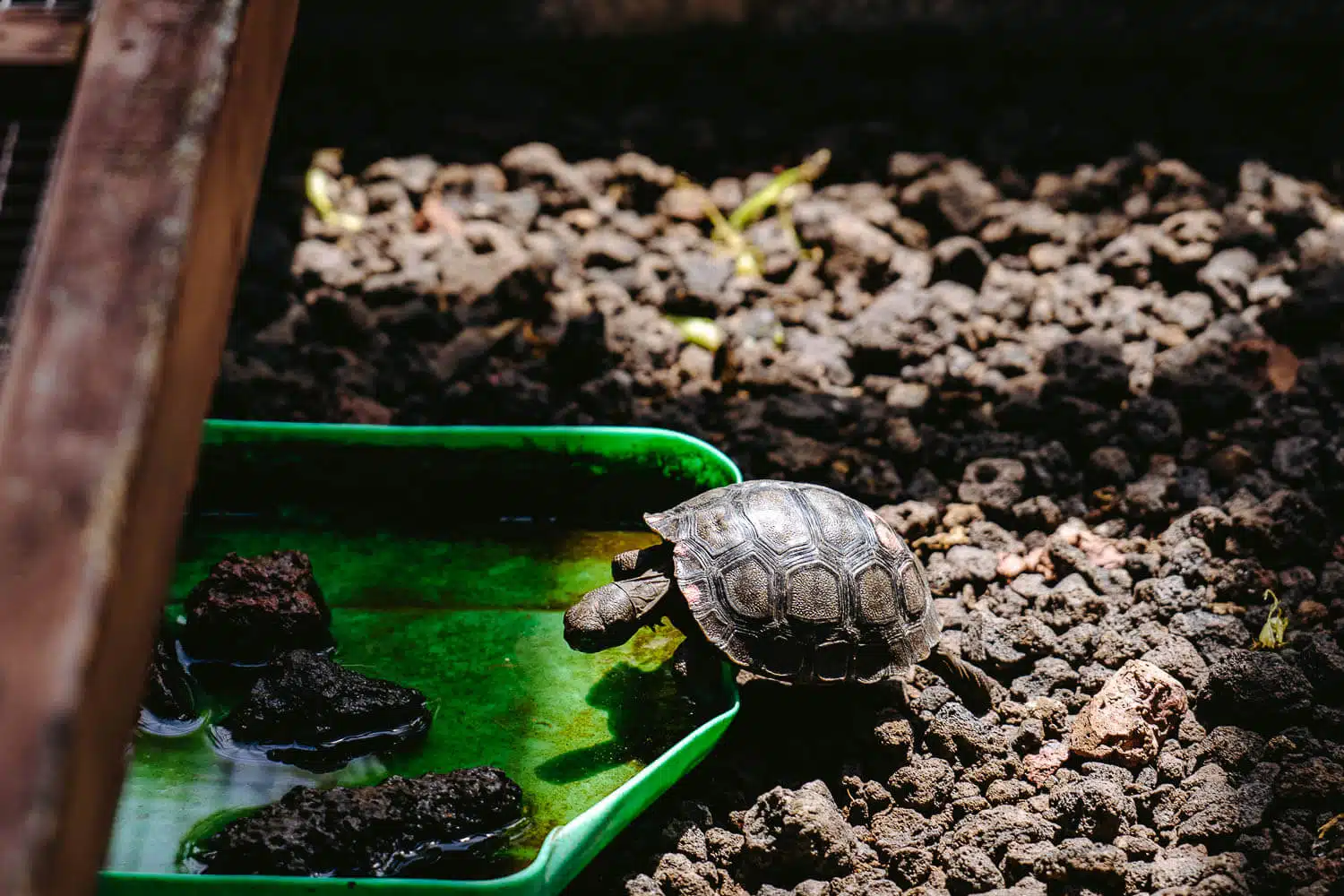

31. Nymphs Lagoon
The Nymphs Lagoon in Santa Cruz is a beautiful lagoon full of mangroves that you can visit just a short walk from Puerto Ayora’s city center. Altogether it is a great stop on your way to Tortuga Bay beach especially because it is free and very family friendly.
To reach the Nymphs Lagoon or Laguna de Las Ninfas, you can either go by taxi, bike, or on foot, nevertheless, I advise you to go on foot as it’s almost literally in the middle of the city. It’s not permitted to swim, fish, kayak, or disturb the animals around the lagoon.
View the full blog post here: NYMPHS LAGOON IN SANTA CRUZ
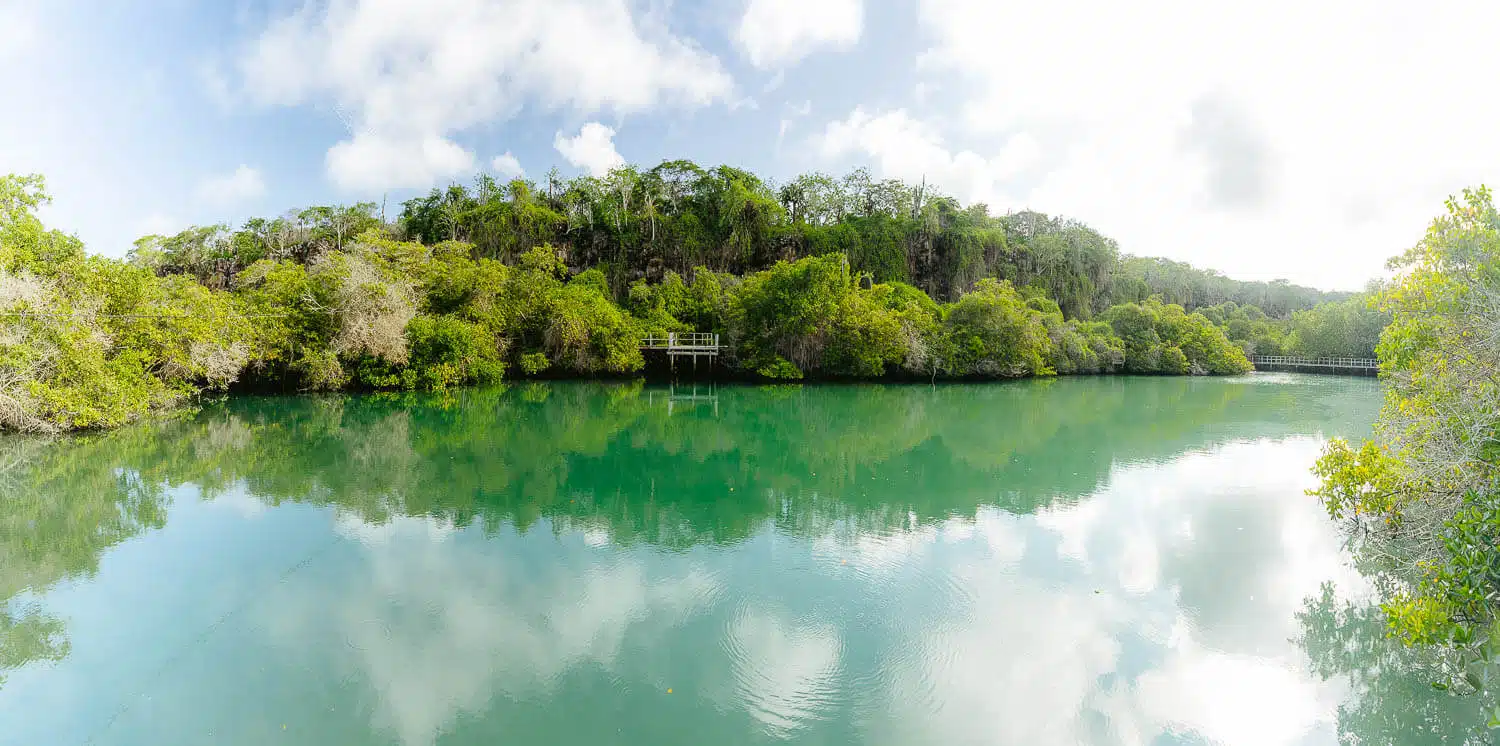
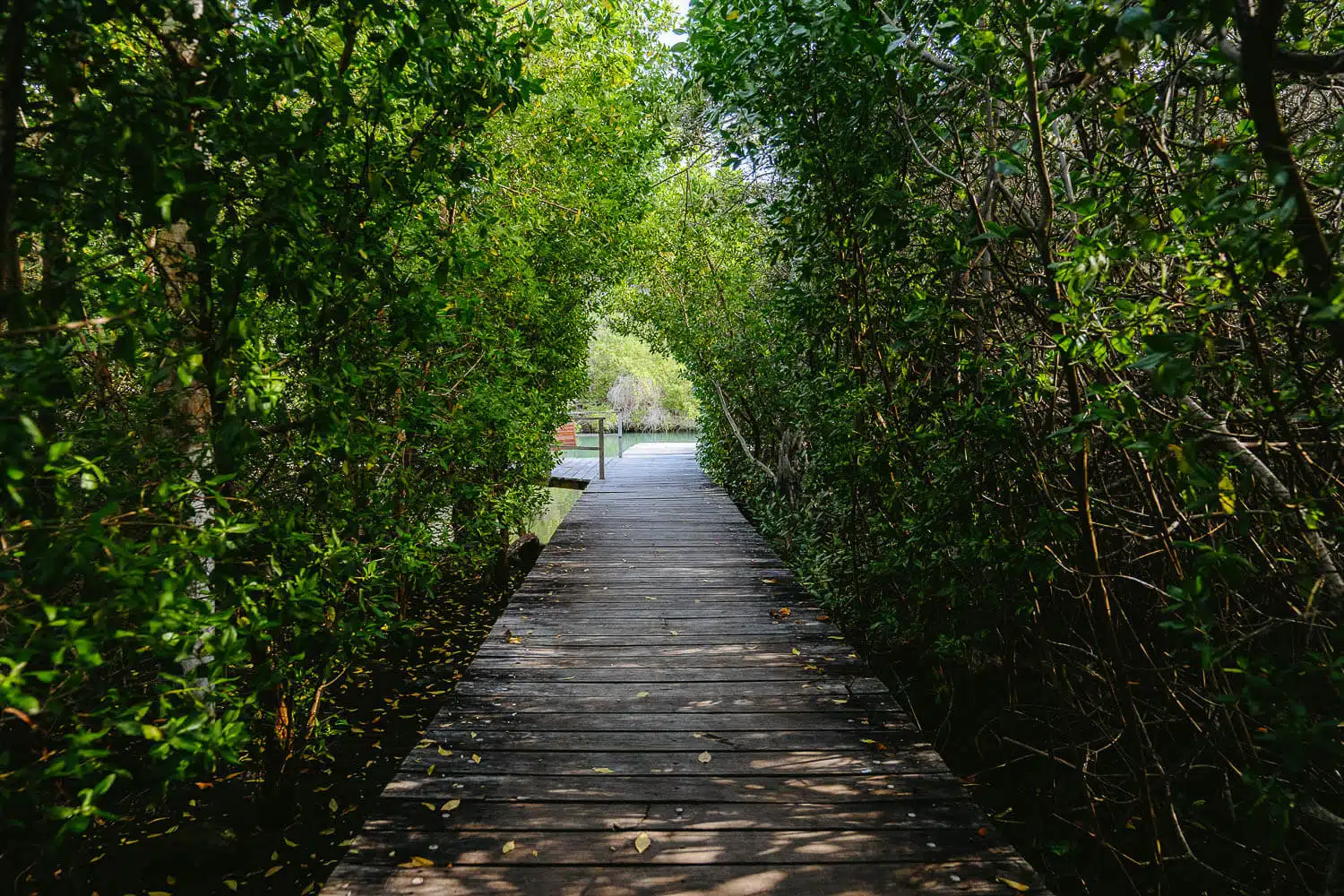
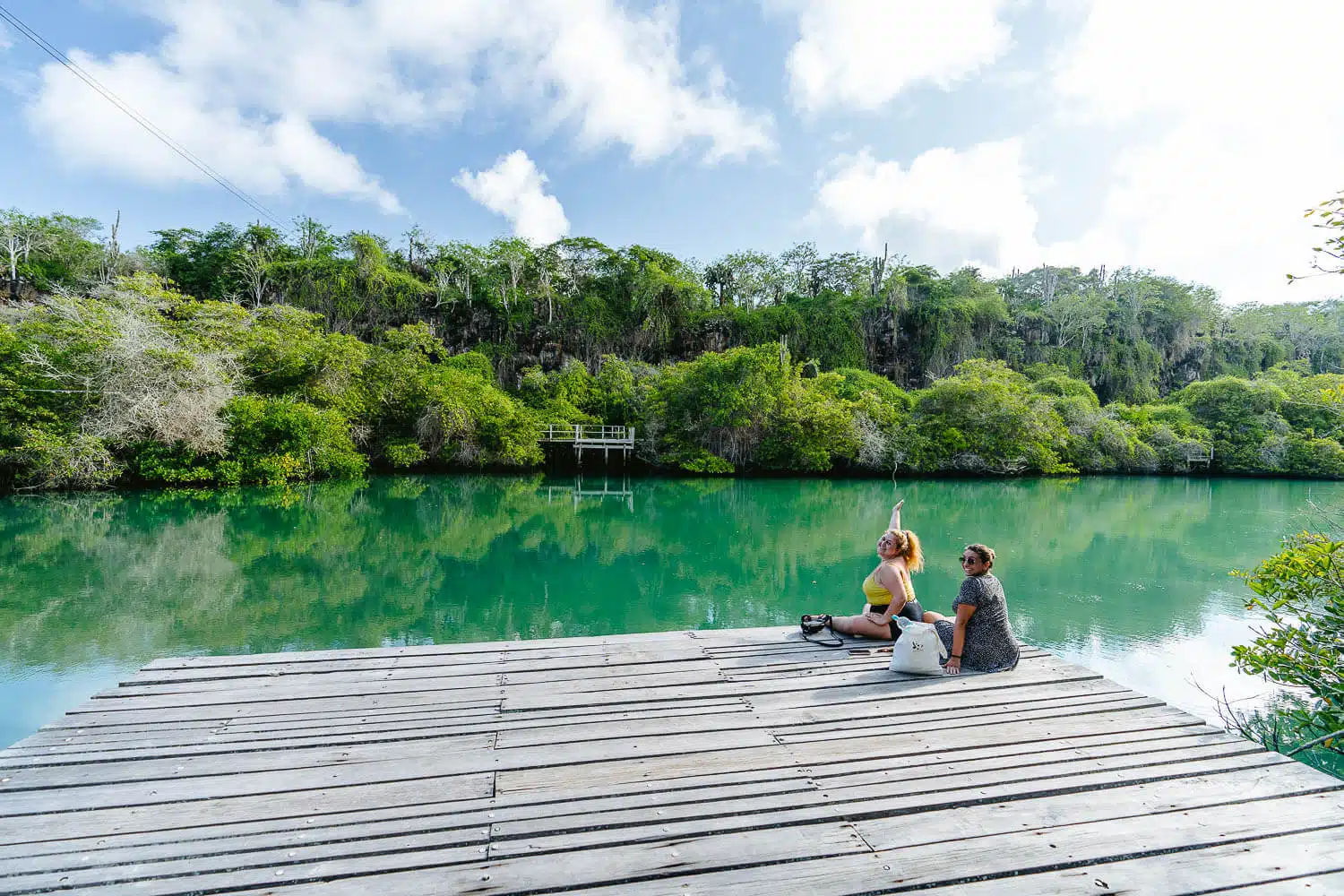
32. Station Beach
There are two main beaches part of the Charles Darwin Research Station complex. Station Beach is one of them. Both have lots of rocks and little sand next to the water. There aren’t usually many people here, thus it is a place to consider spending the day in you can also easily park your bike at the entrance.
You can usually find a couple of marine iguanas disguised as rocks around the beach. It is a nice place to swim and snorkel, in addition, apart from the Alemanes beach (which is on the other side of Puerto Ayora’s town), there isn’t any other nearby beach for a short dive on a hot day. It’s free and it’s the perfect refreshment after spending some hours at the research station.
View the full blog post here: CHARLES DARWIN RESEARCH STATION
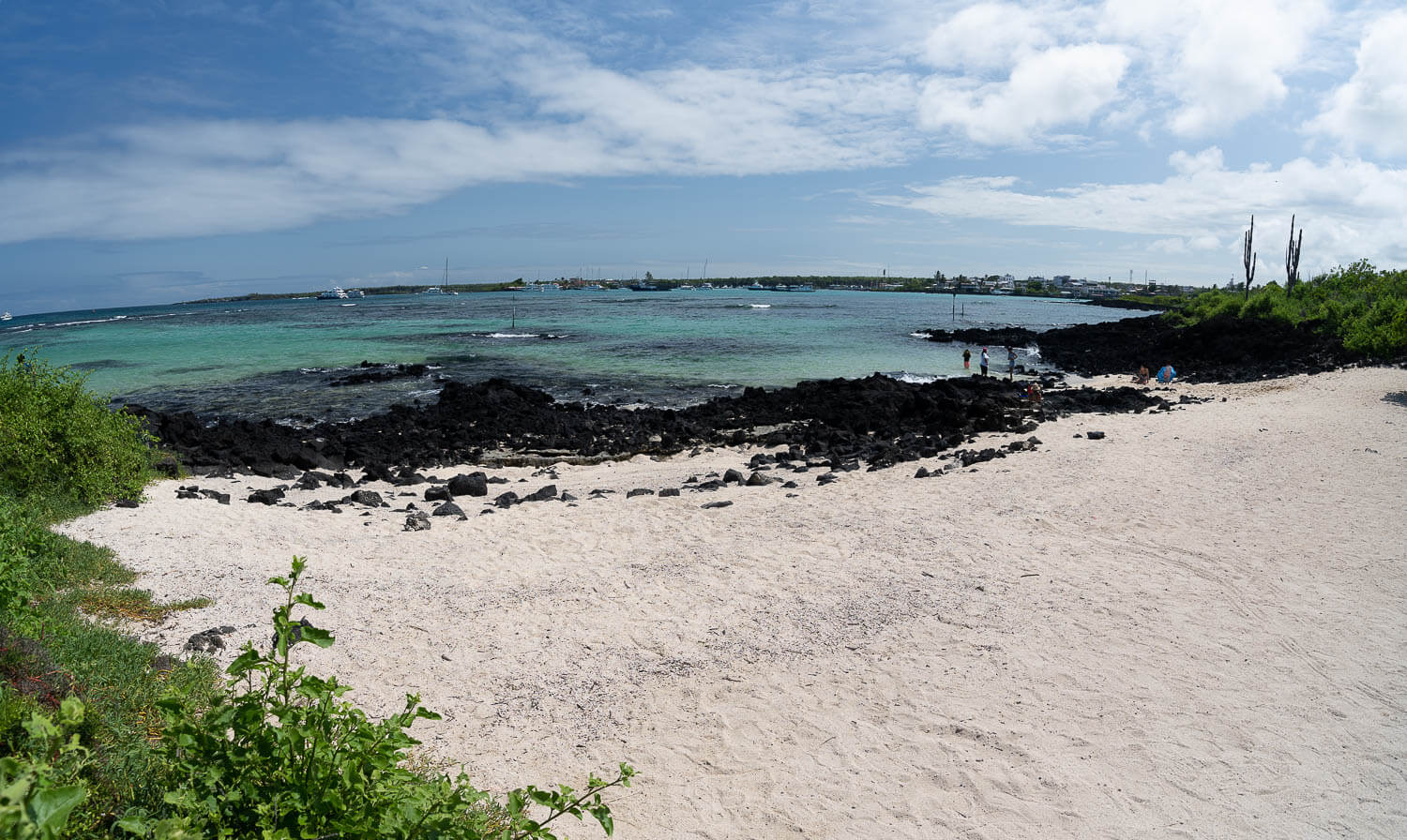
33. Santa Cruz's Downtown
Spend some time exploring Puerto Ayora (Santa Cruz island’s capital). As I said before, Santa Cruz is the most touristy of all the three main islands, but that comes also with some pluses, it has plenty of restaurants, bars, coffees, and trendy shops. For me personally, the nightlife was great, the international food and craft beers scene too and there were really nice trendy clothing shops.
Apart from the great tourism infrastructure, please go check the fish market, where many pelicans and sea lions come for a snack all the time. There is also a famous giant tortoise statue, and the area around the dock, where there are usually some events going on. During the day you can spot schools of golden rays and reef sharks from the surface of the dock.
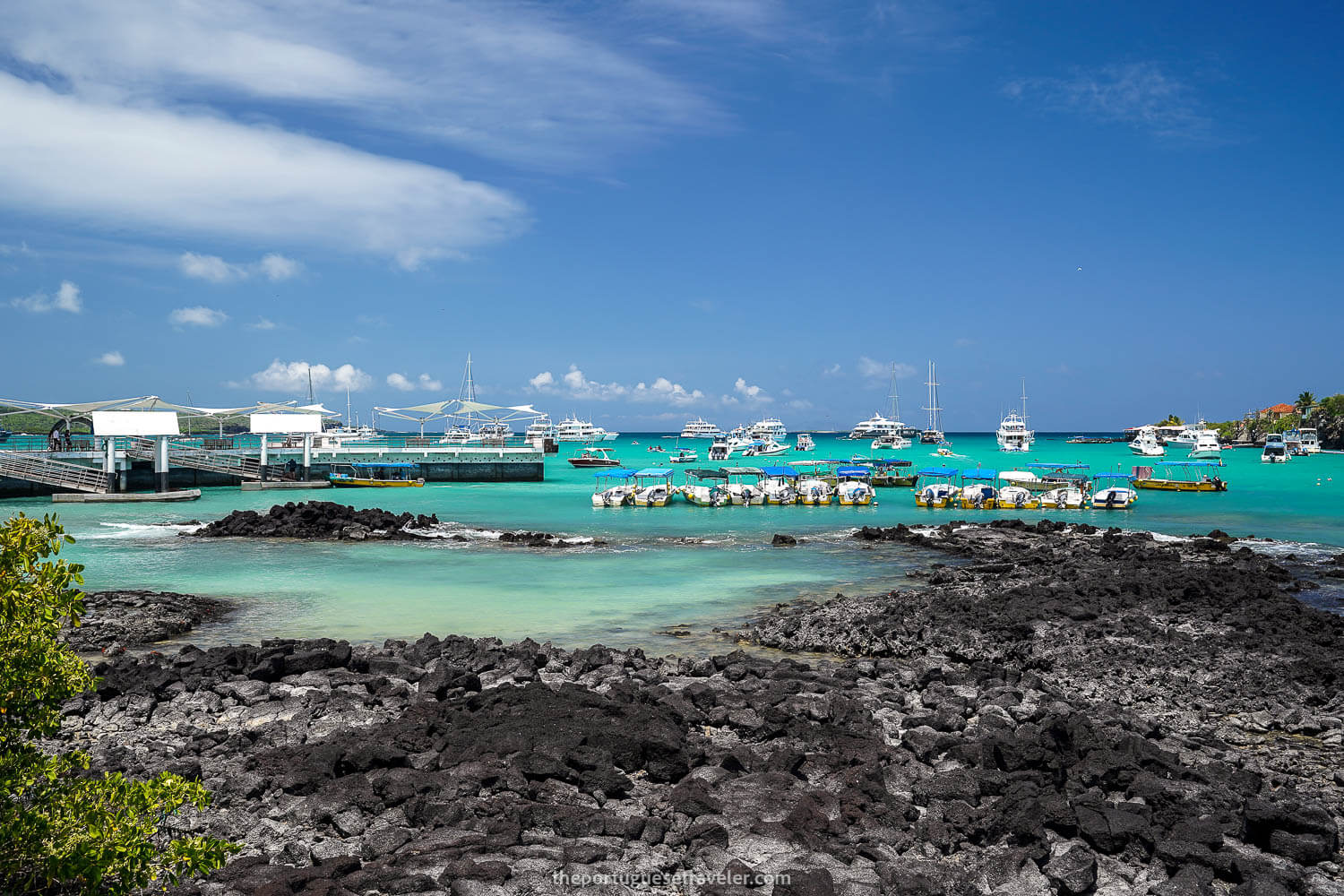
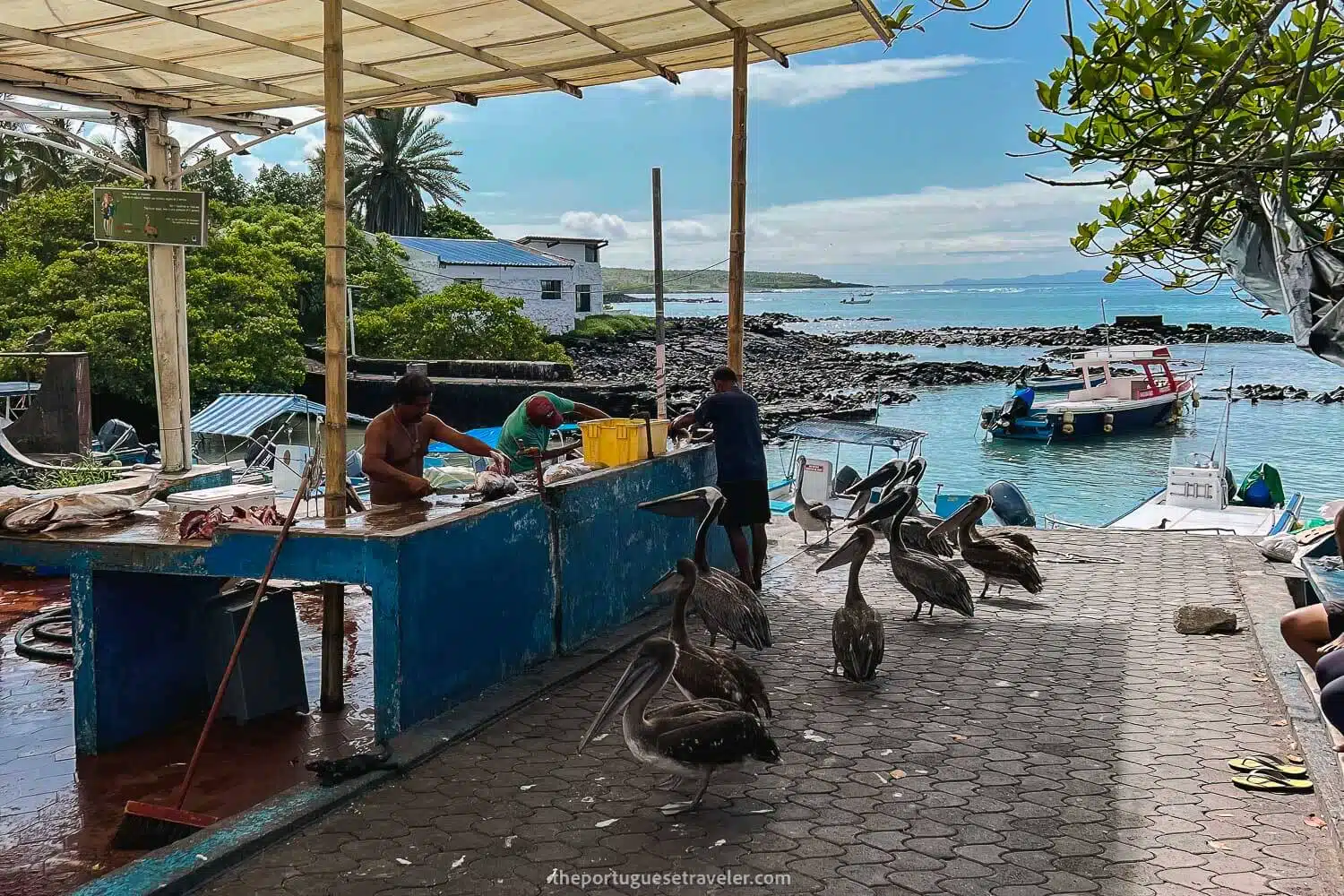
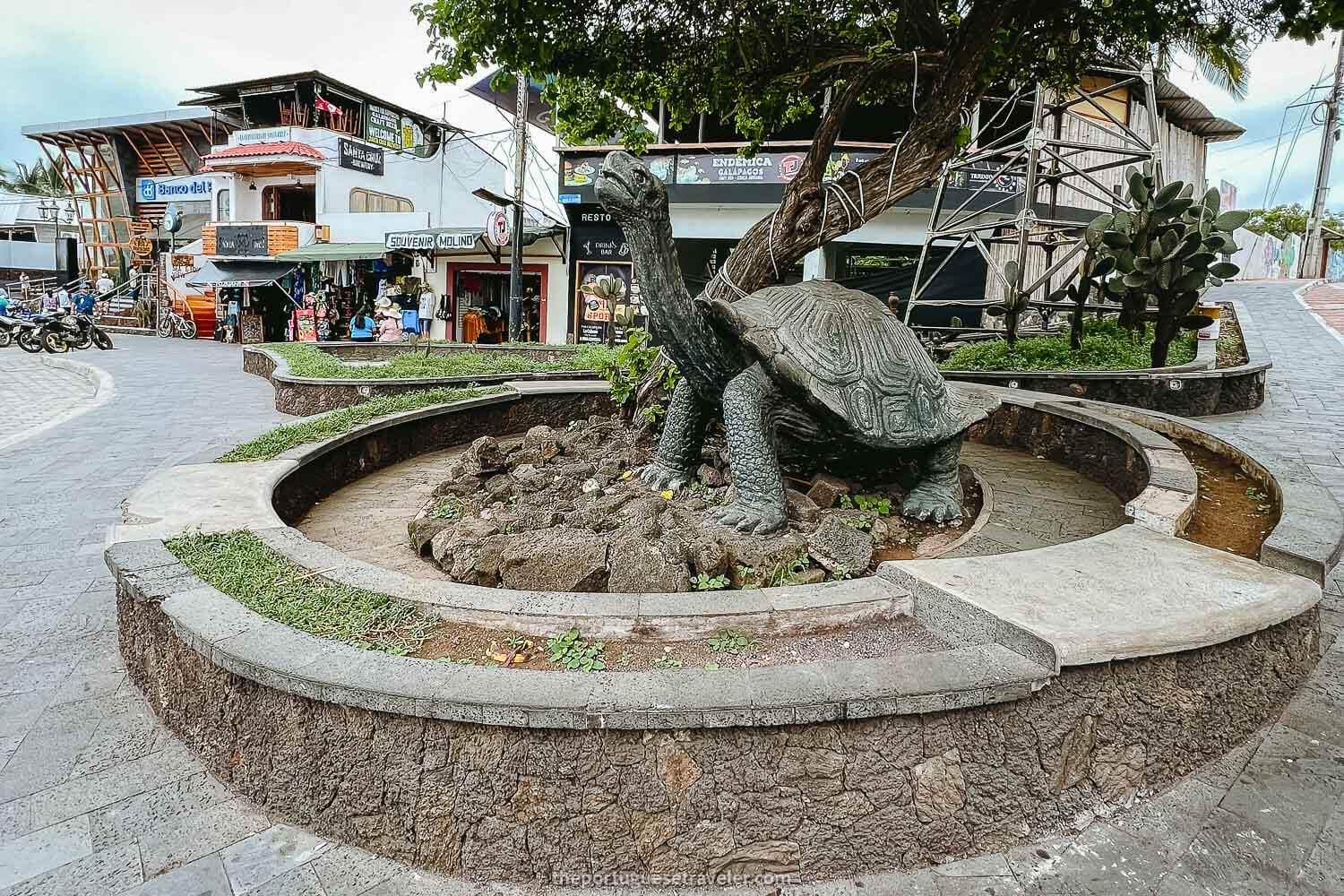
34. La Ratonera Beach
La Ratonera Beach is the most distant beach on the Charles Darwin Research Center complex. For that reason and from being a bit closer to the open sea, it is especially famous for its surfing-quality waves.
This beach has lots of rocks and little sand next to the water and there aren’t usually many people here, it is free and it’s the perfect refreshment after spending some hours at the research station. You can usually find a couple of marine iguanas disguised as rocks around the beach.
View the full blog post here: CHARLES DARWIN RESEARCH STATION
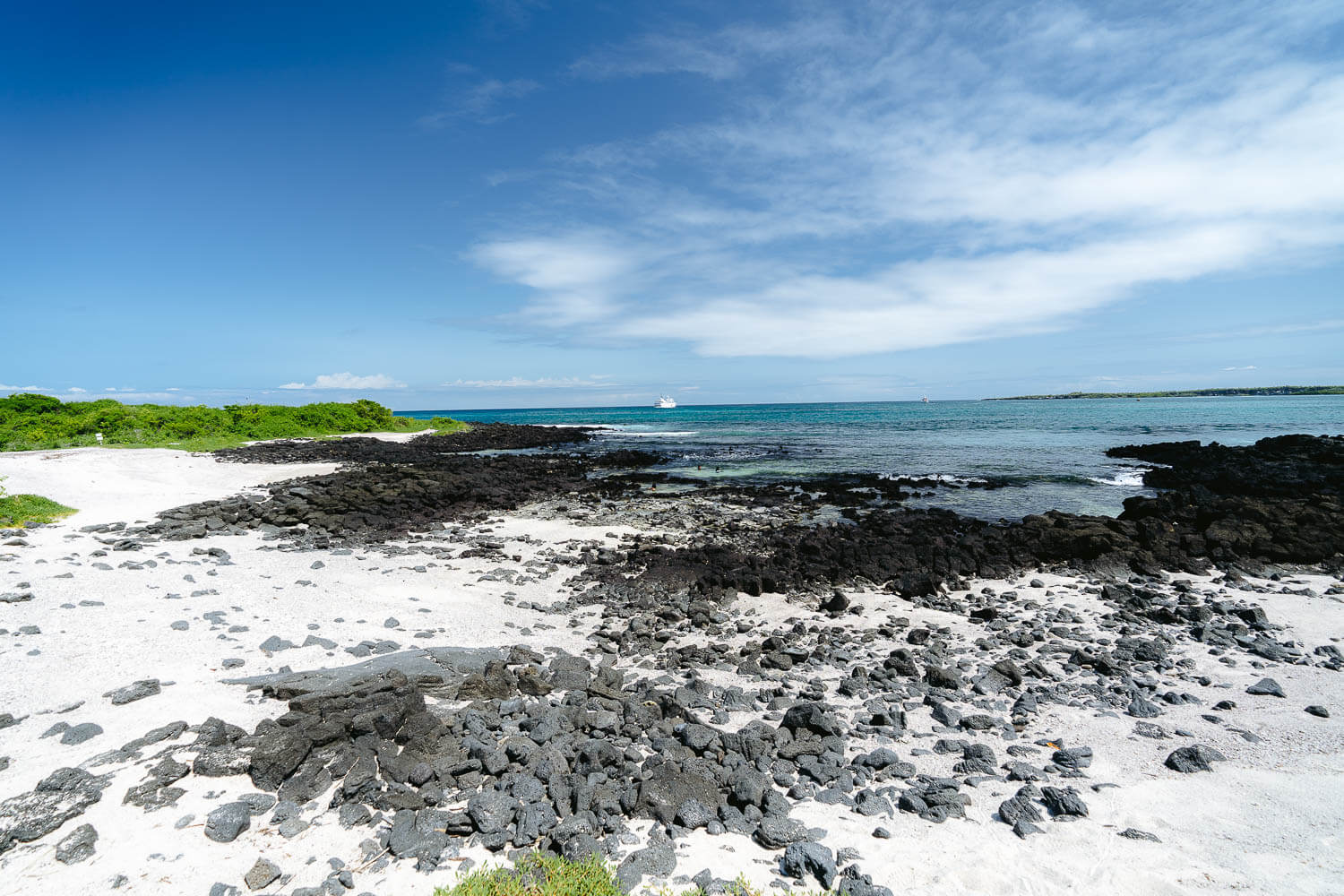
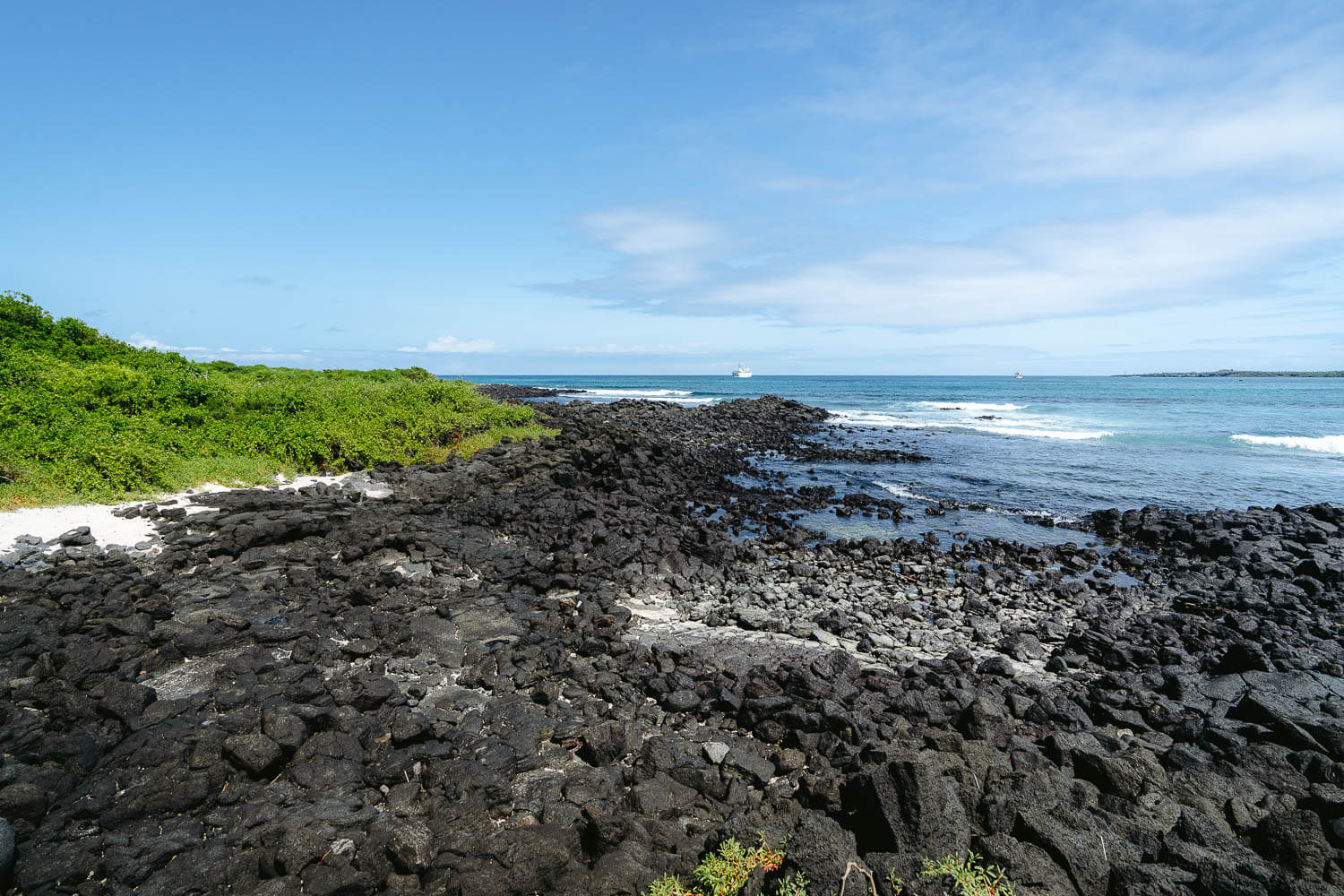
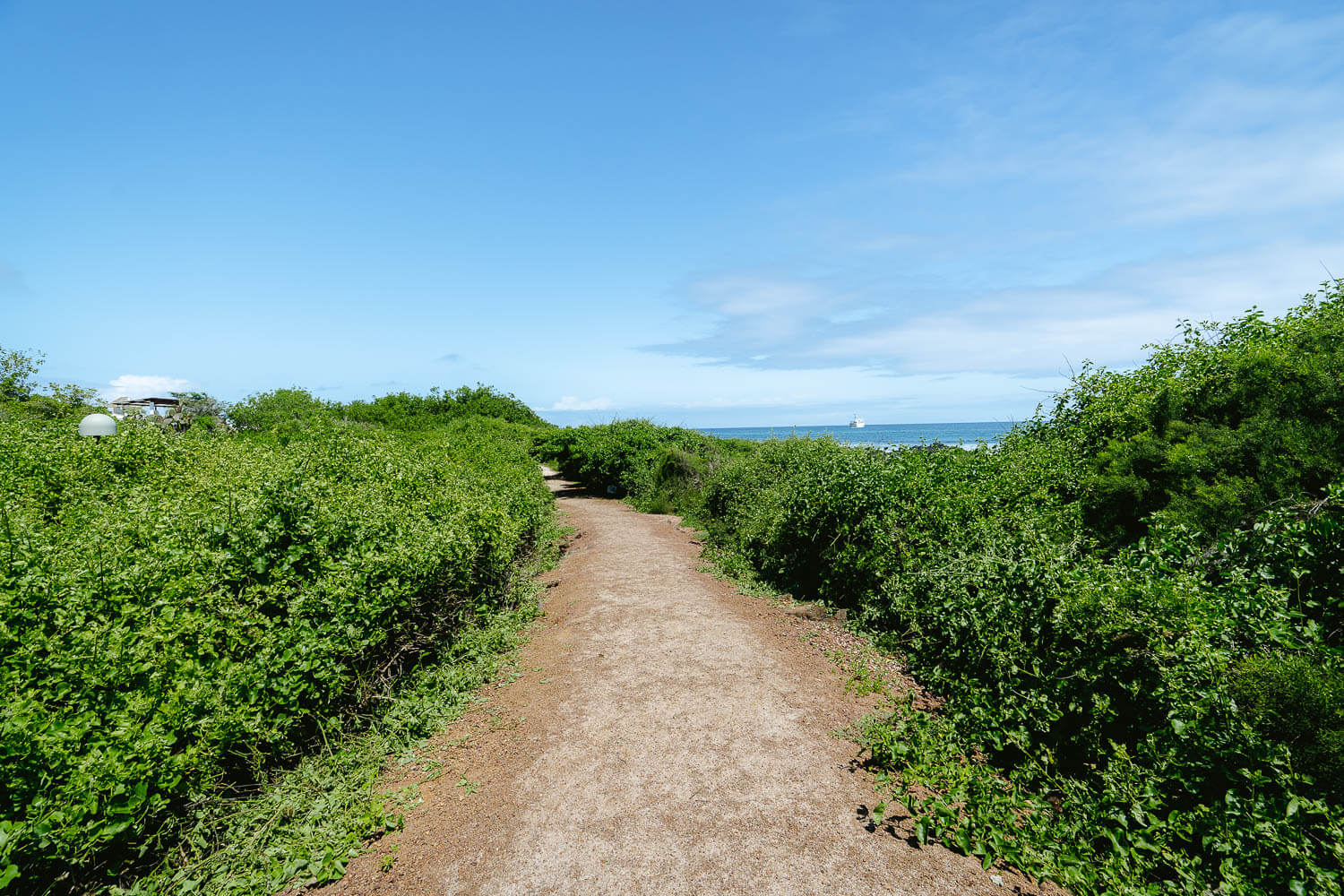
35. Love Channel
The Love Channel or Canal del Amor is a gorgeous turquoise channel sandwiched between lava walls. This is one of the most beautiful places in Santa Cruz mainland. And if you just go to the famous Las Grietas by yourself you’ll probably miss it. It is included nevertheless in a famous tour called the Bay Tour or Tour de Bahia.
It’s called the Love Channel as couples used to come here to have fun. Nowadays it’s forbidden to swim here, but it’s still a beautiful place to appreciate and take some photos, and from the wooden viewpoint, you can observe shorebirds and reef sharks.
View the full blog post here: BAY TOUR IN SANTA CRUZ
To book this tour: Check the local company Galapagos Dreams, or book it online on Viator here: Half Day Bay Tour in Santa Cruz Island
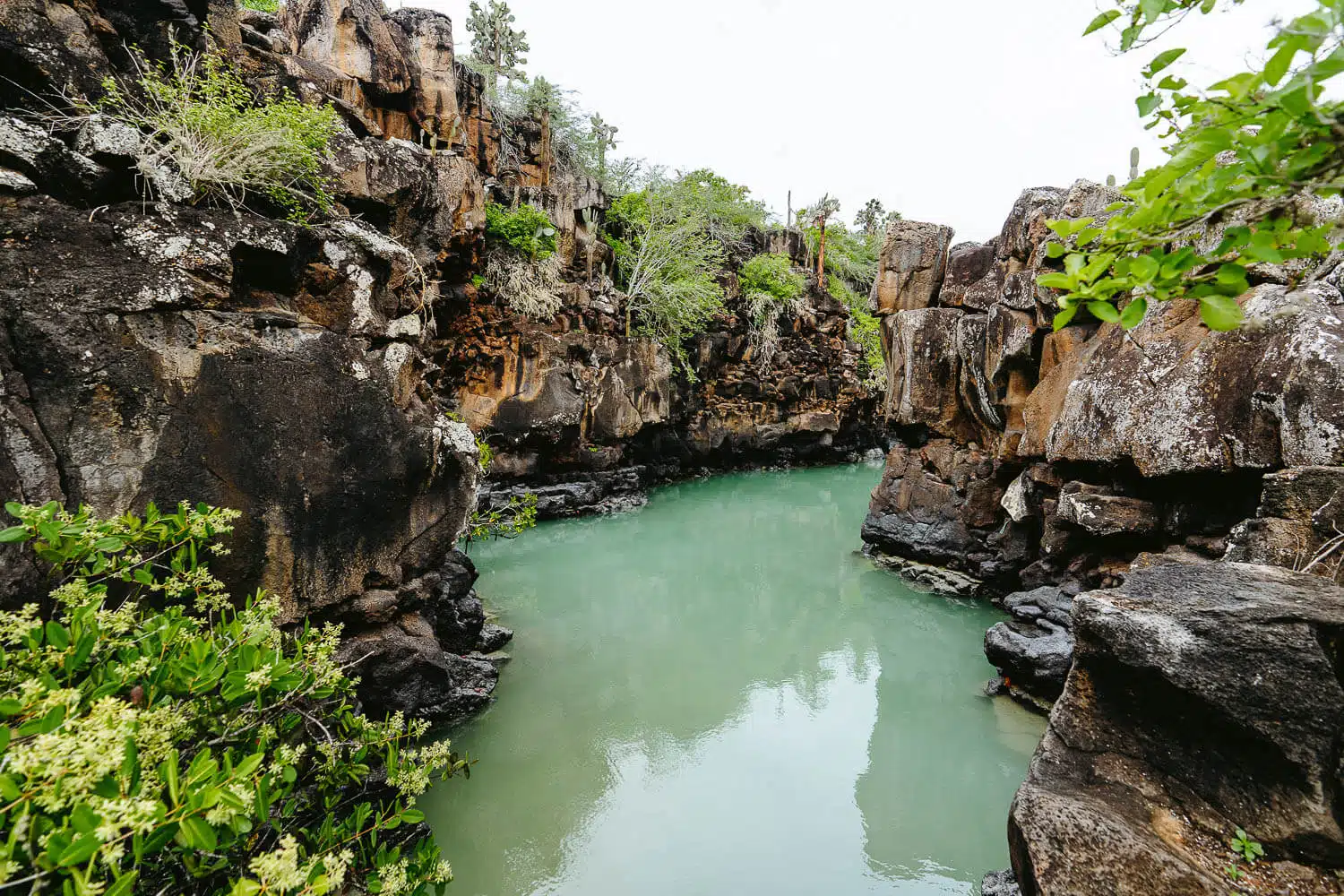
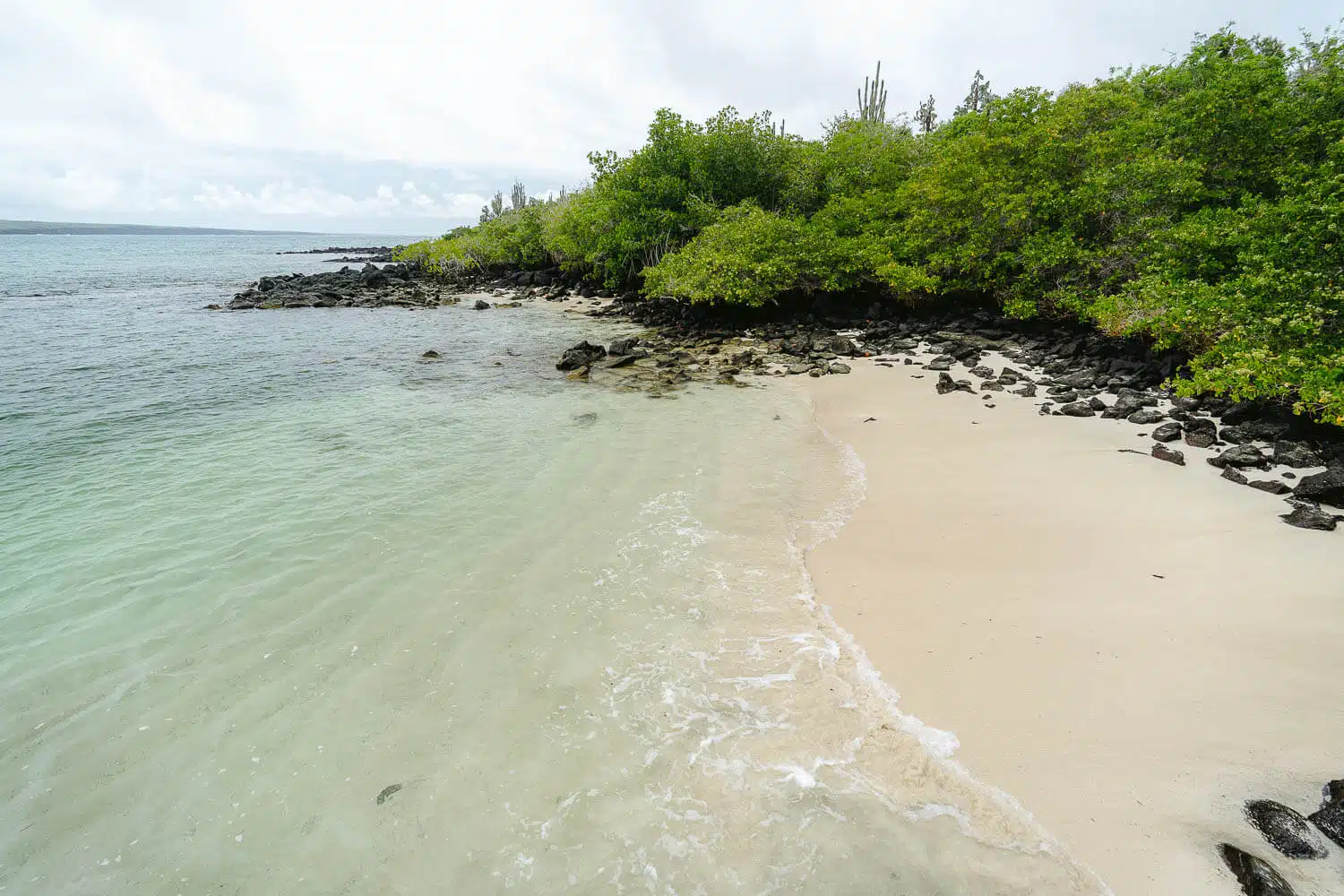
36. Las Grietas
Las Grietas or “The Rifts/Crevasses” is a canyon-like structure filled with water, a lava rock formation of two cliffs separated by an ocean water fissure. Here you can swim and snorkel. The underwater formations are amazing so please bring your snorkel kit.
It’s usually crowded and lately, a minimum price of 10$ USD must be paid at the entrance even if you come without a tour. If you do come with a tour, the most famous one is called “Bay Tour” or “Tour de Bahia” and it also includes the Love Chanel, Playa de Los Perros beach, and Las Tintoreras baby reef-shark pools.
View the full blog post here: BAY TOUR IN SANTA CRUZ
To book this tour: Check the local company Galapagos Dreams, or book it online on Viator here: Half Day Bay Tour in Santa Cruz Island
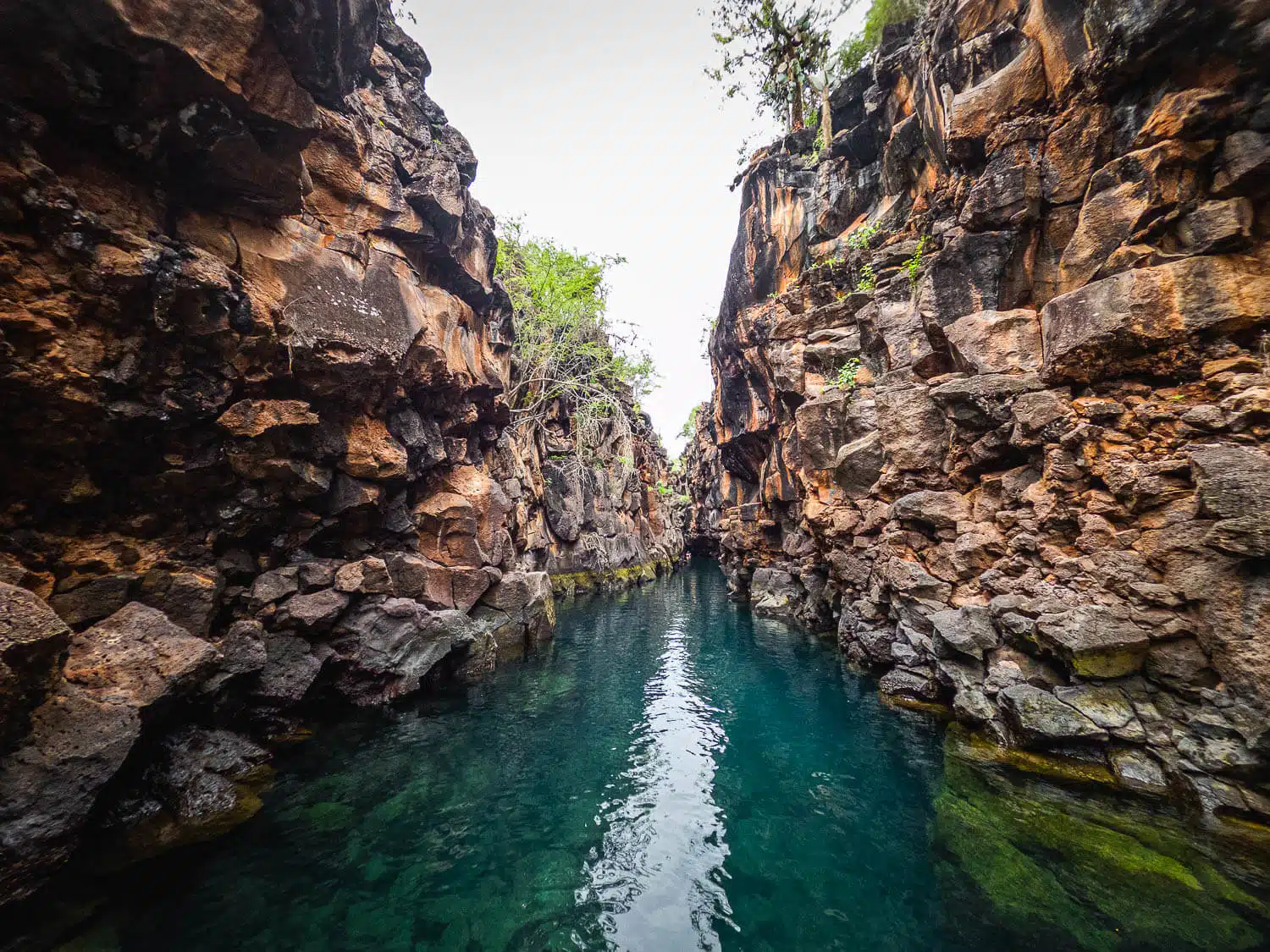
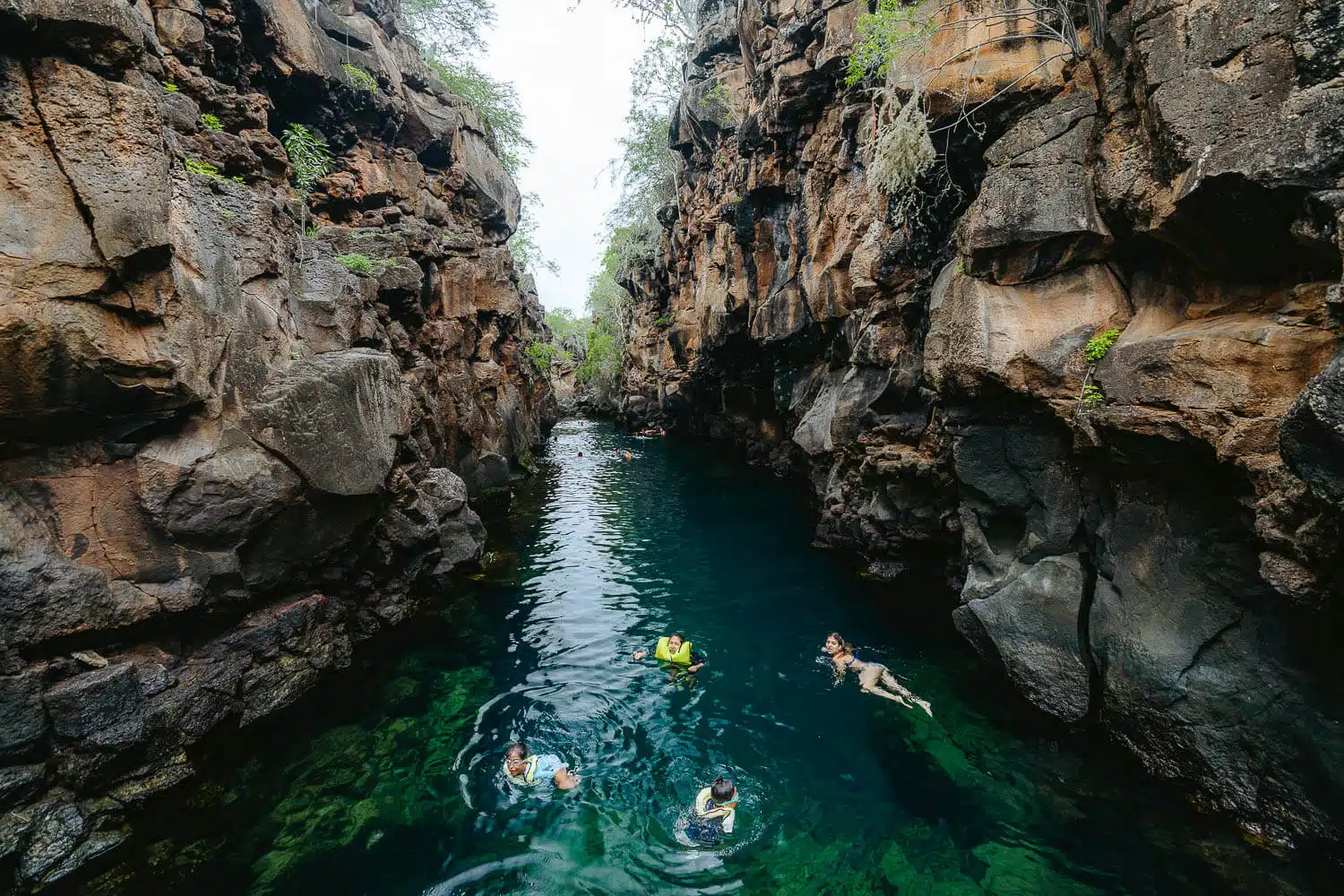
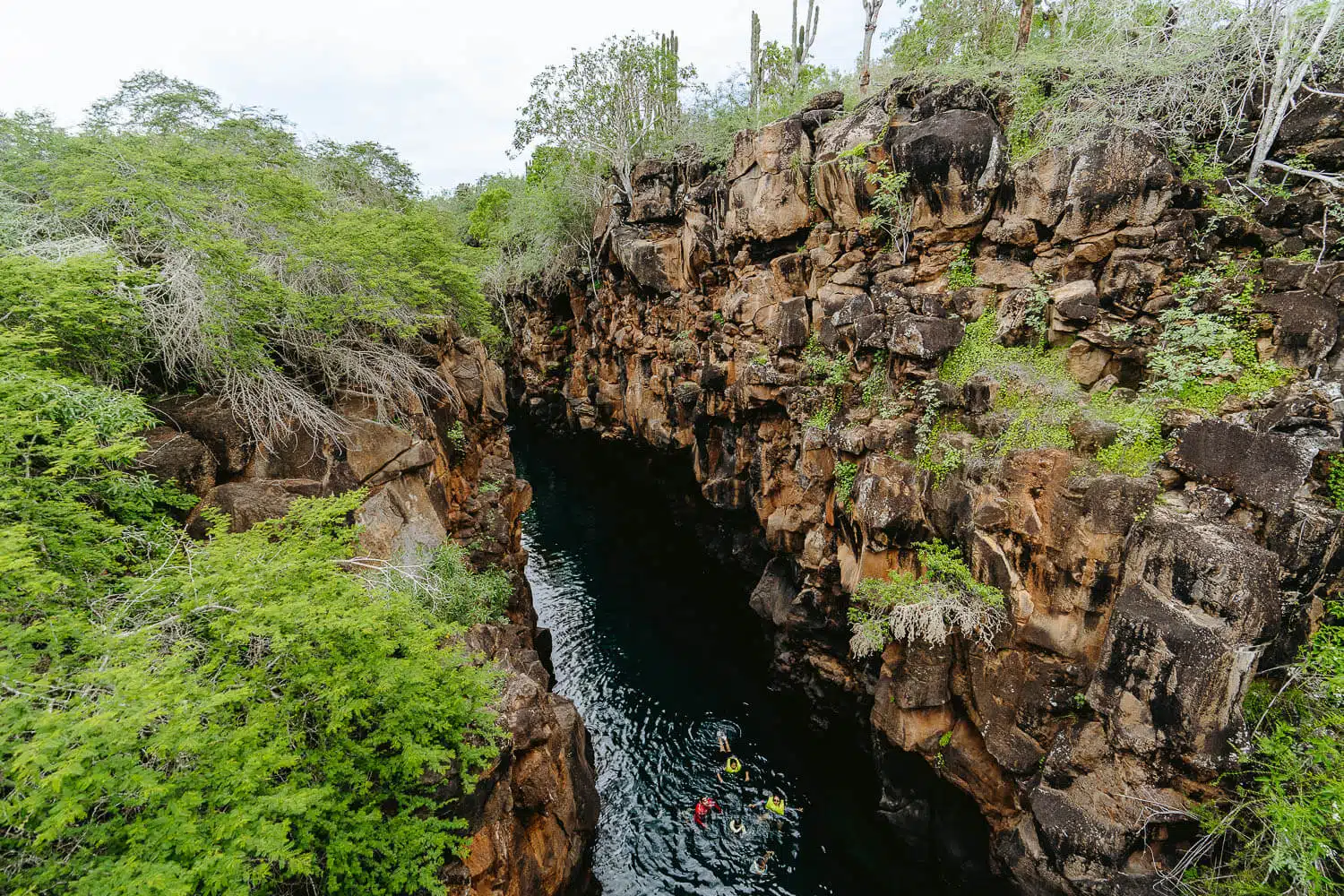
37. Playa de Los Alemanes Beach
Playa de Los Alemanes or Germans Beach is located right next to Las Grietas and it’s the perfect place to come if you want to relax with your family. It is possible to come here for 1$ USD by water taxi from the main port of Puerto Ayora. Try to come on low tide cause the sand almost disappears on high tide. The water is usually very calm and shallow and it’s the perfect spot for snorkeling.
You might be lucky your hotel is nearby and you can come here whenever you want. If it’s not and you come on the Bay Tour you can ask your guide to stay on the beach and later just pay for a water taxi to go back.
View the full blog post here: BAY TOUR IN SANTA CRUZ
To book this tour: Check the local company Galapagos Dreams, or book it online on Viator here: Half Day Bay Tour in Santa Cruz Island
38. Tortuga Bay Beach
The Tortuga Bay beach in Santa Cruz island is for me the most beautiful beach that I’ve visited in the Galapagos islands. Its name comes from this being the place where many turtles come and lay their eggs on the beach. This white-sanded paradise is home to many marine iguanas and baby reef sharks.
Here you can surf, sunbathe, kayak and for sure relax. It is located roughly 3 km southwest of Puerto Ayora town on Santa Cruz island. Tortuga Bay consists of two beaches, the longest one, with waves called Playa Brava (Brave beach), and a smaller and quieter one without waves called Playa Mansa (Tame beach).
View the full blog post here: TORTUGA BAY BEACH IN SANTA CRUZ
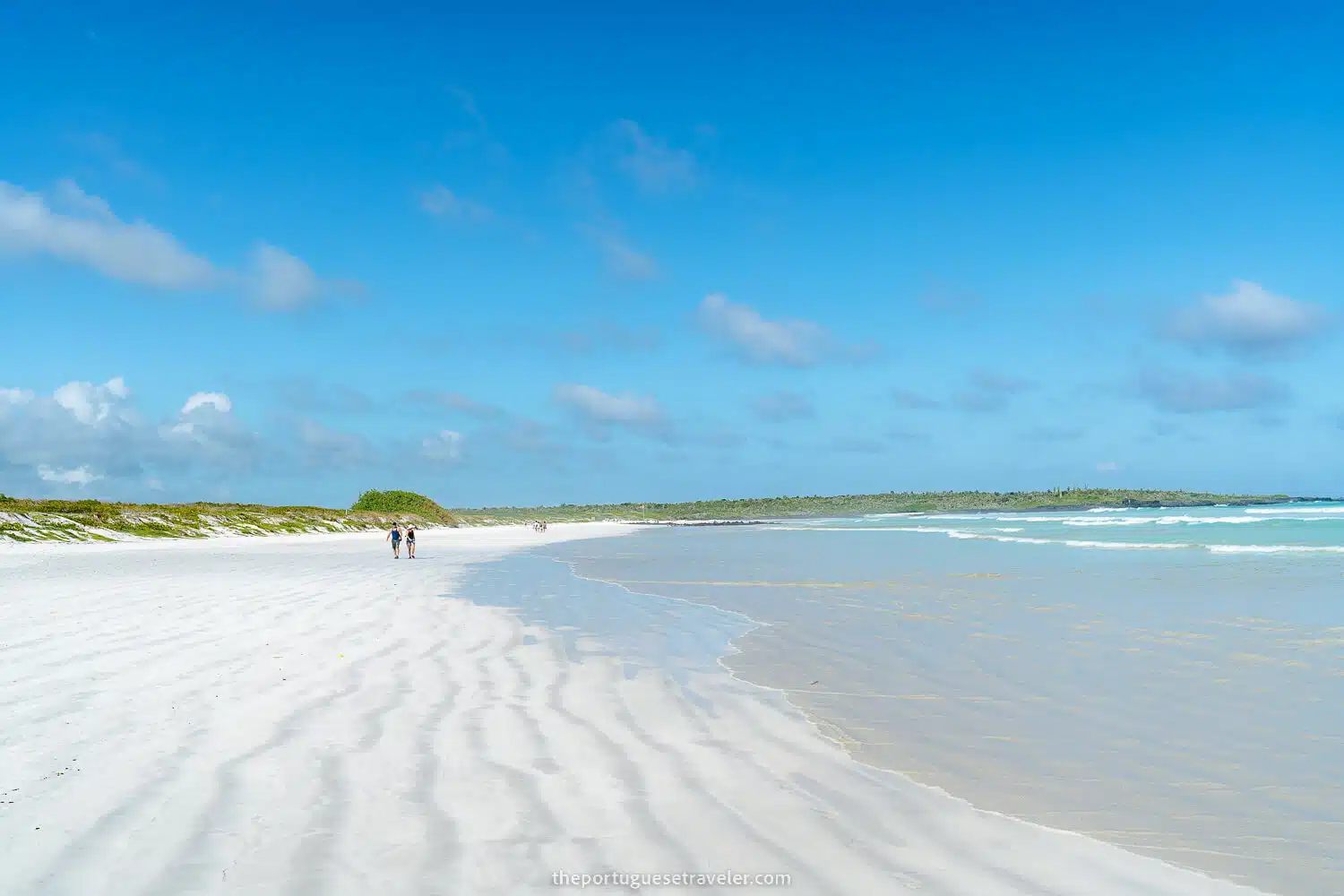
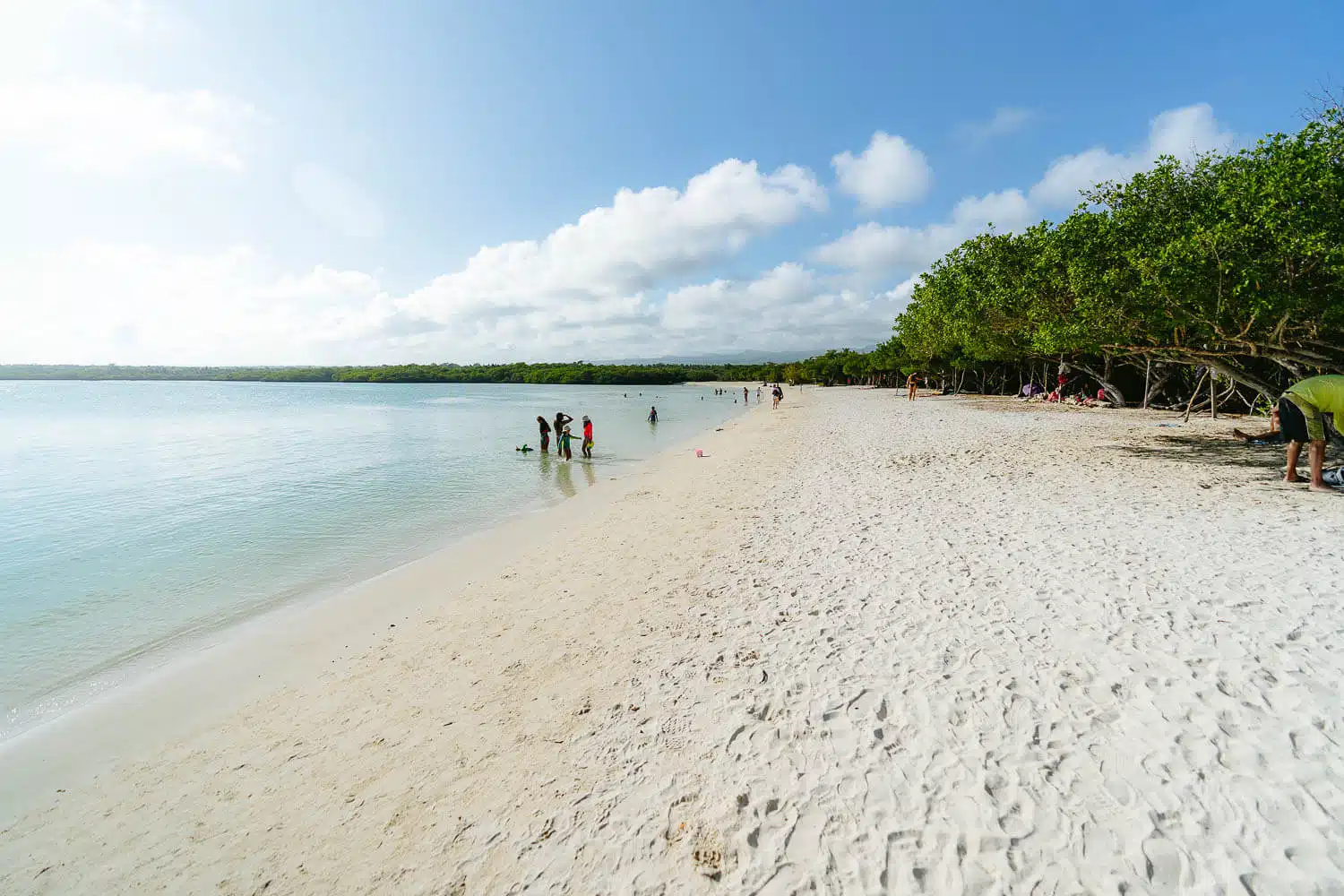
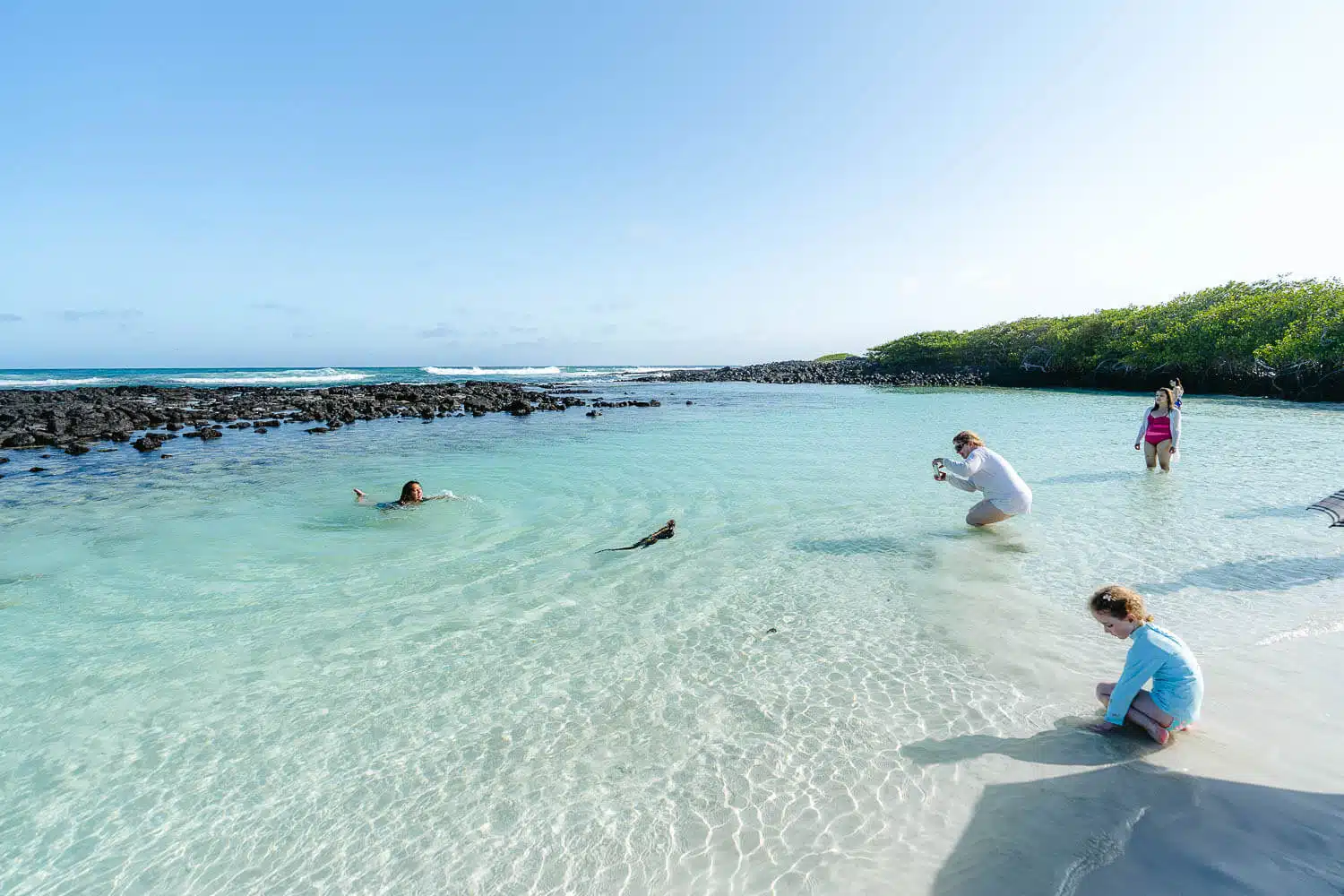
39. El Garrapatero Beach
El Garrapatero is another alternative beach you can go to on Santa Cruz island if you’ve already been to Tortuga Bay. This white-sanded beach has a lagoon next to it usually with many flamingos. On the beach you can swim, kayak, sunbathe and relax. The beach is located 20 km northeast of Puerto Ayora town and to reach it you have to take a taxi and then walk a short path to the beach.
View the full blog post here: EL GARRAPATERO BEACH IN SANTA CRUZ
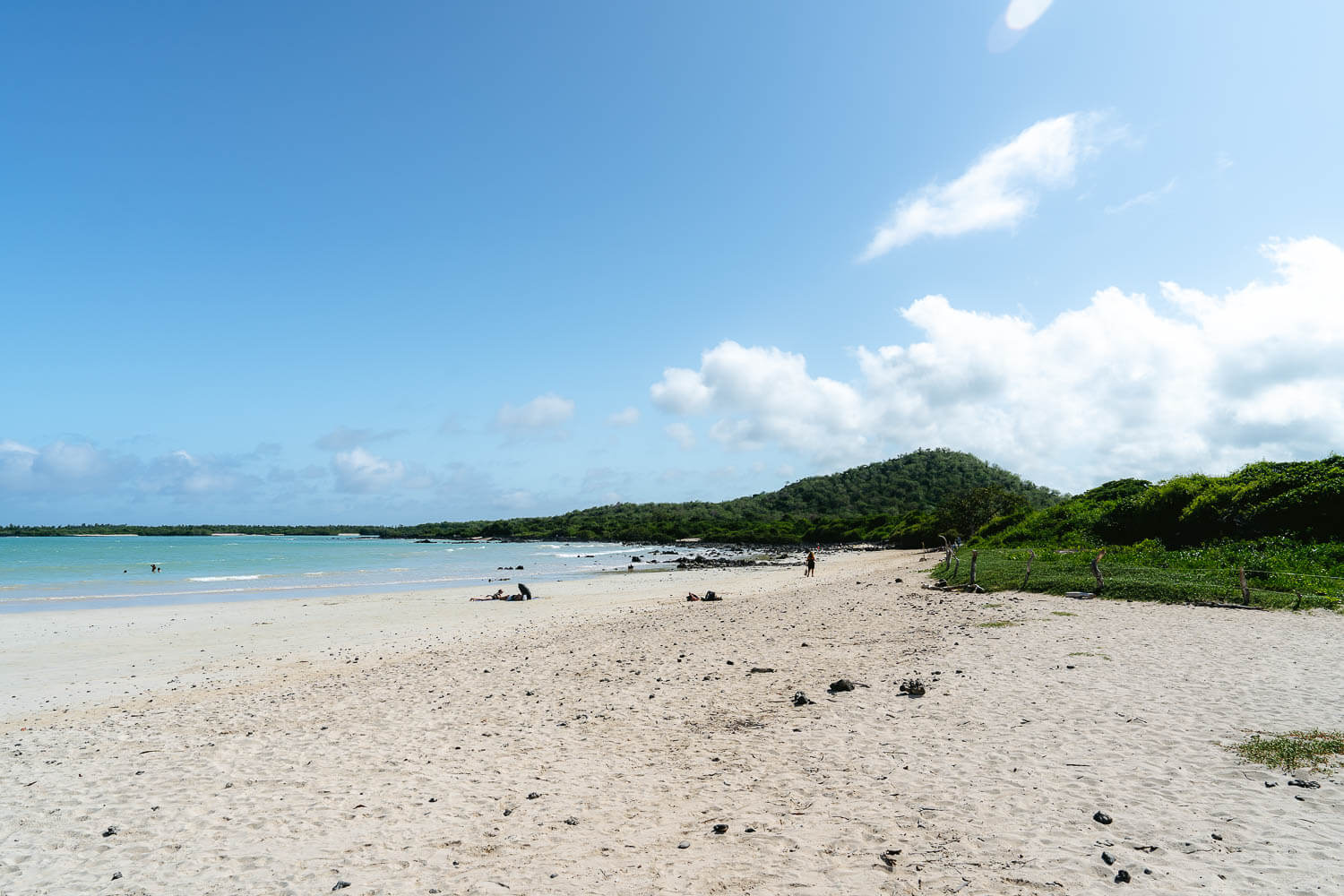
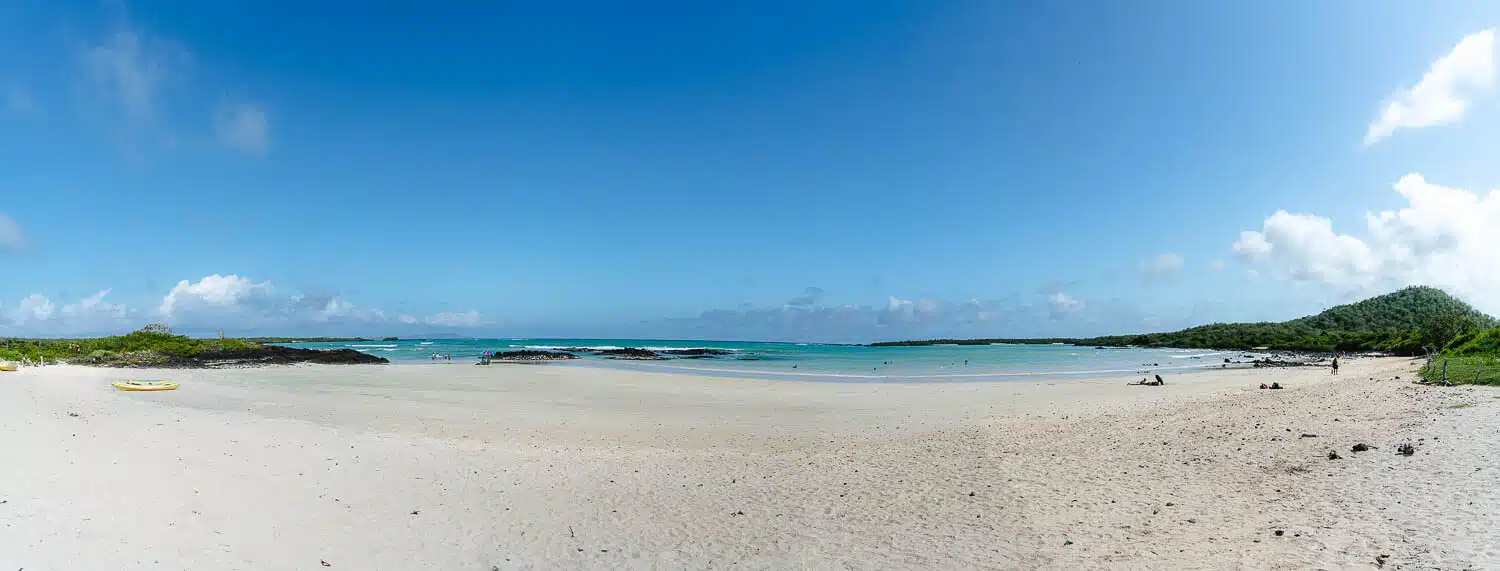
40. Cerro Dragon (Dragon Hill) Tour
The Cerro Dragon or Dragon Hill tour is usually booked with a cruise for its remoteness on the northwestern point of Santa Cruz island. Its main attraction is the multitude of beautiful orange land iguanas and marine iguanas, from where the name Dragon comes from. You will also see many Opuntia giant cacti and probably a lot of flamingos and other birds. On some of the tours you can snorkel and you might see baby reef sharks and sea lions.
Here I’ll leave you some companies whose yachts pass there: Letty by Ecoventura, Celebrity Xpedition by Celebrity Cruises, Explorer II by EQ Touring, La Pinta and Isabela II by Metropolitan Touring.
To book this tour please check with the tour agencies on the island, I couldn’t find any online that I could honestly suggest to you apart from the cruises.
41. Hike to Media Luna, Puntudo and Cerro Crooker Hill
This is probably the only proper wild hike you can do on Santa Cruz island that doesn’t require a tour. You first need to go to Bellavista by taxi and then start your hike uphill to the middle of the island’s highlands. It’s an 8 km hike until the base of Cerro Crooker hill and it should take you around 3 hours each way.
You will have beautiful views over the entire island’s volcanic hills. Here you can see the miconia vegetation of the island and the Galapagos Petrel bird that nests on these mountains. Please don’t go off track as you can destroy some of the nests or get lost.
42. Coffee Tour at
"El Trapiche Ecológico Galapagos"
This is probably one of the tastier activities you can do on Santa Cruz island. Yes, there is coffee produced solely in Santa Cruz. I’ll be honest, the coffee I tasted in San Cristóbal was tastier than the one from Santa Cruz, but I’m not sure it was from this farm, so maybe their coffee is as amazing as San Cristobal’s one. Give it a try!
To book this tour contact them at:
43. Surf in Santa Cruz
Although San Cristóbal is more famous for surfers than Santa Cruz island, there are also incredible spots here for surfing. Accessible by foot you can go to Tortuga Bay, La Ratonera beach, Tres Picos, Playa el Bazan beach, and Piedra Ahogada. Then there are other more remote places that you can only access by boat, like Ola Escondida, Punta Gallina, and Punta Nuñez.
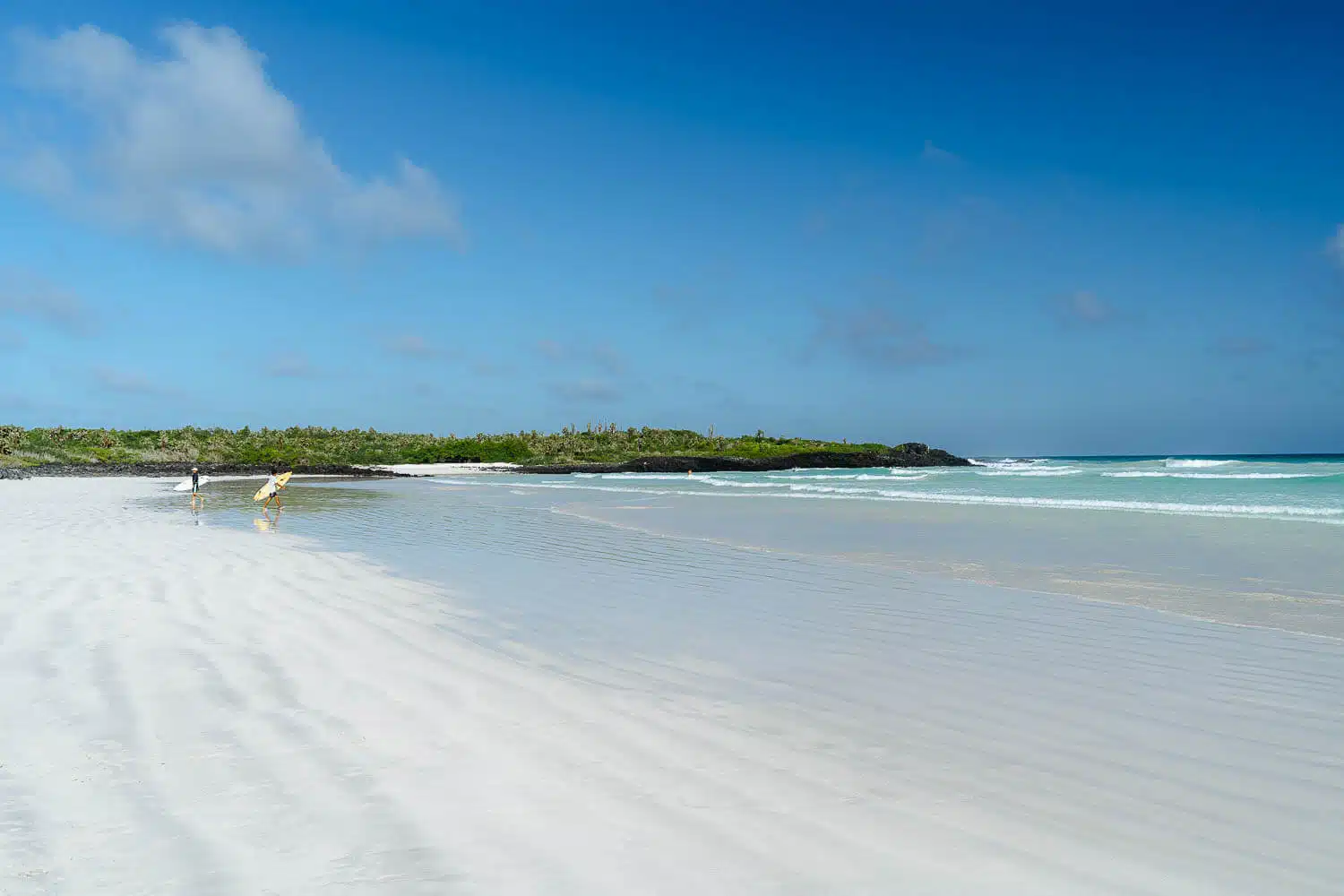
44. Bartolomé Island - Day Trip
The Bartolomé Island Tour is the most iconic tour you can do on the Galapagos islands. You will go on a gorgeous sailing ship starting at Santa Cruz island, passing through the Daphne islands, and arrive at the beautiful Bartolomé island, almost an islet from Santiago island. With luck, you might spot some penguins as we did and then you go snorkeling on one of the paradisiac beaches in the near.
The name of the island comes from Charles Darwin’s friend Bartholomew James Sullivan who was the principal surveyor and second lieutenant aboard the HMS Beagle. Bartolomé is a volcanic tuff islet on the east side of Santiago island. It is the most photographed place in the Galápagos archipelago.
View the full blog post here: BARTOLOMÉ ISLAND TOUR
To book this tour: Check the local company Galapagos Dreams, or book it online on Viator with any of the tours underneath:
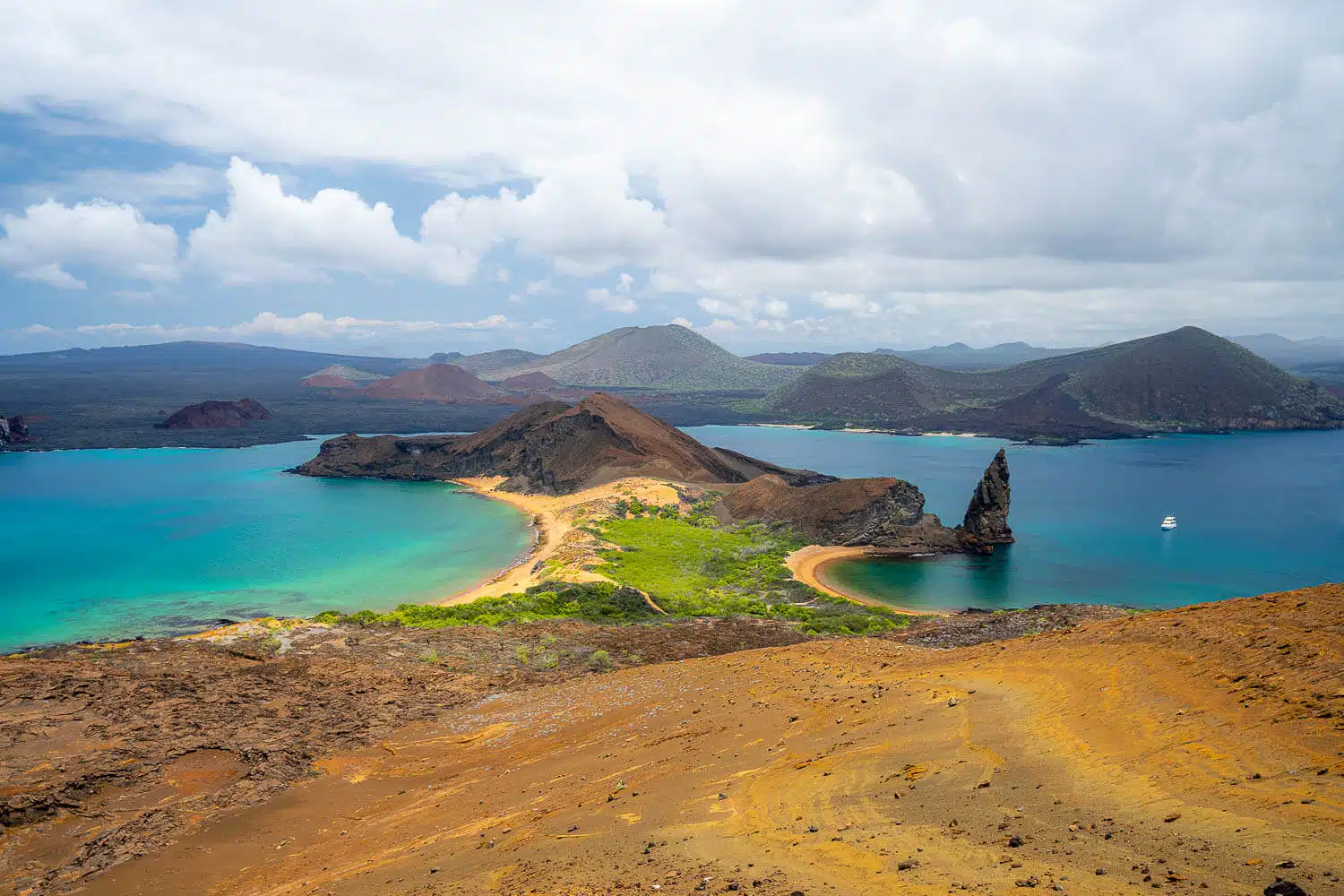
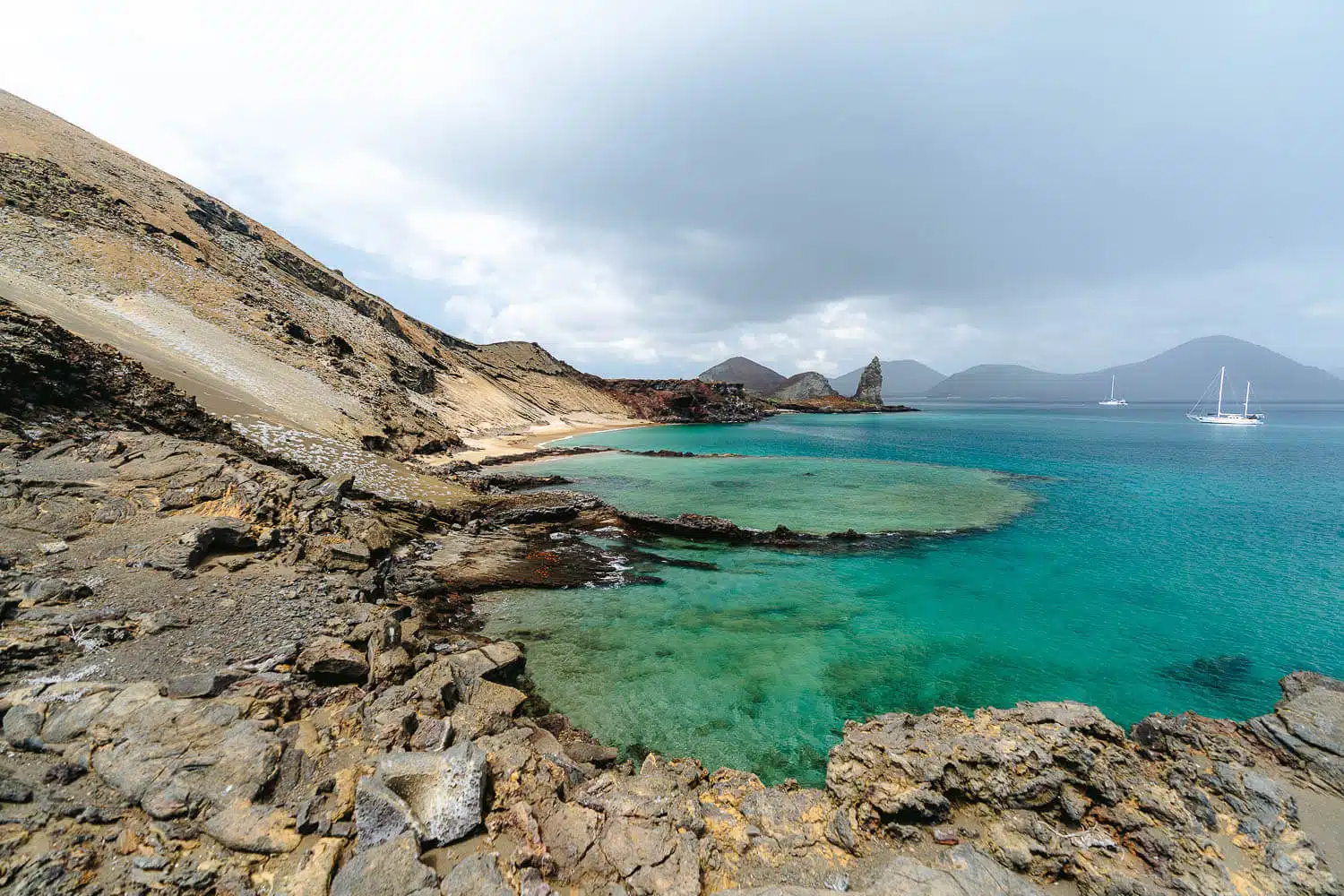
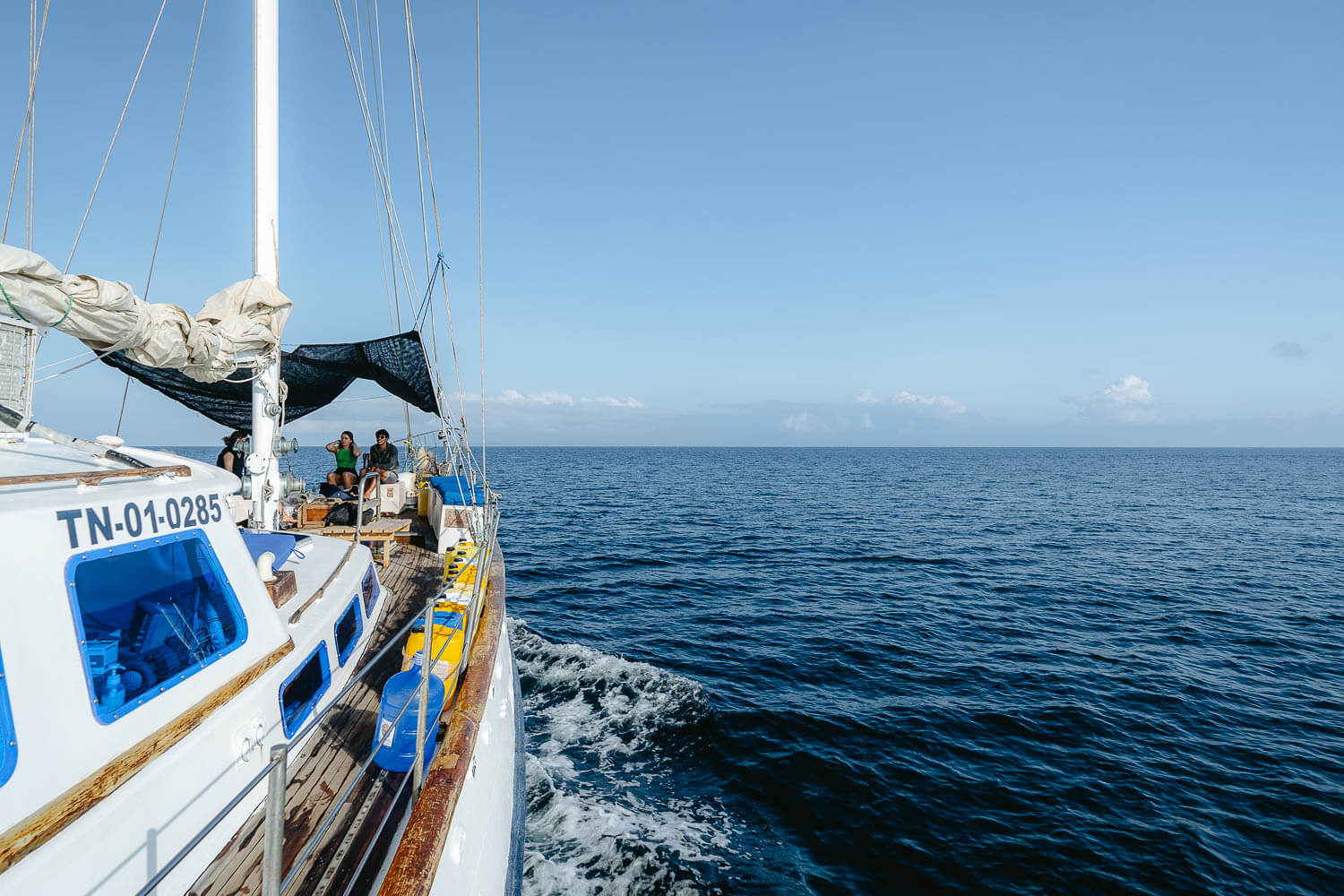
45. North Seymour Island - Day Trip
North Seymour island is located on the north part of Santa Cruz island, over Baltra island (aka South Seymour island). You will see just like in Cerro Dragon hill (on the northern part of Santa Cruz) and on Baltra island, beautiful orange land iguanas, blue-footed boobies, frigate birds, marine iguanas, and probably sea lions.
Both North and South Seymour Islands were named after the British royal navy officer of the late 18th century, Admiral Lord Hugh Seymour. If you’re more fond of scuba diving, I wrote a full article on my dive here that I’ll link underneath.
View the full blog post here: DIVING IN NORTH SEYMOUR AND MOSQUERA
To book this tour: Check the local company Galapagos Dreams, or book it online on Viator with any of the tours underneath:
46. Isabela Island - Day Trip
Isabela island is the third main island of the archipelago and it happens to be the biggest one of the three. If you have time I do recommend you to actually go and sleep there and start your tours from there, Isabela island’s landscape is wonderful. Two-thirds of the island is unoccupied and you can’t visit it unless you go on a National Geographic expedition or some scientific research trip of a sort.
Most of the Isabela day tours include the Tintoreras islets activity, there you will snorkel next to Puerto Villamil town (Isabela’s “capital”) and you will probably see some penguins and reef sharks. Personally, I would suggest you speak to the Galapagos Dreams travel agency and tell them you’d prefer to go to Los Túneles instead of Tintoreras Islets, for there you can see amazing underwater lava structures and wildlife.
They can probably organize it and you pay a little more (the Los Tuneles tour is more expensive and far away than Tintoreras, but is so worth it). If you don’t have the time or don’t want to bother here are a couple of Isabela days tours you can book from Santa Cruz.
To book this tour: Check the local company Galapagos Dreams, or book it online on Viator with any of the tours underneath:
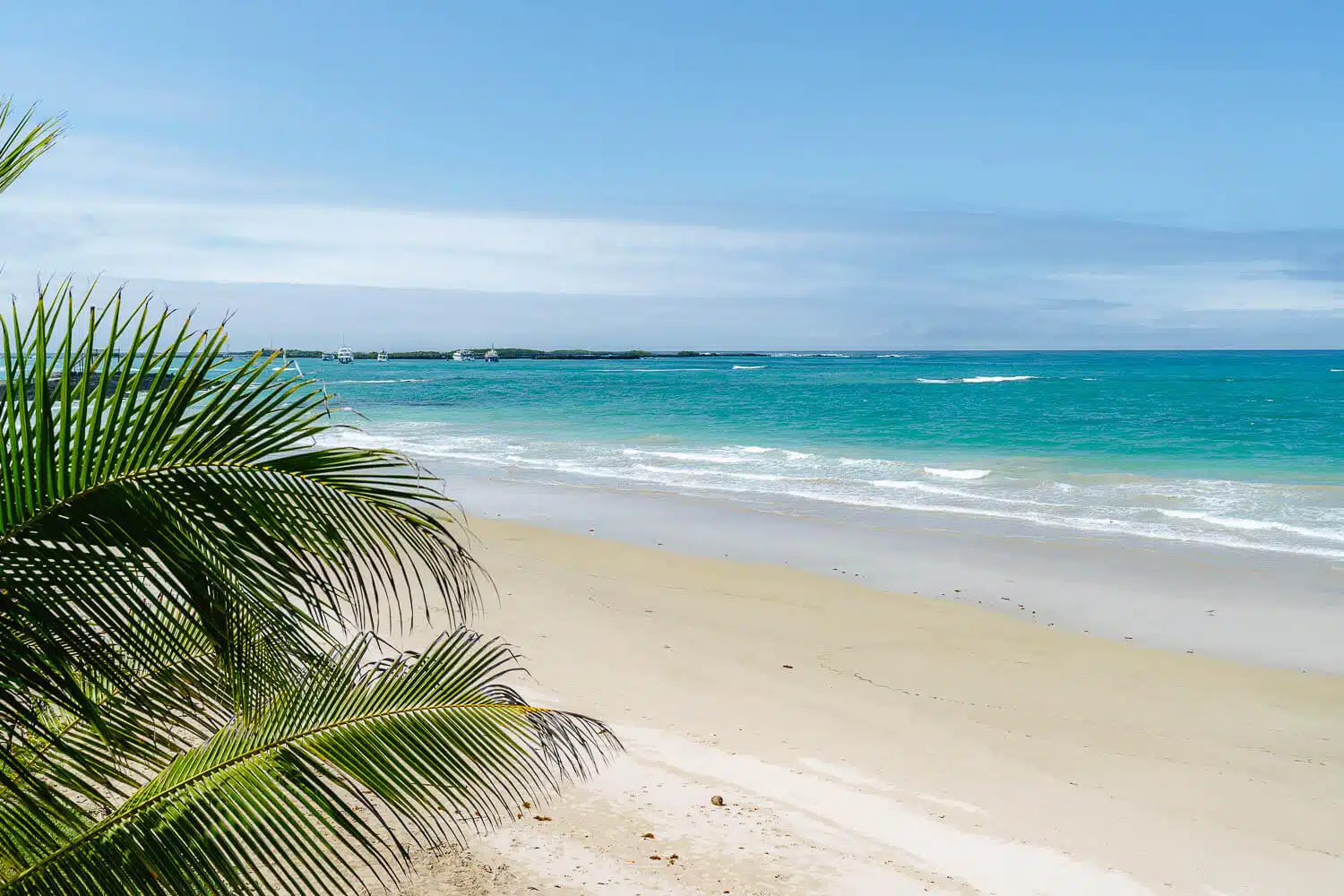
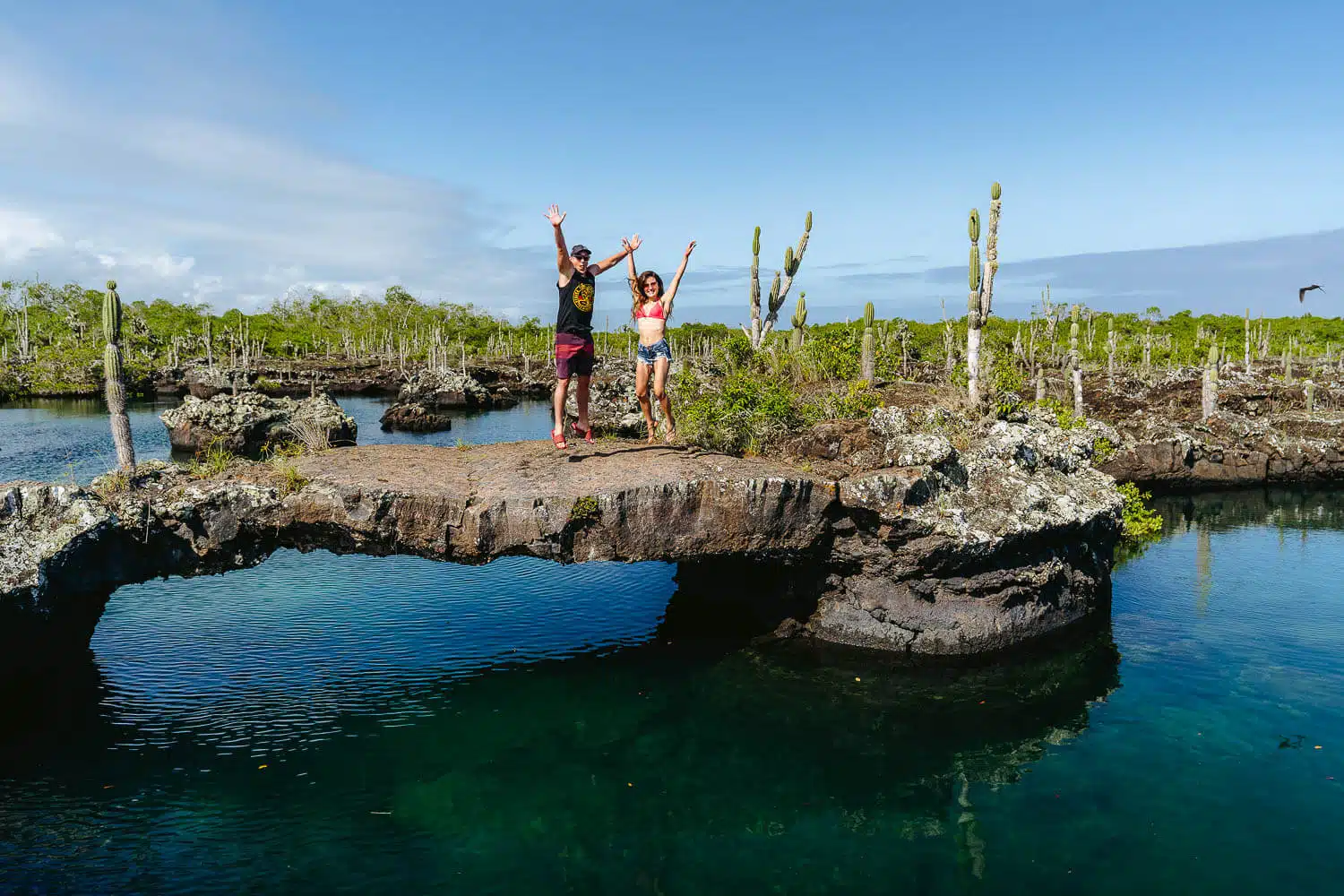

47. Floreana Island - Day Trip
The Floreana Island Tour is the most mysterious and at the same time beautiful tour, you can do on the Galapagos Islands. From tales of piracy, an Austrian baroness and her love trio, a German toothless doctor, and murder this island has it all.
This tour has to be done with an agency or you can alternatively take a boat to Floreana island and spend multiple days there, as there is some infrastructure on the island (not like in Bartolomé Island where you can only visit it on a tour).
The name of the island comes from Ecuador’s first president Juan José Flores, whose administration officially recognized the Galapagos islands as part of Ecuador’s territory. Previously the island was called Charles island (after King Charles II of England) and Santa Maria island (one of Columbus’s caravels). Floreana is the 4th and last island with human settlements in the Galápagos archipelago.
View the full blog post here: FLOREANA ISLAND TOUR
To book this tour: Check the local company Galapagos Dreams, or book it online on Viator with any of the tours underneath:
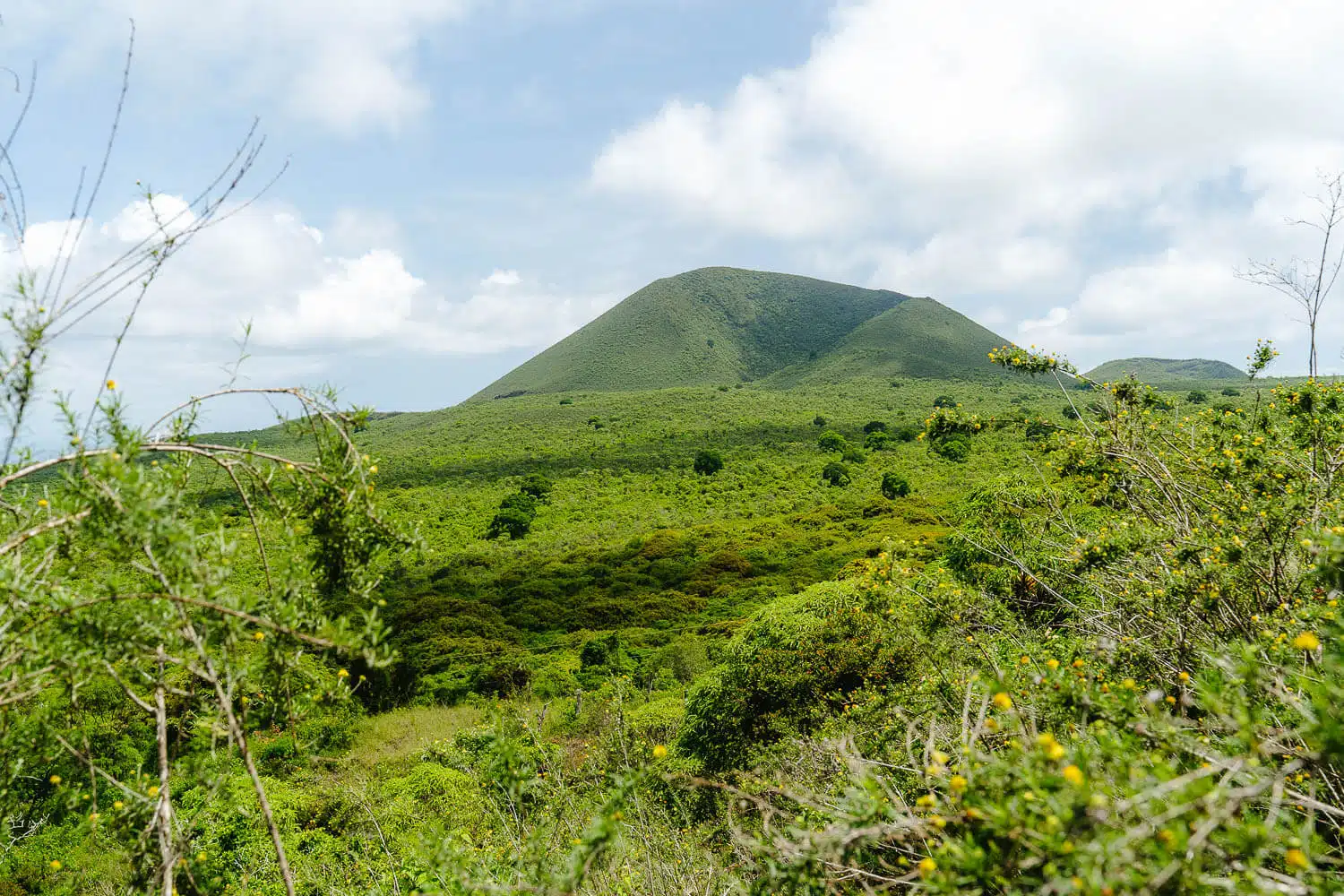
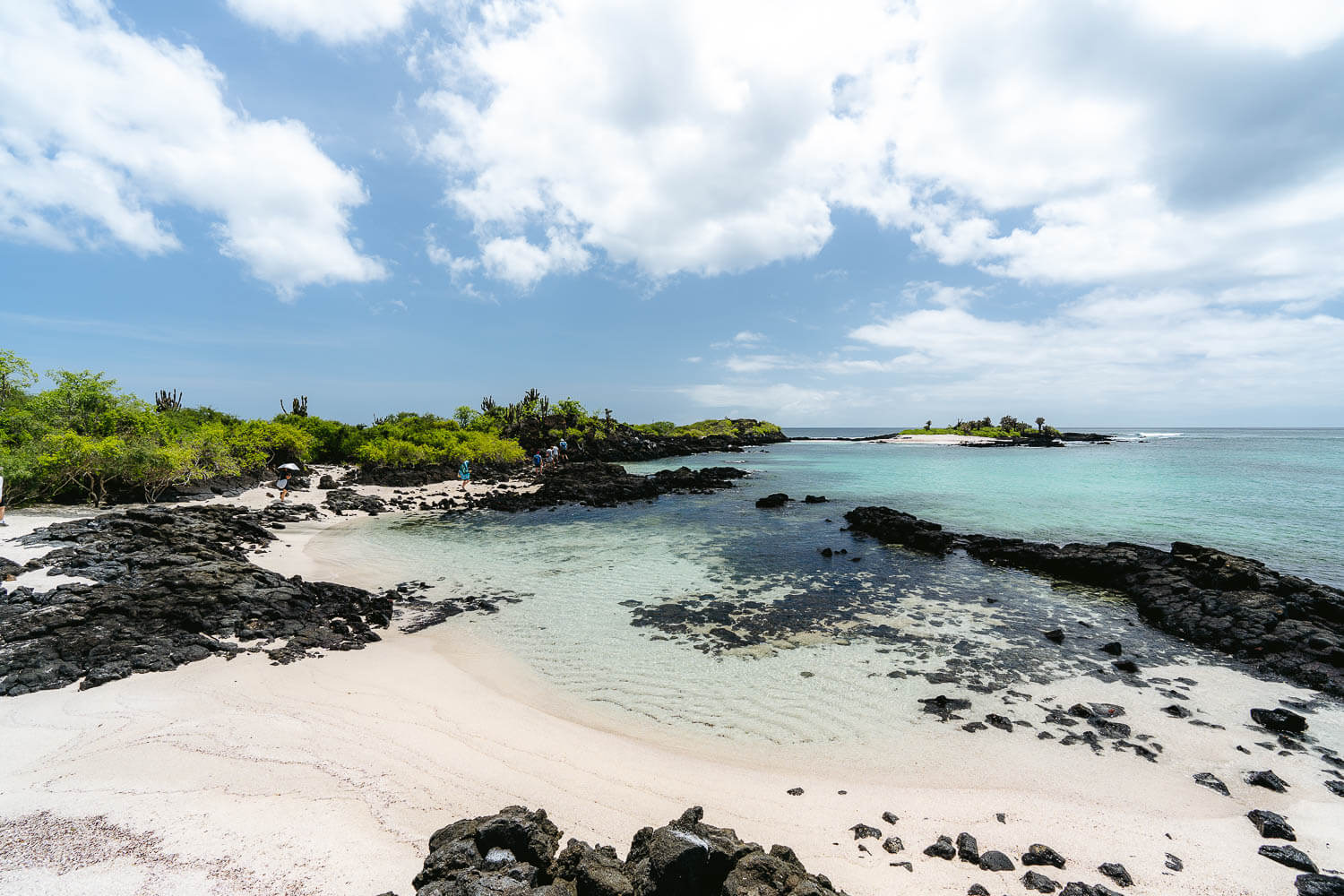
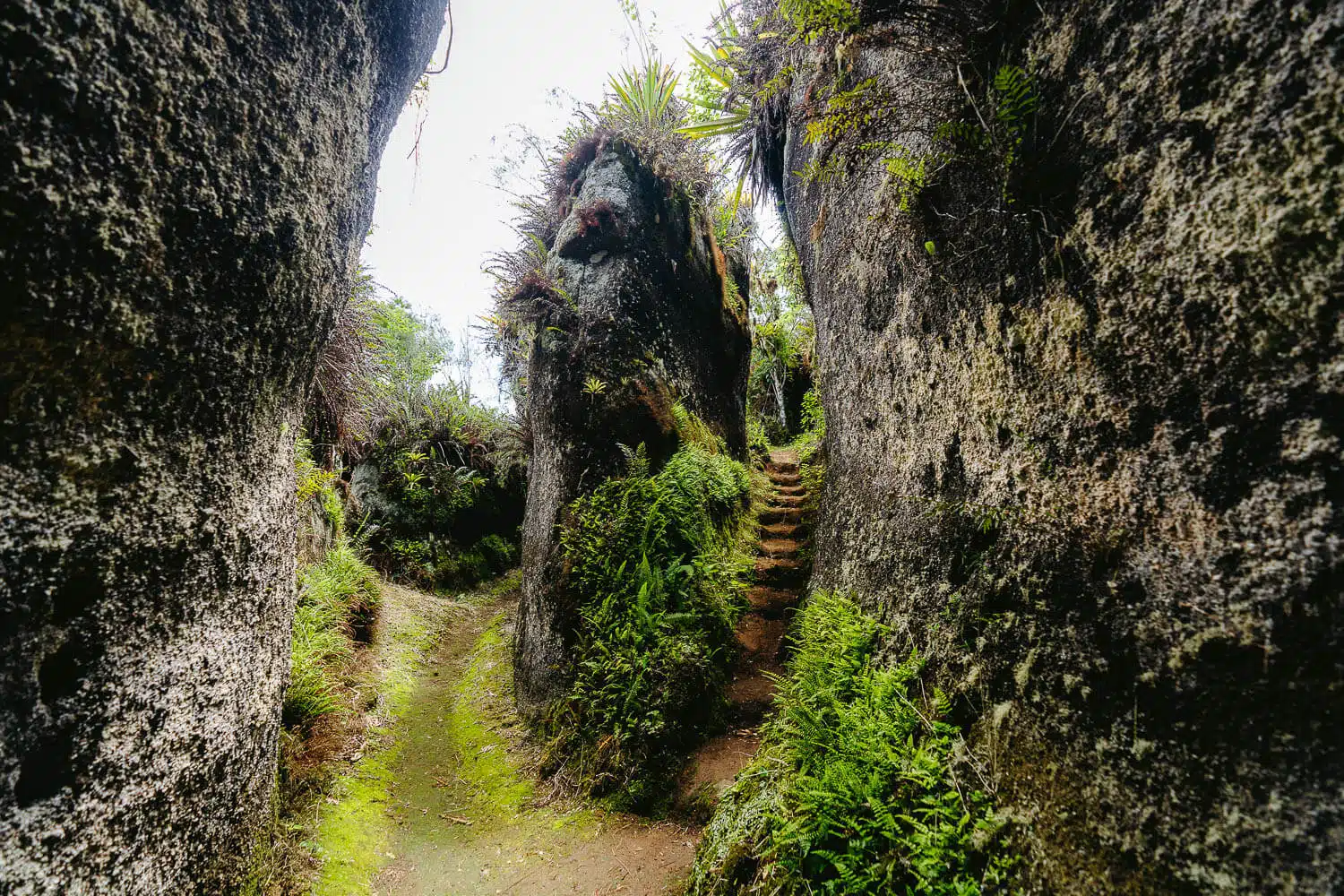
48. Plazas Islets - Day Tour
These are two of the many uninhabited islets in the Galapagos. They were formed by an uplift of the seabed giving it its flat but very unique shape. They are located on the northeastern side of Santa Cruz island.
The visit is in the channel between the North and South Plaza islets, in the part where the islet slopes a little towards the water. There are many opuntia cacti and very beautiful red low-ground vegetation. On this tour, you will see many iguanas, swallow-tailed gulls, and blue-footed boobies. You end up on the tour snorkeling at Punta Carrion where you will see a plenitude of marine life.
To book this tour: Check the local company Galapagos Dreams’s website, or book it online on Viator here: Day Trip to South Plaza Island from Puerto Ayora
49. Santa Fé Island - Day Trip
Santa Fé is one of the biggest islands in the Galapagos and it’s located just 20 km away from Santa Cruz. For that reason, it’s usually part of the daily tours available from Santa Cruz. The island is known for its large colony of sea lions that live on the two beaches and it’s giant opuntia cacti.
You will probably find the endemic Santa Fé island land iguanas (yellow colored), blue-footed boobies, frigatebirds, and other seabirds. After the walk, you can snorkel from the boat and spot amazing marine life. If you’re interested there are also pure snorkeling and scuba diving tours to Santa Fé.
To book this tour: Check the local company Macarron Scuba Diver’s website, or book it online on Viator with any of the tours below:
50. Snorkel in Daphne Mayor Island
On this snorkeling tour, you will go near Daphne Mayor island and to Bahia Borrero. You will find a great concentration of birds and sea lions, as it is a natural fishing area. Here you will have the chance to fish your lunch, if you can’t fish anything there’s always the normal lunch menus available. While snorkeling you might spot eagles and manta rays and also some reef sharks.
To book this tour: Check the local company Galapagos Dreams’s website
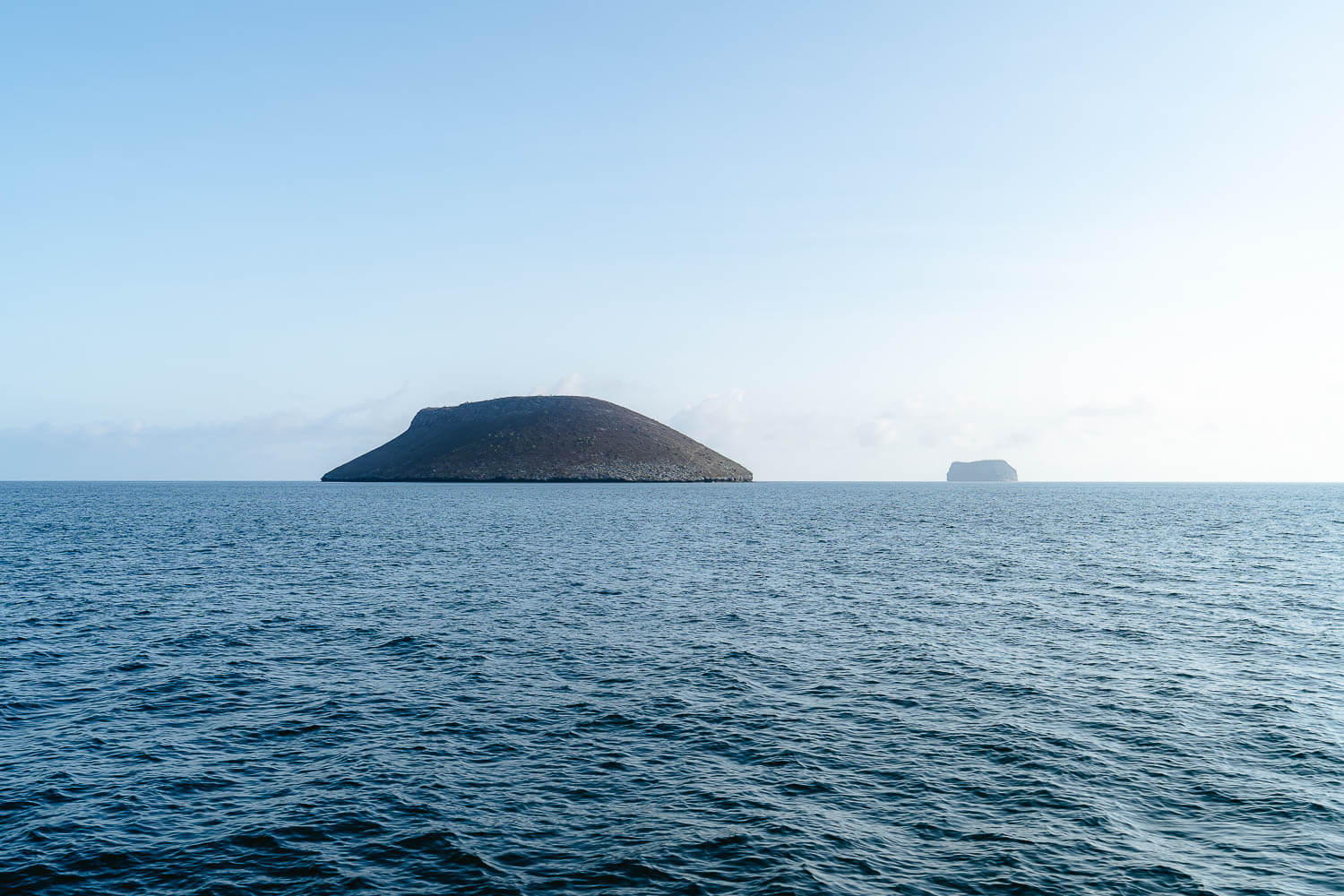
51. Snorkel in Pinzon Island
On this snorkeling tour, you will go to Bahia Pinguino in Pinzon island and then to an islet in the near. On the way back you will go to a beach in Santa Cruz only accessible by boat, called La Fé beach. Pinzon is only possible to visit on a snorkeling tour. And due to its proximity to Santa Cruz, you can find many tour agencies that do it.
While snorkeling in Pinzon you will find on the beautiful clear turquoise water, many tropical fish, baby and adult sea lions, white-tip reef sharks and turtles, usually huge ones, and blue sharks. At La Fé beach you can relax or go snorkeling again. Here you might see marine iguanas, puffer fish, manta rays, and starfish.
To book this tour: Check the local company Galapagos Dreams, or book it online on Viator below:
52. Snorkel in Santa Fé Island
Santa Fé is one of the biggest islands in the Galapagos and it’s located just 20 km away from Santa Cruz. For that reason, it’s usually part of the daily tours available from Santa Cruz. Santa Fé has very calm currents and turquoise water. Here you will be able to swim with sea lions and find starfish, tropical fish, and turtles. With a bit of luck, there might even be manta rays.
In the end, you will visit a hidden beach inside a beautiful bay only accessible by boat where you can relax and take nice photos. If you’re interested there are also land and scuba diving tours to Santa Fé.
To book this tour: Check the local company Galapagos Dreams, or book it online on Viator with any of the tours underneath:
53. Dive in Gordon Rocks
Diving in Gordon Rocks is the best dive you can do in Santa Cruz island if you want to see Hammerhead Sharks. Gordon Rocks are the third most famous dive in the entire archipelago. Only slightly shadowed by the liveaboard experience of Darwin and Wolf’s islands, which cost a small fortune, and the Dive in Kicker Rock, starting from San Cristobal island.
It’s one of the top dives in the world and it’s on the bucket list for many underwater aficionados. As a diver myself, if I’d leave the Galapagos without seeing a hammerhead shark I would be disappointed. This is where I saw my first ten hammerheads and my first manta rays.
View the full blog post here: DIVING IN GORDON ROCKS
To book this tour: Check the local company Macarron Scuba Diver’s website, or book it online on Viator here: Daily diving tour in Gordon Rocks
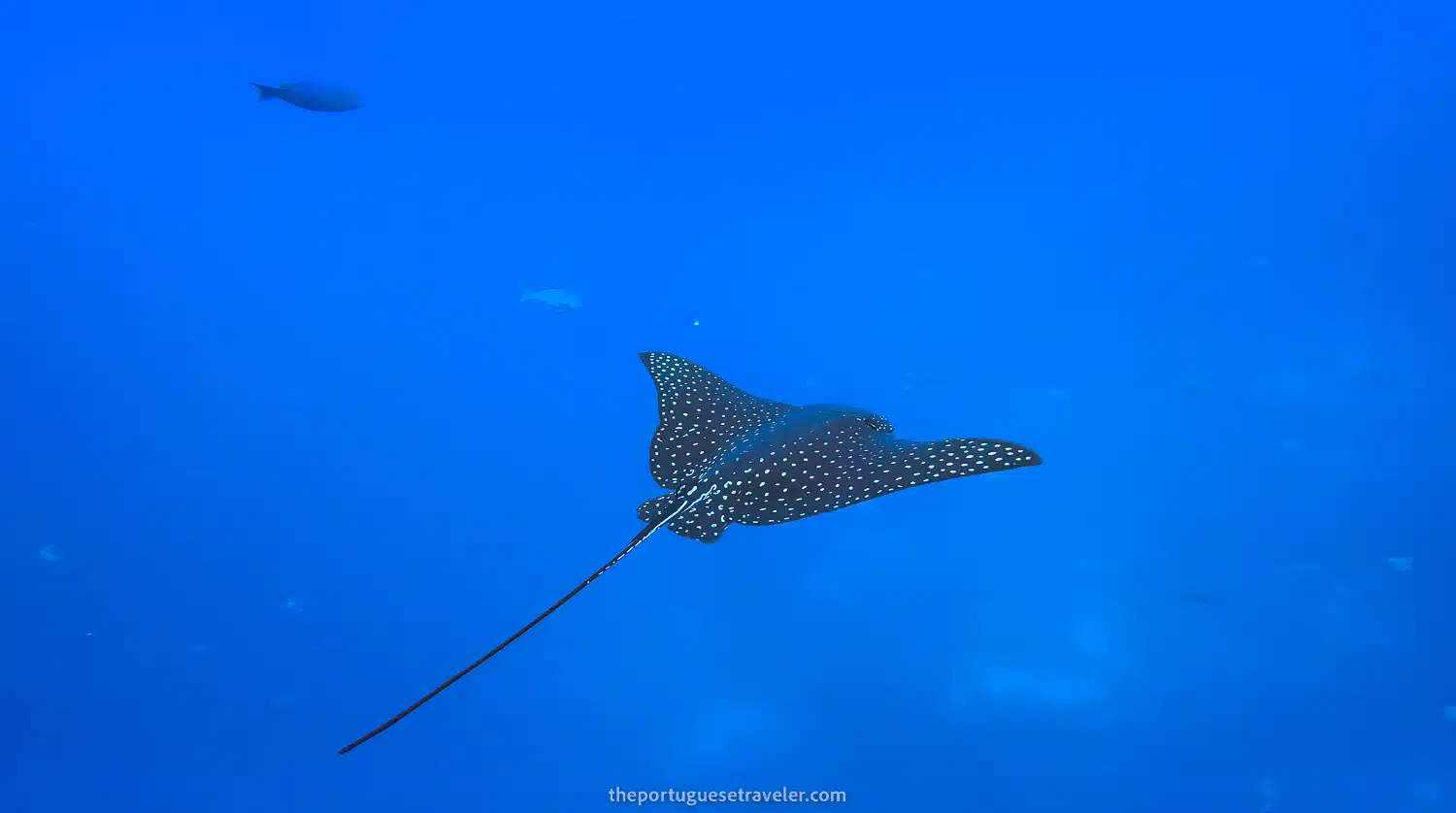
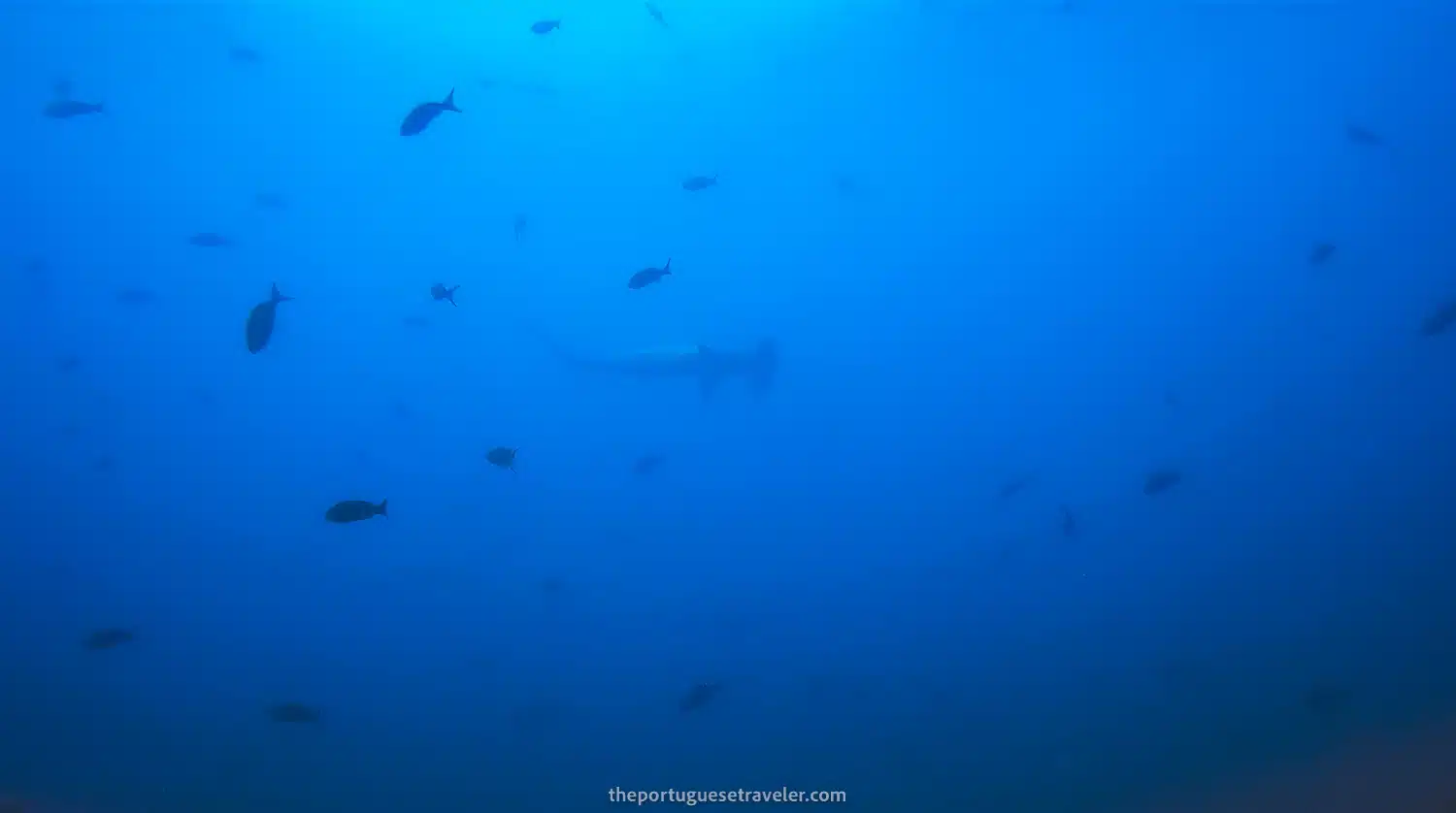
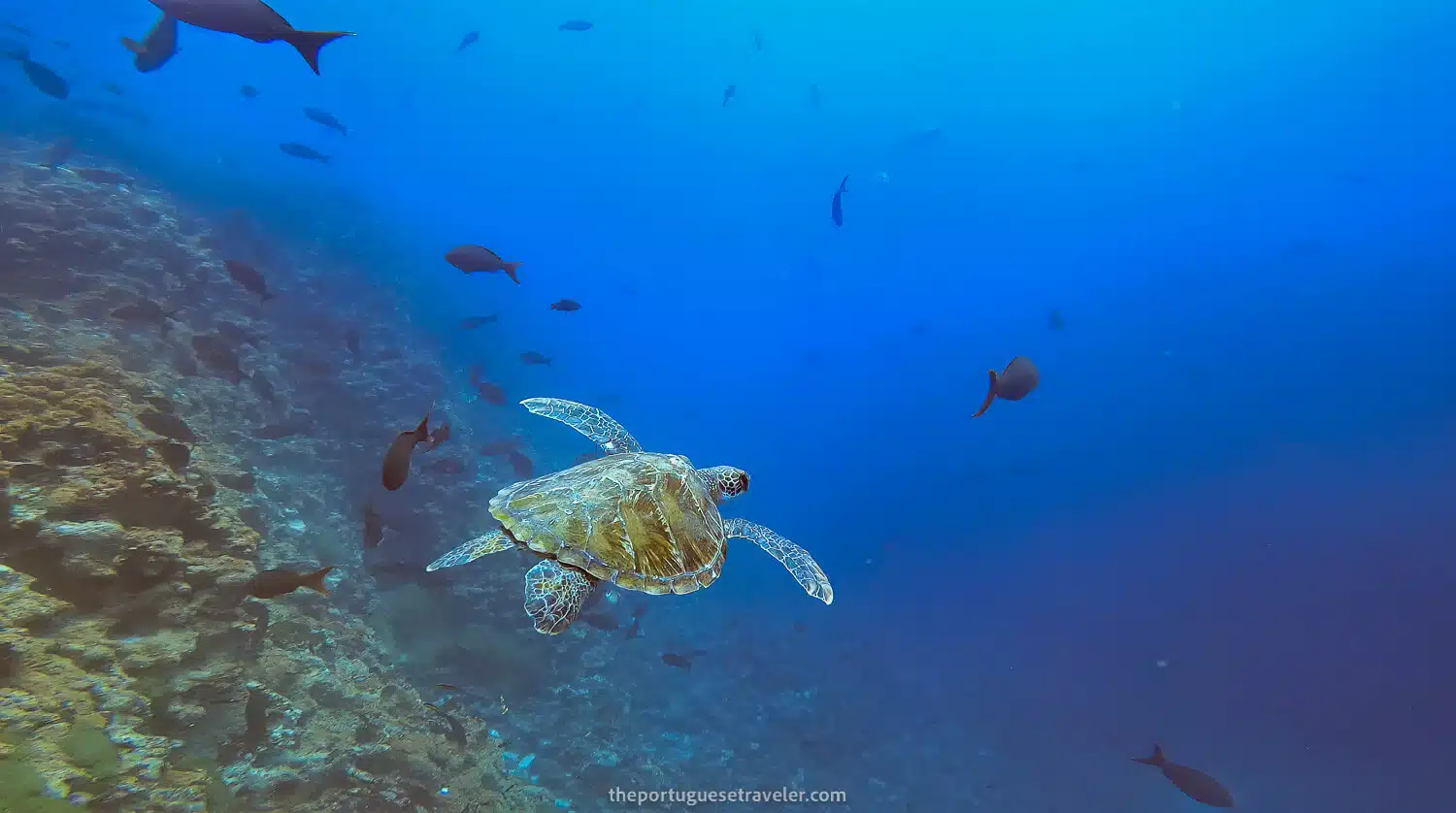
54. Dive in Punta Carrion
This dive site is just one hour east of the Itabaca channel. It is the northernest point of Santa Cruz island. Here there are usually no strong currents and for that reason, it is a very nice site for divers from all levels. You have a great chance of diving together with playful baby sea lions and with a tad of luck, you will find sea turtles, eagle rays, hammerheads, and dolphins.
To book this tour: Check the local company Macarron Scuba Diver’s website
55. Dive in North Seymour Island
The North Seymour dive site is usually combined together with other islets in the near like, Mosquera or Daphne Minor. North Seymour island is located on the north part of Santa Cruz island, over Baltra island (aka South Seymour island).
Both North and South Seymour Islands were named after the British royal navy officer of the late 18th century, Admiral Lord Hugh Seymour. In North Seymour, you can find an eel garden, some reef sharks resting on the sandy bottom, and morays. If you’re lucky some eagle and manta rays, and some Hammerhead sharks might pass near (i saw a hammerhead there). North Seymour is usually the check dive before the other islets where strong currents are more common.
View the full blog post here: DIVING IN NORTH SEYMOUR AND MOSQUERA
To book this tour: Check the local company Macarron Scuba Diver’s website.
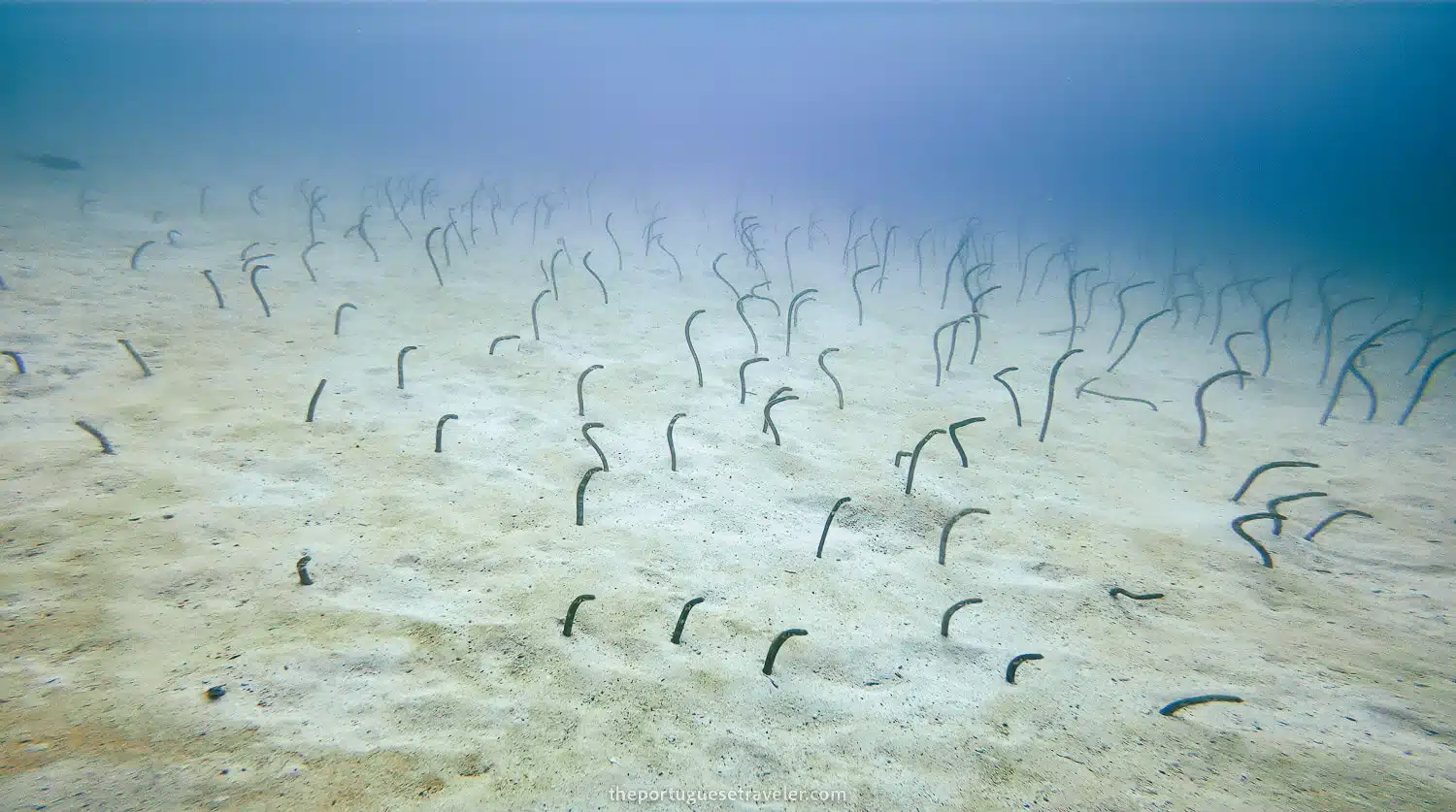
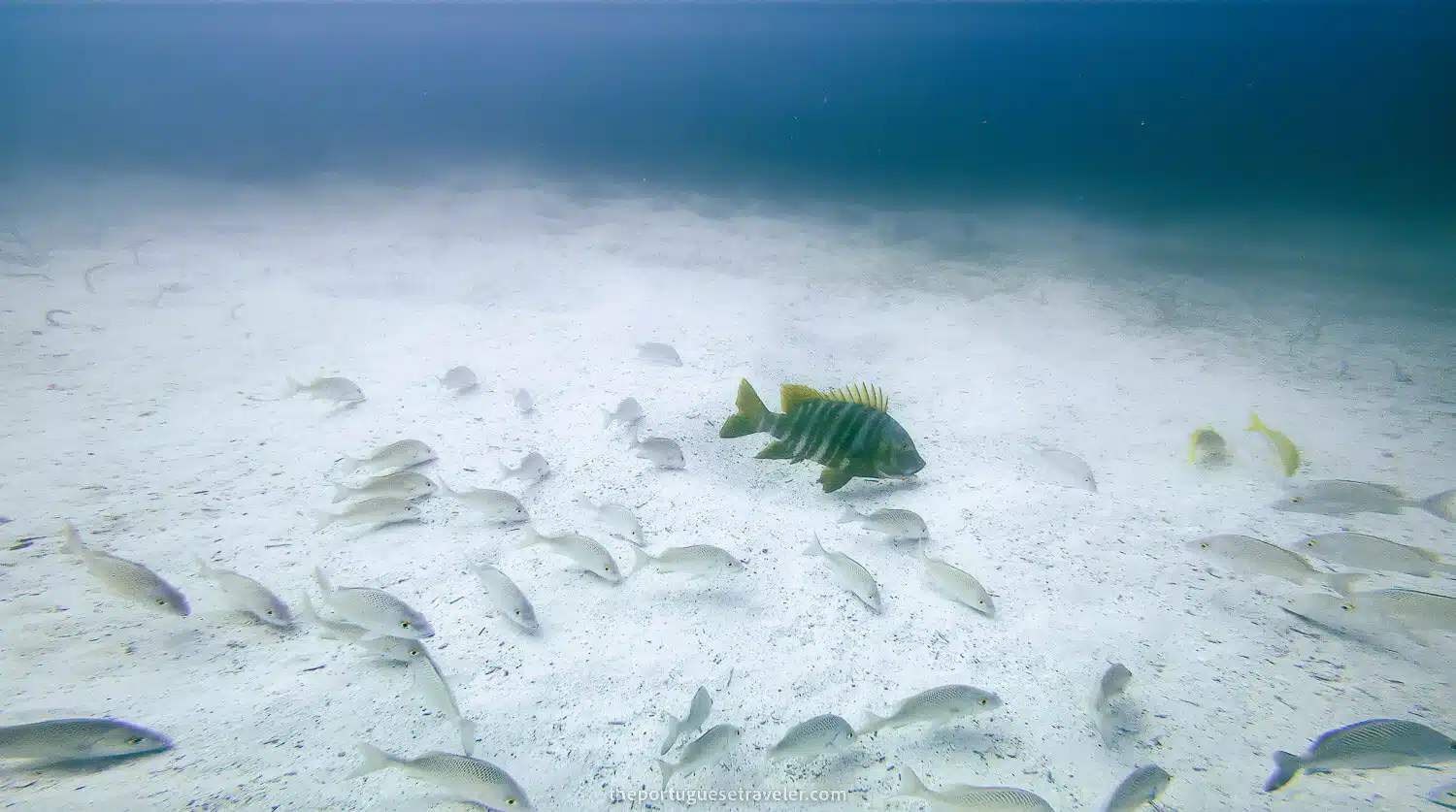
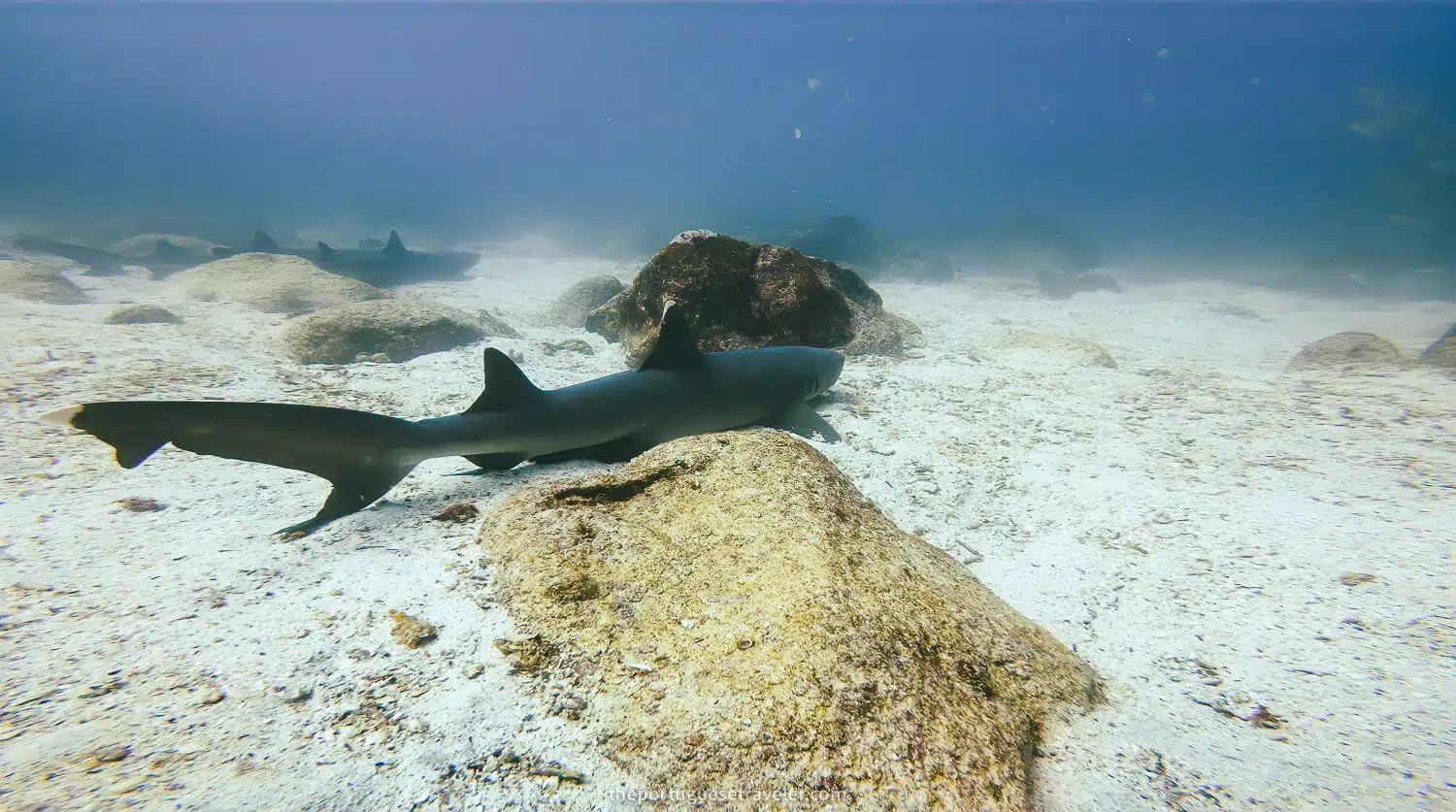
56. Dive in Mosquera Islet
Mosquera islet is located north of Santa Cruz island, in between the North and South Seymour islands. The name “Mosquera” comes from the Spanish and it is the name of a flower in the daisy family, the yellow fleabane flower. It is a dive where there are usually strong currents.
In Mosquera, you will for sure see a reef shark cleaning station and a sea of starfish. If you’re lucky you might spot hammerhead sharks, green turtles, eagle rays, manta rays, golden cownose rays (we saw a group of 15), giant puffer fish, king angelfish, blue and gold snappers, razor surgeonfish, and other beautiful fish. Totally a dive you should do if you’ve already done the Gordon Rock dive. Here you will have a lot of diversity and fun.
View the full blog post here: DIVING IN NORTH SEYMOUR AND MOSQUERA
To book this tour: Check the local company Macarron Scuba Diver’s website.
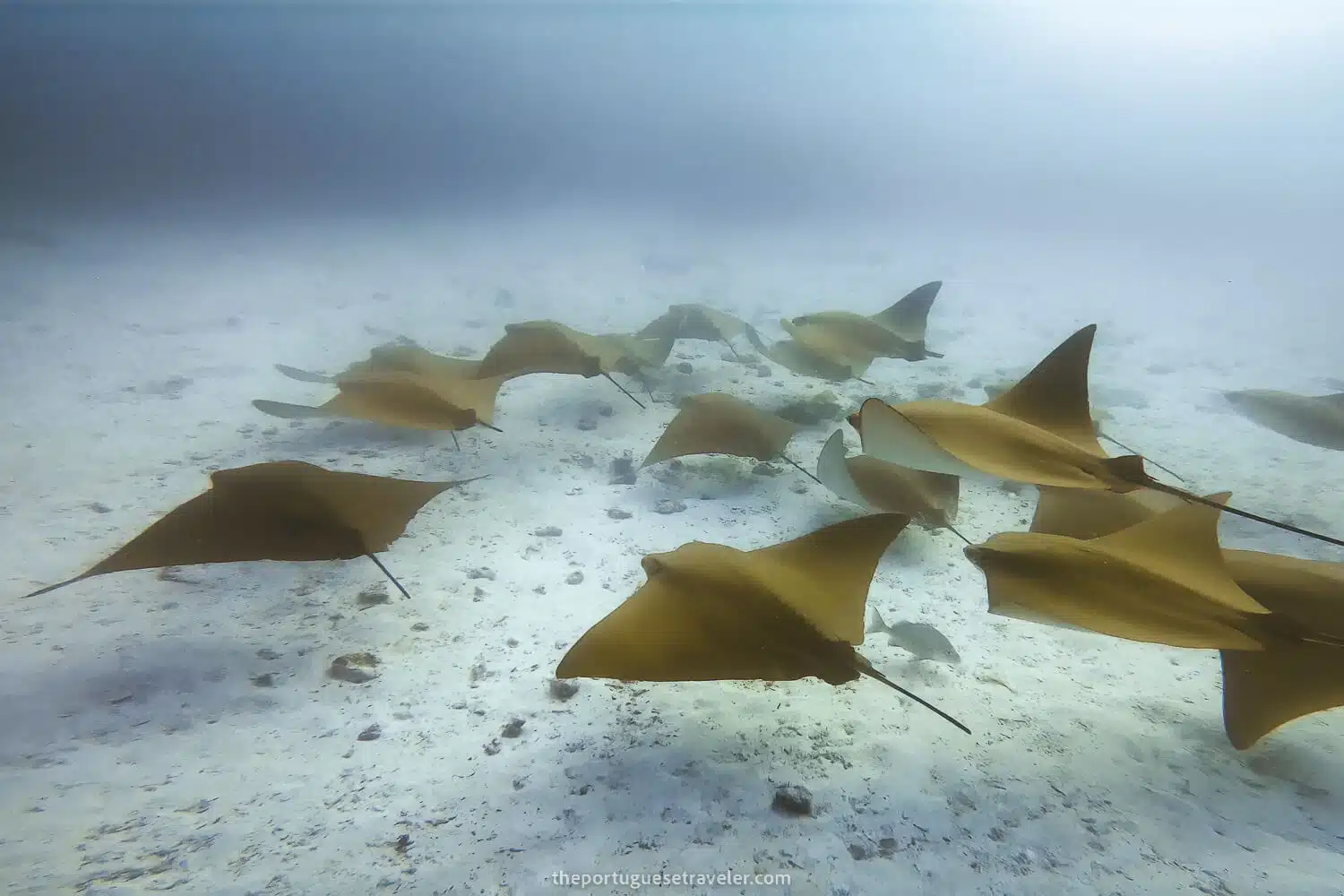
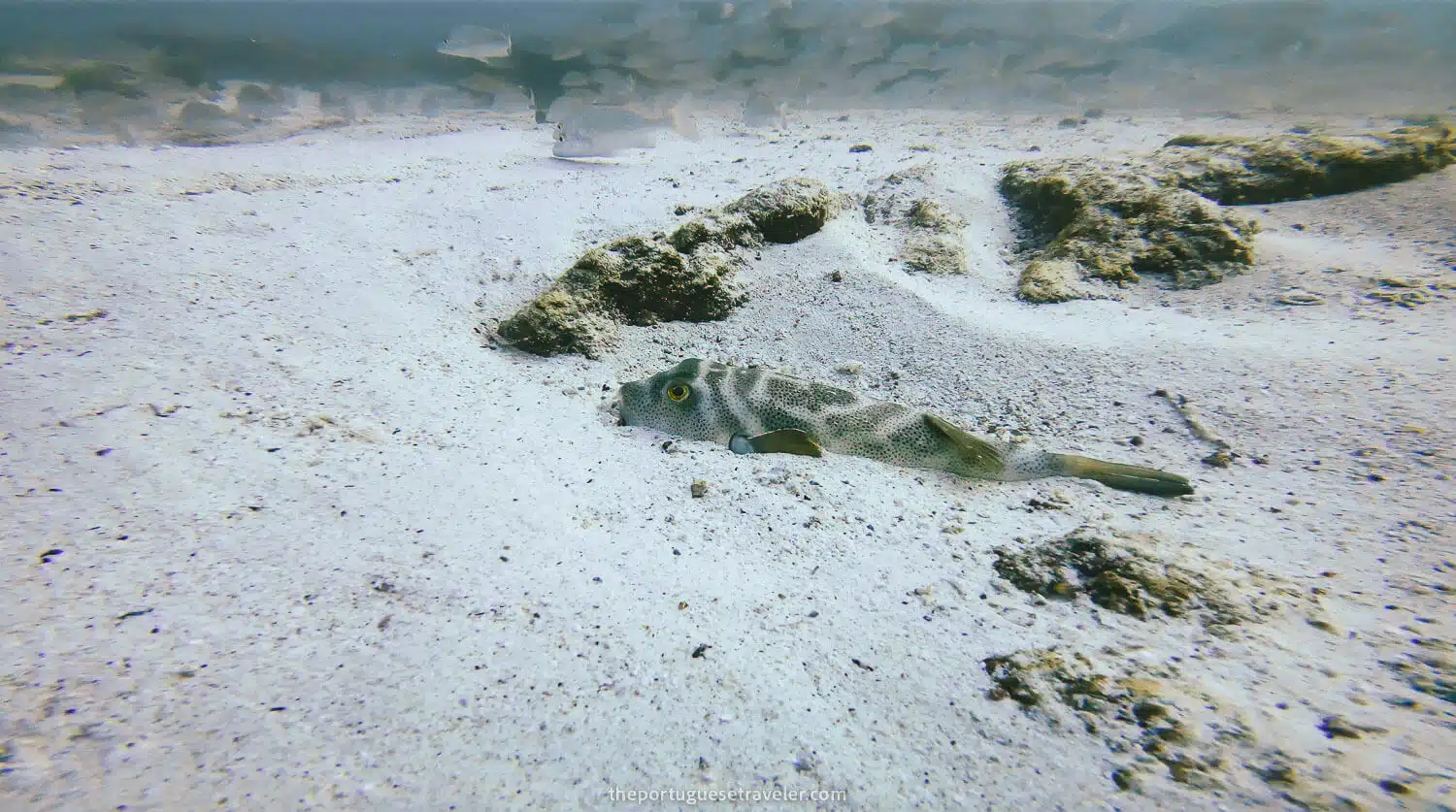
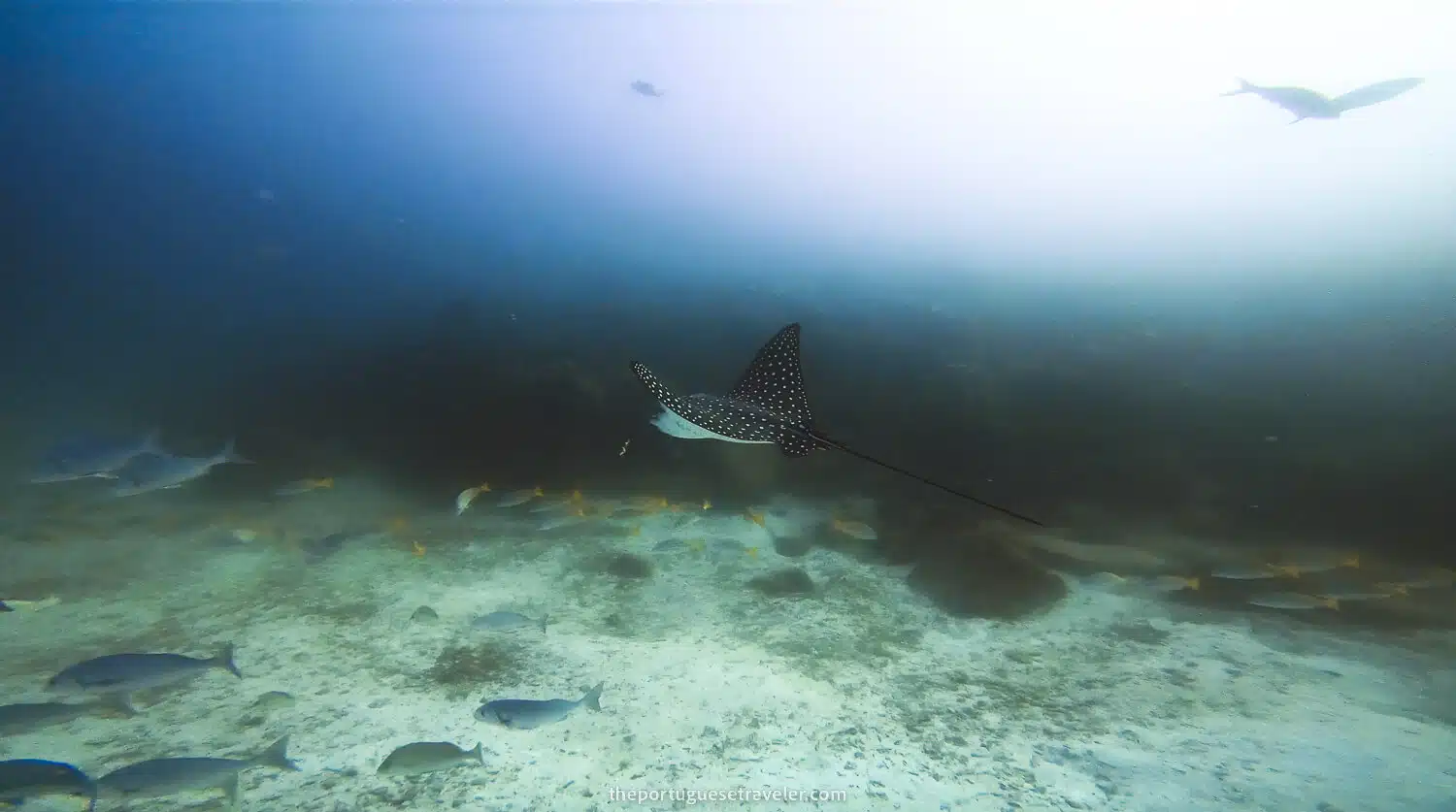
57. Dive in Bartolomé Island and Cousin Rock
Bartolomé Island is the most iconic photo you can have of the Galapagos islands and it is located northwest of Santa Cruz island. Bartolomé is a volcanic tuff islet on the east side of Santiago island. The journey there takes 90 minutes by speedboat and two hours by sailing boat (like on the day land tour).
The name of the island comes from Charles Darwin’s friend Bartholomew James Sullivan who was the principal surveyor and second lieutenant aboard the HMS Beagle. As in the land tour, you could spot some penguins, here you might swim with them and also spot some starfish.
Here as in many places in the Galapagos, you will be able to see reef sharks, and tropical reef fish such as the yellow-tailed surgeonfish, with luck you might spot some mobulas, rays, seahorses, and other sharks. It is a great tour to do a two-in-one check, the only hiccup is not climbing to the viewpoint for the most iconic perspective of the island. On this tour, you will also dive at the Cousin Rock dive site.
To book this tour: Check the local company Macarron Scuba Diver’s website.
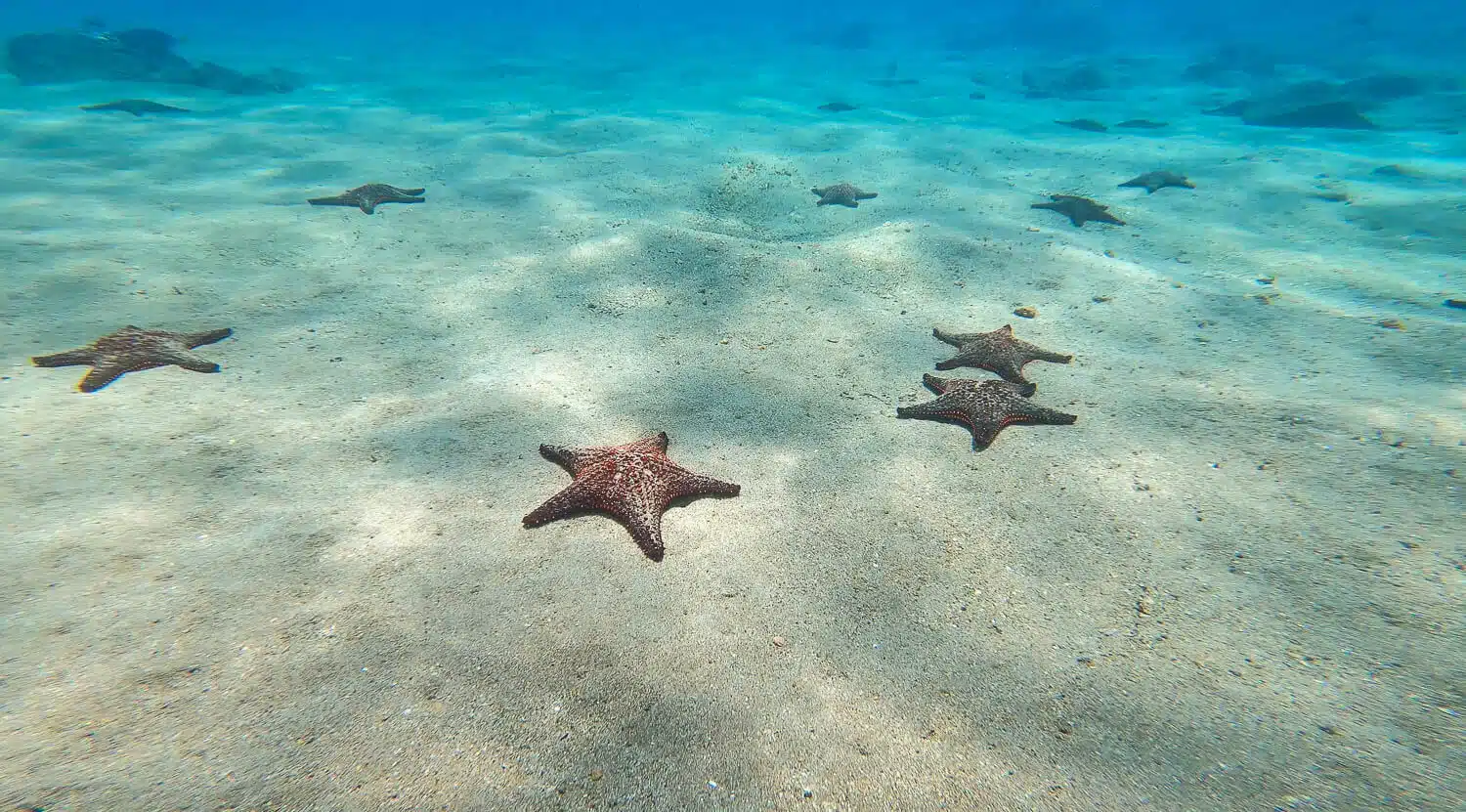
58. Dive in Daphne Islands
There are three main dive sites in the Daphne islands, Daphne Mayor (10-40m depth), Daphne Minor (5-30m depth), and Bajo de Daphne (5-25m depth). The diving tour in Daphne Islands is usually combined together with a dive in North Seymour or Mosquera islet.
Depending on your dive site you might find a small cave (not a cave dive) with reef sharks, a pinnacle with a variety of rays, Galapagos sharks, green turtles, tropical fish, and schools of barracudas, among other animals. If you are not a certified diver there is also a snorkeling tour available where you fish your own lunch and can spot many seabirds fishing with sea lions.
To book this tour: Check the local company Macarron Scuba Diver’s website.
59. Dive in Floreana Island
On Floreana, you can scuba-dive in four different sites, Punta Cormoran, Enderby islet, Devil’s Crown islet, and Champion islet. At Punta Cormoran the main attractions are batfish, golden rays, Galapagos sharks, barracudas, eagle rays, and green turtles.
In Enderby, the dives take place at the extreme edge where the currents hit the reef and if you’re extremely lucky you might find Whale sharks. In Devil’s Crown, the highlight is to see an endemic coral, the cleaning station, Galapagos sharks, and white-tip reef sharks. At the Champion islet, you’re accompanied by a large group of sea lions during the entire dive.
If you’re interested in the day trip and land tour to Floreana island the article underneath might help you.
View the full blog post here: FLOREANA ISLAND TOUR
To book this tour: Check the local company Macarron Scuba Diver’s website.
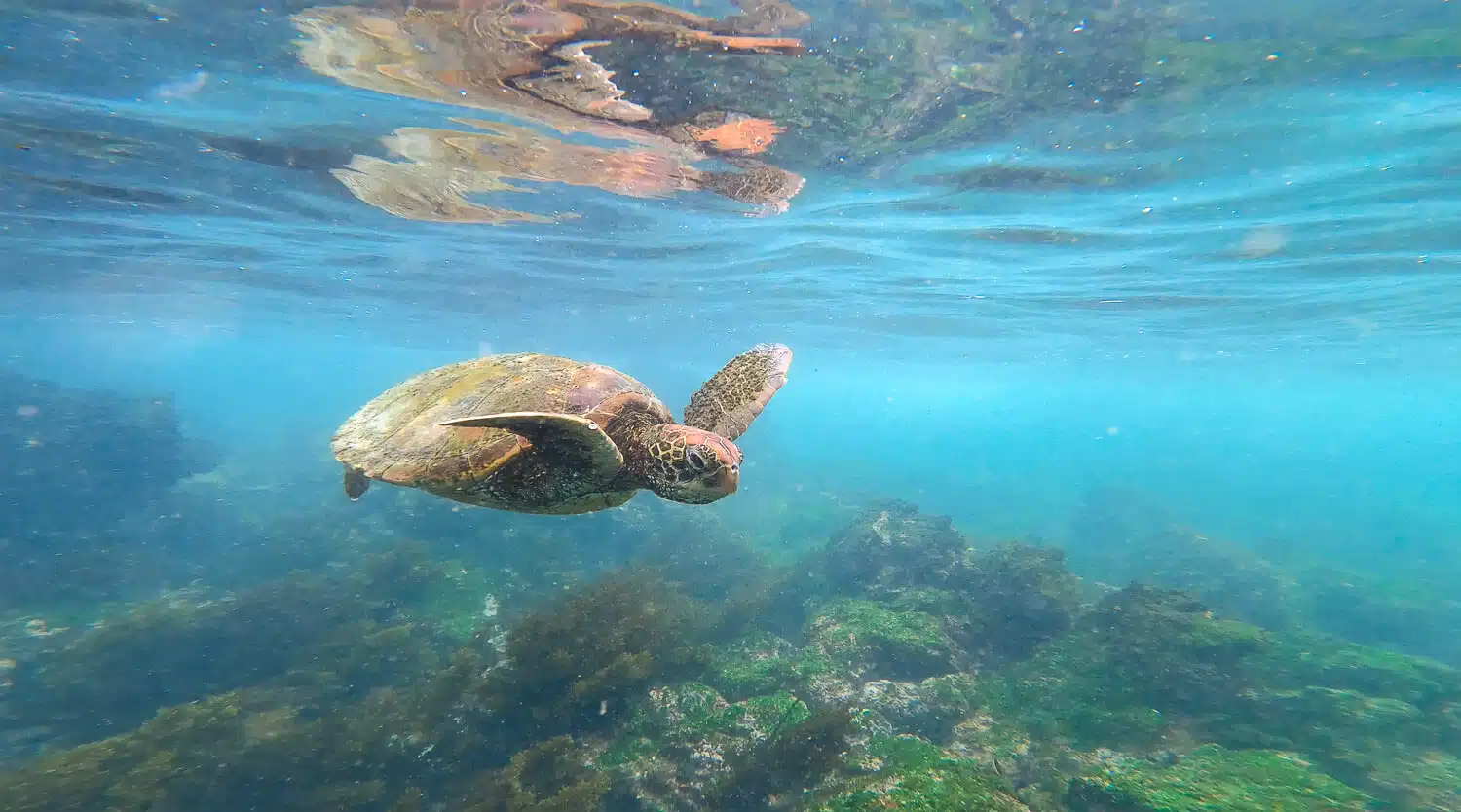
60. Dive in Plaza Islets
These are two of the many uninhabited islets in the Galapagos. They were formed by an uplift of the seabed giving it its flat but very unique shape. They are located on the northeastern side of Santa Cruz island. As you could snorkel, in the Plaza islets you can also dive.
Here the dives are usually between 15 and 18 meters in depth, you can see an eel garden and bigger pelagic species like rays, sharks, and green turtles. The dive is fit for all kinds of level as there isn’t usually strong currents on site. If you’re lucky you will also able to dive with playful sea lions.
To book this tour: Check the local company Macarron Scuba Diver’s website.
61. Dive in Santa Fé Island
And to conclude the list a dive on Santa Fé island, one of the biggest islands in the Galapagos, that it’s located just 20 km away from Santa Cruz.
Santa Fé has three different dive sites, the Tip, the Arc, and the Cliff. The visibility is usually over 10 meters and it can get to 20-25 meters. Here the waters are of gorgeous turquoise color and are usually very calm, for which it is a good recommendation to do your diving certification here.
To book this tour: Check the local company Macarron Scuba Diver’s website
Things To Do in The Galapagos
Isabela Island
62. Sierra Negra and Chico Volcano
The Sierra Negra Volcano Tour in Isabela island is the best volcano hike you can do in the Galapagos and one of the best things to do in Isabela island.
You will walk on the rim of the massive Sierra Negra volcano’s caldera, whose last eruption happened just in 2018, and visit the Chico Volcano, a little offspring of Sierra Negra with a view to the Northwestern part of Isabela Island.
This tour has to be done with a Naturalist guide from the Galapagos National Park. You can book a tour with an agency and they hire the guide. You can’t simply hike your way up, unfortunately.
Along the hike, the landscape changes at least three times. From foggy and green, to dry and orange, and then to red and black. At the last stage, everything around you looks like an apocalypse. It’s an impressive and desolate place created by the destructive force of nature.
View the full blog post here: SIERRA NEGRA VOLCANO TOUR
To book this tour: Check the local company Coral Blanco Tour Operator (click on the icons), or book it online on Viator with any of the tours underneath:
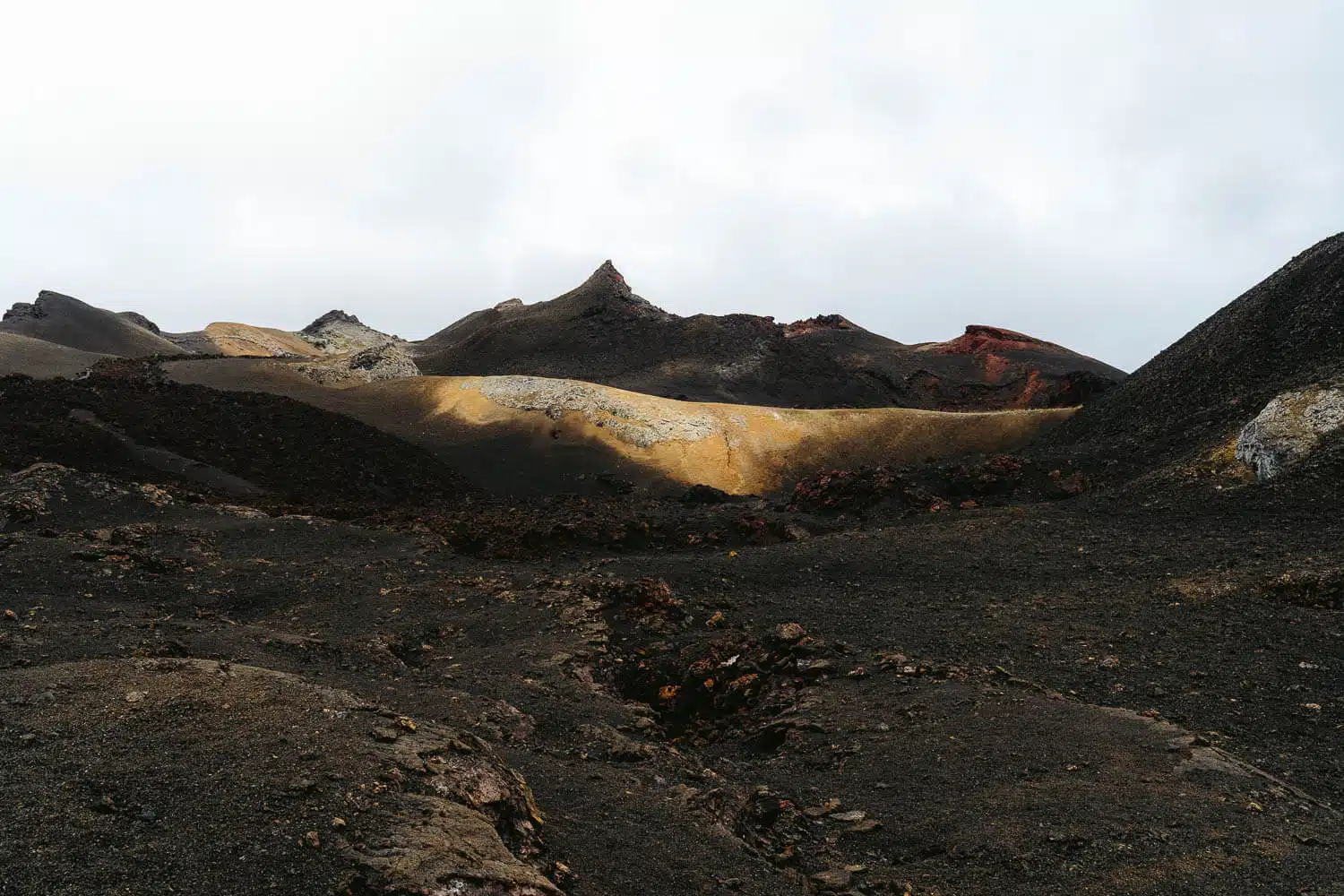
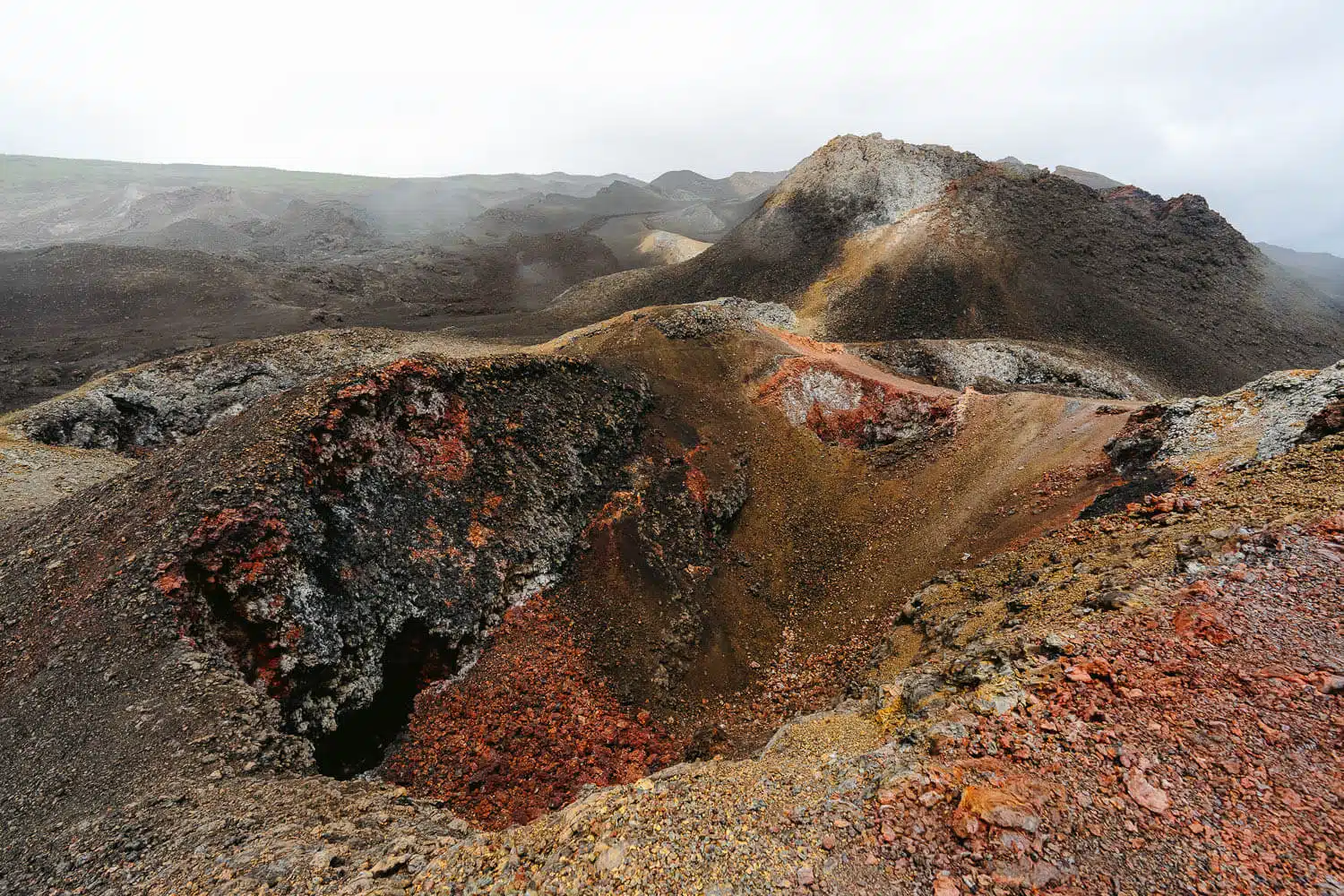
63. Concha de Perla Lagoon
The Concha de Perla Lagoon in Isabela is a beautiful lagoon full of mangroves that you can visit just a short walk from Puerto Villamil town. You don’t have to pay for the entrance and is great for a family escape or snorkeling adventure.
You will definitely see marine iguanas on the wooden deck before entering the water and beautiful fish. With luck, you might spot some turtles and perhaps some reef sharks and rays.
View the full blog post here: CONCHA DE PERLA LAGOON
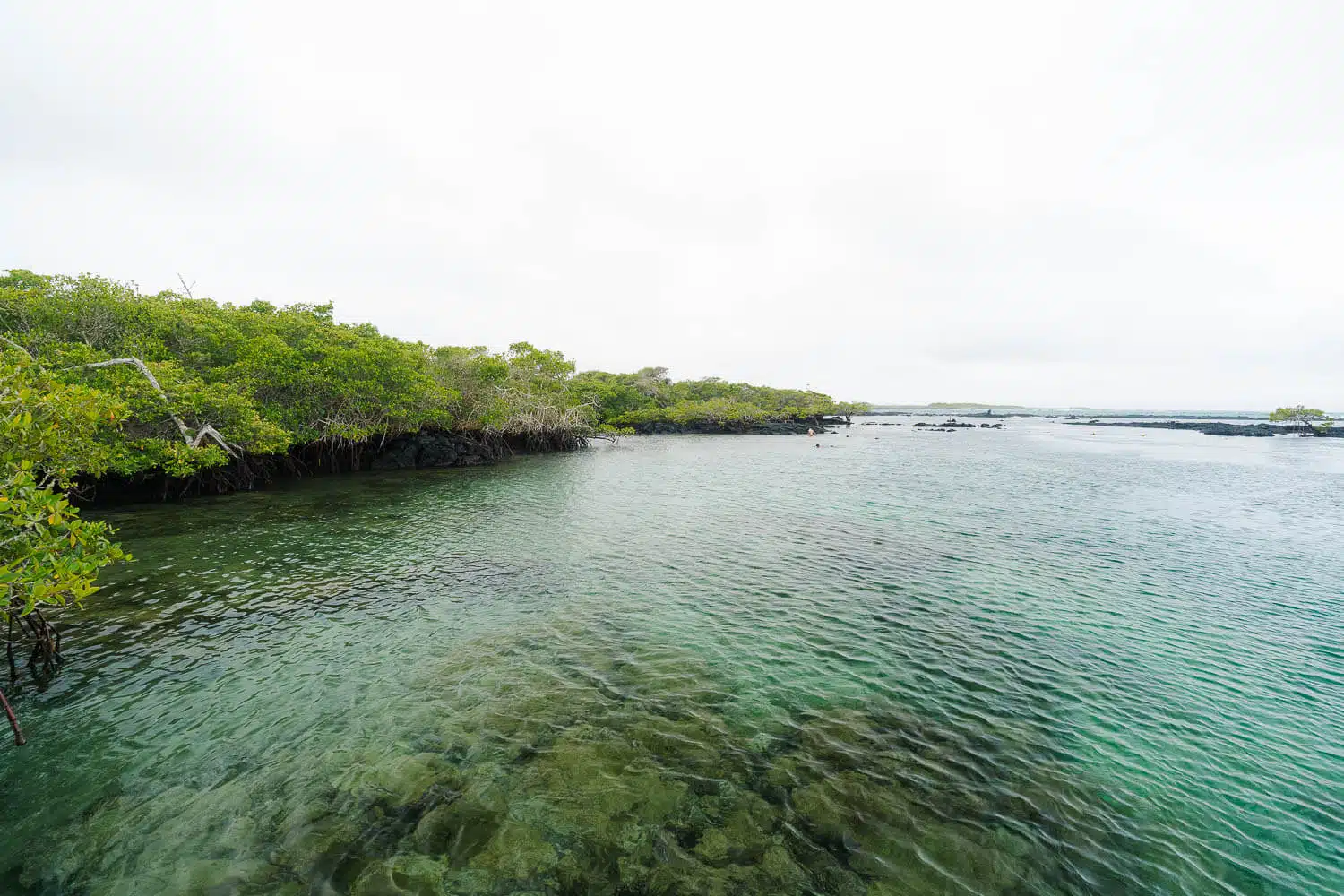
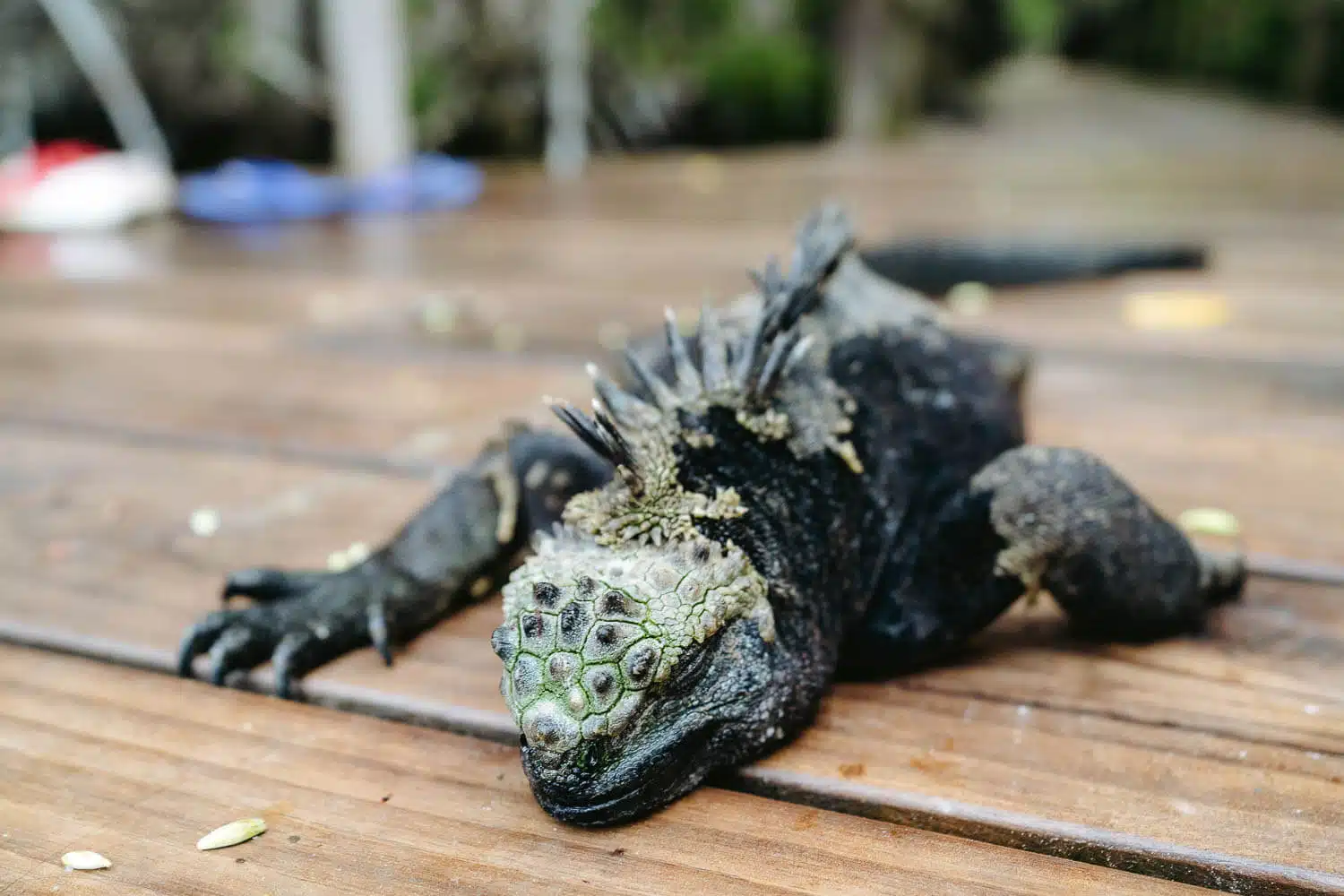
64. Wall of Tears
The Wall of Tears on Isabela Island is a controversial attraction. It is a stone wall built between 1946 and 1959 by inmates of the former Isabela Penitentiary Colony. Here hundreds of prisoners were forced to work under extreme circumstances. They built this wall for no other purpose than to be punished. While enduring this hardship many people died.
Although it’s a hard place to visit, due to its history, the landscape surrounding it is particularly beautiful. Definitely, a place to visit. If you like hikes and views this is where to go, from here you can go onto the “El Radar” viewpoint and have a beautiful view of Isabela beachfront.
View the full blog post here: WALL OF TEARS IN ISABELA
To rent a bike: Check any of the many local bike shops in Puerto Villamil.
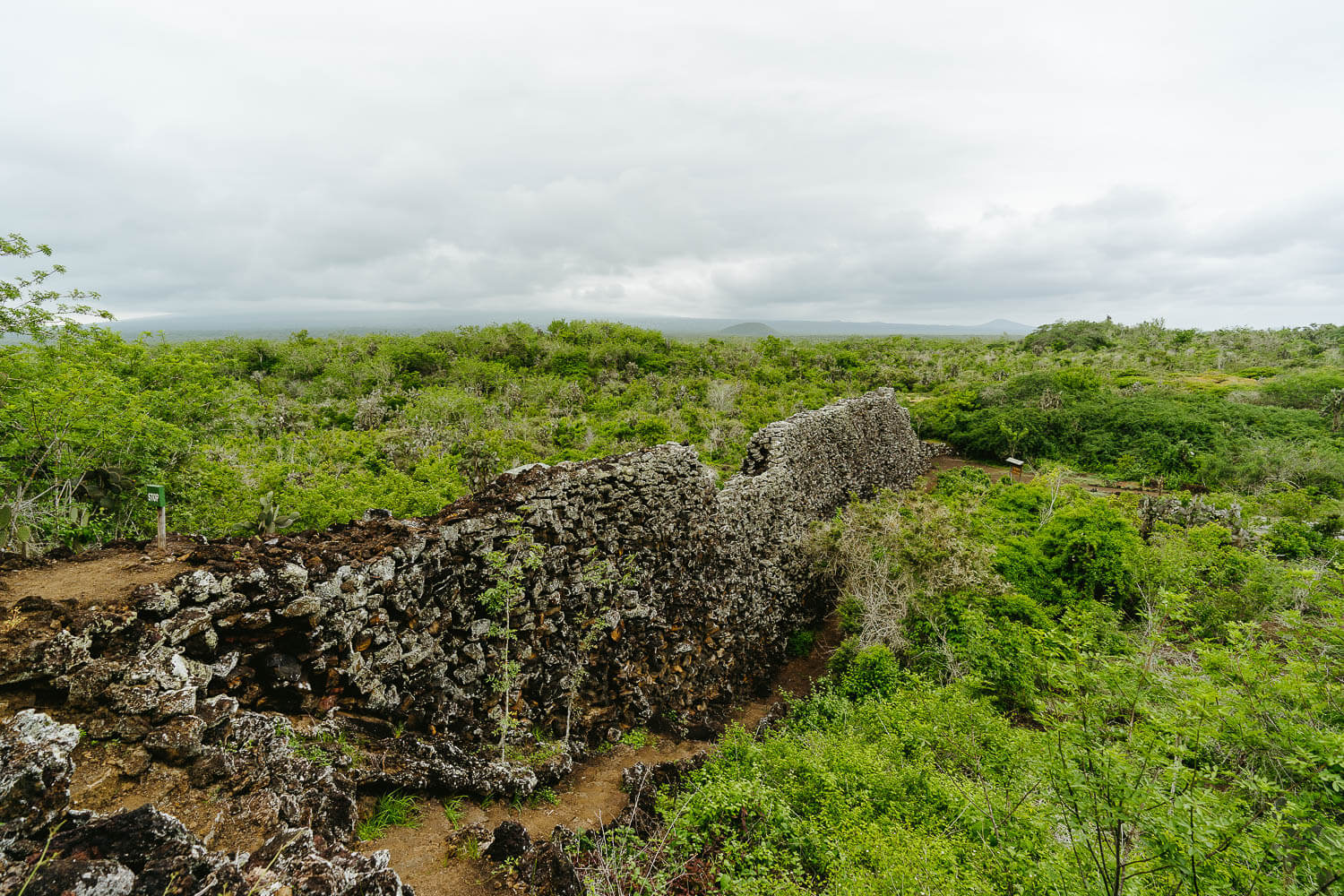
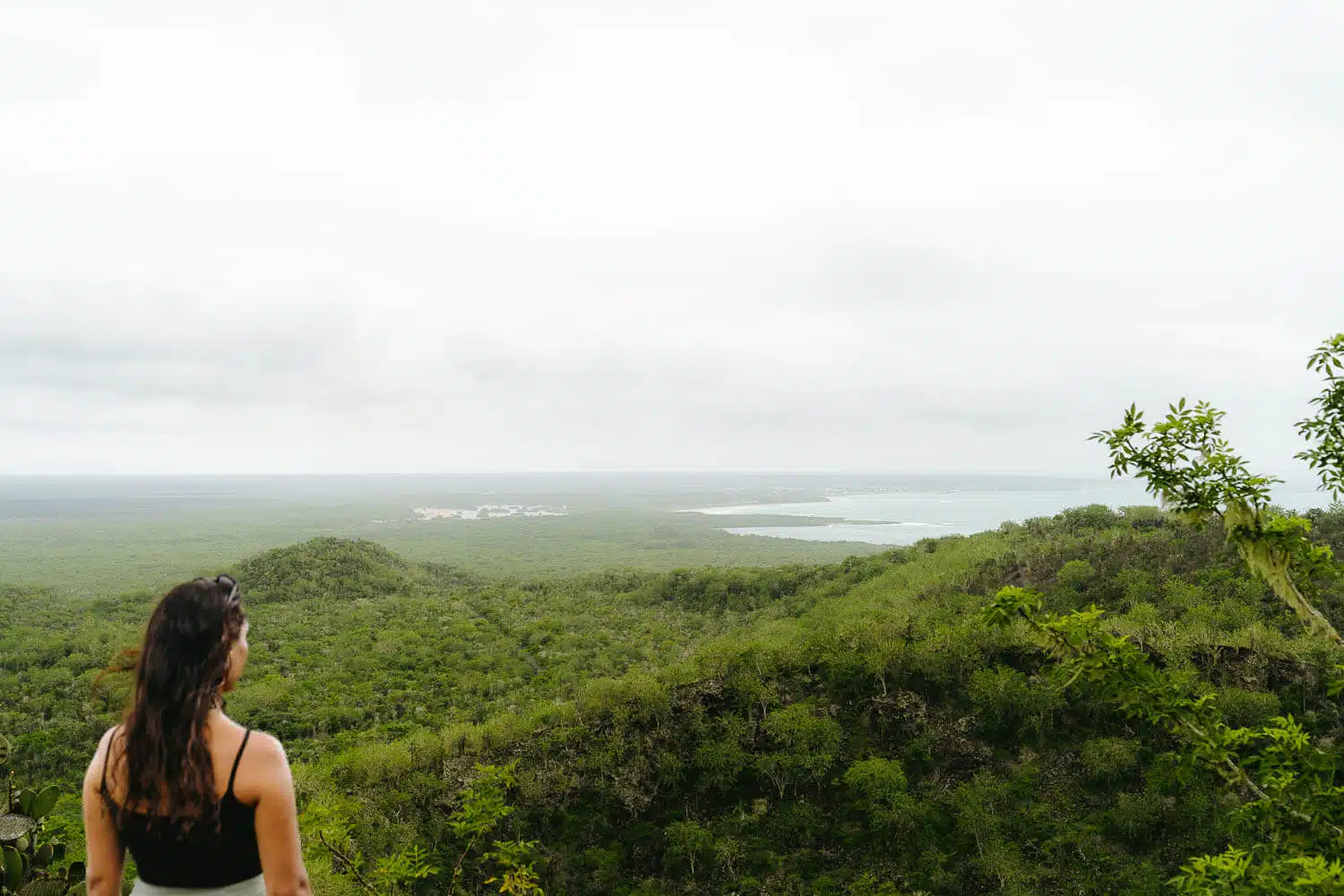
65. Cerro Orchilla Hill Viewpoint
Cerro Orchilla Hill is one of the highlights of the way to the Wall of Tears. It is a beautiful hill that overlooks the southern part of Isabela island. From there you can see Puerto Villamil town, the shore, and many small volcanic hills surrounding it.
If you don’t have the time or energy to go to the Wall of Tears this is a very nice alternative to see the green landscape of Isabela from above. It’s free to go and you can easily stop at the Playita beach on the way here or explore the Humedales – Wetlands park.
I went here on my way to the Wall of Tears. Pay attention if you park your bike down there on the bicycle park if there are any thorns on the floor cause I accidentally punctured my tire that way.
View the full blog post here: WALL OF TEARS IN ISABELA
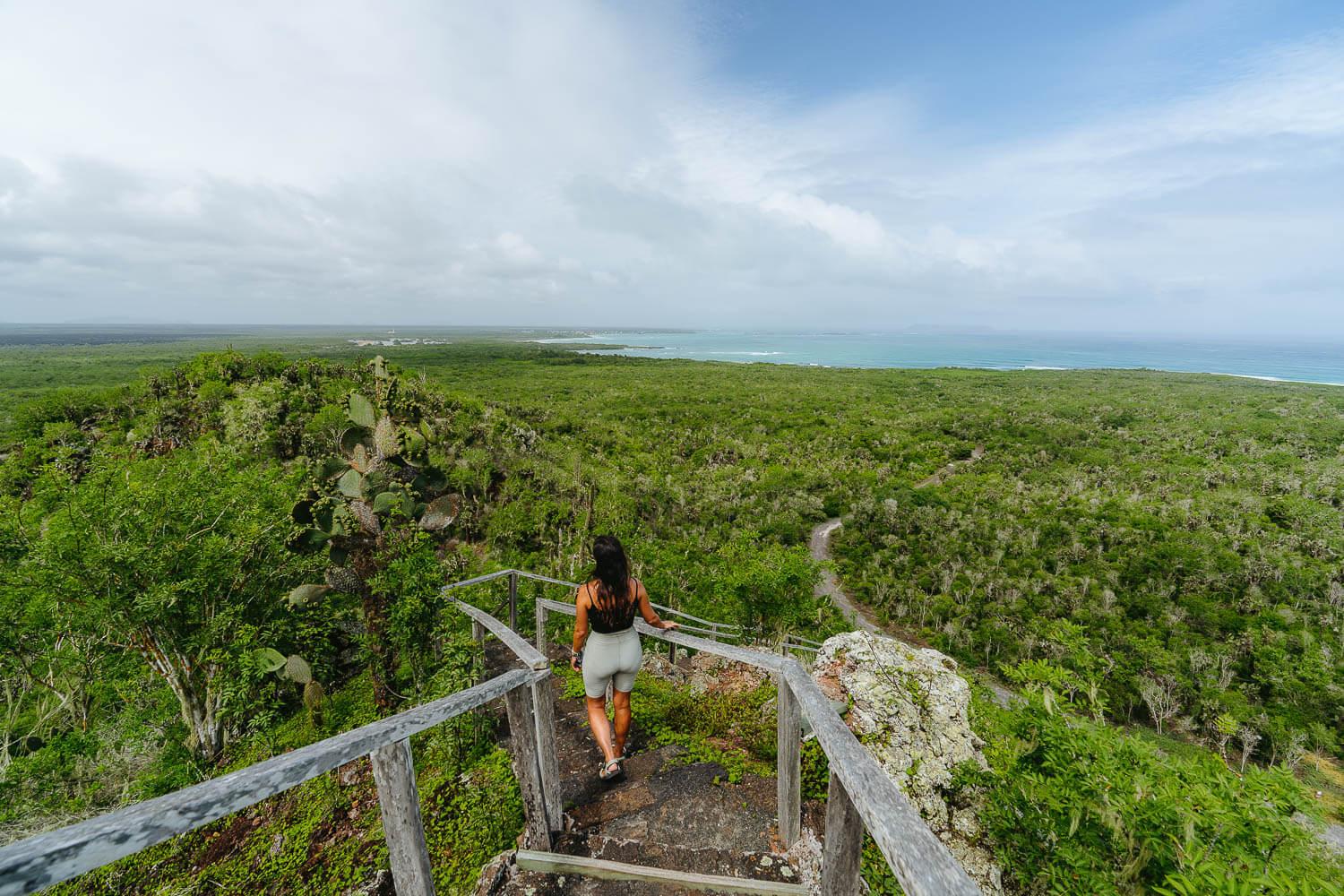
66. El Radar Viewpoint Hike
The El Radar Viewpoint hike in Isabela Island is a short but beautiful hike you can do after arriving at the Wall of Tears.
The Wall of Tears is a stone wall built between 1946 and 1959 by inmates of the former Isabela Penitentiary Colony. Here hundreds of prisoners were forced to work under extreme circumstances. They built this wall for no other purpose than to be punished. While enduring this hardship many people died.
On your way to El Radar Viewpoint, there are other beautiful viewpoints like the Wall of Tear’s viewpoint, some meters after the wall.
From all of them, you can have a beautiful view of Isabela island’s beachfront and its green landscape.
View the full blog post here: EL RADAR VIEWPOINT HIKE
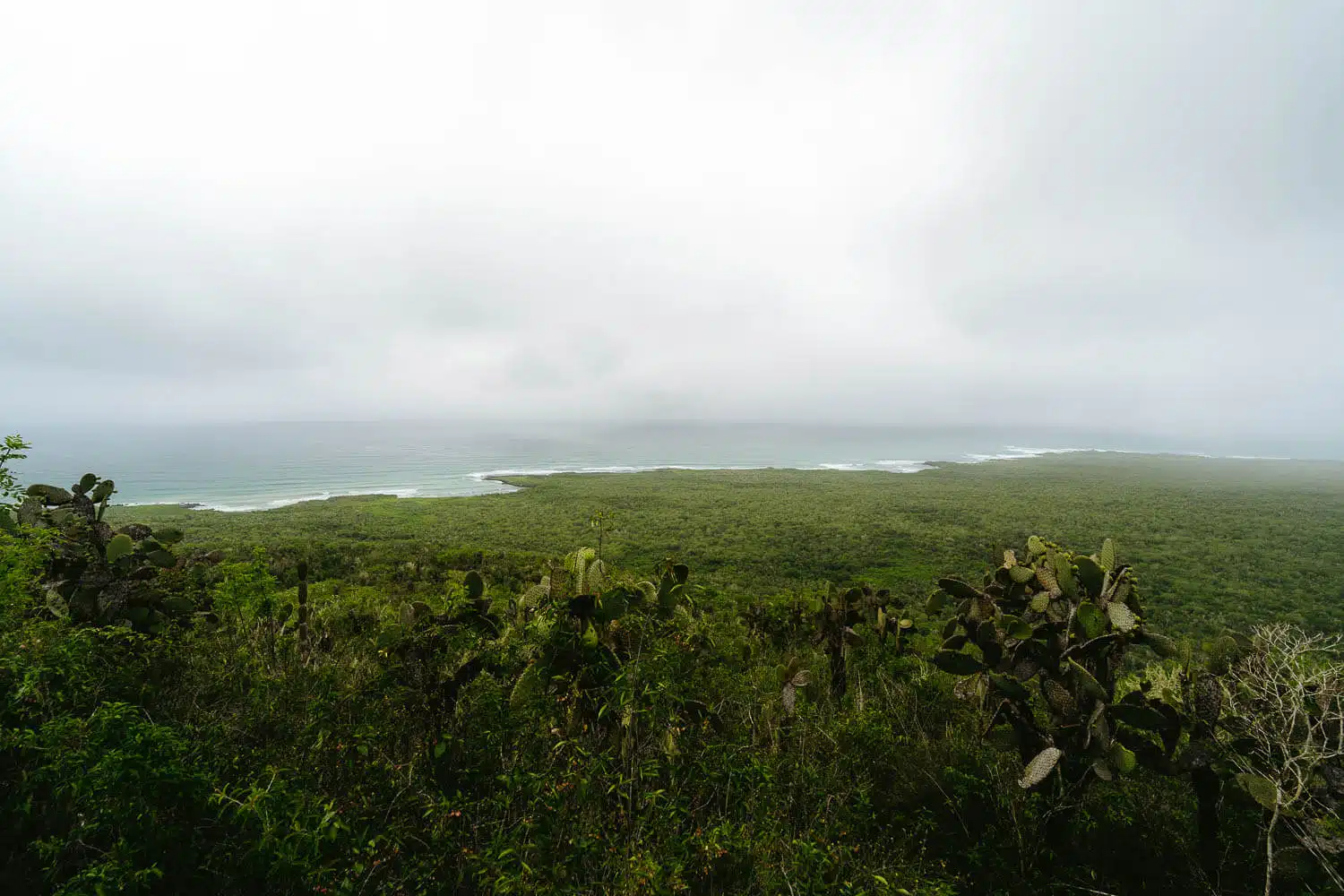
67. Puerto Villamil Beach
The Puerto Villamil beach or Playa Isabela in Isabela island is a gorgeous 4 km beach that runs alongside the entire seaside of this cute little town.
This white-sanded beauty with turquoise water is the perfect place to relax on Isabela island. Here you will see many pelicans fishing and marine iguanas and on the east side, there’s a great place to surf.
View the full blog post here: PUERTO VILLAMIL BEACH
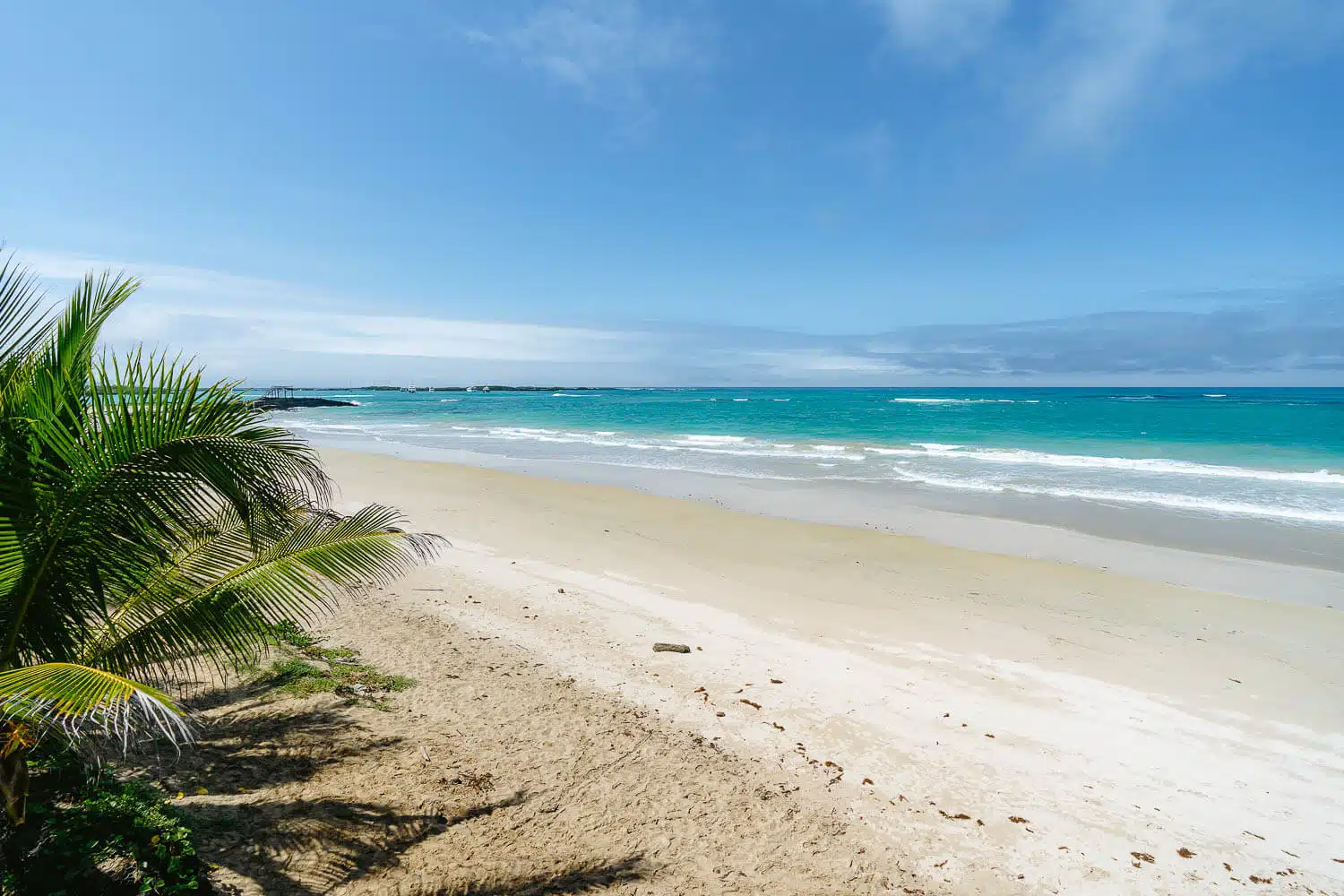
68. Isabela's Downtown
Spend some time exploring Puerto Villamil’s downtown (Isabela island’s capital). The best thing about Puerto Villamil is that it has a huge white beach running along the entire town and compared to Puerto Ayora town in Santa Cruz, this is the place you wanna go to relax. There aren’t half as many tourists as in Santa Cruz and you can have a pretty chilled time here.
The restaurants are all very similar and local, there are just a couple of international food restaurants and the rest serves you fish and ceviche and local specialties. There are some bars on the beachfront if you want to go for a drink at night while watching the waves breaking on the sand and everything is very easily reached due to the town’s small size.
In the backyard of Puerto Villamil, there are some lakes where you can find flamingos and there is a small stadium in town where sometimes they make live events.
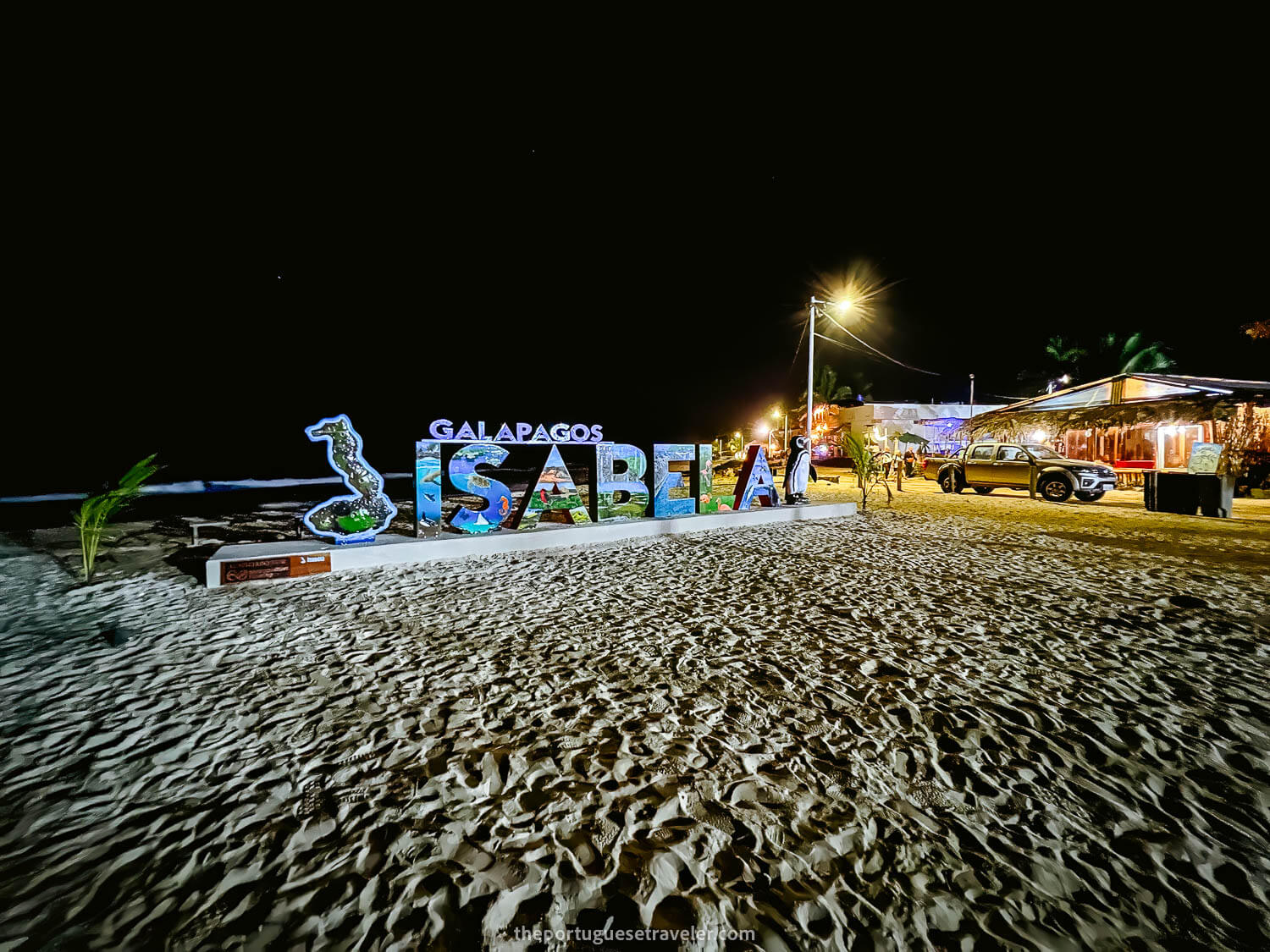
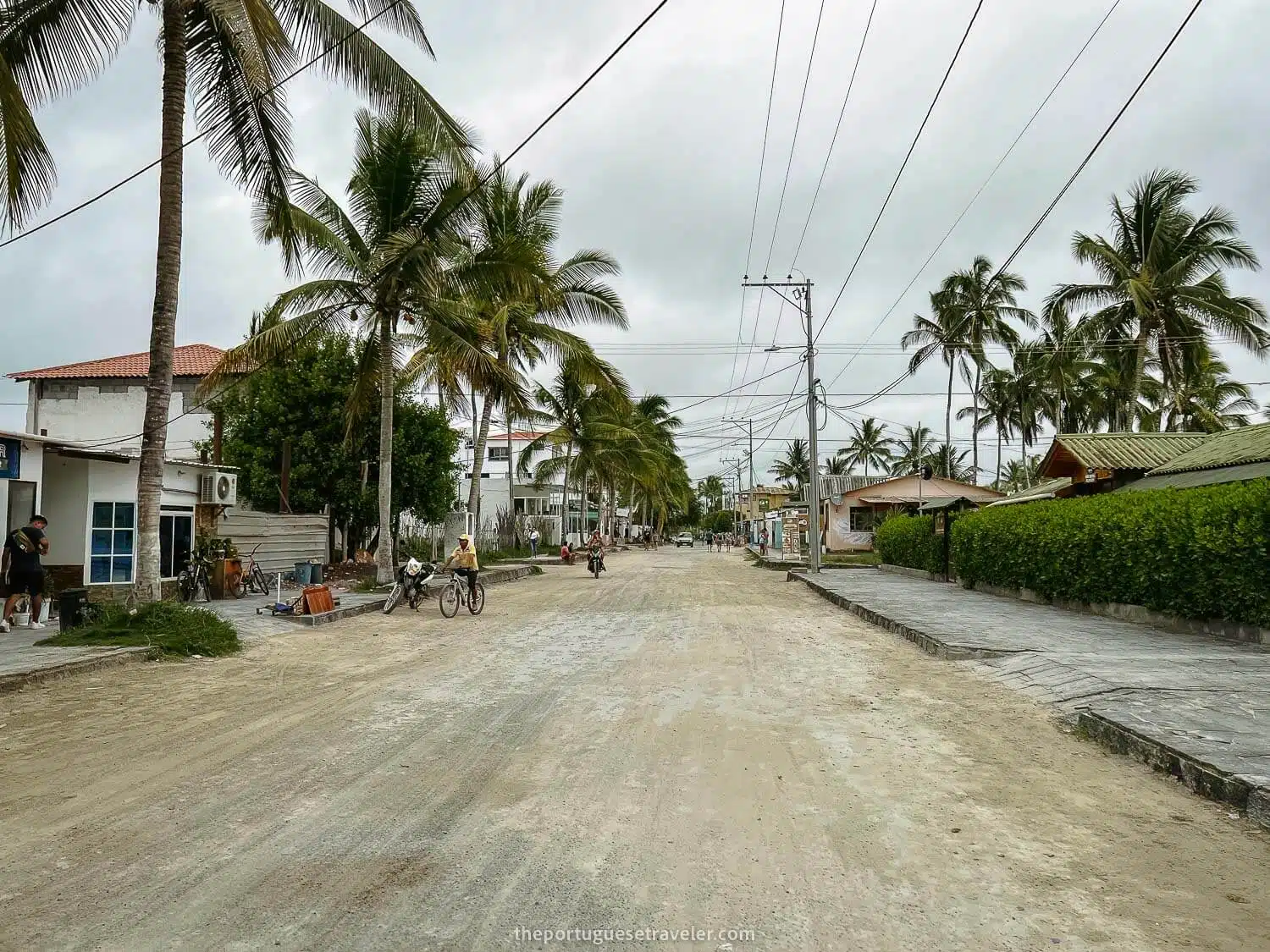
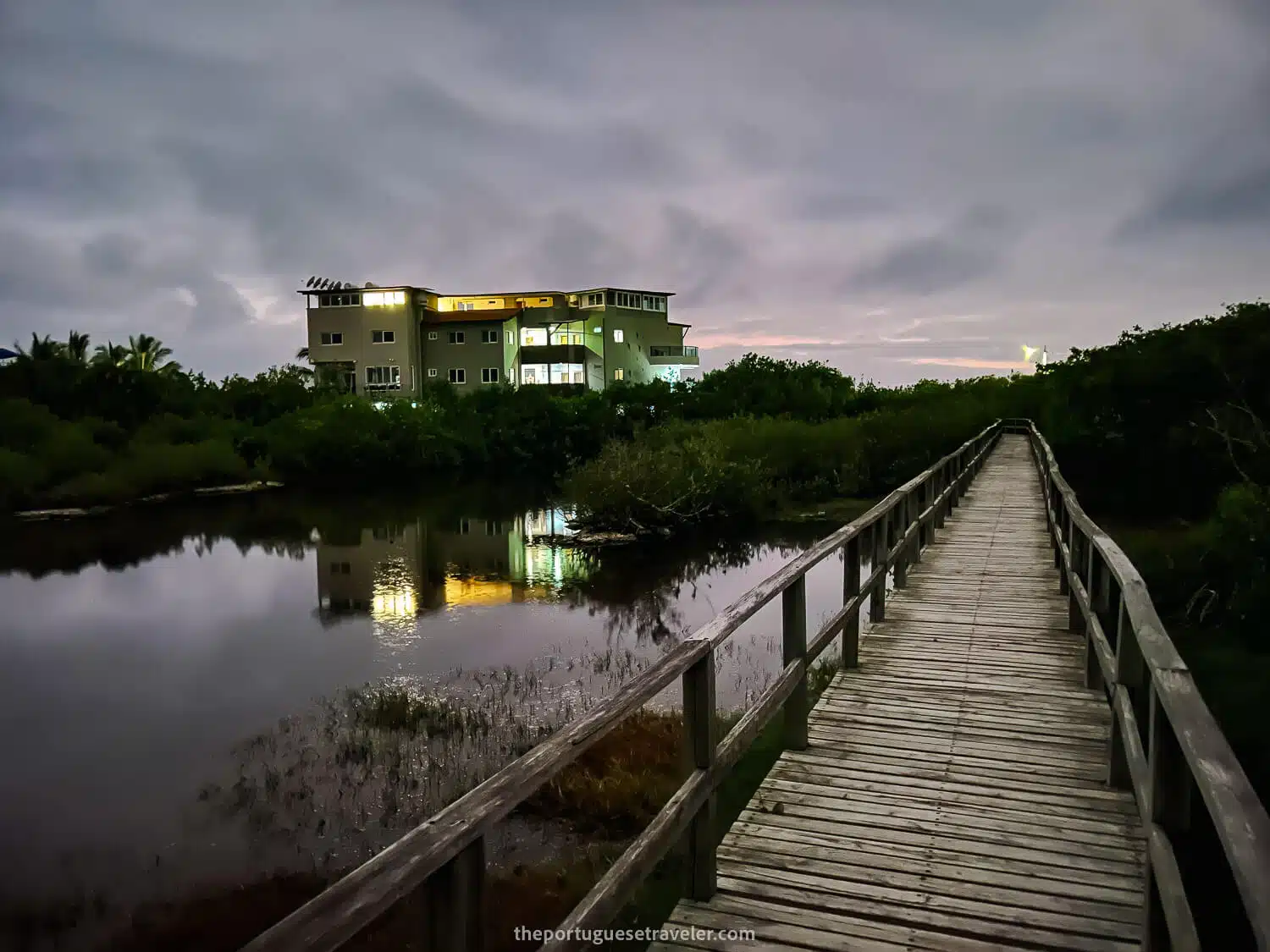
69. Los Humedales - Wetlands
Los Humedales or the Wetlands is a natural park full of different types of mangroves and lakes and it stands on the way to the Wall of Tears. Here you can find many animals including flamingos and giant tortoises.
In Los Humedales park there is another attraction which is a beach called Playa del Amor or Love beach where marine iguanas go for some intimacy.
It’s a free park and you can go here on your way to The Wall of Tears, Cerro Orchilla Hill, and El Radar hike.
View the full blog posts here: WALL OF TEARS IN ISABELA and EL RADAR VIEWPOINT HIKE
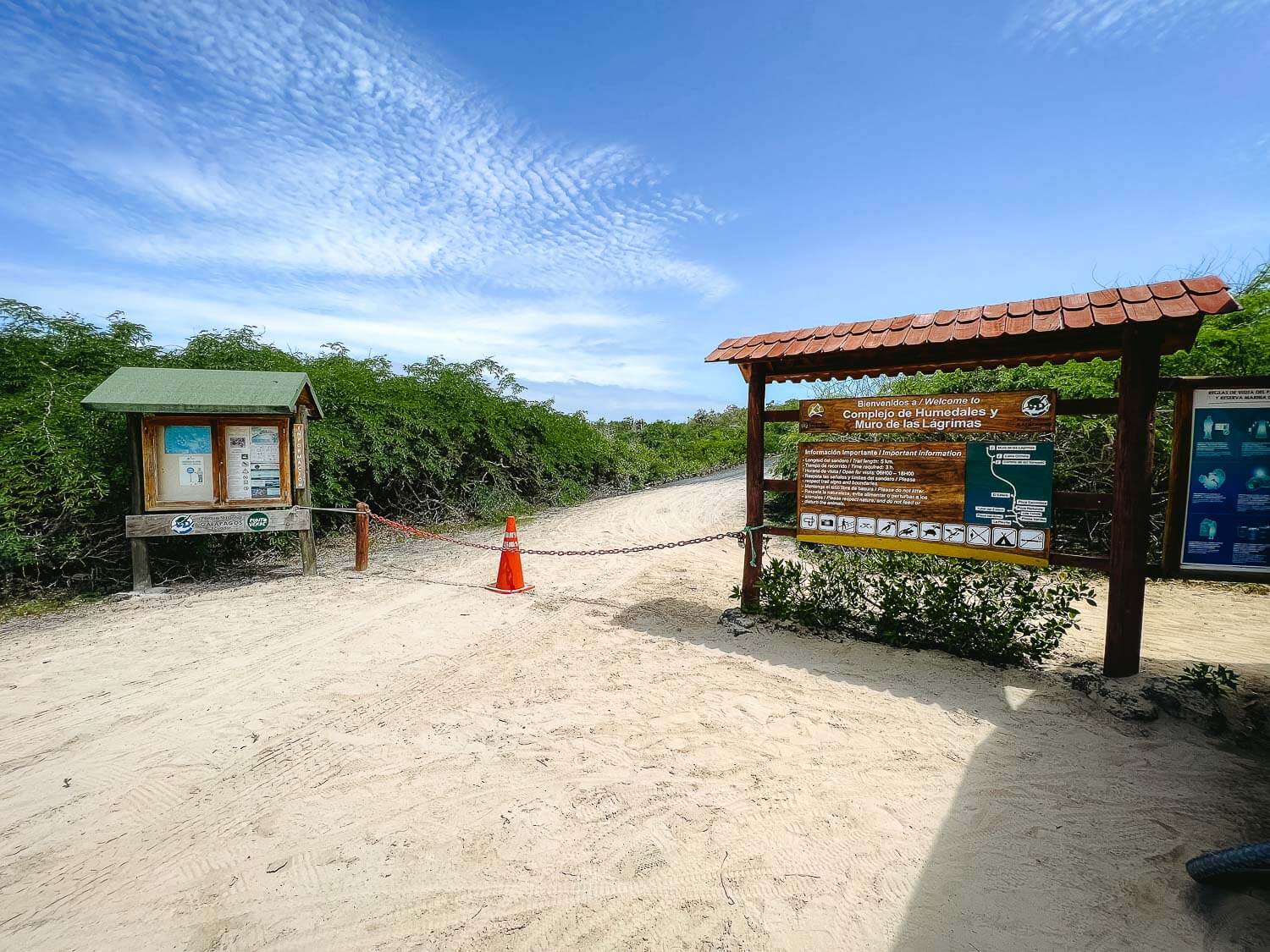
70. La Playita Beach
La Playita beach is the main alternative to Puerto Villamil’s beach and it stands right at the beginning of Los Humedales Park and some meters after the main beach. Here you can come at the end of your Wall of Tears bicycle ride or to say that you went to a different beach in Isabela.
Honestly, it is nice and it has more like a bay feeling but with a giant beach like Puerto Villamil’s beach next to the town where there aren’t almost people you don’t necessarily need to find a remote beach on this island. In any case, if you look for alternative beaches this is it.
View the full blog posts here: WALL OF TEARS IN ISABELA or PUERTO VILLAMIL BEACH
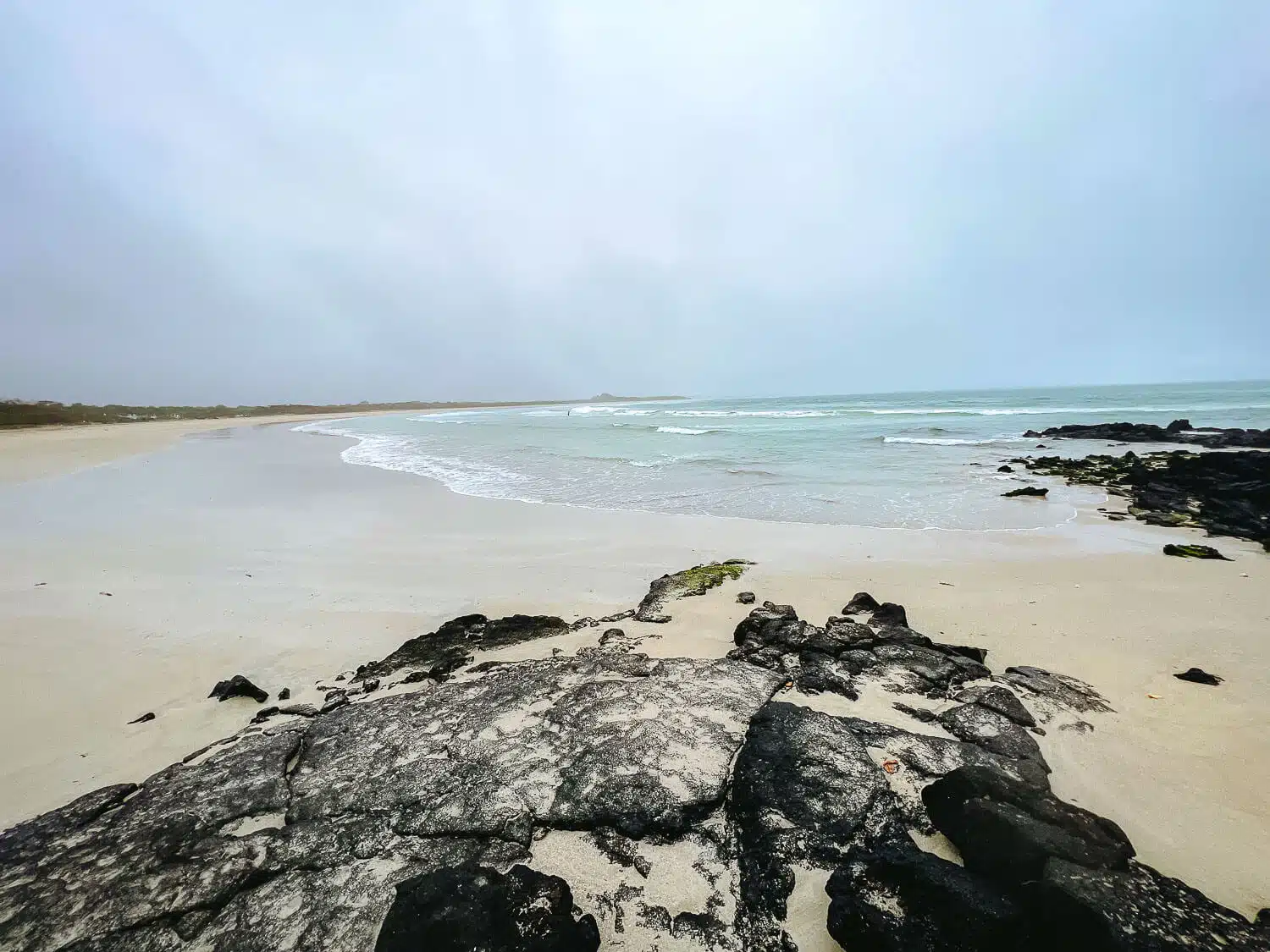
71. Los Tuneles - Cabo Rosa
The Los Tuneles or Cabo Rosa tour in Isabela island is the coolest snorkeling tour you can do in the archipelago and one of the best things to do in Isabela, Galapagos. You will see so much wildlife you won’t believe it.
We saw on the surface blue-footed boobies, penguins, sea lions, marine iguanas and orange crabs and underwater reef sharks, turtles, a sea horse, a sea lion, an eagle ray, a stingray, an octopus, a lobster, and beautiful schools of fish.
Apart from the wildlife, the lava structures underwater are mind-blowing, you can dive through infinite tunnels and caves, and to top it we saw like in Angelita’s cenote in Mexico, an hydrogen sulfide cloud. What an experience!
View the full blog post here: LOS TUNELES TOUR IN ISABELA
To book this tour: Check the local company Coral Blanco Tour Operator (click on the icons), or book it online on Viator with any of the tours underneath:
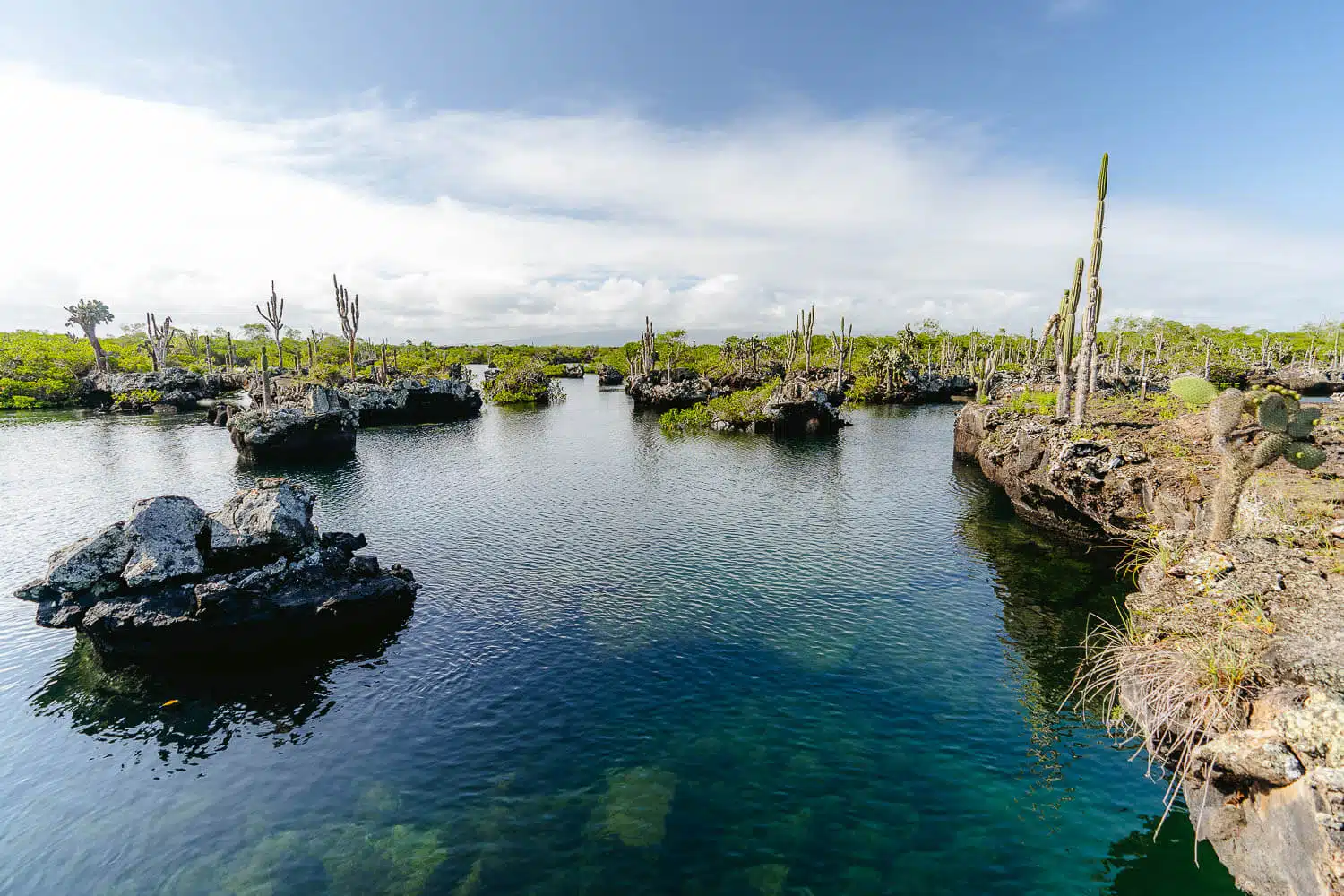
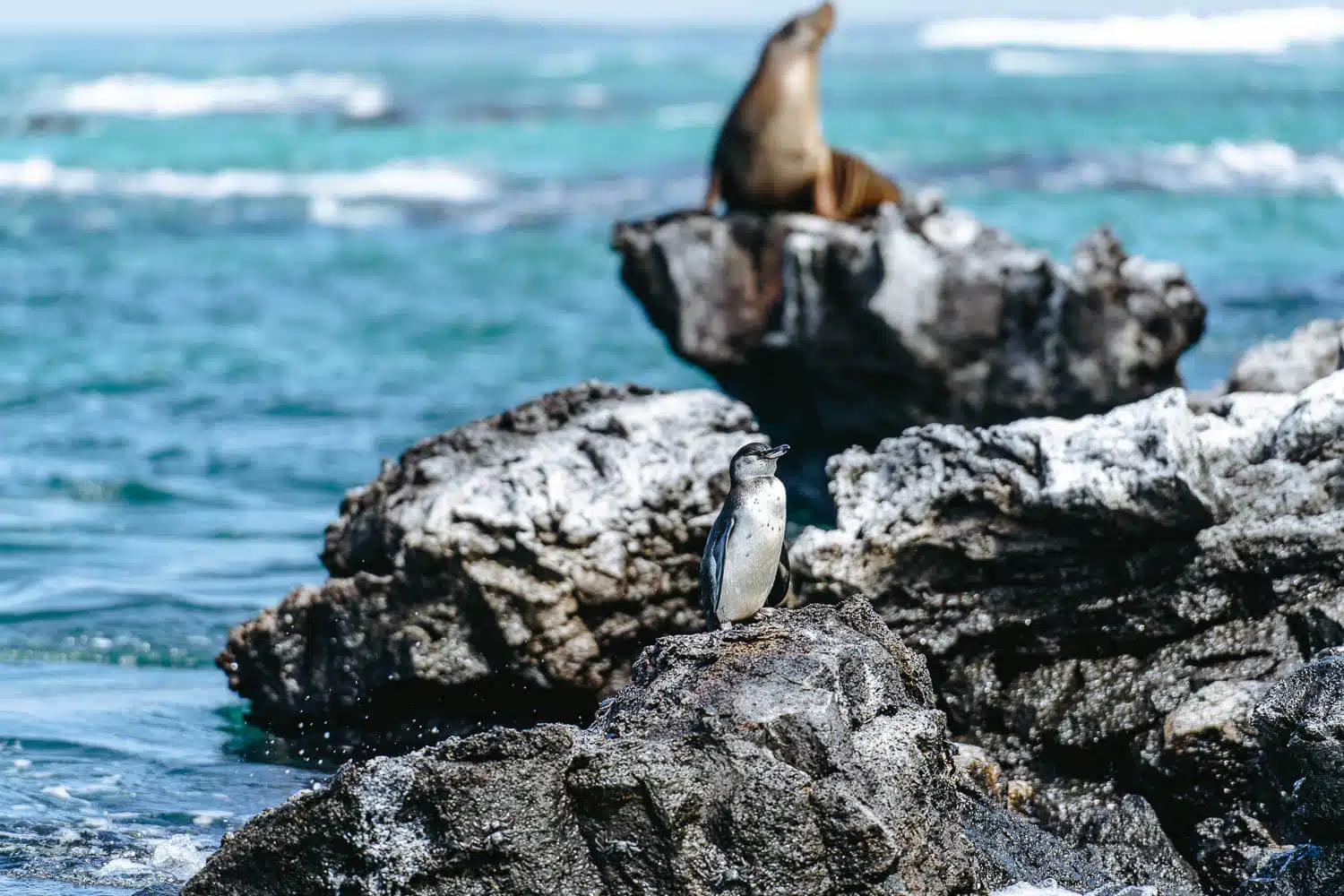
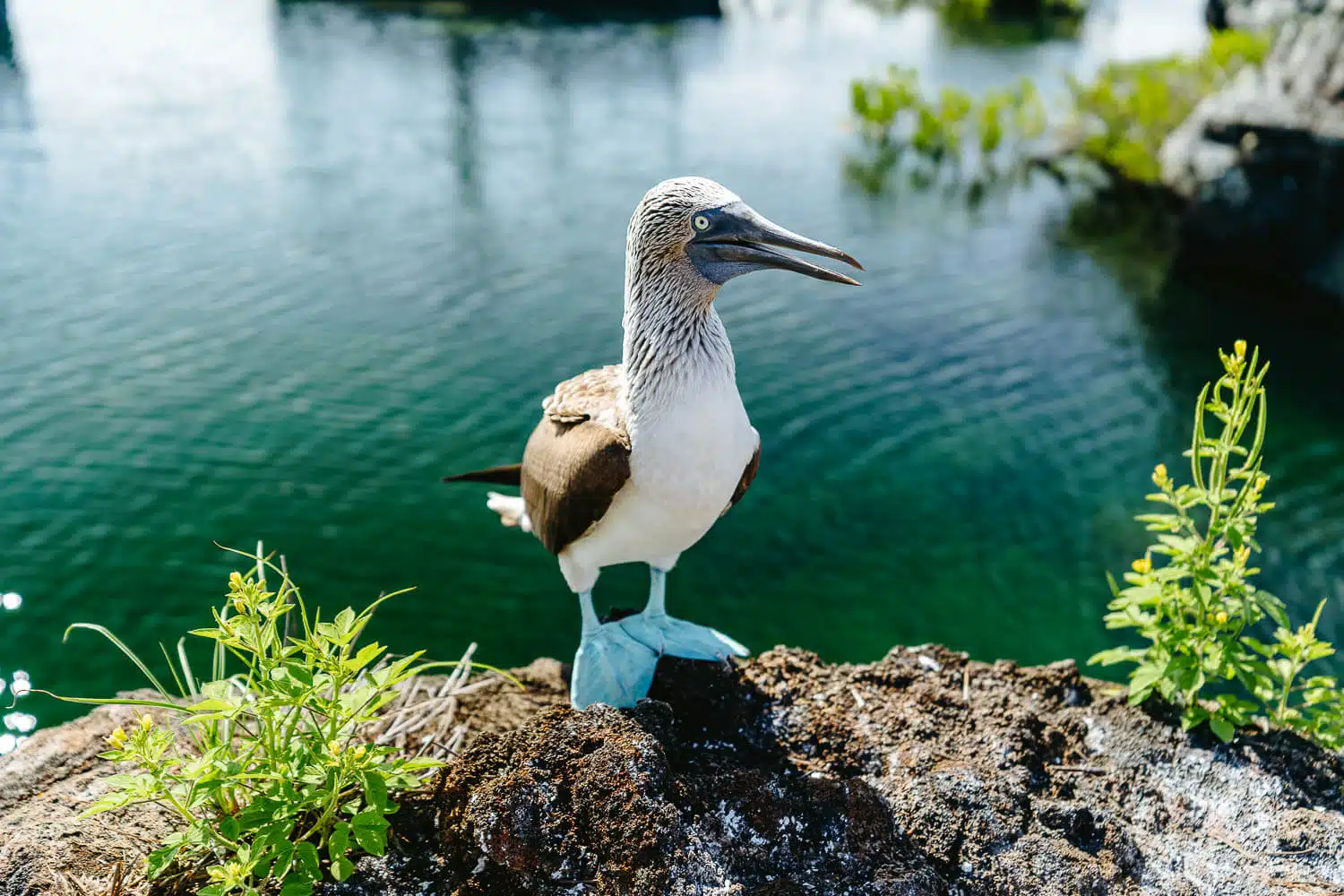
72. Trillizos Volcano
The Trillizos Volcano Tour is the most secret and adventurous tour you can do on Isabela island. You will literally enter inside an artery of the main Sierra Negra volcano. Once inside you will encounter the hole from where the lava was expelled many years ago and a room full of Quartz stone, among other surprising things.
If you want to have the feeling you’re in a Pirates of the Caribbean, Indiana Jones, or Tomb Raider movie, this is definitely the tour for you.
According to Jhan the son of Ulise, our guide, previously they didn’t know the hole was there, so their cows used to fall inside once the vegetation was too thick and then they would go down and collect the meat leaving the bones behind (you can still find them there).
The entire cave is not completely explored. Only a couple of rooms are. If you look in Google Maps and follow the lines of the Trillizos volcano until the Sierra Negra one you can actually see there might be other caves all the way through, completely unexplored.
View the full blog post here: TRILLIZOS VOLCANO TOUR
To book this tour: Contact the owners, Ulise and Jhan, directly (click on the icons), or book a tour with them online with Viator:
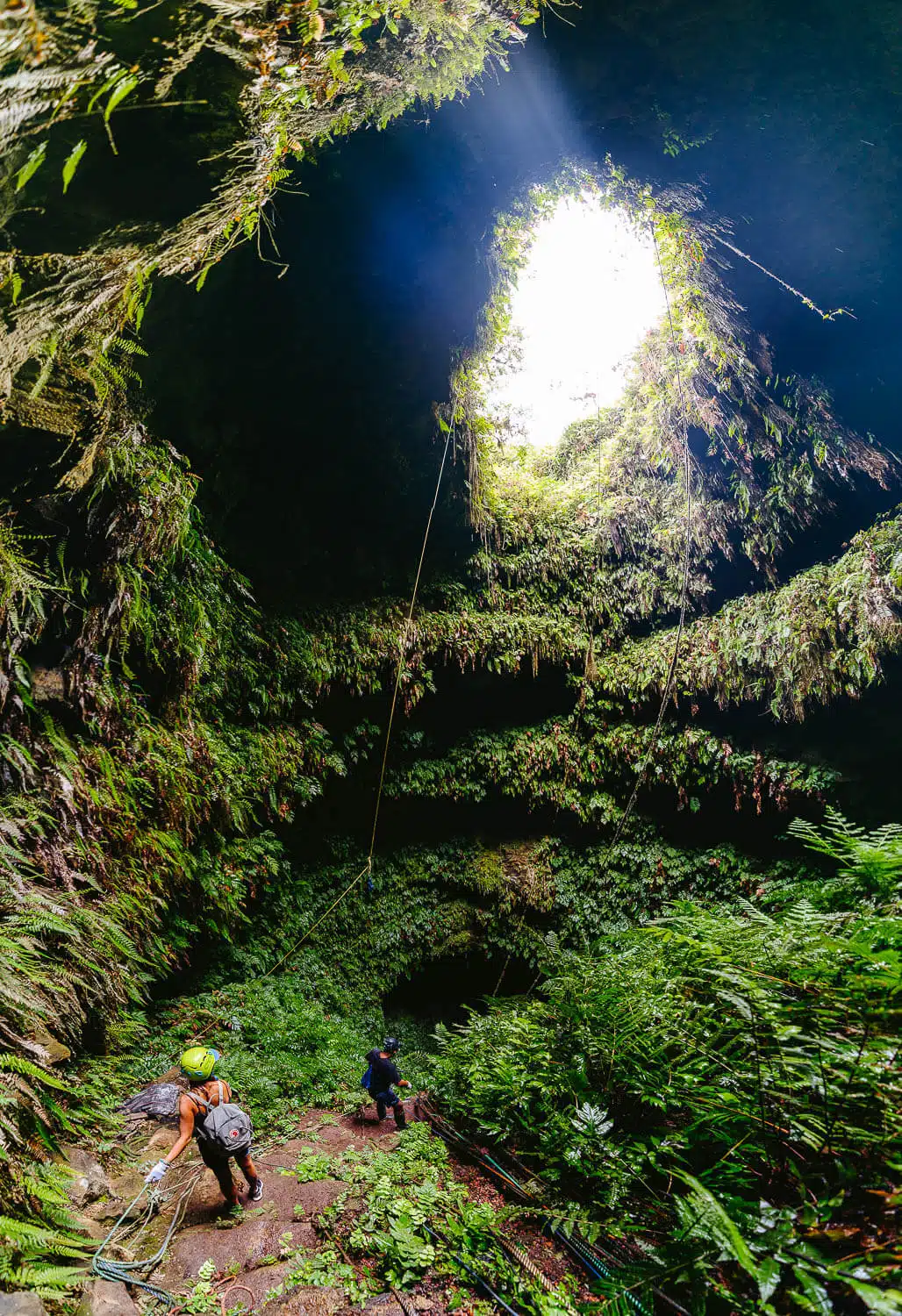
73. Las Tintoreras
Las Tintoreras islet is the most famous tour of Isabela island and it’s the only one you get if you come from Santa Cruz on a daily trip to Isabela.
It is an area on the water, 10 minutes by boat from Puerto Villamil’s town that was formed when the lava of Sierra Negra’s volcano got in contact with the oxygen forming a solid outer shell, like a lava tunnel’s carcass, and because it is on the water it formed some canals where daily hundreds of baby reef sharks (tintoreras) tend to go to. Here you will also see blue-footed boobies, marine iguanas, and with luck some penguins.
After the land tour, there is some time for snorkeling where you might find turtles, rays, and sea lions.
To book this tour: Check the local company Coral Blanco Tour Operator (click on the icons), or book it online on Viator with any of the tours underneath:
74. Sierra Negra Sulfur Mines
This is an epic tour I, unfortunately, didn’t have time to do but it looks absolutely stunning. Instead of seeing the volcano from a viewpoint with its red and black surfaces of lava, you get to see and smell a vivid yellow sulfur mine with constant smoke coming out of it.
It is an amazing alternative to do if you’ve already seen the volcano from the top. When I go back to Isabela this is for sure the first tour I will do. It must be incredible. And very smelly Ahah.
If you want to do the Sierra Negra Volcano tour I’ll leave you the link down below.
View the full blog post here: SIERRA NEGRA VOLCANO TOUR
To book this tour: Check the local company Coral Blanco Tour Operator (click on the icons), or book a tour online with them underneath:
75. Giant Tortoise Reserve
"Arnaldo Tupiza Chamaidan"
If you followed along on the other islands’ articles you noticed there is always a Giant Tortoise reserve, and this is the one in Isabela island. It is free and it stands ca. 15-20 minutes away from Puerto Villamil’s downtown on foot. On your way and after the reserve you can find many lakes with flamingos and other endemic birds.
These giant tortoise reserves are breeding centers where the eggs of giant tortoises that were laid around the island in the wild are protected, thus preventing the attacks of predators. Here they have a much bigger chance of surviving into adulthood and living longer than they would normally.
To come here: This is the location of the Tortoise Reserve (click on the pin):
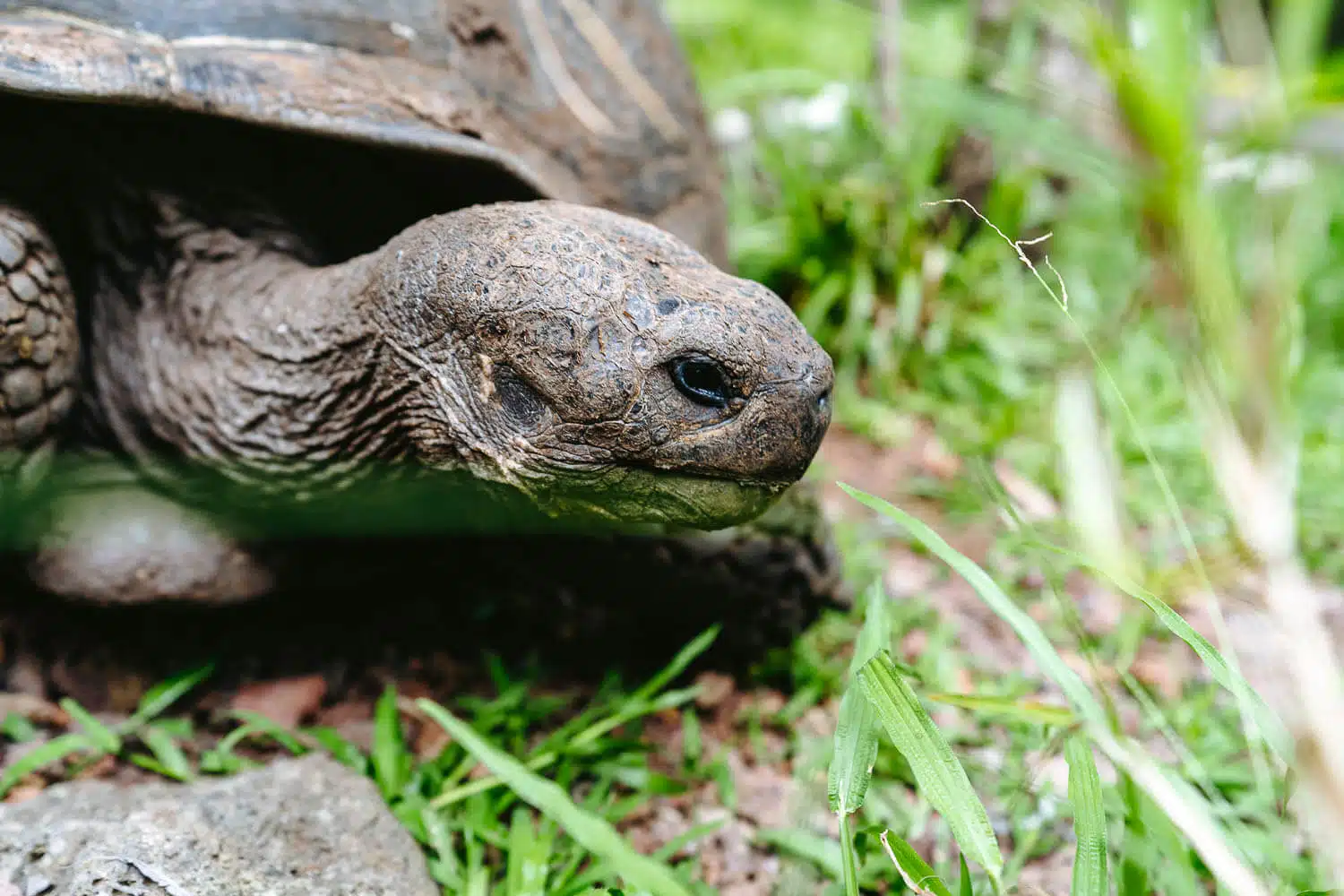
76. Cueva de Sucre
The Cueva de Sucre is another natural attraction on Isabela island. It is the entrance to a lava tunnel, just like in Santa Cruz but on a smaller scale.
If you want to visit this cave you need to rent a taxi (22 minutes away from town) or try to plan it with a tour company to take you here maybe on your way to the Sierra Negra Volcano tour or the Volcan Trillizos tour.
It is free to enter and there is a picnic area on its compounds.
To come here: This is the location of the cave (click on the pin):
77. Surf in Isabela
As with the other islands, Isabela is also a great spot for surfing. Here apart from the main Puerto Villamil beach, which is ideal for beginners, you can go surfing in El Faro, El Hospital, Barahona Point, and Quinta Ola.
If you’re like me, no surf expert, there are many places around town that offer you surf lessons so if you’ve run out of things to do in Isabela (which is hard) you can give it a try.
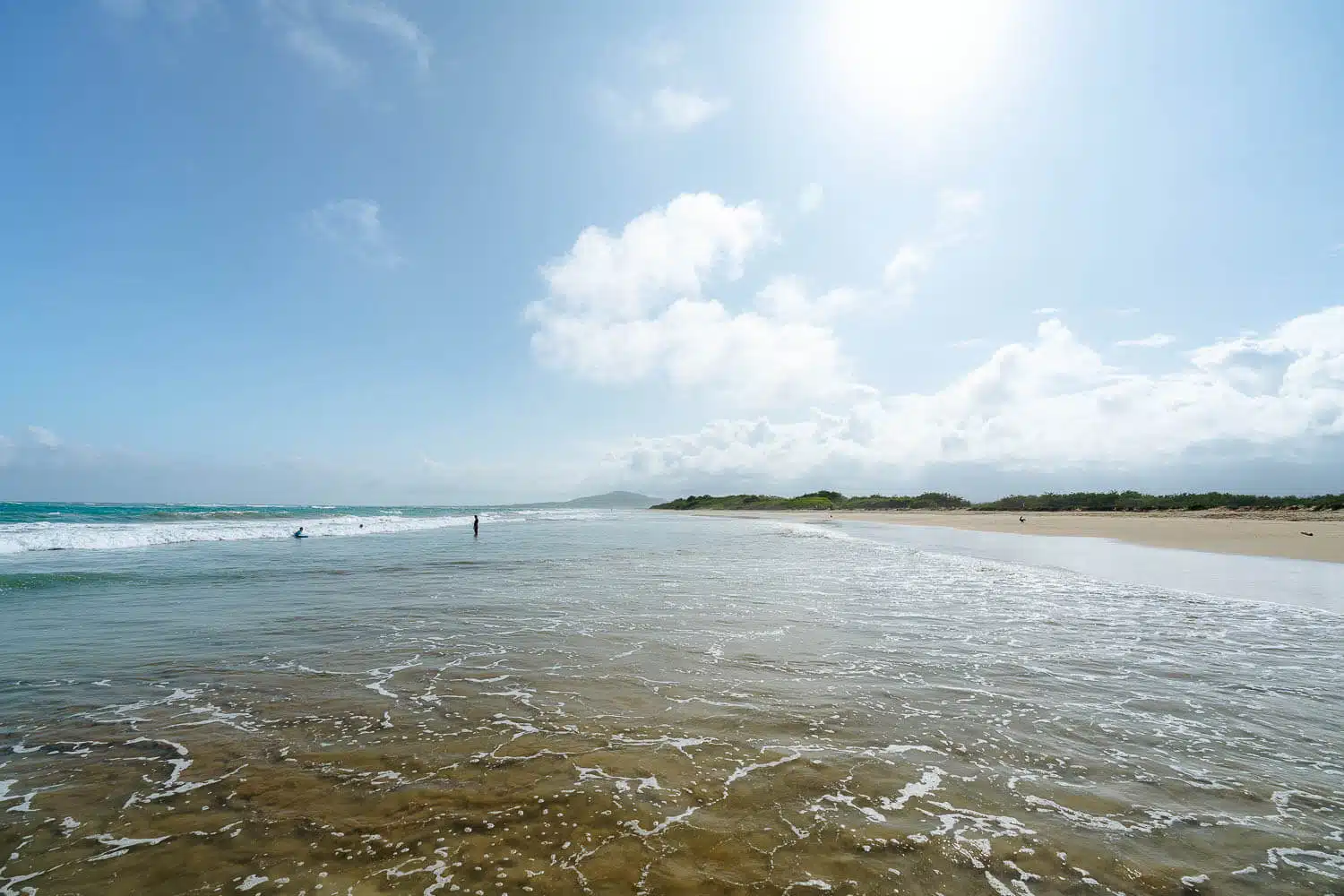
78. Snorkel in Tortuga Island
Tortuga Island or Brattle Island is probably one of the places I’d visit if I’d want to see Hammerhead sharks and manta rays while on Isabela. It is a small islet located on the southeast of Puerto Villamil town and it has a shape of a half-moon clearly being the crater’s rim of an extinct volcano.
After a 45 minutes speed boat ride you reach the island and there is some birdwatching time to try and spot blue-footed and Nasca boobies, frigate birds, and other species, and then it’s snorkeling time where you will hopefully find hammerheads and manta rays, then there is some deep-sea fishing and you eat lunch at Loberia beach, after lunch and after some more snorkeling, you go back to Puerto Villamil.
To book this tour: Check the local company Pahoehoe Galapagos’s website.
79. Snorkel in 4 Hermandos and Cartago Bay
Los 4 Hermanos islands is another great place to see some hammerheads, Galapagos sharks, and even manta rays. It is located 1 hour away by speed boat to the northeast of Puerto Villamil’s town. Here like in the Tortuga Island snorkel tour you’ll have a chance to do some deep-sea fishing and fish your own tuna with the crew that will later prepare it as ceviche for lunch.
After Los Hermanos the tour takes you to Cartago Bay where you can snorkel a bit more and see some green turtles, tropical fish, rays, and sharks.
To book this tour: Check the local company Pahoehoe Galapagos’s website.
80. Dive in Tortuga Island
The Tortuga Island dive tour is the most famous and only tour you can do on Isabela island that doesn’t depend on a cruise. So if you’re land-based, want to have a deep experience in Tortuga island, and dive surrounded by hammerheads and manta rays, this is the place.
This is a small islet located in the southeast of Puerto Villamil town, roughly 45 minutes away by speed boat and it has a shape of a half-moon clearly being the crater’s rim of an extinct volcano.
To book this tour: Check the local companies Pahoehoe Galapagos and Galapagos Isabela Dive Center (they have mostly good reviews, but since I didn’t do any tour with these companies I would recommend you take your own conclusions).
Where to Stay in The Galapagos
All the Articles About The Galapagos
San Cristobal Island – The easternmost island of the Galapagos, the “Isla Bonita”
Santa Cruz Island – The island with the best tourism infrastructure.
Isabela Island – The most adventurous and less explored island of the main three.
Plan your next adventure with us!
Here are the links we use and recommend to plan your trip easily and safely. You won’t pay more, and you’ll help keep the blog running!
Adventures in Sri Lanka - The Ancient Ceylon
Explore The Galapagos Islands
Hiking in Switzerland & Italy
The Hidden Worlds of Ecuador
ABOUT ME
I’m João Petersen, an explorer at heart, travel leader, and the creator of The Portuguese Traveler. Adventure tourism has always been my passion, and my goal is to turn my blog into a go-to resource for outdoor enthusiasts. Over the past few years, I’ve dedicated myself to exploring remote destinations, breathtaking landscapes, and fascinating cultures, sharing my experiences through a mix of storytelling and photography.
SUBSCRIBE
Don’t Miss Out! Be the first to know when I share new adventures—sign up for The Portuguese Traveler newsletter!
MEMBER OF
RECENT POSTS
COMMUNITY
GUIDES
Need help planning? Get our interactive Ecuador and Galapagos guides with curated itineraries. Learn more…
RELATED POSTS
TRAVEL INSURANCE
Lost luggage, missed flights, or medical emergencies – can you afford the risk? For peace of mind, I always trust Heymondo Travel Insurance.
Get 5% off your insurance with my link!
